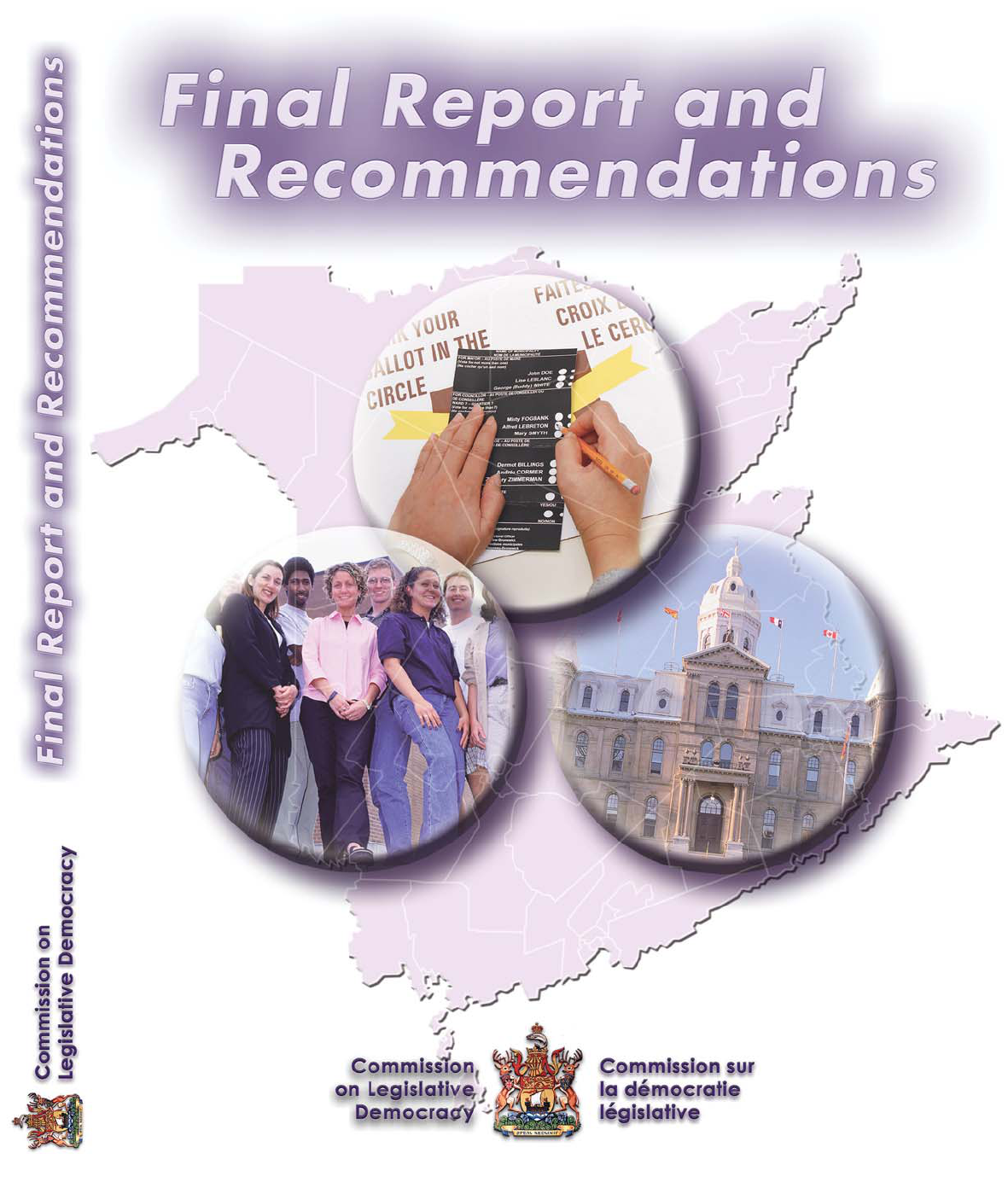
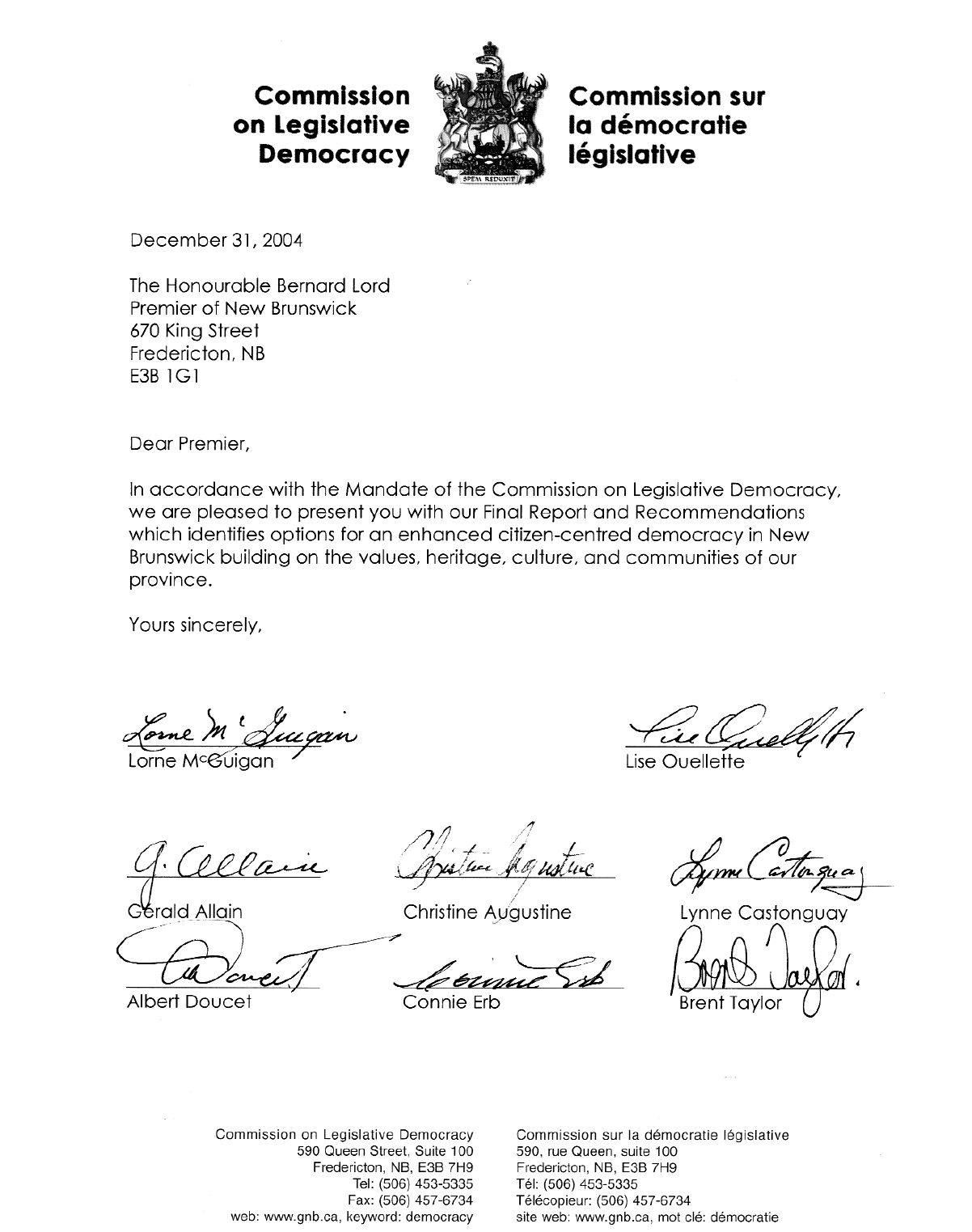
Co-chair
Co-chair
Commissioners


Table of Contents
Preface
Introduction from Commissioners . . . . . . . . . . . . . . . . . . . . . . . . . . . . . . . . . . . . . . . . . . . . . . . . . . . . .1
Thank Yous and Acknowledgements . . . . . . . . . . . . . . . . . . . . . . . . . . . . . . . . . . . . . . . . . . . . . . . . . . .2
How We Did our Work . . . . . . . . . . . . . . . . . . . . . . . . . . . . . . . . . . . . . . . . . . . . . . . . . . . . . . . . . . .4
Chapter 1- Our Province. Our Democracy.
Voices and Values – New Brunswickers and Democracy . . . . . . . . . . . . . . . . . . . . . . . . . . . . . . . . . . . . . .7
Renewing Democracy in New Brunswick – The Context for Reform . . . . . . . . . . . . . . . . . . . . . . . . . . . . . .10
Toward a Citizen-Centred Democracy in New Brunswick . . . . . . . . . . . . . . . . . . . . . . . . . . . . . . . . . . . .14
Chapter 2 - Summary of Recommendations
Summary of Recommendations . . . . . . . . . . . . . . . . . . . . . . . . . . . . . . . . . . . . . . . . . . . . . . . . . . . . . .17
Chapter 3 - Making Your Vote Count
A Mixed Member Proportional Electoral System for NB . . . . . . . . . . . . . . . . . . . . . . . . . . . . . . . . . . . . .31
Implementing a New Proportional Representation Electoral System for New Brunswick . . . . . . . . . . . . . . . . .47
Drawing Electoral Boundaries in New Brunswick . . . . . . . . . . . . . . . . . . . . . . . . . . . . . . . . . . . . . . . . . .50
A Fixed Election Date for New Brunswick . . . . . . . . . . . . . . . . . . . . . . . . . . . . . . . . . . . . . . . . . . . . . .56
Boosting Voter Turnout & Participation and Modernizing our Electoral Infrastructure . . . . . . . . . . . . . . . . . . .60
Chapter 4- Making the System Work
Enhancing the Role of MLAs and the Legislature . . . . . . . . . . . . . . . . . . . . . . . . . . . . . . . . . . . . . . . . . .67
Improving Party Democracy . . . . . . . . . . . . . . . . . . . . . . . . . . . . . . . . . . . . . . . . . . . . . . . . . . . . . . .76
Opening up the Appointment Process for Agencies, Board and Commissions . . . . . . . . . . . . . . . . . . . . . . .84
Chapter 5- Making Your Voice Heard
Stronger Voices for Youth . . . . . . . . . . . . . . . . . . . . . . . . . . . . . . . . . . . . . . . . . . . . . . . . . . . . . . . . .91
Stronger Voices for Women . . . . . . . . . . . . . . . . . . . . . . . . . . . . . . . . . . . . . . . . . . . . . . . . . . . . . . . .97
Stronger Voices for Aboriginal People . . . . . . . . . . . . . . . . . . . . . . . . . . . . . . . . . . . . . . . . . . . . . . . .101
A Referendum Act for New Brunswick . . . . . . . . . . . . . . . . . . . . . . . . . . . . . . . . . . . . . . . . . . . . . . . .103
Participatory Democracy and Citizen Engagement in New Brunswick . . . . . . . . . . . . . . . . . . . . . . . . . . .108
Chapter 6 - Recommendation Appendices
A. Policy Framework -- A Representation and Electoral Boundaries Act for New Brunswick . . . . . . . . . . . . . . .117
A-1 Flowchart for a Representation and Electoral Boundaries Act Process . . . . . . . . . . . . . . . . . . . . . . . .123
B. Proposed Mandate – Elections New Brunswick . . . . . . . . . . . . . . . . . . . . . . . . . . . . . . . . . . . . . . . . . .125
C. Policy Framework – The Roles and Duties of an MLA and a Code of Conduct
for Members of the Legislative Assembly of New Brunswick . . . . . . . . . . . . . . . . . . . . . . . . . . . . . . . . . .127
D. Policy Framework – MLA Constituency Resources . . . . . . . . . . . . . . . . . . . . . . . . . . . . . . . . . . . . . . . . .129
E. Policy Framework – Review Committee for MLA Remuneration . . . . . . . . . . . . . . . . . . . . . . . . . . . . . . . .130
F. Policy Framework – Fixed Legislative Calendar Session . . . . . . . . . . . . . . . . . . . . . . . . . . . . . . . . . . . .132
F-1 Possible Legislative Assembly Calendar for 2006 with Committee Days
and Prescribed Events . . . . . . . . . . . . . . . . . . . . . . . . . . . . . . . . . . . . . . . . . . . . . . . . . . . . . . . . . . .134

G. Policy Framework – Transparency and Accountability Act . . . . . . . . . . . . . . . . . . . . . . . . . . . . . . . . . . .140
H. Policy Framework – Improving Party Democracy . . . . . . . . . . . . . . . . . . . . . . . . . . . . . . . . . . . . . . . . .141
I. Policy Framework – Appointments to Agencies, Boards and Commissions . . . . . . . . . . . . . . . . . . . . . . . .153
J. Policy Framework – A New Civics Education Program from Kindergarten to Grade12 . . . . . . . . . . . . . . . .165
K. Policy Framework – A Referendum Act for New Brunswick . . . . . . . . . . . . . . . . . . . . . . . . . . . . . . . . . .169
K-1 Flowchart for a Referendum Act Process . . . . . . . . . . . . . . . . . . . . . . . . . . . . . . . . . . . . . . . . . . . .178
Chapter 7- Background Appendices
I. Mission, Mandate and Terms of Reference . . . . . . . . . . . . . . . . . . . . . . . . . . . . . . . . . . . . . . . . . . . . .181
II. Example of a Regional Mixed Member Proportional (MMP) Electoral System in New Brunswick . . . . . . . . .183
III. Comparison of the New Brunswick MMP Electoral System with SMP Electoral System . . . . . . . . . . . . . . . .186
IV. Comparison of Boundaries Legislation Across Canada . . . . . . . . . . . . . . . . . . . . . . . . . . . . . . . . . . . . .187
V. Voter Participation – Ranked by Social Background . . . . . . . . . . . . . . . . . . . . . . . . . . . . . . . . . . . . . . .189
VI. Comparison of MLA Salaries Across Canada . . . . . . . . . . . . . . . . . . . . . . . . . . . . . . . . . . . . . . . . . . .190
VII. Comparison of MLA Resources Across Canada . . . . . . . . . . . . . . . . . . . . . . . . . . . . . . . . . . . . . . . . . .191
VIII. Survey of New Brunswick MLAs . . . . . . . . . . . . . . . . . . . . . . . . . . . . . . . . . . . . . . . . . . . . . . . . . . . .192
IX. Comparison of Limits on Election Spending Across Canada . . . . . . . . . . . . . . . . . . . . . . . . . . . . . . . . . .196
X. Comparison of Disclosure of Contribution Requirements Across Canada . . . . . . . . . . . . . . . . . . . . . . . . .198
XI. Comparison of Limits on Contributions Across Canada . . . . . . . . . . . . . . . . . . . . . . . . . . . . . . . . . . . . .199
XII. Comparison of Referendum Legislation Across Jurisdictions . . . . . . . . . . . . . . . . . . . . . . . . . . . . . . . . . .201
XIII. Other NB Electoral and Democratic Statistics . . . . . . . . . . . . . . . . . . . . . . . . . . . . . . . . . . . . . . . . . . .203
XIV. Meetings Held . . . . . . . . . . . . . . . . . . . . . . . . . . . . . . . . . . . . . . . . . . . . . . . . . . . . . . . . . . . . . . . .208
XV. Partnerships . . . . . . . . . . . . . . . . . . . . . . . . . . . . . . . . . . . . . . . . . . . . . . . . . . . . . . . . . . . . . . . . .212
XVI. Academic Research Program . . . . . . . . . . . . . . . . . . . . . . . . . . . . . . . . . . . . . . . . . . . . . . . . . . . . . .214
XVII. Website and E-consultation Program . . . . . . . . . . . . . . . . . . . . . . . . . . . . . . . . . . . . . . . . . . . . . . . . .216
XVIII. Submissions . . . . . . . . . . . . . . . . . . . . . . . . . . . . . . . . . . . . . . . . . . . . . . . . . . . . . . . . . . . . . . . . .217
XIX. Glossary . . . . . . . . . . . . . . . . . . . . . . . . . . . . . . . . . . . . . . . . . . . . . . . . . . . . . . . . . . . . . . . . . . .219
Chapter 8
Selected Bibliography . . . . . . . . . . . . . . . . . . . . . . . . . . . . . . . . . . . . . . . . . . . . . . . . . . . . . . . . . . .223

FINAL REPORT AND RECOMMENDATIONS
1
Introduction from Commissioners
The Commission on Legislative Democracy, with this report,
concludes a year of exciting challenges, thorough research,
extensive consultation, and thoughtful analysis.
Our mandate was broad, and our time was brief. Although
in this report we confidently and strongly recommend
sweeping changes to our democratic system, we also want
to acknowledge that New Brunswick has grown and
prospered well under our existing system of government,
and we should be thankful to those who have been the
guardians of our government institutions, and served the
public over the last 220 years.
Yet, while our province has achieved great things under the
present system, we feel there is another level that New
Brunswickers can reach if given the right tools, better
information and more effective access to decision-making.
The recommendations that follow are divided into three
broad categories:
In “Making Your Vote Count”, we take on the task of
examining our electoral system and suggesting ways to
more deeply involve New Brunswickers, by developing a
closer connection between the ballots they cast and the
governments they elect. We recommend a move to a Mixed
Member Proportional representation system, while
continuing to honour New Brunswickers’ attachment to local
MLAs who represent them directly.
In “Making the System Work”, we make recommendations
to raise the role of the Legislative Assembly and its
members. We suggest changes to House rules and
procedures, MLA responsibilities, committee work, services,
and a rebalancing of the powers held by the legislative and
executive branches of government.
In “Making Your Voice Heard”, we propose ways to
increase the participation and power of women and youth;
broaden the public’s understanding of and participation in
their local governance institutions; improve access to elected
officials through new technologies; and participate in
important decisions directly through referendums.
The adoption of our recommendations in their entirety would
require many amendments to existing laws, creation of new
legislation, further deliberations by elected officials, and
perhaps even a referendum. Despite those challenges, we
feel strongly that our proposals, if taken together, give each
other more strength.
We therefore hope the government, and the people of New
Brunswick, will consider our report as a complete package.
None of this large body of work would be possible without
the excellent service provided by the Commission’s staff,
headed by its Deputy Minister, David McLaughlin. New
Brunswickers are very fortunate to have such dedicated
people working in the public’s service.
Our thanks are also extended to Dr. Bill Cross, our Director
of Research.
His studies, combined with many submissions from
Canada’s best and brightest academics, give this report a
solid foundation of research that we are sure will become a
valuable record for anyone studying the reform of
government and its institutions.
And, most of all, we Commissioners are grateful to New
Brunswickers who - in groups and individually - took time to
be with us and share their ideas with us at our consultation
meetings, over the Internet, by correspondence, and through
their participation in our surveys. Their dedication to our
province enriches us all. We hope in our report, they will
see themselves and their ideas. We were moved and
enlightened by what they had to say.
Preface

COMMISSION ON LEGISLATIVE DEMOCRACY
2
Thank You’s and
Acknowledgements
The Commission and its Deputy Minister would like to thank
sincerely and acknowledge publicly the many people
around New Brunswick and across Canada who
participated in our work and helped make this report
possible.
We had many partners in our work and the Commission is
grateful to each of them. We would like to thank Dr. Mary
Lou Stirling, Rosella Melanson and staff at the New
Brunswick Advisory Council on the Status of Women; Ryan
Sullivan, Ivan Corbett and staff at the New Brunswick
Advisory Council on Youth; Rebecca Low, Gina Bishop and
Denis Gaudet at the Centre for Research and Information on
Canada and the Canadian Unity Council; Lisa Hrabluk at
Next New Brunswick; Ghislaine Foulem at the Forum de
concertation des organismes acadiens; and Rick Hutchins at
Policylink NB.
The Commission is particularly indebted to its first-class
academic research team led by its Director of Research, Dr.
Bill Cross, Director of the Centre for Canadian Studies at
Mount Allison University. Participating academics and
researchers included: Dr. Chedly Belkhodja - Université de
Moncton; Dr. Gail Campbell - University of New Brunswick;
Dr. André Blais - Université de Montréal; Dr. Lisa Young -
University of Calgary; Dr. Don Desserud - University of New
Brunswick, Saint John Campus; Dr. David C. Docherty -
Wilfrid Laurier University; Dr. Munroe Eagles - University of
Buffalo; Dr. Joanna Everitt - University of New Brunswick,
Saint John campus; Dr. Sonia Pitre - University of Ottawa;
Dr. Paul Howe - University of New Brunswick; Dr. Roger
Ouellette - Université de Moncton; and Dr. Alan Siaroff -
University of Lethbridge.
The Commission’s work was of great interest across Canada
with those governments and individuals engaged in similar
democratic renewal projects. This new “fraternity” was
helpful in sharing ideas, information and research. We
would like to particularly thank Dr. Ken Carty of University
of British Columbia and Director of Research for the BC
Citizens’ Assembly; André Fortier, Associate Deputy
Minister, Secrétariat à la réforme des institutions
démocratiques du Québec, Government of Québec;
Matthew Mendelsohn, Deputy Minister, Secretariat for
Democratic Renewal, Government of Ontario; Stephen
Zaluski and Stéphane Perrault of the Privy Council Office,
Government of Canada; Hon. Norman Carruthers,
Commissioner, PEI 2003 Electoral Reform Commission, and
Nathalie DesRosiers, past President of the Law Commission
of Canada.
The Commission is grateful to each of its outside speakers
and experts who traveled to New Brunswick to participate
in one of our conferences or roundtables. This includes:
Jeffrey Simpson, National Columnist for the Globe and
Mail; Hugh Segal, President of the Institute for Research on
Public Policy; Hon. Ed Broadbent, MP for Ottawa-Centre;
Peter Dobell, Founding Director of the Parliamentary Centre;
Caroline Di Cocco, MPP, Sarnia-Lambton, Ontario; Geoffrey
Kelley, MNA for Jacques-Cartier, Québec; Ian McClelland,
former MLA, Edmonton-Rutherford, Alberta; Andrew Parkin,
formerly at CRIC; Dr. John Courtney, University of
Saskatchewan; Dr. Stewart Hyson, UNBSJ; Leslie Siedle,
formerly with Elections Canada; and David Moynaugh,
CCAF.
The Commission would also like to thank several New
Brunswick MLAs who met with us or participated at various
events. This includes: Hon. Brad Green, Hon. Keith Ashfield,
Hon. Bruce Fitch, Hon. Joan MacAlpine, Shawn Graham,
Elizabeth Weir, Trevor Holder, Cy LeBlanc, Kelly Lamrock,
Eric Allaby, Milt Sherwood, Jody Carr, Michael (Tanker)
Malley, John Betts, Wally Stiles, and Michael Murphy.
Dr. Keith Culver from the University of New Brunswick
provided welcome advice on the emerging possibilities of e-
democracy and assisted in the development of our “Your
Turn” questionnaire. Two New Brunswick ICT firms, xwave
and CGI, gave us advice, support, and services for our
online questionnaire and discussion forum.
We were very fortunate to have the support of universities
and community colleges in the province in co-sponsoring
several of our events. Thank you to Mount Allison
University’s Centre for Canadian Studies for hosting our first
Academic Conference; the Faculty of Law at the University
of New Brunswick for our Roundtable on Electoral
Boundaries; the Université de Moncton, which hosted our PR
Roundtable and second Academic Conference; and St.
Thomas University for hosting our Youth Forum in
partnership with the New Brunswick Advisory Council on
Youth. As well, thank you to the New Brunswick Community
College network for providing us space and administrative
support at campuses around the province for our spring
consultation process.
This Commission was a ‘start-up’ with no office, staff,
budget or equipment and only a short time to complete our
work. Greg Cook at Supply and Services found us space
quickly. Rick Phillips and his team at Finance set up our
budget and administered all of our requisitions and
payments. The staff at the IT help desk at the Department of
Finance, was a big help at all times. Human resources
assistance and guidance was provided by Cecile Guerrette,
Director of Human Resources, Department of Finance and
Beth Clark at the Office of Human Resources.
Communications New Brunswick performed tremendous
work designing and producing all of our consultation
documents, fact sheets, and other materials with very
compressed timelines. Our website was a very important
part of our consultation process and the CNB website team,
comprised of Bonnie Buckingham-Landry, Kevin Lunn,
Norman Richard, Keehwan Jee and Paulette Stewart, was
innovative and flexible in meeting our needs.
Communications New Brunswick’s Design Services, led by
Michael Côté, was a key player in the production of our

FINAL REPORT AND RECOMMENDATIONS
3
four public documents. Thank you to Stewart Tower, Lucie El-
Khoury, Ed Werthmann, Jill Wishart and Delia Smith.
Many individuals at various government departments
assisted the Commission in its work by answering our policy
and legal questions, providing data and information, and
giving us advice. The Commission would like to thank the
following persons in particular for their support: Kim
Poffenroth and Heather Hobart (Justice and Attorney
General); Kevin Malone, Judy Wagner, and Greg Lutes
(Executive Council Office); Katherine D’Entremont and
Johnny St. Onge (Environment and Local Government);
Margaret Smith (Education); Mary Ogilvie, Judy Ross
(Service New Brunswick); and Mirelle Cyr
(Intergovernmental and International Relations). Claude
Marquis, Director of the Community Access Centres,
arranged for posting of our consultation papers and
questionnaires on their website.
Sabine Sparwasser, Counsellor of the German Embassy in
Ottawa, provided useful background information on
Germany’s electoral system and arranged for the visit of
Karsten Voigt, a former Bundestag Deputy, with the
Commission.
Thank you to Peggy Scott at Intergovernmental and
International Relations, who was exceptionally helpful in the
early days at finding and organizing a wealth of research
articles and materials.
Peggy Goss and the staff at the Legislative Library were
assiduous in tracking down books, articles, and
monographs on New Brunswick and Canadian electoral
and democratic reform to help us with our research.
The Speaker, the Hon. Bev Harrison, the Clerk of the
Legislative Assembly, Loredana Catalli Sonier, and Peter
Wolters, Donald Forestell and Shayne Davies of the
Legislative Assembly Office were gracious with their time in
meeting with Commissioners and staff, answering our
queries, and providing us with information to complete our
comparative research and policy analysis of the role of
MLAs in legislatures across Canada.
Annise Hollies, Chief Electoral Officer for New Brunswick,
Ann McIntosh, David Owens, and Ron Armitage provided
helpful information and assistance as we studied election
data and results from past provincial elections, and
discussed ideas with us for modernizing our electoral laws.
Mrs. Hollies participated at several conferences and
roundtables contributing her expertise.
Bernard Richard, Ombudsman, was helpful in offering
advice and comments on various ideas being considered by
the Commission, and he also participated at a Commission
event.
Paul Bourque, the Supervisor of Political Financing, met with
Commission staff on the operations of his office, giving us
useful background information.
Thank you to Translation Services who met our very tight
deadlines with courtesy and professionalism. Thanks also to
Interpretation Services and AW Tel-Av for their work
throughout our public consultation process.
Thanks to Julie Legresley who helped get us up and running,
and our summer and co-op students - Kristin Ferguson,
Jessica Holt, and Phillip Gammon.
The most special thanks and acknowledgements are
reserved for the Commission staff without whom none of this
would have been possible - Debbie Hackett (Senior Policy
Advisor); Lisa Lacenaire-McHardie (Policy Advisor); Marie-
Josée Groulx (Director of Communications and
Consultations); and Christyne Duguay (Executive Assistant).
All worked long and difficult hours under the most
demanding timelines to produce exceptional quality work
that was instrumental to the Commission’s learning,
consultation, and deliberations. Their commitment to this
project made a real difference.
Finally, we would like to thank Premier Bernard Lord for his
commitment to the issues of democracy. His willingness to
invite an open and sincere exploration of how our
province’s democracy can be made stronger for citizens is
testament to his own leadership and desire to make New
Brunswick even better.

COMMISSION ON LEGISLATIVE DEMOCRACY
4
How We Did Our Work
The Commission on Legislative Democracy was formally
established by Premier Bernard Lord on December 19,
2003. It was given approximately one year - until
December 31, 2004 - to report to the Premier and all New
Brunswickers. Speaking in the Legislative Assembly that day,
the Premier set out the Commission’s mandate and invited
all New Brunswickers to participate in its process. He
stated:
“This Commission has a mandate whose scope is
unparalleled in our history as a province. In fact, it
is unique across Canada.”
Specifically, the Commission was instructed to examine and
make recommendations on how to strengthen and
modernize New Brunswick’s democratic institutions and
practices in three main areas:
1. Electoral Reform - changing our voting system;
drawing electoral boundaries; setting fixed election
dates; and boosting voter turnout.
2. Legislative Reform - enhancing the role of MLAs
and the Legislative Assembly; opening up the
appointments process for agencies, boards, and
commissions.
3. Democratic Reform - involving the public more in
decision-making; proposing a Referendum Act.
The Commission’s goal was to present recommendations
that would bring about:
• Fairer, more equitable and effective representation in
the Legislative Assembly;
• Greater public involvement in decisions affecting
people and their communities;
• More open, responsive, and accountable democratic
institutions and practices; and,
• Higher civic engagement and participation of New
Brunswickers.
This large mandate and relatively short time frame set the
stage for how the Commission did its work. While other
jurisdictions are focused on examining single reforms to
their democratic institutions, New Brunswick is unique in
considering each element of democratic renewal fully, at
once, and in an integrated way. A comprehensive
consideration of democratic renewal in New Brunswick was
sought; the Commission was given the challenge to deliver.
To meet this challenge the Commission had to first undertake
significant new research and analysis into each of its
mandate areas. We had to dissect the issues and conduct
our own research and learning. We had to develop
consultation and information documents so New
Brunswickers could participate in our process and give us
their views and suggestions. We had to inform New
Brunswickers about our work as we went along. We had to
hold public hearings and meetings to hear directly from
citizens. Finally, we had to integrate all of this input into our
deliberations to arrive at recommendations that would fulfill
the comprehensive mandate we were given.
Principles
Given the very nature of the topic under study - democracy -
the Commission established four key principles to guide its
work and involve New Brunswickers.
Openness - The Commission’s work and progress would be
as open as possible for all New Brunswickers to follow
through the media, website, and activities.
Participation - New Brunswickers would be invited to
participate in the work of the Commission at each stage of
its progress through as wide a range of events, activities,
and materials as possible, many targeted at specific groups
and communities around the province.
Partnerships - The Commission would establish research or
consultation partnerships with provincial and national
organizations to give it access to additional expertise,
involve even more people in the process, and support our
cost-effective approach to managing the budget.
Research-based - The Commission’s work would be
research-based, giving it a strong independent foundation of
information and learning to assist it in its deliberations.
Three Phases
The Commission undertook three basic phases to its work:
Research; Consultation; and Deliberation.
Research
The Research Phase began with the hiring of Dr. Bill Cross
as Director of Research. Dr. Cross is Davidson Chair and
Director of the Centre for Canadian Studies at Mount
Allison University. He is editor of the Canadian Democratic
Audit series, a published author, and a commentator on
political affairs in Canada.
Dr. Cross directed the Commission’s academic research
program, bringing together noted academic experts from
across Canada and from New Brunswick universities. The
aim of the research program was to ensure the Commission
had access to informed academic research on our mandate,
to stimulate debate and discussion on the subject areas, and
to ensure a specific research focus on the impact and
implications of changes to New Brunswick’s democratic
institutions and practices. Each academic prepared an
original research article for peer-reviewed publication, and
provided important statistical data and insight on each area
of the Commission’s mandate.
The results of their work and expertise were brought
together at two academic research conferences held on
February 5-6, 2004, at Mount Allison University and
September 24, 2004, at Université de Moncton.
Four expert roundtables, focused on specific areas of the
Commission’s mandate, were also held over the course of
2004. These included a Roundtable on the Role of MLAs

FINAL REPORT AND RECOMMENDATIONS
5
and the Legislature on March 24-25, 2004, held at the
Legislative Assembly in Fredericton; a Roundtable on
Electoral Boundaries held on April 28, 2004, at UNB Law
School; a Roundtable on Proportional Representation held
on September 23, 2004, at the Université de Moncton; and
a Roundtable on Civic Engagement held on October 7,
2004, in Saint John.
Participating in these events were academic experts from
New Brunswick and across Canada; current and former
elected officials from New Brunswick, Québec, Ontario,
and Alberta; community group leaders and activists; the
Chief Electoral Officer of New Brunswick; the Ombudsman;
the Speaker; representatives from various provincial
associations; and public policy experts from the Centre for
Research and Information on Canada, the Institute for
Research on Public Policy, and the Parliamentary Centre in
Ottawa. Each event was open to the public and media,
with simultaneous interpretation.
Consultation
The Commission undertook a broad consultation process
aimed at providing as many New Brunswickers as possible
with the opportunity to give the Commission their views. To
do so, the Commission produced a wide range of fact
sheets and consultation documents, held public meetings for
direct input from citizens, created an interactive website to
encourage online participation, and organized specific
consultation forums for direct dialogue with interested
groups and communities.
Agendas for each Commission meeting were published on
our website. Presentations prepared for Commissioners or
provided by invited experts were also published on our
website for all to read.
Fourteen public hearings were held across the province in
the spring and fall. Eleven Community Leader Roundtables
were also held around the province. Invitations to
participate in Commission events, or visit our interactive
website, were sent regularly to a provincial mailing list that
grew to almost 1,000 names. Given their unique interest in
our mandate, MLAs were specifically invited to participate
in each event. Synopses of each public consultation event
and forum were then prepared and placed on our website
to provide additional feedback to people on what was said,
and to share those observations with as many New
Brunswickers as were interested.
The Commission produced three main consultation
documents: Your Voice. Your Vote (an introductory paper on
the Commission’s mandate); Your Voice. Your Vote. Your
Turn! - Citizen’s Participation Guide (a comprehensive
backgrounder on the issues with an enclosed 50-question
questionnaire); and Options: A Progress Report to New
Brunswickers (a summary of the main options being
considered by the Commission).
The aim of these consultation documents was to, first, inform
New Brunswickers of the mandate of the Commission;
second, provide useful background information on the key
issues we were studying; and third, solicit feedback on the
options and issues for change being considered by the
Commission. This was designed to ensure a fully-transparent
process of consultation with people and obtain the fullest
possible public input at all stages through our public
hearings, Community Leader Roundtables, and our website.
Given the complexity of the issues and the breadth of the
mandate, the Commission decided it was particularly
important to provide a clear sense of its thinking in advance
to New Brunswickers, which we did, through the Options
progress report, in order to receive a direct response from
people on exactly what we were considering.
Copies of the Commission’s three consultation documents
were distributed by e-mail to thousands of New
Brunswickers. Your Voice. Your Vote and Options were also
distributed as newspaper inserts in March and September
2004 respectively, to over 120,000 New Brunswick
households each time.
The Commission organized targeted consultation forums
based on our formal partnerships with the New Brunswick
Advisory Council on the Status of Women, the New
Brunswick Advisory Council on Youth, The Centre for
Research and Information on Canada, Next NB, the Forum
de concertation des organismes acadiens, and others. These
included:
• Youth and Democracy Forum - May 1-2, 2004.
Over 50 youth participated at this forum held at St.
Thomas University in partnership with the NB Advisory
Council on Youth. The provincial forum was preceded
by 13 regional forums in March which brought
together over 100 young New Brunswickers to discuss
youth democratic participation issues.
• Your Voice. Your Generation: Young New
Brunswickers and Democracy Forum -
September 17, 2004. Over 30 university students
participated at this event co-sponsored with Next New
Brunswick and UNB.
• Women and Democracy Forum - September 25,
2004. Over 65 people participated at this forum in
Moncton, in partnership with the NB Advisory Council
on the Status of Women.
• The Reform of Democratic Institutions in New
Brunswick: Issues for the Francophone and
Acadian Communities - June 12, 2004. Over 25
participants from the Forum de concertation des
organismes acadiens representing a wide and diverse
range of Acadian and Francophone associations
discussed the implications of democratic renewal for
their community.
Formal invitations and follow-up reminders to participate in
each event were sent out. All public hearings were
advertised and a news release was distributed to all daily
and weekly newspapers. All events, conferences, and
roundtables of the Commission were open to the public and
media.

COMMISSION ON LEGISLATIVE DEMOCRACY
6
Each of the 11 public hearings in the spring ran from 4
p.m. to 8 p.m. and included an introductory presentation on
the mandate of the Commission. The three public hearings
in the fall were held on a Saturday or Sunday from 10 a.m.
to 3 p.m. or 4 p.m.
General participation at the public hearings was low.
Participation at the invited Community Leader Roundtables,
by contrast, was generally high. Comments and
interventions were diverse and often detailed in both cases.
Through our consultation process, the Commission was able
to receive important and valuable input from individual
New Brunswickers, students, and a range of provincial and
local groups and associations.
Deliberation
Besides participating in each of the public conferences,
roundtables, forums, and hearings, the Commission
undertook a series of meetings and conference calls to
complete its work. The Commission met 12 times as part of
its overall research, learning, and deliberation process.
Each meeting lasted between two and three days and
involved staff presentations on issues with a discussion and
review of topics and materials. Outside experts sometimes
attended to provide their views on specific issues under
discussion.
In the deliberation phase, the Commission considered input
received from three main sources: First, public comments
and suggestions received through the public hearing
process, the Community Leader Roundtables, e-mails,
questionnaires, and individual submissions. Second, from
the Commission’s own academic research program, staff
presentations and discussions, and expert input generated
from a comprehensive range of meetings conducted by the
Commission. Third, from the various forums and roundtables
held by the Commission.
The deliberation phase of the Commission began over the
summer and was first reflected in the publication of the
Options progress report. Response to Options was an
important part of the Commission’s subsequent
deliberations.
To guide its consideration of issues, the Commission first set
key principles and objectives for each mandate area. It then
developed comprehensive issue documents with supporting
data and materials for discussion at Commission meetings.
Following general discussion on principles and directions,
these were turned into specific recommendations with
supporting policy frameworks.
Conclusion
Our final report and recommendations is very much the
product of the research, consultation and deliberation
process the Commission set out from the beginning. Our
process was open and transparent with New Brunswickers
invited at each step along the way to give us their input.
Many did and their views and suggestions can be found
throughout this report. We believe the research and policy
development work conducted by and for the Commission
provides a strong base of support and integrity that will
serve New Brunswickers well as they consider our report
and recommendations.

FINAL REPORT AND RECOMMENDATIONS
7
Voices and Values:
New Brunswickers & Democracy
Democracy comes from the Greek words “demos” which
means people and “kratia” which means power. Democracy
is about people having power to take decisions on their
own behalf.
Over the centuries, shape and form have been given to this
powerful principle, leading to a myriad of democratic
institutions, practices, and cultures around the world. There
is no one form of democracy - it is as diverse as humanity
itself. But common elements and principles exist that form
the core of any democracy, whether it is here in New
Brunswick, in Britain, Scandinavia, or even in the post-
Communist countries of Eastern Europe.
Free, fair and regular elections. One person, one
vote. Representative legislatures.
These are the original and most basic foundations of any
democracy. Variations abound, however, for each.
Elections, for example, are held every three years in some
countries; every four, five, and six years in others. Voters
have one vote for a single candidate under our single
member plurality system, but two votes or more under
proportional representation or other preferential ballot
electoral systems. Legislatures can be composed of directly
or indirectly elected representatives.
Each of these variations has emerged in response to a
society’s particular political culture. That culture, in turn, has
evolved from the social and demographic circumstances
and historical experiences of each country. Any form of
democracy is therefore unique and singular to the society
from which it springs.
As societies have become more open, diverse, and
pluralistic, so too have our democracies. Where once
Parliament or the legislature was the locus of authority and
decision-making, new voices and interests outside the
Legislative Assembly are demanding and succeeding in
achieving varying measures of influence. No longer are we
content to choose a representative to travel some distance to
a capital city and take all decisions on our behalf with an
electoral accounting every four years. Accountability of our
legislators and government institutions is demanded at all
times, and independent authorities, such as the Auditor-
General, have grown in stature and influence to ensure this
occurs. Together, this has given rise to a reformulation as to
what constitutes true democracy.
Inclusion. Engagement. Participation.
Responsiveness. Accountability.
These contemporary principles bring a more humanistic and
collective focus to the role of our democratic institutions and
practices. They reflect our expanded notion of democracy
today. For many voters, these have become the new
measures of democratic expectation and legitimacy.
New Brunswick Democratic Values
These principles emerge from the basic values of a society.
For democracy is, at its most central core, really about
values. The shape and form of our democratic institutions
and practices are the expressions, indeed, the vision of
which democratic values matter most to us.
Such is the case for New Brunswick. Deliberately or not,
everything from the way we elect MLAs, to how government
operates, to involving people in decision-making, reflects the
importance we place on one or more democratic value
compared to others.
It is important at the outset of our report to note that, in
large measure, New Brunswick has a strong and successful
democracy. Social and economic progress in our province
since Confederation has been significant. Elections are free
and fair. Our elected representatives are, generally,
sincerely motivated. Public debate occurs on many
important issues. Accountability of government has
increased.
The question before us today is not whether our democratic
institutions and practices have served us well; rather, it is
whether it is time to improve them to meet the changing
needs of our society, to allow us to make even stronger
social and economic progress, and to address the
democratic challenges that exist in our province. The issues
behind this question are summed up in the Commission’s
mandate:
To examine and make recommendations on strengthening
and modernizing our electoral system and democratic
institutions and practices in New Brunswick to make them
more fair, open, accountable and accessible to New
Brunswickers.
What kind of democracy do we want? Answering
this fundamental question begins with determining our
democratic values. Which democratic values matter most to
us, as New Brunswickers, and as citizens?
Early in its work, the Commission posed eight values to
consider when looking at our electoral system, the
functioning of the legislature, and how government makes
decisions.
Chapter 1 - Our Province. Our Democracy.

COMMISSION ON LEGISLATIVE DEMOCRACY
8
Eight Democratic Values
Fairness - Fairness means that the electoral system
should be fair to voters, parties, and candidates. It
should not benefit one group of voters or one political
party at the expense of another.
Equality - Equality means that all votes should count
equally when electing MLAs.
Representative - Our legislature should not just
represent voters living in a particular geographic area,
but should also represent the diverse faces and voices
of our society.
Open - Openness is the basis of a transparent and
participatory democracy for people. It is an essential
ingredient to help keep government accountable to
citizens.
Effective - An effective government and legislature is
one that is able to take decisions, consider diverse
viewpoints, and respond to changing economic and
social circumstances.
Accountable - Accountability requires governments
and legislatures to justify their actions on a regular
basis, while allowing voters to pass judgment at
election time on the performance of their
representatives.
Inclusive - Inclusion of different types of people and
differing viewpoints is at the heart of a participatory
democracy.
Choice - Choosing candidates, parties, and leaders at
election time is the central democratic action of voters.
Voters must have real choices in a healthy and vibrant
democracy.
New Brunswickers offered the Commission their opinion on
these values. Voluntary respondents to the Commission’s
questionnaire cited fairness and accountability as their most
important democratic values. As can be seen below, other
values also received significant levels of support.
The importance of accountability as a fundamental
democratic value was reinforced in other responses. When
asked to consider which value was more important to a
strong democracy in New Brunswick, respondents chose
“an effective opposition” more than any other.
Applying Democratic Values to
Democratic Renewal
The Commission believes that it is necessary to address
democratic renewal through a consideration of democratic
values. This is not easy. Values are very personal. Each of
the above values therefore relates to our own personal
conception of democracy. But by considering which values
matter most to us as individual citizens, it helps us determine
more precisely what kinds of changes we need to bring to
our democratic institutions and practices.
Take the case of our electoral system. If fairness or equality
of votes in an electoral system is most important, for
example, then it would suggest a change from our present
single member plurality system which places more emphasis
on effectiveness and accountability. If voter choice rates
high for citizens, then a mixed member PR system allowing
voters to cast two votes, one for the local candidate of their
choice and one for the party of their choice, would likely
come out on top.
The Commission believes that all the democratic values
listed earlier matter, but it is clear to us that when it comes
to making choices about democratic renewal, some values
assume greater importance. Over the course of the past
year, and through our own research, consultation, and
deliberation, the Commission listened to what New
Brunswickers had to say about what was wrong, and what
was right, with our electoral system, the functioning of the
legislature, how decisions are made by government and
many other issues. With the broad mandate the Commission
was given to strengthen and modernize the institutions and
practices of our democracy, it was necessary to apply our
list of democratic values to each area of our mandate in
order to assess both the need for changes and arrive at
specific recommendations.
Unimportant
Not that important
Neutral
Somewhat important
Very important
Party seats vs
popular vote
Must win at
least 50%
Smaller party
representation
Strong majority
governments
More women
and minorities
elected
Effective
opposition
0
10
20
30
40
50
60
Source: Commission on Legislative Democracy
How important are the following values to a strong
democracy in New Brunswick?
in per cent, based on an average of 277 respondents
Least important
Somewhat important
Most important
Fair Equal Representative Open Effective Accountable Inclusive Choice
0
10
20
30
40
50
60
70
80
90
Source: Commission on Legislative Democracy
How important are the following democratic
values to a strong democracy in New Brunswick?
in per cent, based on an average of 276 respondents

Electoral Reform
It is clear to the Commission that the current single member
plurality electoral system is not meeting the democratic
values and needs of New Brunswickers. Fairness and
equality of the vote, which are central to democratic
satisfaction, must be given more weight when votes are
translated into seats. Fortunately, it is not necessary to
discard the values of effectiveness and accountability - key
benefits of our current system - when making a change. The
Commission’s made-in-New Brunswick, regional mixed-
member proportional representation system would continue
to produce effective single party majority governments while
maintaining the direct link between voters and their riding
MLA - a link that helps keep them accountable to voters.
The Commission believes that setting fixed election dates
will reinforce the value of accountability by ensuring that
elections take place at a regular time and date, well known
in advance to voters, rather than at the time and date
chosen by the Premier.
Electoral boundary drawing brings together a number of
different principles. The Commission’s proposed
Representation and Electoral Boundaries Act will ensure that
electoral boundaries in New Brunswick are drawn on the
basis of clear values of equality of votes, fairness to voters
and parties, and ensuring our legislature is representative of
people, communities, and the two official linguistic
communities.
Declining voter turnout is for many a barometer of a
growing and persistent sense of dissatisfaction and
disaffection with our democratic process. Steps being
recommended by the Commission to boost turnout, will lead
to a reinforcement of the values of inclusion and openness;
in particular, to bringing youth back into the process.
Legislative Reform
The Commission believes that its recommendations to
enhance the role of MLAs and the Legislative Assembly - by
reinforcing the independence of the legislature, giving more
authority and resources to MLAs, providing more effective
scrutiny of government - will help make the legislature more
open, effective, accountable, and representative of all
citizens.
Our recommendations for a new appointments process for
positions on government agencies, boards, and
commissions will make that process more open and
accountable to New Brunswickers.
Democratic Reform
More open and inclusive decision-making that involves the
participation of New Brunswickers is the focus of the
Commission’s recommendations in the area of democratic
reform.
The Commission’s proposed Referendum Act is a careful
and measured instrument to involve New Brunswickers in
decision-making. Allowing referendums on an exceptional
basis only with strict financial regulations about spending
and disclosure, as is being recommended, will ensure that
any referendum held in the province is fair, open, and
accountable, while giving voters a clear “yes” or “no”
choice.
Values and Choices
The Commission’s recommendations for a citizen-centred
democracy in our province are based on our New
Brunswick values. These democratic values helped guide the
Commission in its own choices and decisions. Ultimately,
these same values are the test for whether our current
democratic institutions and practices should be changed to
make them stronger for citizens, and how this should be
done.
Renewing the practice of democracy in our province is
essential for the long-term health of our democracy. Each of
us has a stake in the outcome - MLAs, political parties,
communities, and most of all, citizens. None, however, has
a veto on those outcomes, because to do so is to negate the
fundamental democratic values we all share. The
democratic values of New Brunswickers have made it clear
to this Commission what together we need to do.
FINAL REPORT AND RECOMMENDATIONS
9

COMMISSION ON LEGISLATIVE DEMOCRACY
10
Renewing Democracy in
New Brunswick - The Context
for Reform
There is a democratic disquiet in New Brunswick.
New Brunswickers are participating less and less in the
electoral process. Voter turnout is declining. New
Brunswickers have less confidence and trust in their political
leaders and institutions. Their attitudes towards government
are increasingly negative. Young people are less engaged
in the democratic process. Their knowledge levels of
democracy and how government works have diminished.
The tone of political discourse and debate has changed.
People are more demanding and expectant about actions
their elected and appointed officials are taking. They are
also more educated and discerning today about choices
their governments and political leaders make. People want
to be heard before decisions are made. They want
feedback on these decisions. And they want the opportunity
to make some decisions on their own that affect them and
their communities. In short, they are less deferential and
more critical towards institutions and traditions than before.
The face of New Brunswick society is changing. We are
more diverse and pluralistic. We are officially bilingual with
two official linguistic communities. Our urban centres are
growing. Information and communications technologies
have taken root, connecting people, governments, and
communities like never before.
As we have changed, so too have the issues facing
governments and legislatures. Issues and challenges have
become more complex and far-reaching. Decisions and
events taking place elsewhere around the world impact us
here at home more than ever before. Our democratic
institutions have less direct control and accountability over
major economic, social, and environmental issues.
New Brunswick has changed and New Brunswickers with it.
The system and practices we inherited from Britain and
adapted as Canadians more than a century and a quarter
ago, do not fully meet the contemporary needs and
aspirations of New Brunswickers. In fact, they remain quite
similar to their original design. While this has served us
well in many ways, certain democratic warning signs are
already apparent. One of our responsibilities as citizens is
to review our democratic institutions from time to time to
ensure they adequately reflect the contemporary values of
our society and the public policy needs of our province.
So, the question we must be asking ourselves is, “Do our
current democratic institutions and practices need to change
to better reflect the voices of New Brunswick, the values we
share, and the issues we must address?”
The Commission believes the answer is “yes”. We believe
the vast majority of New Brunswickers share our view.
Change is not an admission of failure or a sign of
disrespect. It is not a departure from tradition, but an
updating of tradition. The world of our parents,
grandparents and great-grandparents is vastly different from
ours of today. And the world of our children and
grandchildren will be different in turn. We must
acknowledge this reality and deal with it.
We can update our democracy without altering its basic
principles. We can modernize our democracy while
retaining the traditions that underpin it. The value of
democracy is not just what occurs, but how it occurs.
Democratic renewal is never wrong if it is undertaken by
citizens in a democratic way.
Declining Participation, Engagement and Trust
What is some of the evidence of this democratic disquiet?
First, fewer New Brunswickers are voting. Turnout in the
2003 provincial election was the lowest ever recorded at
69 per cent. Unfortunately, this is just the lowest point in a
trend that has been developing for many years, as the chart
below indicates.
Second, New Brunswickers are not participating in other
democratic opportunities. Many elected positions for District
Education Councils and Regional Health Authorities went
unfilled during the most recent local governance elections,
as the chart below indicates.
60
65
70
75
80
85
Source: Office of the Chief Electoral Officer
Percentage of voter turnout
Voter Turnout in New Brunswick Elections
1967 1970 1974 1978 1982 1987 1991 1995 1999 2003
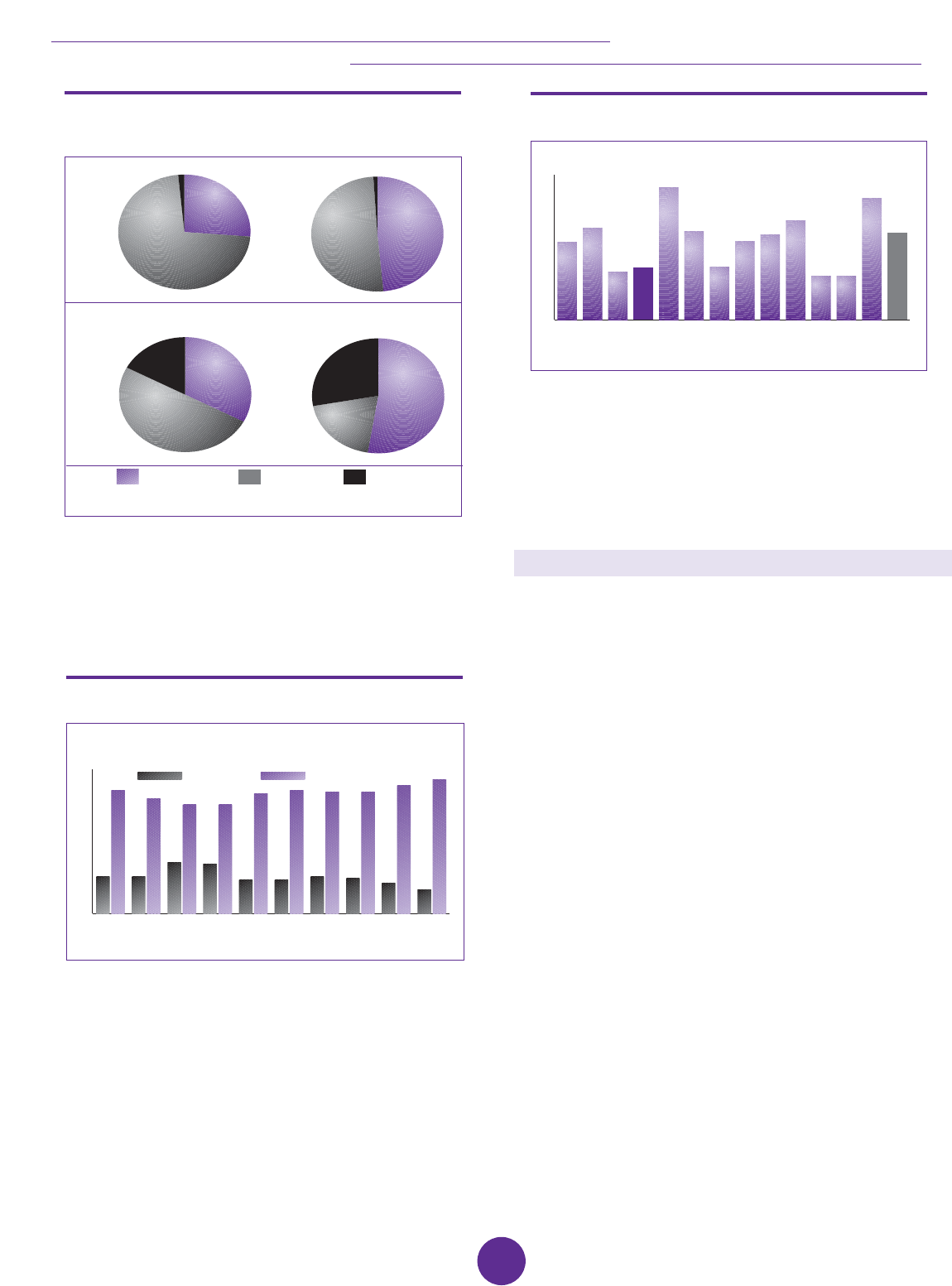
FINAL REPORT AND RECOMMENDATIONS
11
Third, New Brunswickers rate parties and their political
leaders low when it comes to honesty and being connected
to their concerns. Surveys conducted by the Centre for
Research and Information on Canada demonstrate this
below.
Fourth, there is a severe under representation of women in
the Legislative Assembly. New Brunswick is tied with
Manitoba among provinces as having the second-worst
results in electing women, as can be seen in the chart
below.
It is important to note that not just New Brunswick is
experiencing this phenomenon of political disengagement
and discontent. It is occurring in varying degrees across
Canada. But our challenge, as New Brunswickers, is to
determine what steps we can take to renew our own
democracy, on our own terms.
The Special Challenge of our Electoral System
Democratic renewal requires a special look at our electoral
system. An electoral, or voting system, translates votes into
seats. It is how we determine who will form our government
and who will represent us, as MLAs, in the legislature. Our
most basic democratic values - fairness, choice, equality,
accountability - come together on election night when the
votes are counted. A fair electoral system doesn’t just
produce a government; it produces legitimacy based on
consent. Citizens want to know that their votes count; that
their choices are reflected in the legislature and government.
In short, electoral systems affect citizens’ perception of their
democracy and their satisfaction with it.
New Brunswick’s single member plurality electoral system
(also known as first-past-the-post) has distinct advantages
and disadvantages. Its winner-take-all effect has produced
strong, effective majority governments. This same effect,
however, has produced weak official oppositions with fewer
seats and third party representation than would be awarded
under a more proportional electoral system. Between 1987
and 1999, for example, the opposition never won more
than 20 per cent of the seats in the legislature, despite the
combined opposition parties winning between 40 per cent
and 53 per cent of the vote during this same period. This
has produced an imbalance in our system affecting the
legislature’s ability to hold the government to account.
Original academic research conducted for the Commission
across 20 elections in 19 countries between 1996 and
2001, raises interesting questions about the linkage
between voter satisfaction with democracy and the choice
of electoral system. It shows that the degree of
disproportionality of the electoral system affects citizens’
Nfld. P.E.I. N.S. N.B. Que. Ont. Man. Sask. Alta. B.C. Nun.
N.W.T.
Yuk.
Can.
0
5
10
15
20
25
30
35
Source: Research Centre on Women and Politics, University of Ottawa and
data from various Legislative Assembly websites
in per cent
Percentage of Women Elected to Provincial
Legislatures Across Canada – Last Elections
Contested
Vacant
Regional Health
Authorities
Councillors
Mayors
District
Education
Councils
Acclamation
Source: Office of the Chief Electoral Officer
Contested Positions
Municipal Elections, District Education Councils,
Regional Health Authorities - 2004 Elections
Low Rating
High Rating
Nfld. P.E.I. N.S. N.B. Que. Ont. Man. Sask. Alta. B.C.
0
10
20
30
40
50
60
70
80
90
Source: Environics Focus Canada / Canadian Opinion Research Archive,
Queen’s University, 2002
Honesty and Ethical Standards of Political Leaders
Generally, how would you rate the honesty and ethical standards of the following leaders
these days? Would you give them a very high rating, a high rating, a low rating, or a very
low rating for honesty and ethical standards?... Political Leaders

COMMISSION ON LEGISLATIVE DEMOCRACY
12
evaluations of fairness and responsiveness of their
democracy more generally. The more disproportional an
electoral system, the lower the evaluation of the fairness of
the election, the less satisfied people were, and the more
negative were their feelings about the responsiveness of
their elected officials. Changing to a form of proportional
representation could positively impact on New
Brunswickers’ satisfaction with, and participation in, their
democracy.
Electoral and Democratic Reform
Across Canada
It is for these reasons - declining turnout, trust, confidence,
and satisfaction - that several provinces across Canada are
examining their electoral systems and considering changing
to a form of proportional representation.
Following a year’s study, British Columbia’s Citizens’
Assembly is recommending a form of proportional
representation known as the Single Transferable Vote (STV).
This option will be put to voters in the form of a referendum
question on May 17, 2005.
Last year, a Prince Edward Island Commission
recommended adopting a form of proportional
representation known as mixed member proportional. The
government has recently announced its intention to hold a
plebiscite giving all Islanders the chance to vote on a new
electoral system.
The Government of Québec tabled in December 2004, a
bill in its National Assembly, which, if adopted, will change
that province’s electoral system to a mixed member
proportional system. This proposal has been developed
following a consultation process begun under the previous
government. The Minister for Reform of Democratic
Institutions has also released major proposals to reform the
rules and procedures of the National Assembly to enhance
the role of members and the legislative branch.
Ontario has indicated that it will be establishing a Citizens
Assembly within a year to consider whether to change its
voting system to a form of proportional representation. The
results will be put to the people in a referendum. The
Ontario government has established a Democratic Renewal
Secretariat with a minister responsible, to examine a range
of reforms including a fixed election date and political party
financing changes.
The federal government is also considering a public process
such as a Citizens Assembly to examine changing Canada’s
electoral system. This issue is now before a House of
Commons committee. Steps to increase the role of
Parliament and individual Members in policy formulation
and to make government more accountable to Parliament
have already been taken by the federal government.
The impetus for electoral change varies for each jurisdiction,
but all hinge on recent electoral results. In British Columbia
and Québec, there have been recent cases where a party
formed a government with a majority of seats but actually
received fewer votes than their main rival. This was also the
case in New Brunswick in 1974. In four of the past five
elections in PEI, the opposition never won more than five
per cent of the seats. For its part, the federal government is
responding to this wave of provincial reforms and its own
democratic deficit with an assessment of democratic
renewal initiatives.
Together, these reform initiatives indicate that there is a
growing consensus that we must at least consider changing
our electoral system to address the broad-based democratic
discontent felt by many Canadians. Each province is
conducting its examination somewhat differently, but all are
considering a form of proportional representation best
suited to their circumstances as a possible solution. This
indicates that our Commission and province are actually in
the mainstream of Canadian thinking, perhaps even leading
it, when it comes to electoral reform.
The table on the next page summarizes democratic renewal
initiatives across Canada.
Canada is not alone in these reform initiatives. Other
Westminster-type democracies, such as in the United
Kingdom and New Zealand, have all recently considered
and even undertaken similar reform projects. Scotland and
Wales adopted forms of proportional representation for
their assemblies in 1999. New Zealand adopted a mixed
member proportional representation system in 1993.
Indeed, a comprehensive report on the UK experience with
proportional representation by an independent commission
concluded earlier this year that these new electoral systems
have not produced an adverse reaction from people, are
not too complicated for voters, have produced stable,
effective governments and are now broadly accepted.
The Historical Context
Democratic renewal has always occurred in New
Brunswick. Our democratic institutions and practices today
resemble, but do not reflect, their original shape or intent.
The founders of New Brunswick would recognize some, but
by no means all, of how we practice democracy today in
our province. From the secret ballot in 1855 to universal
suffrage in 1919 to lowering the voting age in 1971, much
has changed in how democracy is practiced in New
Brunswick. The reason is simple: society evolves and with it,
attitudes and expectations about democratic rights. As the
Commission’s academic expert on the history of democratic
reform in New Brunswick, Dr. Gail Campbell of the
University of New Brunswick, stated in her research paper
for the Commission:
“Historically, the tendency to revisit definitions of
democracy has sometimes reflected a genuine shift
in societal attitudes.”

FINAL REPORT AND RECOMMENDATIONS
13
New Brunswick has not been afraid to embrace democratic
renewal. It is not widely known, for example, but New
Brunswick was the first jurisdiction to adopt the secret ballot
in what would become Canada. It did so just one year after
Australia, which is credited with originating this initiative.
By another measure of democratic reform, Equal
Opportunity in the mid-1960s sought to give citizens equal
access to government services no matter where they lived.
The new Official Languages Act breaks new ground in the
protection and promotion of English and French and the two
official linguistic communities in the province.
Each of these steps expanded our concept of democracy to
make it more inclusive of society and reflective of who we
are. The challenge we are facing today is how the
institutions and practices of democracy, put in place a
century and more ago, can be renewed to keep up with our
expanded concept of democracy and meet the changing
expectations and needs of New Brunswickers.
It is for this reason that the Commission on Legislative
Democracy was created. We have been given a broad and
comprehensive mandate to examine and make
recommendations on the full range of issues affecting
democracy in our province. From electoral reform (changing
our voting system) to legislative reform (enhancing the role
of MLAs) to democratic reform (involving New Brunswickers
more in decision-making) - virtually all aspects of our
democracy was up for review.
This is important since there is no obvious single answer to
any form of democratic malaise. Long-term trends and
attitudes cannot be reversed overnight. It will take time and
effort. However, by focusing on a specific and
comprehensive package of reforms as we are
recommending, this Commission is convinced that New
Brunswick’s democracy can be renewed for its citizens; that
citizens will see real benefits from these changes; that New
Brunswickers will believe their votes truly count; that they
can have a real say in decisions and that government is
listening; and that their elected representatives are
responding to their concerns.
In recent years, over successive governments, New
Brunswick has taken a leading role in the country in
governmental reforms dealing with bilingualism, fiscal
responsibility and tax competitiveness, information and
communications technologies, e-government, quality
Electoral Reform Enhancing the Role New Mechanisms for Citizen
of Elected Officials Participation in Decision-Making
Key Issues Key Issues Key Issues
• Electoral system reform • Free votes • Citizen’s assemblies/juries/panels
• Increasing voter turnout • More power to committees • Broader consultation powers
• Fixed election dates and backbenchers for Committees
• Electoral boundaries • Increased resources for • Binding referendums
research and consultation • Online town halls
• Increased accountability • Online questionnaires
and ethical standards
Who’s doing it? Who’s doing it? Who’s doing it?
New Brunswick Commission New Brunswick Commission New Brunswick Commission
on Legislative Democracy on Legislative Democracy on Legislative Democracy
Prince Edward Island Québec Democratic Québec Democratic
Commission on Electoral Reform Reform Secretariat Reform Secretariat
Québec Democratic Ontario Democratic Ontario Democratic
Reform Secretariat Renewal Secretariat Renewal Secretariat
Ontario Democratic Government of Canada Government of Canada
Renewal Secretariat Democratic Reform Agenda Democratic Reform Agenda
British Columbia British Columbia
Citizen’s Assembly Citizen’s Assembly
Democratic Renewal Initiatives Across Canada

COMMISSION ON LEGISLATIVE DEMOCRACY
14
education, health care sustainability, and devolution of
decision-making responsibility to regional authorities.
Leading the country in democratic renewal is part of this
strong public policy tradition.
We believe the time has come to renew New Brunswick’s
democracy. The case for renewal is clear. In many ways the
real challenge facing us is how. It is this challenge that is
the main focus of this Commission’s Final Report and
Recommendations.
Towards a Citizen-Centred
Democracy in New Brunswick
“Mission - To identify options for an enhanced
citizen-centred democracy in New Brunswick
building on the values, heritage, culture, and
communities of our province.”
The Commission received not just a mandate, but also a
mission - to make recommendations that would lead to an
enhanced citizen-centred democracy in New Brunswick.
Citizens are the central focus of our work - not parties,
politicians, or even government itself. “Will it lead to a
stronger democracy for citizens?” is the test by which the
Commission evaluated each of its recommendations.
Through the prism of democratic values, we concluded our
deliberations each time by asking whether our proposed
recommendations would lead to an enhanced citizen-
centred democracy. Since democracy is fundamentally a
citizens’ exercise - beginning with the exercise of the
franchise or vote - we believe this gave our mandate an
important and cohesive focus.
The comprehensive mandate of the Commission - electoral,
legislative, and democratic reform - placed virtually all
facets of our democracy on the table. The reason is simple:
they are all linked. Changing our electoral system will lead
to shifts in the roles and responsibilities of MLAs. Involving
people more directly in decisions that affect them will
impact on how government currently functions. An
enhanced role for MLAs will change how decisions are
made in government. It is this integrated examination of our
democratic system that makes the Commission and its
mandate unique to our province and, indeed, the country.
There is nothing piecemeal about this report.
The Three Themes
This focus on citizens led the Commission to develop three
themes from which our recommendations flow. Common to
each is how democracy can be made to work better for
“you, the citizen”.
• Making Your Vote Count
• Making the System Work
• Making Your Voice Heard
Making Your Vote Count
Your vote is the most important democratic expression you
have. It must mean something. For it to mean something, it
must first count. The most obvious counting of votes takes
place on election night when we elect MLAs and choose a
government. But it is really our electoral system and the way
it counts votes that determines who wins and loses by
translating those votes into seats. If you voted along with a
sizeable minority of New Brunswickers for a candidate or

FINAL REPORT AND RECOMMENDATIONS
15
party that did not win a seat, did your vote actually count
towards the final result? Under our single member plurality
system, commonly known as first-past-the-post, it counts
principally for the winning candidate. Votes cast for other
candidates are not factored into the results and are thus
‘wasted’. Making your vote truly count means that all votes
must be treated equally and none wasted. As we explain in
our recommendation to adopt a New Brunswick regional
mixed member PR system, this change would clearly make
your vote count far more than now towards electing an MLA
and the party of your choice.
Making your vote count begins with voting for a candidate
in your riding. Electoral boundaries determine the riding in
which you cast your vote. But the composition of a riding
changes over time as population shifts occur. Today in New
Brunswick, some ridings are significantly larger than others,
which means a person’s vote in that riding has less weight
in determining the outcome than a person’s vote in a smaller
riding. Whether riding boundaries fit with communities of
interest can determine whether voters will receive effective
representation. Riding boundaries can be the difference
between a community having legitimate influence in the
riding in which it finds itself, or having its votes
overwhelmed by other dominant, majority interests. And
since your vote is personal and does not belong to a
particular political party, the independence from political
parties of the process by which electoral boundaries are
drawn can have a real effect as well on the results of
elections and who represents you. The Commission’s
recommendations for a new Representation and Electoral
Boundaries Act focus on each of these issues to make sure
that all citizens’ votes count equally.
We vote on election day. But we don’t know exactly when
that date will be. The timing of an election call can leave
some people out of the voting process. Fixed election dates
address this problem. They make your vote count since no
premier can adjust the date of an election to suit his or her
own political preference. The Commission’s
recommendation for a fixed election date every four years
in the fall will help make sure you can plan to vote and you
are not left out.
Voting is a right we share as Canadians. But with that right
comes responsibility. Democracy cannot function without the
consent or participation of voters. Every four years when we
choose a government and elect MLAs to represent us, we
are in reality giving our consent to be governed to a
particular group of representatives. When your fellow
citizens do not vote, they are sending a message that this
choice does not matter to them. When your fellow citizens
do not vote, they are effectively inviting the political parties
to pay more attention to some voices rather than others. The
Commission’s recommendations to boost voter turnout and
participation in the democratic process, particularly by
young people, will encourage New Brunswickers to vote.
Together with changes to the electoral system, and a more
meaningful role for MLAs, citizens will have more incentive
to vote. The resulting higher turnout will convey a greater
sense of legitimacy to the democratic choices citizens will
have made.
For your vote to count, it must first be counted. An effective
and independent electoral infrastructure of laws and
machinery is essential for free, fair, and efficient elections.
Votes should not be lost, or miscounted, or counted twice.
People who have the right to vote should have a place on
the list of electors. The electoral law should facilitate voting,
not place barriers in front of it. The Commission’s
recommendations for a new electoral commission called
Elections New Brunswick, and changes to the Elections Act,
will modernize our electoral infrastructure to make it easier
for people to vote, encourage them to vote, and make sure
the administration of the voting process is efficient and
effective.
Making the System Work
After your vote is counted, then what? A government is
formed, the legislature comes back into session, our MLAs
go to work, and decisions are made. How MLAs do their
work, how the Legislative Assembly functions, and how
political parties operate - the political system - all have an
impact on how citizens are served and how they view our
democratic institutions and practices. New Brunswickers are
no longer prepared to wait four years to use the sole
instrument of voting to keep our governments and MLAs
accountable. We expect accountability to occur during each
of those four years.
Making the system work for citizens begins with the
Legislative Assembly. It is at the heart of our democratic
system. For the Commission, this means three things: first,
giving a new sense of independence and authority in the
decision-making process to the legislature so it can be
restored to its proper role as the “People’s House”; second,
giving an enhanced role to MLAs so they can act more
effectively as representatives and contribute more effectively
to policy and legislative development; and third, making
sure government and MLAs are more accountable to us all,
as citizens. The Commission’s recommendations in this area
are comprehensive, covering many aspects of the Legislative
Assembly’s functions. They will result in a change in
approach and behaviour in the legislature. They will help
bring people back into the democratic process and lessen
democratic discontent.
Political parties are the gatekeepers to the democratic
process. They select the candidates and leaders from
among whom you, as a citizen, choose your
representatives. They receive significant public monies. They
are as much a part of the system as government
departments. In many respects, they are the public utilities
of democracy. How parties operate has a real impact on
democratic choices and attitudes in our province. Making
political parties more responsive to people and holding
them to a high standard of democratic ethics and
accountability will help make this aspect of our democratic
system stronger. The Commission’s recommendations to
improve party democracy will cause political parties to be

COMMISSION ON LEGISLATIVE DEMOCRACY
16
more accountable and open in how they conduct their
business.
Making the system work also means opening it up to more
people. Government agencies, boards, and commissions
(ABCs) are an integral part of the system of government.
They make quasi-legal judgements on our behalf, influence
public policy development and decisions, and make
important financial decisions that affect us all as taxpayers.
Opening up the ABC appointments process to allow more
New Brunswickers to apply and be considered for a
position, based on a more independent and accountable
process, will make the system work better for people. It will
help restore trust and confidence in the system.
Making Your Voice Heard
As citizens, we all want our voices heard. But it is not
always easy. Government is big and often not easily
accessible to people. Decisions taken by government and
the legislature can often seem remote and biased. Despite a
professional public service and hard-working MLAs who
consult and work closely with many groups and
communities, some people feel that government does not
listen to them when decisions are made.
Making your voice heard is really about engaging citizens
in decisions that affect them and their communities. To do
so, government needs to put in place additional
mechanisms to facilitate hearing the views of people and
communities. Participation in decision-making by citizens
and communities can and should be enhanced. Civil society
can be an important contributor to government policy
making. New tools for citizen engagement, such as the
Internet, are creating new opportunities for citizens to
interact and dialogue with government officials and MLAs.
The Commission’s recommendations in each of these areas
point out where citizen involvement can be increased and
improved to make sure your voice and others are heard.
In a democracy, all voices matter. However, some voices
are not heard as well as they should be. Women are under-
represented in the legislature and therefore in Cabinet,
denying their perspective in decision-making. Youth
participate far less in the democratic process than other
New Brunswickers, thereby diminishing their influence in
government. Aboriginal peoples have no dedicated
representation in the legislature, as they do in some other
countries, and participate little in other aspects of the
province’s democratic life. For the Commission, making your
voice heard means hearing from all these voices. Our
recommendations will help fill this democratic gap in our
province by encouraging more women to seek elected
office, by educating young New Brunswickers about how
government works and the importance of voting, and by
seeking a meaningful and respectful process with Aboriginal
people to determine their interest in electoral and
democratic reforms that can benefit all of us.
Making your voice heard can also mean giving New
Brunswickers a direct say through referendums on
exceptional issues or under exceptional circumstances.
Referendums should not be used to displace our current
system of representative democracy. As well, in a province
like ours, protecting minority rights from possible referendum
abuse is very important. Having clear rules and procedures
as to how referendums should be conducted and financed is
necessary to make sure some voices do not drown others
out. The Commission’s recommendations for a New
Brunswick Referendum Act will make certain that when
referendums are held in our province, they meet the
democratic values of New Brunswickers.
Towards a Citizen-Centred Democracy
The Commission on Legislative Democracy is really all about
creating a more citizen-centred democracy. Democracy must
work for people. It is worth reminding us that not everyone
gets his or her own way in a democracy. Acceptance of
decisions that are not always favourable to ourselves but
serve a broader public good is essential for a strong,
functioning democracy. That is why the process of how
decisions are made, how MLAs are elected, and how
government listens between elections all contribute to an
important sense of public trust and confidence in the
institutions and practices of our democracy.
While we cast votes as individuals, the results of those votes
are collective, electing a legislature and choosing a
government on behalf of New Brunswick as a whole. A
stronger citizen-centred democracy is one that is more
responsive to people overall. It is one that produces greater
participation and legitimacy. It is one that has greater
respect and understanding for the work of our elected
officials and leaders.
Because our democratic institutions and practices touch our
lives as citizens in so many ways, we need to renew our
democracy so it reflects our contemporary democratic
values. There is no single solution to curing our democratic
ills. Attitudes and opinions that have developed over time
about what’s wrong with our democracy will take time to
change. What is constant is the citizen. Maintaining that
focus, ensuring that link, is the real solution to renewing
democracy in New Brunswick.

FINAL REPORT AND RECOMMENDATIONS
17
Making Your Vote Count
A Mixed Member
Proportional
Representation
Electoral System for
New Brunswick
Mandate
To examine and make recommendations on
implementing a proportional representation
electoral system for the New Brunswick Legislative
Assembly, and propose a specific model best suited
for our province that ensures fairer representation,
greater equality of votes, an effective legislature
and government and a continued role for directly-
elected MLAs representing specific geographic
boundaries.
The Commission on Legislative Democracy recommends the
following made-in-New Brunswick model of proportional
representation (PR) as the model best suited for our
province:
Recommendation 1
That a regional, mixed member proportional representation
(MMP) system combining 36 single-member riding seats and
20 list PR seats elected within four approximately equal size
multi-member regional districts, as set out below, be
adopted as the model of PR best suited for New Brunswick.
Recommendation 2
That the MLAs for the 36 single member riding seats
continue to be elected using the current first-past-the-post
plurality vote system.
Recommendation 3
That voters in each of the four multi-member regional
districts elect five MLAs from closed party lists on the basis
of the party vote received within the region.
Recommendation 4
That voters cast two separate ballots: one, as they do now,
for the local single member riding candidate of their choice,
and a second ballot for the party of their choice.
Recommendation 5
That parties be required to reach a minimum five per cent
threshold in the separate party vote on a province-wide
basis in order to be eligible to win any list PR seats.
Recommendation 6
That candidates be required to choose to run either as a
single member riding candidate or as a candidate on a
regional PR list, but not both.
Recommendation 7
That the list PR seats be allocated on a regional basis,
based on the D’Hondt electoral formula, so as to partially
correct for disproportionality in the single member
constituency elections.
Recommendation 8
That parties be required to nominate list PR candidates in
open conventions based on clear party nomination,
financing, and disclosure rules, as recommended by the
Commission and set out in detail in the policy framework for
Improving Party Democracy contained in Recommendation
Appendix “H”.
Recommendation 9
That the electoral boundaries for the 36 single member
ridings and the four multi-member regional districts be
drawn by a Representation and Electoral Boundaries
Commission based on the principles and procedures
recommended by the Commission and set out in detail in
the policy framework for a Representation and Electoral
Boundaries Act for New Brunswick contained in
Recommendation Appendix “A”.
Recommendation 10
That a vacancy in a single member riding be filled through
a by-election held no later than six months after the seat has
been declared vacant. That a vacancy in a multi-member
regional district be filled by the next highest-ranking eligible
candidate on the same party list as the previous incumbent
from the general election.
Recommendation 11
That the recommended new electoral commission, called
Elections New Brunswick, initiate a comprehensive public
awareness and education campaign prior to the first
election under the NB MMP voting system to ensure voters
understand how the proposed new system will work.
Chapter 2 - Summary of Recommendations

COMMISSION ON LEGISLATIVE DEMOCRACY
Implementing a New Proportional
Representation Electoral System for
New Brunswick
Mandate
To examine and make recommendations on future
steps, including amendments to the Elections Act,
required to give effect to a new proportional
representation electoral system.
The Commission on Legislative Democracy recommends that
the following steps be taken to implement a new
proportional representation electoral system for New
Brunswickers:
Recommendation 1
That the government of New Brunswick take the steps
necessary to hold a binding referendum no later than at the
next provincial general election, to allow the people of New
Brunswick to choose whether or not to adopt the
Commission’s proposed regional mixed member
proportional representation electoral system, in order that it
be in place in time for the 2011 provincial general election.
Recommendation 2
That the referendum be held under the rules and procedures
recommended by the Commission and set out in detail in
the policy framework for a New Brunswick Referendum Act
contained in Recommendation Appendix “K”.
Recommendation 3
That Elections New Brunswick initiate a comprehensive
education and information campaign for New Brunswickers
to allow voters to make an informed choice on the proposed
question.
Recommendation 4
That a legislative committee be struck after two elections to
publicly review the results and procedures of the new MMP
voting system to determine any changes or improvements
that might be necessary.
Drawing Electoral Boundaries
in New Brunswick
Mandate
To examine and make recommendations on the
principles and procedures to guide future changes
to New Brunswick’s electoral boundaries, including
the number of constituencies to be represented in
the Legislative Assembly, that will be referred to a
Representation and Electoral Boundaries
Commission.
The Commission on Legislative Democracy recommends the
following principles and procedures to guide future changes
to New Brunswick’s electoral boundaries:
Recommendation 1
That a Representation and Electoral Boundaries Act be
adopted to establish a regular and independent process to
guide redistributions and changes to electoral boundaries in
the province.
Recommendation 2
That the following elements be included in a Representation
and Electoral Boundaries Act:
2.1 Timing of Redistributions - would follow every
decennial census.
2.2 Appointment of a Representation and
Electoral Boundaries Commission - A five
member commission composed of two co-chairs, one
from each official linguistic community, who are
independent of political parties, along with three other
members who are not currently MLAs, MPs or Senators,
would be appointed on a two-thirds vote of the
Legislative Assembly.
2.3 Terms of Reference of Commission - A
Commission would:
1) Recommend readjustments to the boundaries of
electoral districts in the province based on the
principles of representation by population, equality
of votes, and effective representation of electors.
2) Be permitted to deviate from the quotient for each
electoral district by no more than 15 per cent, plus
or minus, with a deviation of up to
25 per cent, plus or minus, in exceptional
circumstances.
3) Take the following into consideration when drawing
boundaries: communities of interest; representation
of New Brunswick’s two official linguistic
communities; geographic considerations, including
the accessibility, size and shape of a region of the
18

province; existing municipal and other
administrative boundaries; rate of population
growth of any part of the province; and the
challenges of representing rural areas.
2.4 Public Hearings – A Commission would be required
to hold two sets of hearings to allow for substantial
public input by New Brunswickers: one before a
preliminary report and proposed map of boundary
changes is prepared, and one on the proposed map of
boundary changes.
2.5 Final Authority – To reside formally with the
Legislative Assembly. A Committee of the legislature
could consider any amendments proposed by MLAs to
the final report of a Commission. Any amendments to
the Commission’s final report would require a two-
thirds vote of the Legislative Assembly.
Recommendation 3
That the same principles and procedures of a
Representation and Electoral Boundaries Act be applied to
draw boundaries for a new regional, mixed member
proportional representation electoral system for New
Brunswick.
Recommendation 4
That the policy framework for a Representation and
Electoral Boundaries Act for New Brunswick contained in
Recommendation Appendix “A” be considered as a
proposed framework for a new Act.
Recommendation 5
That the number of MLAs in the legislature be increased to
56 under the proposed regional mixed-member proportional
representation system. That the number of MLAs under the
current single member plurality electoral system be
approximately 55.
A Fixed Election Date for
New Brunswick
Mandate
“To examine and make recommendations on
instituting fixed election dates for provincial general
elections while proposing a fixed election date and
procedures best suited for our province.”
The Commission on Legislative Democracy recommends the
following principles and procedures for the institution of a
fixed election date:
Recommendation 1
That a provincial election be held on a fixed date every four
years commencing Monday, October 15, 2007, and on the
third Monday of October every four years thereafter.
Recommendation 2
That the following policy framework be considered for an
amendment to the Legislative Assembly Act to establish a
fixed election date for New Brunswick:
(1) Nothing in this section affects the powers of the
Lieutenant-Governor, including the power to dissolve
the Legislative Assembly, at the Lieutenant-Governor’s
discretion.
(2) In order that a general election may be held on a fixed
date, as set out herein, every four years:
(a) The Premier shall advise the Lieutenant-Governor
that the Legislative Assembly be dissolved so that a
general election may be held on Monday, October
15, 2007, and thereafter, the Premier shall advise
the Lieutenant-Governor that the Legislative
Assembly be dissolved so that a general election
may be held on the third Monday of October in the
fourth calendar year following polling day in the
most recent general election.
(b) In the event that a general election is held after the
day on which this section receives Royal Assent and
before October 15, 2007, because of a dissolution
of the Legislative Assembly, the Premier shall advise
the Lieutenant-Governor that the Legislative
Assembly be dissolved so that a general election
may be held on the third Monday of October in the
fourth calendar year following polling day in the
most recent general election.
Recommendation 3
That the Elections Act be amended to establish a clear 28-
day election period.
Recommendation 4
That the Elections Act be amended to reduce the time period
for by-elections from one year to six months of a vacancy
occurring in the Legislative Assembly, unless the vacancy
occurs during the last calendar year of the legal life of the
Legislative Assembly (i.e. between January 1st and the third
Monday in October of the year of the next fixed date
election).
FINAL REPORT AND RECOMMENDATIONS
19

COMMISSION ON LEGISLATIVE DEMOCRACY
Boosting Voter Turnout &
Participation and Modernizing our
Electoral Infrastructure
Mandate
To examine and make recommendations on
increasing voter turnout in provincial general
elections, particularly amongst young New
Brunswickers, and improving accessibility to the
electoral process in New Brunswick by modernizing
our electoral laws while reinforcing the democratic
rights and responsibilities of New Brunswickers to
vote.
The Commission on Legislative Democracy recommends the
following initiatives to modernize our electoral laws and
infrastructure and boost voter turnout:
Recommendation 1
That a new, independent electoral commission, called
Elections New Brunswick, be established. Elections New
Brunswick would combine the current duties and
responsibilities of the Office of the Chief Electoral Officer
and the Supervisor of Political Financing and have an
expanded mandate to: conduct elections and referendums
in New Brunswick; supervise political party financing and
make it more transparent and accountable; promote
awareness and knowledge of, and democratic participation
in, New Brunswick’s electoral process; and provide regular
and comprehensive reporting of results, activities, policy
issues and promotional activities to the Legislative Assembly.
Recommendation 2
That accessibility to and participation in the election process
for voters be improved, especially for youth, through the
following measures:
2.1 An online voter registration system.
2.2 Targeted approaches to communicate with high school,
university and college students on the registration and
voting process.
2.3 New electronic tabulation technology that would allow
voters who are away from their ordinary place of
residence, especially university and community college
students, to vote from their current location for a
candidate in their home electoral district.
2.4 Placing party logos on the ballot next to the names of
candidates and the parties they represent.
2.5 Identifying and hiring young New Brunswickers to work
during elections, so that they may become familiar with
and interested in the elections process.
2.6 Allowing voters to cast their ballot at any poll within
their electoral district.
Recommendation 3
That, where possible, polling stations be placed in New
Brunswick schools as locations that are familiar, cost-
efficient, and easily accessible to voters, and in order to
create a youth-friendly environment for voting.
Recommendation 4
That the electoral process be updated and streamlined to
make it easier to cast a vote; make the rules around
elections more clear and understandable; and provide a
more flexible and efficient process for administering
elections by:
4.1 Giving the Chief Electoral Officer the authority to
appoint and train returning officers, election clerks,
deputy returning officers, poll clerks, enumerators and
other election workers, and the flexibility to assign
these workers to polling stations and electoral districts
as needed.
4.2 Opening up the advance poll process so that the
procedures to vote in the advance poll are the same as
those for voting on election day.
4.3 Giving the Chief Electoral Officer more flexibility to set
the details of elections procedures.
4.4 Integrating the provisions of the Elections Act regarding
registration of political parties, district associations and
candidates with the provisions of the Political Process
Financing Act to provide a more seamless approach to
supervision of political financing and improving access
to information on financing of candidates and political
parties.
20

Making the System
Work
Enhancing the Role
of MLAs and the
Legislature
Mandate
To examine and make recommendations on
enhancing the role of the Legislative Assembly and
MLAs in decision-making while ensuring greater
accountability of MLAs to their constituents and to
New Brunswickers.
The Commission on Legislative Democracy recommends that
the following steps be taken to enhance the role of the
Legislative Assembly and MLAs, and increase accountability
of government and the legislature to New Brunswickers:
Enhancing the Role of the Legislative
Assembly
Recommendation 1
That party discipline and partisanship be reduced by
encouraging more free votes, fewer confidence measures,
and the introduction of a three-line whip voting system in the
Legislative Assembly.
Recommendation 2
That the role of legislative committees in policy-making be
enhanced by providing the committees with designated staff
and resources allowing them to conduct independent
research and undertake public consultations, including
mandatory public hearings on important bills.
Recommendation 3
That the Legislative Assembly committees be restructured to
create standing policy committees that would facilitate
consideration of bills and encourage stronger MLA policy
expertise. The Standing Committees could be:
1. Standing Committee on Natural Resources
2. Standing Committee on Social Policy
3. Standing Committee on Finance and Economic
Policy
4. Standing Committee on Public Safety
5. Standing Committee on Government Operations
6. Standing Committee on Public Accounts and Crown
Corporations
7. Standing Committee on Legislative Administration,
Procedures, Statutory Officers and Legal Issues
Recommendation 4
That an independent Legislative Library Research Office be
created and funded to serve all MLAs, and to support the
role of strengthened legislative committees, ensuring that
individual MLAs can research policy issues on behalf of
constituents and acquire more legislative expertise in
specific policy areas.
Recommendation 5
That MLAs have the time to review bills before they are
adopted in final form by allowing for more time between
first and third reading of bills.
Recommendation 6
That a new, designated one-hour dialogue and scrutiny time
period every two weeks called, “Interpellation” be
provided. Interpellation would be used firstly, to debate
reports of committees of the Legislative Assembly and
secondly, to allow for more detailed questioning of ministers
on specific policy areas.
Recommendation 7
That Hansard and Legislative Assembly reports be
accessible online, in a more up-to-date time frame in both
official languages. A transcript of Question Period would be
published within 24 hours and a transcript of Hansard
within 48 hours.
Recommendation 8
That the Legislative Assembly be permitted to independently
table its own budget through the Speaker on the same day
and as a component part of the Main Estimates tabled by
the Minister of Finance, as is stated in the Legislative
Assembly Act.
Recommendation 9
That the Statutory Officers of the Legislative Assembly be
permitted to independently submit the budgets for their
offices to the Legislative Administration Committee for
review and approval as part of the overall Legislative
Assembly budget.
FINAL REPORT AND RECOMMENDATIONS
21

COMMISSION ON LEGISLATIVE DEMOCRACY
Enhancing the Role of MLAs
Recommendation 10
That the formal Code of Conduct for MLAs proposed by the
Legislative Administration Committee and set out in detail in
the policy framework on the Roles and Duties of an MLA
and a Code of Conduct for Members of the Legislative
Assembly in New Brunswick contained in Recommendation
Appendix “C”, be adopted following a debate in the
Legislative Assembly, added as an appendix to the Standing
Rules of the Legislative Assembly, and published on the
Legislative Assembly website.
Recommendation 11
That the annual constituency budget for each MLA be
increased to $50,000, as set out in the policy framework
for MLA Constituency Resources contained in
Recommendation Appendix “D”, to allow the MLAs to offer
more accessible and effective services to their constituents.
This budget would be administered by the Legislative
Assembly Office to ensure full transparency and
accountability. A complete accounting of spending would
be published in an annual report by the Legislative
Assembly Office.
Recommendation 12
That MLAs be supported in drafting more Private Member’s
Bills reflecting their independent policy ideas and
constituency concerns, by providing access to legal drafting
resources and staff through the new Legislative Library
Research Office referred to in Recommendation 4.
Government and Opposition members would adopt a
process to vote on an agreed upon number of such bills
during each legislative session.
Recommendation 13
That an independent remuneration review committee of
three New Brunswick citizens appointed by a two-thirds vote
of the Legislative Assembly be established to determine a
new consolidated salary level for all MLAs, to better reflect
the full-time reality of the occupation, and the need for
regular, appropriate increases, as set out in detail in the
policy framework for a Review Committee of MLA
Remuneration contained in Recommendation Appendix “E”.
Per diems and other expenses for undertaking committee
and other work would be eliminated in favour of this more
transparent and realistic salary level.
Ensuring Greater Accountability of
Government and the Legislature to
New Brunswickers
Recommendation 14
That a fixed Legislative Calendar Session as set out in detail
in the policy framework contained in Recommendation
Appendix “F”, be introduced, setting out in advance when
the legislature would meet each year. This would allow for
more effective and efficient use of House time, ensure that
designated days are set aside for legislative committees to
do their work, and also allow individual Members to more
effectively plan their time to meet both their constituency
and legislative obligations.
Recommendation 15
That a Transparency and Accountability Act, as set out in
the policy framework contained in Recommendation
Appendix “G”, be adopted that would set deadlines for the
publication of Public Accounts and quarterly provincial
financial reports, and would enumerate what information
must be contained in each report. This Act would also set
out Throne Speech and Budget dates.
Recommendation 16
That up to $5,000 annually be allocated to each MLA,
designated specifically for undertaking direct public
consultation with their constituents through town hall
meetings and citizens’ forums on policy issues. This budget
would be administered by the Legislative Assembly Office,
with a regular reporting of activities undertaken by members
publicized each year.
Recommendation 17
That the Legislative Assembly promote the use of information
and communications technology to improve citizen access,
including a more extensive and interactive website, with
sites for individual MLAs, as well as creating a new online
"e-petition" feature that will allow citizens to start and
manage their own petitions through the Legislative Assembly
website.
Recommendation 18
That petitions be given a higher priority in legislative
business by adding petitions to the terms of reference of one
or more appropriate standing committees, which would
regularly examine petitions received, and would be
empowered to invite petitioners to committee meetings to
discuss their concerns. Committees taking up petitions would
include them in their reports to the Legislative Assembly, and
require timely and meaningful responses from government
on the petitioners' concerns.
22

Recommendation 19
That the Right to Information Act process be improved first,
so that where the scope of a request by an applicant under
the Act is not clear or the request would be best served by
a personal inspection of the information by the applicant,
the appropriate minister would be permitted to invite the
applicant to inspect the information in the offices of the
department, if it was practical to do so, within 30 days of
the receipt of the application as set out in the Act; and,
second, that Regulation 85-68 under the Right to
Information Act be amended to include the Legislative
Assembly in the list of Departments that are subject to the
Act as long as providing the information requested does not
infringe on the privileges of the Legislative Assembly or the
Members of the Legislative Assembly.
Improving Party Democracy
The Commission on Legislative Democracy recommends that
the following steps be taken to improve political party
democracy in New Brunswick:
Recommendation 1
That the Political Process Financing Act (PPFA) be amended
to set contribution and spending limits for political party
leadership and nomination contestants and require public
disclosure of information on the financing of leadership and
nomination contests. That these limits and disclosure
requirements be as follows:
1.1 Leadership campaign expenses would be limited to
$300,000 per candidate.
1.2 Nomination campaign expenses would be limited to an
amount representing 20 per cent of the average of the
spending limits that were allowed for a candidate's
election expenses in the province’s electoral districts
during the immediately preceding general election.
1.3 Contributions would be limited to $3,000 in total to
one or more contestants in a leadership contest and
$1,000 in total to one or more nomination contestants;
these limits would be in addition to the current limit for
contributions to parties under the PPFA.
1.4 Leadership candidates would be required to file a
summary financial return four weeks prior to the date
of the leadership contest and a final leadership
campaign return within 90 days of the date of the
leadership contest. Nomination contestants who
accepted contributions or incurred expenses over
$1,000 would have to file a nomination campaign
return within 90 days of the selection date for the
nomination contest.
1.5 Elections New Brunswick would publish information
disclosed by leadership and nomination contestants on
the financing of their campaigns.
Recommendation 2
That the following new provisions be introduced into the
Elections Act to set clear, open, and transparent rules and
procedures to be followed by political parties during
nomination and leadership contests:
2.1 All of a party’s general election candidates must be
endorsed by a vote of eligible party members, in a
vote that is open to all eligible party members.
2.2 To be eligible for party membership, a person must
meet the same eligibility requirements to vote in a
provincial election.
2.3 To be eligible to vote in a leadership or nomination
contest, a person must belong to the political party at
least seven days prior to the nomination contest and be
a member of the party at the time of the vote.
2.4 If fixed election dates are adopted, riding associations
must hold a vote of their members for the purpose of
choosing their general election candidate no more than
120 days prior to the date of the general election.
2.5 Parties must advertise the date, time and location of a
leadership or nomination contest at least seven days
prior to the closing date for eligible membership.
2.6 Parties shall not charge a membership fee greater than
$5 annually.
2.7 A declaration, signed by the party leader following a
nomination contest and signed by the Party President
following a leadership contest, must be filed with the
Chief Electoral Officer, certifying that all required
procedures were followed and that the nomination or
leadership contest was held in a fair and democratic
manner.
Recommendation 3
That the policy framework for administering these new
political party financing rules contained in Recommendation
Appendix “H” be adopted.
Recommendation 4
That all political parties be encouraged to establish Policy
Foundations as a way to provide a meaningful opportunity
for interested party members to engage in policy study and
development and to help ensure parties present strong
platforms to voters at election time. That Policy Foundations
be established on an arm’s-length, non-profit basis and be
funded through:
1) A one-time, start-up allowance in an amount that is
25 per cent of the annual allowance to which the
party is eligible under the PPFA, in the Policy
Foundation’s start-up year, or $25,000, whichever
amount is greater,
2) An ongoing additional annual allowance of $0.25
per valid vote received during the preceding
provincial general election, and
FINAL REPORT AND RECOMMENDATIONS
23

COMMISSION ON LEGISLATIVE DEMOCRACY
3) Contributions from individuals, corporations and
trade unions, not exceeding $3,000 in a calendar
year, to one or more party Policy Foundations, and
to which the New Brunswick Political Contributions
Tax Credit would be extended. This contribution
limit would be in addition to the current limit for
contributions to parties under the PPFA.
Recommendation 5
That to be eligible for public funding, a party Policy
Foundation would be required to: have a Constitution
separate from the political party’s Constitution; have a
separate board of directors from the provincial party
executive; present annual reports to Elections New
Brunswick on the Foundation’s activities and programs,
including full disclosure of all revenues, expenditures, and
contributions; prohibit any transfers of funds from the
Foundation to the political party for election purposes or
operations; and prohibit the director or any full-time
personnel from participating directly in the preparation of
election-related material or in the conduct of election
campaigns.
Opening up the Appointment
Process for Agencies, Boards
and Commissions
Mandate
To examine and make recommendations on
enhancing transparency and accountability in
appointments to government agencies, boards, and
commissions.
The Commission on Legislative Democracy recommends that
the following steps be taken to enhance transparency and
accountability in appointments to government agencies,
boards, and commissions (ABCs):
Recommendation 1
That an ABC Appointments Unit be established within the
Office of Human Resources and assigned overall co-
ordinating responsibility for appointments to government
agencies, boards, and commissions.
Recommendation 2
That the following practices and procedures for making
appointments to ABCs be adopted and implemented by the
ABC Appointments Unit:
2.1 Setting out specific guidelines and processes for
appointments to ABCs, appropriate to the nature of the
ABC;
2.2 Monitoring and reporting on the appointment process
to ensure that the guidelines are followed and
appointments are made on an open, transparent and
consistent basis;
2.3 Advertising vacancies on ABCs in a timely fashion;
2.4 Identifying, seeking and reviewing qualified candidates
for appointment by the Lieutenant-Governor in Council;
2.5 Developing and maintaining a central databank of
ABC appointments, vacancies and applications;
2.6 Providing human resource expertise and assistance in
the process of reviewing applications for appointment;
2.7 Publicizing appointments; and
2.8 Co-ordinating the development and administration of
training and orientation programs for ABC members on
their roles and responsibilities.
Recommendation 3
That a formal process for appointments to the most
significant ABCs be established to ensure merit-based
appointments, and to give qualified and competent persons
the opportunity to serve on these ABCs. Such a process
would include the following steps:
3.1 Preparing a Board Profile defining the skills,
experience, qualifications, and diversity of
representation of members required for the effective
operation of the ABC;
3.2 Developing Position Descriptions which set out the skills
criteria for a vacancy on the ABC;
3.3 Advertising of vacancies and Position Descriptions;
3.4 Identification of potential candidates;
3.5 Formal vetting of applications and a due diligence
check of candidates;
3.6 Preparation of a short-list of qualified candidates with
possible rank-ordering for decision by the Lieutenant-
Governor in Council;
3.7 Advising unsuccessful candidates of outcome of
process;
3.8 Publication of appointments on government websites.
Recommendation 4
That, subject to the agreement of the political parties to such
involvement, the Legislative Assembly be involved in the
preparation and rank-ordering of a short-list of qualified
candidates for the most significant ABCs.
Recommendation 5
That the appointment process facilitate the consideration of
qualified people from regionally and culturally diverse
backgrounds that are representative of the two official
linguistic communities, women, Aboriginal people, and
minorities.
24

Recommendation 6
That fixed three-year terms for ABC appointments be
established across government, while staggering some
appointments for an initial two-year term; and consecutive
reappointments be limited to no more than two
uninterrupted terms.
Recommendation 7
That the detailed process for appointments to the most
significant ABCs, the detailed process for appointments to
other ABCs, and the suggested classification of ABCs
contained in Recommendation Appendix “I” be considered
as frameworks for developing a new appointments process
for ABCs.
Making Your Voice
Heard
Mandate
To examine and make recommendations on
enhancing public involvement in government and
legislative decision-making.
Stronger Voices
for Youth
The Commission on Legislative Democracy recommends that
the following steps be taken to increase knowledge and
understanding of the democratic process by New Brunswick
students and to boost youth voter participation with the goal
of increasing the turnout of 18-29 year-olds to at least the
provincial average by the 2015 provincial general election:
Recommendation 1
That the Mission Statement of the Department of Education
be amended to formally recognize as a learning outcome
for all graduating students the importance of exercising the
responsibilities of citizenship. The new Mission Statement
would read:
“To have each student develop the attributes needed
to be a lifelong learner, to achieve personal
fulfillment, to exercise the responsibilities of
citizenship, and to contribute to a productive, just
and democratic society.”
Recommendation 2
That a new, mandatory provincial Civics Program from
Kindergarten through Grade12 be fully implemented as part
of the current Social Sciences program in schools beginning
in the 2007-2008 school year. This new civics program, as
outlined in the policy framework on a new Civics Education
Program for Kindergarten to Grade 12 contained in
Recommendation Appendix “J”, would help students
graduate with the knowledge, understanding, and critical
analysis skills necessary to become “active citizens”, able to
understand and participate in democratic activities in their
community, province, and country.
This new Civics Program would build on and be integrated
into the current social sciences program curricula being
taught now at various grades under both the anglophone
and francophone school systems. The program would be
based on the following standards: mandatory for all
students; comprehensive in scope and subject matter;
FINAL REPORT AND RECOMMENDATIONS
25

COMMISSION ON LEGISLATIVE DEMOCRACY
integrated with current offerings; practical in application;
non-partisan in material; and supported by teachers,
schools, parents, the Department of Education, and the
Legislative Assembly.
Recommendation 3
That the Department of Education work directly with New
Brunswick teachers, as well as experts in other provinces, to
develop flexible, made-in-NB civics teaching resource
kits/learning modules for teachers, students, and schools to
facilitate teaching and learning of the new mandatory
Civics Program. A designated professional development day
or period would be set aside to enable teachers to become
comfortable with the course materials and learn how to best
teach and engage their students in this new mandatory
course.
Recommendation 4
That a “Teachers in the Legislature” partnership program
between social sciences and civics program teachers and
the Legislative Assembly be established under the auspices
of the Speaker to bring together teachers from across the
province to share ideas and learn more about the legislative
and political process in our province.
Recommendation 5
That the following youth education and support activities be
developed to promote youth awareness and participation in
our democratic system, and support the new focus on civics
educational activities in schools and communities:
5.1 “Youth Vote NB”
Creating “Youth Vote NB”, a province-wide mock
election program to be held in every middle and high
school in the province in conjunction with the next New
Brunswick election and subsequent provincial and
municipal elections. This youth-run organization,
supported by Elections New Brunswick and Student
Councils, would help organize the program, work with
schools, suggest support activities, and produce and
distribute information on issues, candidates, and
parties.
5.2 Democracy Awareness Program
& “You Can Vote!” Mail Out
Creating a “youth-friendly” democracy awareness
program through Elections New Brunswick aimed at
informing young New Brunswickers about the
importance of the democratic process and voting.
Sending a regular mail out from the Chief Electoral
Officer to young New Brunswickers as they turn 18
explaining what the act of voting means together with
an explanation on our electoral and democratic
system.
5.3 “Promoting Democracy in Schools” Program
Developing a “Promoting Democracy in Schools”
program involving speaking tours by MLAs, political
fairs, election simulations, and debates in schools to
promote a more practical understanding of and
exposure to how our democratic system works. This
would be a uniform policy at the District Education
Council level. These activities are to be non-partisan at
all times.
5.4 Youth Websites
Creating youth-focused websites by Elections New
Brunswick, the Legislative Assembly, and political
parties to engage young people to participate in
voting, politics, and democracy. The Elections New
Brunswick website, in collaboration with Elections
Canada, would provide resource materials aimed at
youth and at helping students and organizations learn
about our democratic institutions and practices. It
would also have youth website links.
5.5 Involvement of Parents
Creating a social marketing program to raise the
awareness of parents regarding the importance of
discussing democratic issues at home and voting with
their children. This could be complemented by a “Bring
Your Child to Vote” initiative at election time and even
a “Bring Your Parent to Vote” initiative.
5.6 Democracy Support Fund
Creating a fund administered by Elections New
Brunswick to support events and activities organized by
youth groups aimed at promoting the participation of
young people in our democratic system. The money
could be allocated to a Student Council, for example,
to organize a mock election or hold a political fair.
5.7 Student Legislative Seminar and
Democracy Camps
Broadening the current Legislative Assembly Student
Legislative Seminar to involve more schools and
students. Establishing Democracy Camps to give young
New Brunswickers who are in high school the
opportunity to spend several days to learn more about
our electoral, democratic and legislative processes.
These camps would be administered by the Legislative
Assembly Office and would gather young people from
across the province.
Recommendation 6
That the following steps be taken to facilitate access by
youth to the voting process and make it easier for them to
vote:
6.1 Online Registration
Encouraging youth voters to register online so as to
ease some of the administrative barriers often faced by
26

youth and students when facing the voting process,
particularly for the first time. The Chief Electoral Officer
would develop targeted approaches to communicate
with high school, university and college students on the
registration and voting process. These approaches
could include contacting students by e-mail in advance
of elections and developing the interactive component
to the website of the Chief Electoral Officer to answer
queries and provide and receive registration
information.
6.2 “Vote Where You’re At”
Placing polling stations with electronic tabulation
machines on university campuses and in community
colleges so student voters residing outside of their home
constituency can choose to vote and have their ballot
count in their home riding or in the constituency in
which they are studying.
Recommendation 7
That the voting age remain at 18 years.
Stronger Voices for Women
The Commission on Legislative Democracy recommends the
following steps be taken with the goal of increasing the
representation of women in New Brunswick’s Legislative
Assembly to 35 per cent by the year 2015:
Recommendation 1
That amendments be made to the Political Process Financing
Act as a way to achieve gender equality in the Legislative
Assembly that would include an increase of the annual
allowance to political parties by $1 per valid vote to any
party in which women comprise at least 35 per cent of the
candidates in the preceding provincial election. This
incentive would be reviewed once the New Brunswick
legislature reaches a minimum of 45 per cent women.
Recommendation 2
That an educational/policy program be created with the
objective of financially supporting associations in
organizing activities, providing information, or developing
programs that would promote the participation of women in
municipal or provincial politics.
Recommendation 3
That the Elections Act be amended to require political
parties to file with Elections New Brunswick a biannual
report on measures taken to increase women’s
representation in the legislature. Information on the number
and type of positions held by women in provincial and
constituency association executives of registered political
parties would be made public by Elections New Brunswick
as part of its annual report to the Legislative Assembly.
Recommendation 4
That the ABC Appointments Unit be required to actively
solicit applications from women for vacancies on ABCs,
including using established databanks of potential female
applicants.
Stronger Voices for
Aboriginal People
The Commission on Legislative Democracy recommends that
the following step be taken to increase the voices of
Aboriginal people in the democratic life of New Brunswick:
Recommendation 1
That the Government of New Brunswick invite New
Brunswick’s Aboriginal people to meet, discuss and develop
an appropriate process to seek the views of Aboriginal
people on representation of Mi’kmaq and Maliseet people
in the Legislative Assembly of New Brunswick and on their
role in the democratic life of New Brunswick.
A Referendum Act for
New Brunswick
Mandate
To examine and make recommendations on
enhancing direct democracy by proposing a New
Brunswick Referendum Act that sets out the rules
and procedures for allowing province-wide, binding
referendums on significant public policy issues.
The Commission on Legislative Democracy recommends that
the following principles and provisions be adopted as part
of any New Brunswick Referendum Act in order to ensure
that referendums held in New Brunswick are independent,
fair, open, transparent and efficient, and encourage the
participation and involvement of New Brunswickers:
Recommendation 1
That the following principles governing the use of
referendums in New Brunswick be incorporated in a
Referendum Act:
1.1 Exceptional Issues – referendums should be held on
exceptional issues only.
1.2 Minority Rights Protection – no referendums
should be held that would have the purpose of
undermining or diminishing minority rights as set out in
FINAL REPORT AND RECOMMENDATIONS
27

COMMISSION ON LEGISLATIVE DEMOCRACY
the Canadian Charter of Rights and Freedoms, New
Brunswick’s Human Rights Act, New Brunswick’s
Official Languages Act, An Act Recognizing the
Equality of the Two Official Linguistic Communities in
New Brunswick, or any other act that supports,
protects, or advances minority rights in the province.
1.3 Initiated by Government – referendums should be
initiated by government only, not by citizens in the form
of citizen initiatives.
1.4 Clear Question – a referendum question should be
clearly written so that it can be answered with either a
“yes” or “no” response.
1.5 Binding on Government – results of referendums
should be binding on the government to act.
1.6 Double Majority Support – referendum results
should be binding only when more than 50 per cent of
valid votes are in favour of the referendum question
and at least 50 per cent of eligible voters voted in the
referendum.
1.7 Independent & Transparent – referendums should
be independently supervised by Elections New
Brunswick with strict financing, disclosure, and
advertising rules to ensure a level playing field for all
sides with disclosure to voters of who may be funding
or supporting each referendum side.
Recommendation 2
That the following key provisions regarding the independent
supervision and administration of referendums in New
Brunswick be incorporated in a Referendum Act:
2.1 Timing – referendums should be held at the same time
as provincial or municipal elections. In an exceptional
circumstance, government could hold a referendum on
a day other than an election day.
2.2 Consultation and Debate on the Question –
Government would consult on the wording of the
question with the Leader of the Opposition and the
leaders of other political parties represented in the
legislature, and the referendum question would be
tabled, debated, and adopted by the legislature.
2.3 Referendum Committees – An official referendum
committee for each side of a referendum question be
formally established and registered with the Chief
Electoral Officer. Only these committees may make
expenditures in excess of $1,000.
2.4 Spending Limits – Official referendum committees
and their affiliates together be limited to spending no
more than $0.75 per voter during the course of a
referendum campaign, and all expenditures be audited
and reported to Elections New Brunswick.
2.5 Contribution Limits – limits on contributions to
official referendum committees be set at no more than
$3,000 for an individual, corporation, trade union, or
political party.
2.6 Financing Rules – names of contributors of over
$100 to an official referendum committee be disclosed
to Elections New Brunswick.
2.7 Registration –individuals or groups wishing to incur
expenses of $1,000 or less for advertising be required
to register with Elections New Brunswick for
transparency purposes, but not be required to
participate through an official Referendum Committee.
2.8 Information to Voters – Elections New Brunswick
mail to voters a sample referendum ballot and
information containing the arguments for and against
the referendum question at least 25 calendar days in
advance of voting day.
Recommendation 3
That the policy framework for a draft Referendum Act for
New Brunswick contained in Recommendation Appendix
“K” be considered as a proposed framework for a new Act.
Participatory Democracy
and Citizen Engagement
in New Brunswick
Mandate
To examine and make recommendations on
enhancing public involvement in government and
legislative decision-making.
The Commission on Legislative Democracy recommends that
the following steps be taken to increase the participation of
New Brunswickers in decision-making:
Participatory Decision-Making
Recommendation 1
That the provincial government conduct an awareness
campaign with information packages for prospective
candidates on the powers and responsibilities of District
Education Councils (DECs) and Regional Health Authorities
(RHAs), to encourage more candidates to offer to
participate in these local decision-making authorities.
Recommendation 2
That Elections New Brunswick promote greater voter
understanding of how and where to vote for DEC and RHA
positions by inserting advertisements similar to the Notice of
Grant of Poll advertisements used during provincial
elections, that include maps of the boundaries of the various
authorities and councils being filled by the elections, the
locations of polling stations, and the names, addresses, and
contact information of the candidates standing for
nomination.
28

FINAL REPORT AND RECOMMENDATIONS
29
Recommendation 3
That Elections New Brunswick publish at least seven days
before the date of the quadrennial local governance
elections, a short statement prepared by each DEC and
RHA candidate.
Recommendation 4
That the elected and appointed members of DECs and RHAs
receive formal training and orientation so they can more
fully understand and exercise their powers and
responsibilities.
Recommendation 5
That an appropriate per diem be paid to members of DECs
and RHAs as compensation for the work and time they
undertake as members, and to encourage greater
participation in the process.
Recommendation 6
That the government initiate a review of DECs and RHAs, in
consultation with communities and stakeholders, to
determine what is the most appropriate authority for these
bodies given community expectations, the need to ensure a
more direct correspondence between their mandated
responsibilities and actual legislated powers, and to ensure
ongoing accountability of public expenditures to taxpayers.
Recommendation 7
That following the next municipal elections, the provincial
government evaluate the need to create an independent
commission to examine local and regional governance in
New Brunswick.
Civic Engagement and Civil Society
Recommendation 8
That a central Public Dialogue Office with consultation
expertise be created within government to assist
departments and agencies in undertaking and supporting
meaningful consultation and deliberative dialogue with
citizens and civil society organizations.
Recommendation 9
That a new Civic Engagement Fund, to be administered by
the Public Dialogue Office, be created to support civil
society groups engaged in various consultation activities
with citizens and communities, including conducting
research, preparing resource materials, and cost-sharing
events.
Recommendation 10
That specific guidelines for Open Consultation be
developed, shared, published, and utilized across
government as an ongoing framework for meaningful
consultation with citizens and civil society organizations,
and as an important accountability tool.
Recommendation 11
That the working group model established by the Minister’s
Working Group on Violence Against Women be utilized as
a model for “best practices” engagement on public policy
development for other issues.
Recommendation 12
That government explore the value of utilizing “citizens
assemblies” and “citizen panels” to engage citizens in
deliberative dialogue and/or decision-making on a diverse
range of issues.
Recommendation 13
That an annual pre-budget consultation process be
undertaken by the Minister of Finance that includes a public
information document for citizens, province-wide public
hearings, and a public appearance before a Standing
Committee of the legislature.
E-Democracy
Recommendation 14
That a central “e-Town Hall” site be created on the main
government website, with a link to the new Public Dialogue
Office, listing all consultations being undertaken by
government at any one time; their status; how citizens can
access information on the consultation issue; and a built-in
questionnaire and feedback component for citizens to
participate in each process.
Recommendation 15
That the results of all e-consultation processes be published
on the main government website to share information,
demonstrate transparency, and encourage more
participation in and use of these engagement tools.

COMMISSION ON LEGISLATIVE DEMOCRACY
30

FINAL REPORT AND RECOMMENDATIONS
A Mixed Member
Proportional Electoral
System for New
Brunswick
Mandate
To examine and make recommendations on
implementing a proportional representation
electoral system for the New Brunswick Legislative
Assembly, and propose a specific model best suited
for our province that ensures fairer representation,
greater equality of votes, an effective legislature
and government, and a continued role for directly-
elected MLAs representing specific geographic
boundaries.
The Commission believes that the regional form of mixed
member proportional (MMP) representation recommended
in this report meets the terms of its mandate and represents
a significant improvement over New Brunswick’s current
single member plurality (SMP) electoral system. In reaching
this conclusion, the Commission considered the advantages
and disadvantages of both the current system and all of the
other major systems currently used in democratic nations
around the world. This chapter begins with consideration of
the principles we believe essential to a New Brunswick
electoral system, then examines how both the current system
and proportional representation systems reflect these
principles. It then explains the New Brunswick mixed
member proportional (NB MMP) electoral system that we
are recommending.
Electoral Systems and Democratic Principles
Elections are the cornerstone of every democracy. It is
largely through elections that citizens exercise their
democratic power. Once every four years or so, as New
Brunswickers, we engage in a debate of who should lead
us, and in what direction. At the end of this discussion, we
go to the polls and cast a vote for the government of our
choice. The electoral system determines how these
individual votes are counted and translated into seats in the
legislature.
The electoral system influences many parts of our
democratic life, including the kinds of individuals who get
elected, the interests that get represented in the legislature,
the partisan composition of the legislature, the way voters
participate in an election and the functioning of the
legislature. These are all important issues, and their
relationship with the electoral system illustrates the
importance of the choice of electoral system. Different
electoral systems can result in significantly different
outcomes without any voters marking their ballot differently.
It is because of the importance of these rules to democratic
outcomes that governments across Canada have embarked
upon processes aimed at examining the appropriateness of
their electoral systems and potentially identifying alternative
ways of choosing elected officials. Responding to the
general democratic malaise that many Canadians are
experiencing, governments are searching for ways to
reinvigorate our democracy and many, including the
governments of British Columbia, Ontario, Québec, and
Prince Edward Island, are engaged in their own electoral
reform projects.
We began our process by identifying four key democratic
principles that we believe should be reflected in New
Brunswick’s electoral system if it is to respect the democratic
values held by New Brunswickers. These are: local
representation, fair representation, equality of
the vote, and effective government. The electoral
system is only one component of our democratic practices
and institutions, and it cannot be viewed in isolation, nor
can it be expected to single-handedly fix all of the
weaknesses one might find with our democracy. That said,
the electoral system plays an important role in how each of
these principles is addressed.
Key principles for a New Brunswick
electoral system
Local Representation - the principle of all
geographic areas of the province having a particular
representative in the legislature to represent their
interests.
Fair Representation - ensuring all New
Brunswickers’ voices are fairly represented in the
legislature.
Equality of the Vote - ensuring each voter’s ballot
has equal influence in determining the election’s
winner.
Effective Government - the ability of the system to
result in the easy selection of a stable government
that is able to govern the province.
All of these principles are related to one another and were
considered by the Commission in arriving at its
recommendation for a New Brunswick mixed member
proportional electoral system. This means that a balanced
approach is taken in considering what changes should be
made to our current electoral system.
31
Chapter 3 - Making Your Vote Count

COMMISSION ON LEGISLATIVE DEMOCRACY
The next sections of this piece examine how both our
current system and proportional representation (PR) systems
generally measure up against each of these interrelated
principles. Our objective is to identify those areas where the
current system is serving us well and where it falls short. We
then look to proportional representation to see if it offers
ways of improving our electoral system. The four identified
principles are the criteria for this evaluation.
The Current System
New Brunswick elections have been conducted using the
single-member plurality system since the provincial election
of 1974. Prior to then, Members of the Legislative Assembly
were chosen on a plurality basis from multi-member districts
(normally reflecting county and city boundaries). The
Commission believes that the current system has generally
served the province well, as New Brunswick has
experienced substantial progress during recent decades and
has benefited from strong political leadership. Nonetheless,
the Commission believes that the current system can be
improved by better reflecting the changing democratic
norms and values that New Brunswickers currently hold.
Local Representation
In terms of local representation, there is no doubt that New
Brunswickers prefer to have an MLA specifically charged
with representation of their geographic community. This is a
long-standing tradition in both New Brunswick and
Canadian democratic practice that cannot be easily
discarded. Local representation ensures that the views and
interests of New Brunswick’s disparate communities are
conveyed to and represented in the provincial capital.
Similarly, local representation provides New Brunswickers
with an identifiable representative who they can contact not
only with their policy concerns, but also in seeking
assistance in accessing provincial government services and
programs. To many citizens the constituency service role
provided by their MLA is crucial. Approximately one-third of
New Brunswickers live in local service districts; these are
unincorporated areas of the province with no municipal
government. The local MLA takes on added importance in
these areas with responsibilities met by municipal
councillors in other areas. With each member selected from
a relatively small geographic district, voters are able to
identify and contact their MLA with little difficulty. In this
way, local MLAs provide an important link between New
Brunswickers and their government.
While a benefit of the current system is that it provides each
area of the province (and thus each voter) with an
identifiable representative, one of its weaknesses is that it
limits each region (and each voter) to representation in only
one party’s caucus. Those voters not represented in the
government caucus often feel that their voices have less
influence. This concern may be particularly salient for
residents of local service districts who are dependent upon
the provincial government for delivery of many of their local
services.
Somewhat larger, multi-member districts offer the possibility
of an area having representation in more than one party
caucus in the legislature. Voters could therefore have more
than one MLA to turn to when they need assistance from
government. In recent elections we have seen our two major
parties compete almost evenly within a region, yet because
of the workings of the electoral system, one party wins
virtually all of the seats in the region. The result is that voters
in this area have no representation in the other party’s
caucus and conversely, that party has no elected official in
the region. The last provincial election offers examples of
this phenomenon.
In the southeastern part of the province, the Liberals and
Progressive Conservatives enjoyed fairly comparable voter
support, with the PCs winning 47 per cent of the vote in the
13 ridings in this area and the Liberals 45 per cent.
However, when the present electoral system converted these
votes into seats in the legislature, the PCs won 10 of the 13
seats. The result is that the Liberal party’s legislative caucus
has very little representation from this region. No Liberal
MLA is speaking for most of this part of the province in the
legislature, and Liberal voters in this region do not see their
votes resulting in the election of many of their candidates,
even though a large number of voters in the area supported
Liberal candidates. The same situation, only in the reverse,
occurred in the northern part of the province, where the
Progressive Conservatives won an equal vote share with the
Liberals, but Liberal candidates were elected across most of
the region, leaving large areas with no representation in the
government caucus. The “winner-take-all” nature of the SMP
system encourages these distortions that can lead to voters
in a region feeling alienated from one of the major parties,
even though a significant number of them may have voted
for that party.
Fair Representation
The single-member plurality system falls short, in
representational terms, of ensuring that all New
Brunswickers’ voices are adequately represented in the
legislature. This is true in both descriptive terms (who gets to
the legislature) and in terms of which interests or parties are
represented. There are too few women, for example, in our
Legislative Assembly. The Commission heard, from the NB
Advisory Council on the Status of Women and others, that
the single member plurality system acts as a barrier to
getting women elected to the Assembly. This message was
reinforced through the findings of our commissioned
research, which concludes that by limiting each constituency
to the selection of a single member, it is more difficult for
parties and voters to ensure an appropriate gender balance
in the legislature. The electoral system is not the only culprit
responsible for the under-representation of women;
nonetheless, the evidence is clear that single member
constituencies make it more difficult for parties to implement
plans to increase the number of women candidates and
ultimately MLAs. As illustrated in Chapter 5, under Stronger
32

Voices for Women, countries with single member plurality
systems do not compare favourably with those using other
systems in terms of the number of women elected to their
legislatures.
The single member constituency system essentially favours
candidates who live close to a significant number of voters
sharing their political interests, thus allowing them to win a
plurality of the vote in a constituency. An interest that is
more diverse and spread more thinly throughout the
province has little chance of winning a seat. A party can
run up a sizable share of the vote in constituency after
constituency and not receive any representation in the
legislature, because it does not win the most votes in any
one constituency. This makes it very difficult for new political
interests without a geographic base to break into the system
and have their voices heard in the legislature. The New
Democratic Party provides an example of this in New
Brunswick. While the party routinely wins about 10 per cent
of the popular votes cast, it has difficulty in turning these
into seats in the legislature because their supporters are
found throughout the province and are not concentrated in
just a few ridings. The result is that these voters do not have
their interests represented in the legislature in numbers
comparable to the proportion of the electorate they
represent.
Equality of the Vote
This leads to a discussion of the equality of the vote, and it
is here that we believe the current system is most deficient.
As illustrated in the table below, in only one of the past five
elections has the current system produced a reasonably
equitable conversion of voter preferences into seats in the
Legislative Assembly.
Relationship of votes received by each party and
their share of seats in the Legislative Assembly
% of popular vote % of seats in
the legislature
1987
Liberals 60 100
PCs 28 0
NDP 11 0
1991
Liberals 47 79
CoR 21 14
PCs 21 5
NDP 11 2
1995
Liberals 52 87
PCs 31 11
NDP 10 2
CoR 7 0
1999
PCs 53 80
Liberals 37 18
NDP 9 2
2003
PCs 45 51
Liberals 44 47
NDP 10 2
In terms of equality of the vote, several conclusions can be
drawn from these five election results. The most obvious is
that the current New Brunswick system does not result in an
equitable distribution of seats in the Legislative Assembly.
The party winning a plurality of the vote tends to receive a
significant premium often making its seat share dramatically
disproportionate to its share of the popular vote. As a direct
consequence, parties finishing second and third typically
receive far fewer seats than their share of votes would
warrant. This outcome is troubling for a number of reasons,
not least of which is that election results should reflect the
preferences expressed by voters and not the machinations
of an electoral formula.
This disproportionality can lead to serious problems in terms
of both equality of the vote and representation in the
legislature. Simply put, it is not equitable that 60 per cent of
the voters in 1987 elected 100 per cent of the MLAs. The
votes cast by the other 40 per cent of New Brunswickers
had absolutely no effect on the election results. The outcome
would have been identical had these 161,814 New
Brunswickers simply stayed home. And while this result is
somewhat extreme, the three elections that followed illustrate
that it is not anomalous. In each of these three elections,
about half of the voters elected 80 per cent of the MLAs
while the other half elected just 20 per cent.
The current system results in ‘wasted’ votes. In each riding,
the only votes that count towards deciding the outcome of
the election are those cast for the candidate who receives a
plurality of the vote in that riding. In a typical New
Brunswick riding, candidates of the two major parties may
receive 45 and 40 per cent of the vote respectively with 15
per cent spread among other candidates. The 45 per cent
of the voters supporting the winning candidate have their
votes translated into a seat for that party, while the other 55
per cent of the ballots cast by other voters are essentially
unimportant. They have no impact on the election result.
Surely, this causes a disincentive to participation in
elections. If your favoured party has no chance of winning
the most votes in your constituency, you have no way of
assisting that party to elect members of the legislature. The
sense of political impotency felt by these voters is a serious
concern, and we are not surprised to learn, through
research conducted for this Commission, that more
proportional electoral systems generally lead both to higher
voter turnout and to citizens having greater democratic
satisfaction. While in both cases the increases are modest
(about three to five percentage points in terms of voter
FINAL REPORT AND RECOMMENDATIONS
33

COMMISSION ON LEGISLATIVE DEMOCRACY
turnout) we cannot ignore the fact that we face declining
voter participation rates and significant voter apathy and
that the evidence suggests both might be enhanced through
an electoral system that treats votes equitably and minimizes
the number of wasted votes.
In its most perverse instances, the current system sometimes
produces majority governments for parties receiving fewer
votes than a single opposition party. This result occurred in
New Brunswick in 1974. More New Brunswickers voted for
the Liberal party than for the incumbent Progressive
Conservative government. Nonetheless, the PCs were
returned to comfortable majority status solely because of the
way our system translated votes into seats. This outcome is
not unique. In the past decade, similar results have occurred
in British Columbia, Quebec and Saskatchewan. It is only a
matter of time before it happens again in New Brunswick
under our current system. We think that voters, and not the
machinations of an electoral system, should choose
governments.
Effective Government
In terms of the effectiveness of the legislature and
government, the current system receives mixed grades.
Supporters of the current system point to the likelihood of it
producing strong majority governments. Indeed, New
Brunswick has had a long run of consecutive majority
governments dating back for almost a century. That the
electoral system is an important component in this tradition
is illustrated by the results of the 1991 and 2003 elections.
Winning parties under the current system are not required
to receive a majority of the votes cast in order to win
majority government status. Having a majority of the seats
in the legislature allows governments to pass their legislative
program without legislative gridlock. Nonetheless, the
evidence is mixed as to whether voters favour majority or
minority governments, and many would prefer to see parties
working together in the legislature without one party
dictating the legislative agenda, as is often the case in
unbalanced legislatures. Similarly, some voters complain
that, given the concentration of power on the government
side of the legislature, it is inappropriate for a party to
receive a majority of the seats, and thus the great bulk of
legislative powers, without having received a majority of the
votes.
The tendency of the current system to reward winning
parties with a seat premium, bringing them to majority
status, often comes at the cost of having a sizable
opposition within the Legislature. The Commission is
concerned with the paucity of opposition representation
resulting from several recent provincial elections. Despite the
fact that between 40 and 53 per cent of New Brunswickers
voted for a party other than the governing one in the four
elections between 1987 and 1999, opposition members
never comprised more than 20 per cent of the legislature.
This makes for a lack of balance in the legislature and in its
committee work, as there are often too few opposition
members to effectively hold the government accountable - a
key function of the Legislative Assembly. And, of course, it is
not that long ago that our current electoral system resulted
in a legislature with no opposition members whatsoever. The
Commission believes that New Brunswick’s electoral system
would be improved if it produced a legislature that better
reflected the views of voters, thus providing for stronger
opposition representation while maintaining the possibility
of single-party, majority governments.
The current electoral system, in its production of majority
governments, does encourage government stability. Virtually
guaranteed of majority support in the Legislature,
governments are able to set out long-term plans without fear
of facing an early election. Stability is important for the
effective governing of the province. The Commission is of
the opinion that any change to the electoral system should
attempt to preserve this stability and guard against frequent
defeats of governments and early election calls.
Strengths and Weaknesses of our
Single Member Plurality System
Strengths
• Effective local representation.
• Encourages majority results and stable governments.
Weaknesses
• Often severe disproportionality of results, with electoral
system, not voters, determining relative competitive
position of parties.
• Each constituency represented in only one party
caucus.
• Women are significantly under-represented in the
legislature.
• Smaller interests without geographic concentration are
disadvantaged.
• Often a small or non-existent opposition.
The Need for Change
“I believe that the introduction of a tailor-made
proportional representation model befitting New
Brunswick’s political needs is needed.” Your Turn
Questionnaire, Spring/Summer 2004.
The Commission did not begin this task as critics of the
current system. In fact, we discussed early on the possibility
of fulfilling our mandate by recommending the proportional
representation system best suited for New Brunswick without
passing judgment on whether it would be better than the
status quo. However, after lengthy consideration of the
single member plurality system and the available
alternatives, the Commission believes that the current system
is in need of change to better reflect the modern democratic
needs and aspirations of New Brunswickers. We believe
that a balanced, made-in-New Brunswick system can be
34

crafted; one that maintains the strengths of the existing
system while incorporating new elements that improve upon
it. In other words, in opting for change, it is not necessary
to throw the baby out with the bath water.
We are not alone in reaching this conclusion. In Prince
Edward Island, a year-long study commission lead by Judge
Norman Carruthers suggested in 2003 that the province
would best be served by replacing its single member
plurality electoral system with a mixed member proportional
representation system. In British Columbia, a Citizens’
Assembly of 160 randomly chosen citizens considered this
question for almost a year before voting 142 to 11 to
recommend that the single member plurality system be
replaced by a form of proportional representation. The
Government of Québec has also concluded that the current
system should be replaced by a regional MMP system and
recently introduced draft legislation to this effect. The
Ontario government has also announced a process
patterned after the B.C. model in which citizens will be
asked to consider whether they too recommend a change to
their electoral system. The interest in reform is not limited to
the provincial level. Earlier this year, the Law Commission of
Canada concluded an extensive investigation of the federal
version of the single member plurality system with a
recommendation to Parliament that the system be replaced
by a regional MMP system.
The past decade has also seen other parliamentary
democracies moving away from the single member plurality
system. In the 1990s, after two referendum votes, New
Zealand abandoned its Westminster based SMP system in
favour of a MMP electoral system. In the United Kingdom,
the new legislatures in Scotland and Wales rejected SMP in
favour of a proportional system, and elections to the
European Parliament in all parts of the U.K. are conducted
using a form of proportional representation. It is also worth
noting that in the wake of the demise of the old Soviet
Union, not one of the new eastern European democracies
adopted SMP as its electoral system. According to a
presentation to the B.C. Citizens’ Assembly by Dr. David
Farrell of University of Manchester, only approximately one
in five democratic countries around the world today use
SMP compared with three-quarters using some form of
proportional representation.
Evaluating Proportional Representation Systems
There are many forms of proportional representation, and
no two are exactly alike. Generally speaking, there are
three principal families of proportional representation: the
single transferable vote, the party list system, and the mixed
member proportional system, and there are many variants
of each of these. The Commission studied each of these
systems in some depth. Rather than detail each in this
section, we identify the general tendencies of proportional
representation systems, and evaluate them against the four
central principles identified above. The purpose of this
investigation is to identify those traits of proportional
electoral systems that would improve New Brunswick’s
system.
Local Representation
By definition, proportional representation requires multiple
member districts. District magnitudes range from a low of
three elected representatives in Ireland’s single transferable
vote system to cases such as the Netherlands, where the
entire country is essentially a single electoral district,
electing all 150 members of the legislature. In between are
the regional party list systems. A crucial difference in terms
of local representation between these systems and our
current one is the absence of single member constituencies,
and the resulting increase in the size of the electoral
constituency.
In our view, it is important for voters to have a strong tie
with their representatives, and this is facilitated through
relatively small electoral districts. Adopting a system of pure
proportional representation would lead to an increase in the
size of constituencies, potentially making MLAs more remote
from voters. Of course, this varies dramatically depending
on the district magnitude of the system. Nonetheless, simply
in terms of providing each voter with an identifiable
representative from their community, SMP on its own offers
more effective and accountable local representation.
PR systems do, however, offer a positive element in terms of
local representation. In all of them, each local area has
more than one MLA, and in most cases this means
representation in more than one party caucus. Under our
proposed NB MMP system, this would likely result in voters
having representation in both the government and
opposition caucuses. This may be a benefit for a number of
reasons. First, it provides access to the government caucus
for voters in all regions of the province; second, it may
spawn competition among MLAs from the same region to
provide better constituency service - something voters would
likely appreciate. The key in terms of local representation
and proportional representation is to ensure that the multi-
member districts are not so large as to make MLAs remote
and essentially unaccountable.
Fair Representation
While there are many factors that influence the under-
representation of women in our legislature, there is no
denying that the electoral system is one of them. Many
studies have established that, all else being equal, electoral
systems based on proportional representation elect a
greater number of women than do those with a single
member plurality system. Electoral systems establish the rules
governing our elections, and can create either structural
barriers or opportunities for the representation of women
and other under-represented groups. Essentially, if a party
desires to increase opportunities for women, proportional
representation offers that party more opportunity to
accomplish this objective than does the single member
plurality system.
FINAL REPORT AND RECOMMENDATIONS
35

COMMISSION ON LEGISLATIVE DEMOCRACY
“Proportional representation aims to provide fairer,
more balanced results. One-party sweeps can be
avoided, the Opposition will have a stronger voice
and smaller parties may find a place in the
legislature. A wider range of voter opinion will be
represented in the Legislative Assembly. These are
the benefits of more proportional representation;
they are the objectives that must be kept in mind
when designing the reform.” Response to Options,
New Brunswick Advisory Council on the Status of
Women, October 2004
The first reason for PR’s positive effect on representation is
the presence of multi-member constituencies. Parties in these
constituencies are able to nominate more than one
candidate. This allows for a balancing of candidates on a
number of bases including gender. When nominating five
candidates in a multi-member district, for example, there
would be strong pressure placed upon a party to ensure
that women are included on the list. This is in contrast to the
SMP system in which each local constituency selects only
one candidate. There is no opportunity for gender
balancing at the constituency level. Rather, each
constituency is charged with nominating only one
candidate. Our research and own experience in New
Brunswick shows that when given this task, local party
associations for a variety of reasons will select a male
candidate more often than not.
The second characteristic of PR systems that provides an
opportunity for an increase in the number of women being
elected is that the central party tends to have more influence
over the nomination of candidates than is the case in SMP
systems. New Brunswick is typical of Canadian jurisdictions
in that authority over the selection of candidates is generally
devolved to the local members. This makes it very difficult
for a party to take effective steps to increase the number of
women nominated. In PR systems, nominations in larger
multi-member districts provide a party with more opportunity
to ensure an equitable number of women are nominated.
Proportional representation systems also make it easier for
relatively smaller, non-geographic interests to achieve
representation in the legislature. Essentially, they allow for
more diversity in the number and types of voices heard.
Because these systems award seats on a proportional basis,
interests that are not geographically concentrated are not
penalized as they are under the SMP system. Increasing the
ability of voters to elect members to the legislature that
represent the interests they are concerned with is an
advantage of PR. This encourages voters to participate
within the electoral and party systems and not to opt out or
to participate solely through interest groups and social
movements. We heard from young New Brunswickers, in
particular, that they are frustrated with an inability for new
interests to find a voice in the existing system.
We are also concerned with regional representation within
party caucuses. In PR systems, the major parties’ legislative
caucuses typically include representatives from all of the
regions of the jurisdiction, providing they win a modest
share of the vote in each region. This differs from SMP,
which, as illustrated earlier in this chapter, often results in
the under-representation of parties in particular regions. We
think that broad regional representation in a province as
diverse as New Brunswick is important to ensuring that the
major parties consider the views of all New Brunswickers in
adopting their public policy positions.
Equality of the Vote
Proportional representation systems do a significantly better
job than SMP systems in treating all votes equally in two
principal ways: first, there is a much closer relationship
between the share of votes a party receives and the share
of seats it wins in the legislature; and second, virtually all
votes influence who gets elected, with substantially fewer
being ‘wasted’.
In the simplest of proportional representation systems, the
percentage of seats a party wins in the legislature is almost
exactly equal to its share of the popular vote. Such a system
truly treats each vote equally with none being wasted. Most
PR systems offer somewhat less proportional results: by
introducing both a threshold share of the vote a party must
receive in order to win seats, and by having their list
members elected from regions, thus introducing some
marginal amount of wasted votes. Nonetheless, all forms of
PR produce a much stronger relationship between the share
of votes a party receives and its share of seats in the
legislature.
An important result of this is significantly greater balance
within the legislature. Under any of the PR systems, we
would not have a recurrence of the pattern observed in the
1980s and 1990s in New Brunswick, when government
parties dominated the legislature. In each of these elections,
if voter behaviour remained fairly similar, a PR system
would have returned between a third and a half of the seats
to the opposition parties - a result considerably more
reflective of the votes cast than that achieved under SMP.
“Winner takes all very poorly represents the voice
of citizens. With essentially two major parties in
NB, this often leads to compromise voting rather
than voting for the candidate of choice.” Your Turn
Questionnaire, Spring/Summer 2004.
Most PR systems include relatively modest thresholds,
commonly in the five per cent range, that parties must reach
in their share of the popular vote in order to be eligible for
seats in the legislature. This is for two reasons: to prevent
fragmentation of the legislature with the election of a great
number of small or fringe parties, and to minimize the
number of wasted votes not counting towards the election
outcome. It is important to remember that this threshold,
while effective in keeping out such parties, would allow a
far greater number of votes to actually count towards the
election result than is the case under SMP, where all votes
36

except those cast for the candidate receiving the most votes
are essentially wasted.
Effective Government
One effect of the greater proportionality in results in PR
systems is that they are less likely to produce majority
governments. Majority governments only result when a
single party receives (or nearly receives) a majority of the
vote. As we have seen, the SMP system in New Brunswick
has resulted in the winning party receiving a majority of the
vote in only three of the past five elections, although in each
case a majority government was formed. Under a PR system
in which voters have more incentive to support smaller
parties than under SMP, it is likely that this frequency would
decrease somewhat.
Critics of PR argue that the increase in the number of parties
and the increase in minority and coalition governments
create democratic instability. While there is some evidence
to support this argument, a close examination illustrates that
there is a great range of experiences in this regard that
seems to depend not only on the details of the PR system in
use but also on a country’s political culture. PR systems in
countries such as Germany, Sweden and Ireland (all with
different types of PR) do not appear particularly unstable,
while others such as Italy and Israel may raise concerns in
this regard. An independent commission examining Britain’s
experience with PR concluded in 2004 that the Scottish and
Welsh coalition governments have not been “necessarily
weak or ineffective.”
Through original academic research conducted for the
Commission by Dr. André Blais, Peter Loewen and Maxime
Ricard of Université de Montréal, we learned that there is
generally a difference of only seven months in terms of the
longevity of governments between SMP and PR systems,
with governments under the latter lasting for shorter periods.
Again, however, there is substantial range and the
difference seems to be largely an effect of whether a
minority or coalition government is elected. PR systems that
produce majority governments do not appear to change
governments significantly more frequently than do SMP
systems.
There is also some evidence that Canadians are not
opposed to the possibility of minority government. The
Commission heard both from MLAs and the public that they
would like to see more opportunity for members of different
parties to work together in the Legislature.
As seen in the chart below, a majority of New Brunswick
MLAs who responded to the Commission survey conducted
independently by Dr. David Docherty, of Wilfred Laurier
University, believe that minority government might provide
opportunities to produce better public policy.
Minority and coalition governments create these
opportunities. This may partially explain why further
research, conducted for the Commission by Dr. André Blais
and Peter Loewen of Université de Montréal, found that
voters in countries with more proportional electoral systems
report greater overall democratic satisfaction than is the
case in SMP countries.
Strengths and Weaknesses of Proportional
Representation Electoral Systems
Strengths
• Election outcomes closely reflect voters’ preferences as
expressed through their ballots.
• All votes have equal influence in the result and few are
‘wasted’.
• Women and other under-represented groups tend to
have an easier time getting elected.
• Legislatures tend to be more balanced between
government and opposition members, better reflecting
the will of voters.
• Voters often have representation in both government
and opposition caucuses.
Weaknesses
• Some PR systems lead to considerable fragmentation
and thus instability in the legislature.
• Voters do not have a single legislator representing their
geographic community and directly accountable to
them.
This examination of alternative electoral systems leads us to
conclude that there are strengths and weaknesses in both
the SMP and PR systems. On balance, we believe that by
incorporating some of the benefits of PR systems into our
SMP system, we can create a better electoral system for
New Brunswickers. That is, a system that regularly produces
more balanced legislatures, results in a more proportional
translation of votes into seats, removes some of the
obstacles women face in seeking election, no longer is a
disadvantage to smaller parties, and both maintains the
Better Worse No impact
0
10
20
30
40
50
60
Source: Survey of New Brunswick’s MLAs, Dr. David Docherty , October 2004
in per cent
56%
30%
14%
Do you believe that minority government might provide
opportunities to produce better public policy?
FINAL REPORT AND RECOMMENDATIONS
37

COMMISSION ON LEGISLATIVE DEMOCRACY
tradition of single member constituencies and creates
opportunity for voters to be represented on both sides of the
legislature. To do this, we look to a system called mixed
member proportional (MMP).
While commonly considered a type of proportional
representation, more accurately, this is a system that brings
together the best characteristics of SMP and PR systems. In
an MMP system, voters have both a single member
constituency representative and representatives chosen in a
proportional way from party lists. By maintaining the
tradition of local representation, producing broadly
proportional results and making it somewhat easier for new
entrants and those traditionally under-represented to
compete, MMP provides a more balanced electoral system
than either the pure PR or SMP systems.
MMP is the system recently adopted by several jurisdictions
with both long-standing SMP traditions and governmental
systems similar to New Brunswick. New Zealand, Scotland
and Wales have all recently adopted MMP in an attempt to
keep the benefits of local, single member representation and
at the same time improve their system by adding elements
of proportionality. Scotland and Wales have even done so
on a regional basis, as we are recommending. We believe
this to be the best approach for New Brunswick. In the next
section, we outline the form of MMP that we believe best
suited for our province.
Fashioning An Alternative Electoral System
For New Brunswick
In considering alternative electoral systems, the Commission
committed itself at its very first meeting to recommending a
system that best reflects the democratic needs and
aspirations of New Brunswickers. This approach means that
the Commission has not simply considered the various
systems used elsewhere and chosen the one it likes best.
Rather, we have considered the component parts that
comprise an electoral system and in each case are
recommending the approach we believe best suited for our
province. The electoral system recommended by the
Commission, while similar in many respects to the electoral
systems used in other countries, is not a carbon copy of
any, but rather a made-in-New Brunswick system that best
reflects the province’s needs, electoral circumstances, and
the democratic traditions and aspirations of New Brunswick
and its citizens.
As discussed above, we decided early on that any
acceptable electoral system would have to include both
broad proportionality and local representation. We are not
of the opinion that absolute proportionality is essential, but
do believe that election outcomes must better reflect voters’
preferences. Similarly, while not wedded to the current
system of 55 MLAs from single member constituencies, we
believe that voters from local communities should continue to
elect their representatives to the provincial Legislative
Assembly. Given these priorities, and after careful
consideration and study of many different systems, we have
ruled out both a pure PR system and continuation of SMP as
the best electoral system for New Brunswick. Rather, we
recommend the mixed member proportional electoral system
as the general type best suited to our needs. We believe this
model offers the greatest opportunity of crafting a made-in-
New Brunswick electoral system that respects our central
principles.
As a further step in our deliberations, and to test the mixed
member proportional representation electoral system we are
recommending for New Brunswick, the Commission invited
leading experts on electoral systems to consider our
proposed model at a PR Roundtable at the Université de
Moncton in September of 2004. There was a general
consensus among those assembled that the elements of our
proposed NB MMP system are sound, and that the system
we are recommending will meet the tests of providing local
representation, fair representation, equality of the vote, and
effective government.
A New Brunswick Mixed Member Proportional
System (NB MMP)
“The mixed member Proportional Representation
System is interesting because it corrects some
weaknesses of the actual system, while keeping
certain advantages, like the single member ridings
and the possibility of an efficient government that
would not be affected by an overly fragmented
Legislature. Another undeniable advantage of this
system is to allow all votes to count, by ensuring
representation of minority voices with a 5 per cent
threshold. Such a system would be more
representative of the growing political diversity in
our society, therefore would be more democratic.”
Submission by the Société des Acadiens et
Acadiennes du Nouveau Brunswick, October 2004.
In a mixed member proportional system, members are
elected in two different ways. Some are chosen through
single member constituencies and some through party lists.
Those chosen from single member constituencies are elected
in precisely the way they are today - the one candidate with
the most votes wins. Those chosen from the party lists are
chosen on a proportionate basis with adjustment made to
correct for disproportionality in the single member
constituency elections. In other words, this type of system
combines the proportional results of a list PR system with the
local representation of a single member riding system.
Balance of Constituency and Party List MLAs
In crafting a mixed member system, our first task is to
consider the appropriate balance of single member
constituency representatives and representatives elected
from party lists. Essentially, we are faced with two
questions: first, what is the appropriate size of a single
member constituency, and second, what proportion of
38

members need to be chosen from party lists in order to
achieve a broadly proportional result?
In considering the first question, we recognize that the
average number of electors in a current provincial
constituency is 10,238. This gives New Brunswick one of
the fewest number of electors per riding in the country. Of
course, this reflects the small population of the province and
its relatively large geographic size. These numbers suggest
that the average constituency size can be enlarged without
greatly jeopardizing the quality of local representation.
Concerning the second question, the Commission learned
through expert testimony and examination of experiences of
other electoral systems that about one-third of the
legislature’s members have to be elected from party lists in
order to ensure broadly proportional results. Accordingly,
we recommend that New Brunswick adopt an electoral
system with 36 members elected from single member
constituencies and 20 elected from party lists. This increase
from 55 to 56 members is explained below.
This recommendation increases the population of the
average electoral district to 15,641, which is still
considerably smaller than most other provinces. In our
estimation, 36 is a sufficient number of single member
representatives to ensure strong ties between local
communities and individual constituents with their elected
representatives. The recommended increase in resources for
constituency representation set out in the part of Chapter 4
entitled Enhancing the Role of MLAs and the Legislature, will
assist MLAs in meeting any increase in constituency service
demands brought about by this change. It is important to
note that the 20 MLAs elected from party lists will also be
engaging in constituency service, so this responsibility will
not lie completely with MLAs chosen from the single member
constituencies.
Regional Multi-Member Districts
We believe New Brunswick’s particular circumstances are
best served if the MLAs chosen from the party lists are
elected on a regional basis. We recommend the creation of
four regional districts, with each region electing
approximately nine single member constituency MLAs and
five MLAs chosen from a region-wide party list. We believe
that four is the appropriate number of regions to ensure that
party list MLAs represent a distinctive part of the province.
While the drawing of regional boundaries should be left to
a boundaries commission, it is our view that the regional
boundaries should be drawn to create one region across
the northern section of the province, one region in the
centre of the province, one region in the southwest of the
province and one region in the southeast of the province, as
contained in Background Appendix “II”. We believe that
these four regions provide an appropriate reflection of the
cultural and linguistic communities comprising the province.
Electing five party list MLAs from each of four regions will
also allow for broad proportionality. We heard from experts
on electoral systems that electing fewer than five list MLAs
from each region would significantly decrease the likelihood
of achieving overall proportionality. Electing at least five
party list MLAs in each region is also important in
encouraging the election of women and others from under-
represented groups. Smaller lists would make this result less
likely.
Size of the Legislature
We are recommending an increase in the size of the
legislature from 55 to 56 members if the New Brunswick
MMP system is adopted. This very modest increase results
from three conclusions. First, we believe that there should be
no fewer than 36 single member districts. Fewer than this
would make our constituencies too large and weaken the
advantages of single member representation discussed
above. Second, we believe that at least one-third of the total
seats must come from party lists in order to achieve broad
proportionality and increase the diversity of voices elected
to the legislature. And, third, we think it important to leave
open the possibility of a boundaries commission drawing
four regions with the same total number of MLAs in each.
This means that both the number of single member
constituencies and the number of list members must be
divisible by four. Given all of these constraints, and
reflecting our general view that the current legislature size is
more or less appropriate, we recommend an increase of
one additional MLA.
A Two Vote System
A common frustration heard under SMP is that voters are
forced to choose between the party they prefer to govern
and the local candidate of a different party that they believe
would make the best MLA. In the NB MMP system, voters in
future provincial elections will be able to express both of
these preferences by casting two ballots: one for the local
candidate of their choice, and one for their preferred party.
This provides greater voter choice.
As discussed earlier, the province will be divided into 36
single member constituencies. Voters in each constituency
will continue to elect an MLA in exactly the way they do
under the current system. Parties will nominate a single
candidate in each constituency and the one candidate with
the most votes will be elected. As illustrated on the next
page, this ballot is identical to the one currently used in
constituency elections.
FINAL REPORT AND RECOMMENDATIONS
39

COMMISSION ON LEGISLATIVE DEMOCRACY
On their other ballot illustrated opposite, voters choose their
preferred party. Voters may choose a candidate of one
party on their constituency ballot and vote for a different
party on the second ballot. The party ballots are counted on
a region-wide basis.
The party list seats are allocated in a manner that achieves
broad proportionality between a party’s share of the party
ballot vote and their share of the 14 seats in the region. The
underlying principle is that each party’s total number of
seats in a region should reflect their share of the party vote.
Party list seats are used to top up seats won in the single
member constituencies to achieve this result.
Current Government Party
Vote for one party
ONLY
Party Vote
This vote will help to decide the total number
of seats for each party in your region. Vote by marking
your preference beside the party of your choice
candidate 1
candidate 2
candidate 3
candidate 4
candidate 5
Official Opposition Party
candidate 1
candidate 2
candidate 3
candidate 4
candidate 5
Other Recognized Party 1
candidate 1
candidate 2
candidate 3
candidate 4
candidate 5
Other Recognized Party 2
candidate 1
candidate 2
candidate 3
candidate 4
candidate 5
John DOE
Current Government Party
Lise LEBLANC
Official Opposition Party
E.V. (Ed) WHITE
Other Recognized Party
Francis LANDRY
Independent Candidate
Vote for one candidate
ONLY
Constituency Vote
This vote will help to decide the local single member
riding candidate of your choice. Vote by marking
your preference beside the candidate of your choice.
40

D’Hondt Electoral Formula
To calculate the allocation of seats, we recommend the
adoption of the D’Hondt electoral formula, as it best strikes
the balance of broad proportionality while maintaining the
possibility of majority and single party governments. This
counting formula, widely used in PR systems in Europe, can
be summed up as: the highest average and the lowest
divisor in terms of calculating the ‘cost’ of a seat. The
details, along with an example of how this electoral formula
operates, are found at the end of this section.
Vote Threshold
As illustrated in the examples found below, the
recommended electoral system has a built-in threshold of
approximately six to seven per cent of the vote in each
region. This means that in order for a party to win a list
seat, it likely needs to receive at least this share of the party
vote in a region. We believe this is appropriate in order to
protect against undue fragmentation in our party system.
This minimal threshold, while not an explicit requirement but
rather a result of the electoral formula, ensures that parties
with some modest electoral support in a region will have
representation in that region, even if they are unsuccessful
in all of the single member constituencies.
In addition to this implicit regional threshold, we believe
that parties should have some minimal support across the
province in order to win list seats on the basis of their party
vote. This requirement protects against the rise of parochial,
regional parties. We recommend that a party be required to
meet a five per cent provincial threshold in its share of the
party vote in order to be eligible to elect party list members
in any region. A five per cent threshold is consistent with
that used in many other western democracies and is the
level that was recommended to us by experts on
comparative electoral systems.
Closed Party Lists
Party list systems used in different countries vary in terms of
whether the lists are ‘open’ or ‘closed.’ In an open list,
parties nominate a list of candidates and voters are able to
rank order the proposed candidates. In a closed list, the
parties determine the rank order of their nominated list
candidates. The rank ordering is important, as typically only
those names towards the top of a party’s list will be elected.
In our proposed system, each party would present a list of
five names in each region. Often, as illustrated in the
examples below, a party would elect one, two or even three
names from a regional list. The actual candidates elected
are determined by the rank ordering - if a party is entitled
to two list MLAs from a region, the top two candidates on
their list are elected, either as ordered by the party or as
ranked by the voters.
The Commission gave great consideration to the issue of
whether an open or closed list is best for New Brunswick
and we heard conflicting views. Understandably, voters
generally seem to favour open lists as this increases the
amount of choice they have. In an open system, voters not
only determine how many list MLAs each party receives,
their votes directly determine who these MLAs are. On the
other hand, we heard from both the Advisory Council on
the Status of Women and from academic experts that closed
lists are more likely to result in a substantial increase in the
number of women elected. We also heard from both
experienced politicians and from students of political parties
that open lists would lead to a sharp increase in intra-party
competition during general elections that might well lead to
a general decline in the health of our parties, and how they
are perceived by the public. The Commission is also
concerned that an open list might result in voters from a
large city within a region ranking candidates from that city
at the top of the list, at the expense of candidates from
other less populated parts of the region. Finally, we heard
that open lists with a preferential ballot could be confusing
to voters, requiring them to make as few as three and as
many as eight choices for each ballot. This could
significantly increase the number of spoiled or invalid
ballots.
“The Advisory Council believes that the advantages
of the closed list far outweigh those of the open
list.” Advisory Council on the Status of Women,
Public Hearing, Fredericton, October 2004.
After much deliberation, the Commission concludes that
closed lists would be best for New Brunswick. Closed lists
will encourage parties to ensure that their nominated
candidates (and the rank order of candidates) in each
region best reflects their representational values in terms of
gender, geography, language and other important
considerations. Voters will judge them accordingly. In
reaching this conclusion, the Commission recognizes that
this is not really a diminution of current voter choice. In our
single member plurality system, party members choose the
parties’ candidates, not voters. Nonetheless, the
Commission believes that the adoption of closed party lists
makes it imperative that parties conduct open nomination
contests, and voters have easy access to participation in
candidate selection processes. Thus, the Commission is
recommending in the part of Chapter 4 entitled Improving
Party Democracy, a series of steps that parties take to
ensure that all interested voters are able to participate in a
meaningful way in the selection of candidates both in the
single member constituencies and on the party lists.
Prohibition on Dual Candidacies
The Commission recommends that candidates not be able to
present themselves in both a single member constituency
and on a party list for the same election. The Commission
heard that in some jurisdictions where candidates are able
to run simultaneously on both ballots, voters are displeased
with the case where a candidate is not successful in a single
member constituency, but is elected anyway by virtue of
being placed on the top of a party’s list. This is a
particularly salient issue if a closed list is adopted. The
Commission is of the view that if a candidate chooses to run
FINAL REPORT AND RECOMMENDATIONS
41

COMMISSION ON LEGISLATIVE DEMOCRACY
in a single member constituency, the voters in that
constituency should determine whether that candidate is
elected, and that there should be no back door to the
legislature.
Filling Vacancies
The adoption of a mixed member proportional system
requires a new provision for filling vacancies that may result
during the term of a legislature. Vacancies in the single
member constituencies will continue to be filled through a
by-election. There is no need to fill vacancies that result from
the departure of an MLA elected from a party list through a
by-election. Rather, the highest-ranking eligible candidate
from the previous election, on the same party list as the
outgoing MLA, will be deemed elected to finish the
incumbent’s term. As the list MLA is elected by virtue of that
particular party’s share of the vote, it is that party’s
candidate who should be deemed elected. In the
exceptional event where there is no eligible candidate
remaining on a party’s list, the party would hold a
nomination vote of its members within that region to select
an additional candidate to be added to the list, and that
person would complete the term of the departing MLA.
How Does the Proposed New Brunswick
Mixed Member Proportional Representation
System Work?
To illustrate both how the recommended NB MMP system
works and the types of results we can expect it to produce,
we have modeled the 1995, 1999 and 2003 provincial
elections using this system. It must be said at the outset that
these are not predictions of what would have happened in
these elections under the recommended system, as voter
behaviour can change under a different electoral system.
For example, comparative experiences suggest that smaller
parties such as the NDP fare better under a more
proportional system as some voters who believe they are
wasting their vote by supporting such a party in a single
member constituency, where its candidate has no chance of
winning, are willing to cast their party ballot to support the
party. Similarly, we are unable to estimate how many voters
would have chosen a candidate from one party in their
constituency and supported a different party on their second
ballot. Accordingly, in the examples below, we assume that
voters cast both of their ballots for the same party as if they
had a single vote.
Modeling results under this system also requires defining the
borders of the four multi-member districts. The Commission
believes that this is the responsibility of an independent
boundaries commission. Nonetheless, for illustrative
purposes only and consistent with the general guidelines
expressed above concerning where these boundaries should
be drawn, we have created four multi-member districts.
Background Appendix “II” details which current provincial
electoral districts fall within each of the four regional multi-
member districts. The final boundaries as drawn by a
boundaries commission will necessarily differ, as the
boundaries of the single member constituencies, which
influence the larger districts, will change to reflect
population shifts and the reduction from 55 to 36 single
member constituencies.
We begin with the 2003 election and a detailed illustration
of how the system would work in one of the four regions.
This example, using the D’Hondt electoral formula, is for the
proposed multi-member district in northern New Brunswick.
For illustrative purposes, we group the following existing
provincial ridings into this district:
Grand Falls Region Nigadoo-Chaleur
Madawaska-la-Vallée Bathurst
Madawaska-les-Lacs Nepisiguit
Edmundston Caraquet
Restigouche-West Lamèque-Shippagan-Miscou
Dalhousie-Restigouche-East Centre Péninsule
Campbellton Tracadie Sheila
Each of the four multi-member districts elects nine MLAs from
single member constituencies and five from party lists. The
next step in creating an NB MMP system would be for a
boundaries commission to draw nine single member
constituencies in this region. As discussed above, these
elections will be conducted identically to the way we
currently elect our MLAs. The candidate with the most votes
in each constituency is elected.
Step 1 - Election of single member
constituency MLAs.
In the 2003 election, Liberal candidates were elected in
nine of the single member constituencies in this region and
Progressive Conservative candidates in the other five. We
estimate that if this region had been divided into nine single
member constituencies the Liberals would have won six of
these ridings and the PCs three.
Party Liberals PCs NDP
Const. seats 6 3 0
Step 2 - Calculation of the party vote.
Liberals PCs NDP
Party vote 45,116(46.0%) 47,605(48.6%) 5,313(5.4%)
This is the share of the vote received by each party on the
second, party ballot in the entire region (combined for all
nine constituencies). If a party does not receive at least five
per cent of the total provincial party vote, they are
eliminated at this stage. In this example, all parties reached
this threshold.
Steps 3-8 - Allocation of party list seats.
Liberals PCs NDP
/7 /4 /1
The next step in the allocation of the five list seats is to
adjust each party's vote share for seats won in the
42

FINAL REPORT AND RECOMMENDATIONS
43
constituencies. We do this by dividing each party's total
vote by the number of constituency seats won, plus one.
Liberal candidates won six seats so we divide their vote
total by 7 (6 +1), Progressive Conservative candidates won
three seats so we divide their vote share by 4 (3 +1).
Liberals PCs NDP
Step 4 6,445 11,901 5,313 PC seat
The PCs have the highest 'average' so they win the first list
seat.
Liberals PCs NDP
Step 5 6,445 9,521 5,313 PC seat
Next, we again divide the PC vote - this time by 5 (4 +1) -
and award the second seat to the party with the highest
average - the PCs.
Liberals PCs NDP
Step 6 6,445 7,934 5,313 PC seat
We again divide the PC vote - this time by 6 (5 +1) - and
award the third seat to the party with the highest average -
the PCs.
Liberals PCs NDP
Step 7 6,445 6,800 5,313 PC seat
We again divide the PC vote - this time by 7 (6+1) - and
award the fourth list seat to the party with the highest
average - the PCs.
Liberals PCs NDP
Step 8 6,445 5,951 5,313 Lib seat
We again divide the PC vote - this time by 8 (7+1) - and
award the fifth list seat to the party with the highest average
- the Liberals.
Total seats:
With 48.6 per cent of the party vote, we estimate the PCs
would win seven of the 14 seats in this region (three from
the constituencies and four from the list).
With 46.0 per cent of the party vote, we estimate that the
Liberals would win seven of the 14 seats in this region (six
from the constituencies and one from the list).
The NDP, with only 5.4 per cent of the party vote, win no
seats in this region.
This is a far more proportional result than that achieved
under the current electoral system. The PCs won a plurality
of the vote in this region while the Liberals won almost twice
as many seats.
We show below the results we estimate with our
recommended system for each of the four regions,
compared with the actual results from the 2003 election. In
each case, the NB MMP system produces a considerably
more proportional result at the regional level, where the PCs
and Liberals receive seats in each region in proportion to
their vote; and at the provincial level, where the NDP
receives seats more in proportion to their share of the vote.
PCs Liberals NDP
District 1 (North)
Vote share 48.6% 46.0% 5.4%
Seats won 5 (35.7%) 9 (64.3%) 0
Seats won under
PR model 7 (50%) 7 (50%) 0
District 2 (Centre)
Vote share 45.1% 44.1% 10.7%
Seats won 7 (50%) 7 (50%) 0
Seats won under
PR model 7 (50%) 6 (42.9%) 1 (7.1%)
District 3 (Southeast)
Vote share 47.6% 45.1% 7.3%
Seats won 10 (76.9%) 3 (23.1%) 0
Seats won under
PR model 7 (50%) 6 (42.9%) 1 (7.1%)
District 4 (Southwest)
Vote share 40.7% 42.9% 16.4%
Seats won 6 (42.9%) 7 (50%) 1 (7.1%)
Seats won under
PR model 6 (42.9%) 6 (42.9%) 2 (14.3%)
Provincial totals
Vote share 45% 44% 10%
Seats won 28 (50.9%) 26 (47.3%) 1 (1.8%)
Seats won under
PR model 27 (48.2%) 25 (44.6%) 4 (7.1%)
The final result in terms of number of seats is similar for both
the Liberals and Progressive Conservatives. The principal
difference is that the New Democrats’ seat total increases
from one to four. This overall result, however, masks some
important changes within the regions. Note that the actual
results from the SMP system produced highly
disproportionate results in both the northern and
southeastern regions. These worked in opposite directions
and essentially cancelled each other out in the overall result.
Nonetheless, in the northern region of the province, PC
MLAs were elected only in the far corners of that region,
even though a plurality of voters supported their candidates.
With the introduction of party list seats, all voters in this
region would have representation in both the government
and opposition caucuses, reflecting the split vote between
these two parties.

COMMISSION ON LEGISLATIVE DEMOCRACY
44
1995 Provincial General Election Results Simulation under MMP (4 Regions)
Multi-member District Liberals PC NDP COR
Region 1: North 8 seats 5 seats 1 seat
(1 list; 7 constituency) (3 list; 2 constituency) (1 list)
Region 2: Centre 8 seats 4 seats 1 seat 1 seat
(8 constituency) (3 list; 1 constituency) (1 list) (1 list)
Region 3: Southeast 9 seats 3 seats 1 seat 1 seat
(9 constituency) (3 list) (1 list) (1 list)
Region 4: Southwest 7 seats 4 seats 2 seats 1 seat
(7 constituency) (3 list; 1 constituency) (1 list; 1 constituency) (1 list)
TOTAL 32 seats 16 seats 5 seats 3 seats
(1 list; 31 constituency) (12 list; 4 constituency) (4 list; 1 constituency) (3 list)
% of seats 57% 29% 9% 5%
% of votes 51.6% 30.9% 9.6% 7.1%
Actual 1995 # 48 seats 6 seats 1 seat 0 seat
and % of seats (87%) (11%) (2%)
1999 Provincial General Election Results Simulation under MMP (4 Regions)
Multi-member District Liberals PC NDP
Region 1: North 6 seats 7 seats 1 seat
(3 list; 3 constituency) (1 list; 6 constituency) (list)
Region 2: Centre 6 seats 8 seats 0 seats
(5 list; 1 constituency) (8 constituency)
Region 3: Southeast 5 seats 8 seats 1 seat
(3 list; 2 constituency) (1 list; 7 constituency) (list)
Region 4: Southwest 5 seats 8 seats 1 seat
(4 list; 1 constituency) (1 list; 7 constituency) (constituency)
TOTAL 22 seats 31 seats 3 seats
(15 list; 7 constituency) (3 list; 28 constituency) (2 list; 1 constituency)
% of seats 39% 55% 5%
% of votes 37.3% 53% 8.8%
Actual 1999 # 10 seats 44 seats 1 seat
and % of seats (18%) (80%) (2%)

Similarly, in the southeast region, the Liberals won less than
a third as many seats as the PCs, despite having an almost
equal vote share. The proposed NB MMP system would
correct for Liberal under-representation in this district and
ensure that voters from each region have representation in
both caucuses commensurate with their voting preferences.
Similarly, under the NB MMP model, the NDP would elect
members from three of the four regions reflecting the
breadth of their support.
The tables on the previous page show similar results for the
1995 and 1999 elections. In both cases, the opposition
parties fare significantly better under NB MMP, resulting in
a legislature with a sizable opposition better reflecting the
voters’ preferences and desire for accountability. Again, we
see better regional and overall provincial representation
within party caucuses on both sides of the legislature.
We note that in several cases, parties are electing three,
four, and even five members from a regional list. We see
this as an advantage as it increases the likelihood of non-
traditional candidates such as women being elected.
We also note that our simulations for 1995 and 1999 result
in majority governments reflecting the fact that a majority of
voters voted for one party. The issue of government stability
under the NB MMP system was discussed by experts at the
PR Roundtable convened by the Commission at the
Université de Moncton. There was a general consensus
among those assembled that the proposed system would not
lead to dramatic fragmentation in our party system. Analysts
suggested that while there may likely be a slight increase in
the number of competitive parties, majority and strong
single party minority governments remained highly likely
results. As Dr. Alan Siaroff of the University of Lethbridge,
the Commission’s academic expert on electoral systems in
smaller jurisdictions, concluded in his original research
paper:
“...how many more relevant parties, how much
slower government formations, and/or how much
more unstable governments is one willing to accept
as a likely trade-off for higher proportionality? The
good news here is that these trade-offs are not likely
to be as sharp in small legislatures such as that of
New Brunswick and the four cases of focus in this
analysis.”
Advantages of the New Brunswick Mixed
Member Proportional Electoral System
Local Representation
• All voters will continue to elect a single member from
their local electoral constituency.
• Voters will also elect five MLAs from a regional list,
making it likely that each voter will have representation
on both sides of the legislature.
Fair Representation
• Parties will receive a share of seats in the legislature
broadly corresponding with their share of the popular
vote.
• The major parties will have representation from across
the province in their legislative caucuses.
• Electing 20 MLAs from closed, party lists increases the
likelihood that women and others from under-
represented groups will be elected in greater numbers.
• Smaller parties will have a better chance of winning a
seat in the legislature.
Equality of the Vote
• All votes will count equally in determining election
outcomes.
• The number of “wasted” votes will be dramatically
reduced.
• Election results will be determined by voters and not the
electoral system.
Effective Government
• A more balanced legislature will result, with more
opposition members to keep government accountable.
• The length of governments will remain stable, often
between three to four years as now.
• A more balanced legislature, with minority and
coalition governments, may encourage parties to work
together in the legislature.
Consequences and Expectations of Changing
Electoral Systems
There is no question that there would be some
consequences to changing electoral systems in New
Brunswick. Some are likely, even predictable under our
proposal, while others are less certain. The experience of
other jurisdictions is helpful but not definitive in determining
what might occur here. Our political culture differs from
others. Our democratic experiences have not been the
same. What is most important is managing voters’
expectations as to what these changes might be.
Voting behaviour tomorrow cannot be predicted exactly on
the basis of behaviour today. That, in fact, has been the
case in New Brunswick and Canada for some time.
Massive shifts in public opinion even occur over a month-
long election period. Voters are far less attached to political
parties than in the past, making them far more likely to
consider switching their allegiances from election to
election. This has occurred in our province recently, as
massive swings in public support dramatically changed
governments in 1987 and 1999.
The Commission’s research does provide some initial
indicators of what could occur under our proposed New
Brunswick regional MMP system.
Single party majority governments could still occur, although
not in every instance. Majority coalition governments or an
occasional minority government may emerge from time to
time. Governments would remain stable and could last as
long as they do now. Stable governments could be equally
effective as now in carrying out their electoral platform and
FINAL REPORT AND RECOMMENDATIONS
45

agenda. A rise in third party support would probably occur,
but New Brunswick is unlikely to see any substantial
increase in the actual number of parties in the legislature.
The House should not, therefore, become radically
fragmented.
The legislature would matter more. It would possess greater
accountability and authority, since our proposed system
would produce a more balanced House with a larger
opposition than what we have usually seen under SMP. The
NB MMP system would clearly prevent the massive sweeps
of the past, which reduced the opposition benches to a tiny
number.
The face of the legislature would change. The number of
women MLAs would likely increase from the current level
along with, perhaps, other groups in society.
Each region of the province would have representation in
both the government and opposition caucuses - from either
the single member MLAs or the list PR MLAs from their
region. Voters seeking redress or action on an issue in their
region would now have more avenues to raise a concern.
They could choose to contact a local MLA from either side
of the legislature or both, something they cannot do at
present.
If the composition of the Legislative Assembly changes, so
too would its conduct. Governments might well be required
to negotiate more with the opposition and secure a greater
degree of consensus on their legislative program and
budget. A majority of the MLAs responding to the
Commission’s independent survey indicated that a
legislature that more accurately reflects the population in
terms of gender, Aboriginal people and language can
produce legislation and policy that more closely matches the
needs of the public.
Voter participation could also rise, along with general
satisfaction with our democracy as voting becomes more
meaningful. Such an increase in voter turnout might be
modest, however, as there are other factors beyond the
electoral system that dampen voter turnout. Given the
decline in participation we are witnessing, the new electoral
system could help arrest that decline as a first step to
restoring voter trust and confidence in our democratic
process.
The two-vote system would give voters more choice. A
significant minority of voters could be expected to exercise
that choice and split their ballot, casting one vote for a local
candidate from one party, and their second party vote for a
different party.
Recommendations
The Commission on Legislative Democracy recommends the
following made-in-New Brunswick model of proportional
representation (PR) as the model best suited for our
province:
Recommendation 1
That a regional, mixed member proportional representation
(MMP) system combining 36 single-member riding seats and
20 list PR seats elected within four approximately equal size
multi-member regional districts, as set out below, be
adopted as the model of PR best suited for New Brunswick.
Recommendation 2
That the MLAs for the 36 single member riding seats
continue to be elected using the current first-past-the-post
plurality vote system.
Recommendation 3
That voters in each of the four multi-member regional
districts elect five MLAs from closed party lists on the basis
of the party vote received within the region.
Recommendation 4
That voters cast two separate ballots: one, as they do now,
for the local single member riding candidate of their choice,
and a second ballot for the party of their choice.
Recommendation 5
That parties be required to reach a minimum five per cent
threshold in the separate party vote on a province-wide
basis in order to be eligible to win any list PR seats.
Recommendation 6
That candidates be required to choose to run either as a
single member riding candidate or as a candidate on a
regional PR list, but not both.
Recommendation 7
That the list PR seats be allocated on a regional basis,
based on the D’Hondt electoral formula, so as to partially
correct for disproportionality in the single member
constituency elections.
COMMISSION ON LEGISLATIVE DEMOCRACY
46

Recommendation 8
That parties be required to nominate list PR candidates in
open conventions based on clear party nomination,
financing, and disclosure rules, as recommended by the
Commission and set out in detail in the policy framework for
Improving Party Democracy contained in Recommendation
Appendix “H”.
Recommendation 9
That the electoral boundaries for the 36 single member
ridings and the four multi-member regional districts be
drawn by a Representation and Electoral Boundaries
Commission based on the principles and procedures
recommended by the Commission and set out in detail in
the policy framework for a Representation and Electoral
Boundaries Act for New Brunswick contained in
Recommendation Appendix “A”.
Recommendation 10
That a vacancy in a single member riding be filled through
a by-election held no later than six months after the seat has
been declared vacant. That a vacancy in a multi-member
regional district be filled by the next highest-ranking eligible
candidate on the same party list as the previous incumbent
from the general election.
Recommendation 11
That the recommended new electoral commission, called
Elections New Brunswick, initiate a comprehensive public
awareness and education campaign prior to the first
election under the NB MMP voting system to ensure voters
understand how the proposed new system will work.
Implementing a New Proportional
Representation Electoral System for
New Brunswick
Mandate
To examine and make recommendations on future
steps, including amendments to the Elections Act,
required to give effect to a new proportional
representation electoral system.
The Commission was asked not only to recommend a
system of proportional representation (PR) best suited to
New Brunswick, but also the steps necessary to implement
such a system. Changing electoral systems is a significant
decision for any democratic society and it needs to be
considered carefully. Nonetheless, the Commission believes
that the necessary changes can be accomplished, within a
reasonable period of time, and with voters’ understanding
and consent.
The challenges involved in shifting electoral systems were an
important part of the Commission’s deliberations on the
choice of PR system that would be best suited for our
province. A radically different system that was entirely
unfamiliar to voters’ experiences would require a different
kind of approach to implementation, than one that had
more familiar elements. The fact that the Commission’s
recommended regional MMP system features some of the
same aspects of the current SMP system - namely electing
local MLAs from single member ridings based on a plurality
of votes - should make it more familiar and more easily
understood by voters.
The Commission’s Role
This Commission is a study commission. Our mandate was
to “examine and make recommendations” to the Premier
and all New Brunswickers in the form of this report.
Decisions on implementation would then follow. As part of
coming to its recommendations, the Commission conducted
a thorough examination of proportional representation
systems around the world, reviewed the proposals of other
provinces considering electoral system reform, developed a
proposed model for New Brunswick, and ultimately tested
and refined our model based on consultations and expert
advice received at our public roundtable discussion and
from independent academic research papers. Much of that
information has already been made available to New
Brunswickers through the Commission’s fact sheets, website,
and consultation papers. The previous section setting out our
proposed New Brunswick regional MMP system is
particularly detailed in order to provide readers and
decision-makers with useful background context on the
issues and considerations of changing to a new electoral
system. The Commission believes that much of the analytical
work for implementing our proposed NB MMP electoral
system can be found in this report. It should be the basis for
moving forward.
FINAL REPORT AND RECOMMENDATIONS
47

COMMISSION ON LEGISLATIVE DEMOCRACY
Implementing PR in Other Jurisdictions
In coming to our recommendations on how our proposed PR
system should be implemented in New Brunswick, the
Commission studied the experiences and approaches of
other jurisdictions. In each instance, change was preceded
by some form of study commission or process which
engaged in public consultation and recommended a
particular approach that set the stage for public debate.
Ratification followed in the form of a referendum and/or a
government bill. The time between when a proposal was
made to change electoral systems, and when that
jurisdiction actually decided on that change, was in most
cases relatively short. The table below sets out the
procedures undertaken by those countries or provinces that
have changed or are considering changing their electoral
systems to a form of proportional representation.
Political circumstances were different in each case, causing
some differences in approach. New Zealand held two
referendums, for example, while the current Québec
government is proceeding directly to a draft bill following
the reports of the Commission Béland and the États
généraux, established just a few years before by the
preceding government. British Columbia’s referendum on
the STV PR system proposed by the Citizens’ Assembly will
be held on May 17, 2005, just five months after the
recommendation was made public. Ontario has not, as of
release of our report, established a date for the
commencement of a Citizens’ Assembly and a referendum,
but has indicated its intention to do both. Each jurisdiction,
therefore, considered what was best for its own situation
and needs. New Brunswick should do the same.
Considerations to Implementing PR
The Commission believes several key considerations to
implementing PR for New Brunswick need to be taken into
account.
First, this Commission’s report. The Commission’s
Final Report and Recommendations should be the basis for
any next steps taken by the province. Our research and
process was the most extensive ever conducted on this issue
in the province. It is clear to the Commission that the
principles behind our proposed New Brunswick regional
MMP system are best suited to the democratic values of
New Brunswickers and the most fundamental realities of our
province and democracy, including: our two official
linguistic communities, the regional nature of New
Brunswick with its urban and rural features, our current
dominant two-party system, the progress we have made
through effective governments, and the traditions of our
current SMP system. A second “ground-up” study would
very likely arrive at the same conclusions. The realities of
who we are as New Brunswickers, where we live, and what
we value most in our democracy will not change.
Second, knowledge and engagement by New
Brunswickers. As a result of the Commission’s work,
there is a stronger base of knowledge and understanding
today in New Brunswick of the concept of PR, the issues
surrounding it, and the implications of possible change.
Nonetheless, we believe voters would benefit from learning
more about our report and the proposed New Brunswick
regional MMP system. Wide dissemination of the
Commission’s report by the government, to encourage
broader discussion and debate amongst New Brunswickers,
would make more people aware and comfortable with the
prospect of change. It would also help boost voter
participation in any referendum asking voters to approve a
change. Momentum for change is important. Voters must
know their political leaders are serious about change. This
Commission has taken the first step in response to the
invitation from the Premier. The Commission believes that a
direct statement on the proposed NB MMP system, with
details sent to every household by the government, along
with a website dedicated to the report and its issues, would
help generate the necessary interest and engagement on the
part of New Brunswickers.
48
Commission Referendum Bill Citizens Assembly Timing to Decision
New Zealand Y Y(two) Y N 6-7 years
Scotland Y Y Y N 1 year
Wales Y Y Y N 1 year
B.C. N Y N Y 1 year
Quebec Y N Y(f) N 2-3 years
PEI Y(two) Y - N 2 years
Ontario N Y(f) - Y(f) 2 years (a)
Y = yes N = no f = forthcoming a = anticipated

Third, ratification by New Brunswickers. A change
to an electoral system is of such significance to our
democracy that the Commission believes it requires the
consent of voters. A referendum is the only feasible and
legitimate mechanism available to secure that consent.
Given the obvious impact of the electoral system on political
parties, it is important that voters have the final say on such
a change, and not just the current actors in the political
system. It would be understandably difficult for parties and
elected officials to completely divorce themselves from this
debate given their particular interests. The only fair way
and democratic way - for them as well as for citizens - is to
seek the consent of people for such a change. The
Commission believes a binding referendum is necessary to
ask New Brunswickers directly for their approval to change
electoral systems. The referendum question should be clear
with a yes/no choice - ‘yes’, change to the NB MMP
system; ‘no’, retain the current SMP system. As well, the
Commission believes that its proposed Referendum Act
would provide a fair and effective basis for holding such a
referendum in New Brunswick.
Fourth, timing of implementing PR. There are two
immediate windows of opportunity to implement PR in New
Brunswick: the 2007 provincial general election and the
2011 election. Based on our assessment, either is feasible,
but one may be more desirable. There are several possible
steps that may be taken prior to voters actually participating
for the first time in the new system. This includes: drafting a
bill to create the new electoral system; engaging in public
consultation and discussion; drawing electoral boundaries
for the proposed 36 single member ridings and four multi-
member regional districts; and holding a referendum to
secure voters approval for the new system. A minimum of
two years is required to undertake all of these steps. It is
therefore possible to have a new electoral system in place
in time for the 2007 general election. More time, principally
to draw new boundaries and draft a bill for consideration
by the legislature, would be offered by a 2011 date.
Fifth, reviewing the new electoral system. Just as
this Commission has reviewed our current system and
recommended a change, there should be the possibility of a
review of the new system at a later period. New Zealand
conducted a parliamentary review after two elections with
its MMP system. The review found the system had many
positive features and had achieved several positive results,
while acknowledging it had some detractors. Their review
went on to identify some improvements that could be made
to the new system, but did not recommend reverting back to
the previous SMP system. The United Kingdom established
an independent commission to study Britain’s experience
with PR. It concluded: “The Commission’s analysis suggested
that the impact of using new electoral systems has not been
as dramatic, as either supporters and opponents of
proportional representation have suggested.” Our
Commission believes that a formal review, built into any Act
that created the new electoral system, would be a useful
means of introducing other improvements to the system.
There is no ideal electoral system - in any jurisdiction.
Equally, there is no ideal process for implementing a
change to a new electoral system. Roadmaps exist, but
each has navigated different terrain than that of our
province. The Commission believes that a citizen-centred
electoral system should flow from citizens. That is why we
recommend that New Brunswickers be given the opportunity
to decide for themselves through a referendum whether to
adopt the Commission’s proposed NB MMP system, or
retain the current system. We recommend further that the
government take the necessary steps to hold a referendum
no later than the 2007 provincial general election. This
should be preceded by a significant awareness and
education campaign conducted by Elections New Brunswick
to give voters all possible details of the new system. Finally,
we recommend that a public review of the new system be
conducted by the Legislative Assembly after two elections to
determine how well it is working and what changes or
improvements, if any, should be brought to it.
Recommendations
The Commission on Legislative Democracy recommends that
the following steps be taken to implement a new
proportional representation electoral system for New
Brunswickers:
Recommendation 1
That the government of New Brunswick take the steps
necessary to hold a binding referendum no later than at the
next provincial general election, to allow the people of New
Brunswick to choose whether or not to adopt the
Commission’s proposed regional mixed member
proportional representation electoral system, in order that it
be in place in time for the 2011 provincial general election.
Recommendation 2
That the referendum be held under the rules and procedures
recommended by the Commission and set out in detail in
the policy framework for a New Brunswick Referendum Act
contained in Recommendation Appendix “K”.
Recommendation 3
That Elections New Brunswick initiate a comprehensive
education and information campaign for New Brunswickers
to allow voters to make an informed choice on the proposed
question.
Recommendation 4
That a legislative committee be struck after two elections to
publicly review the results and procedures of the new MMP
voting system to determine any changes or improvements
that might be necessary.
FINAL REPORT AND RECOMMENDATIONS
49
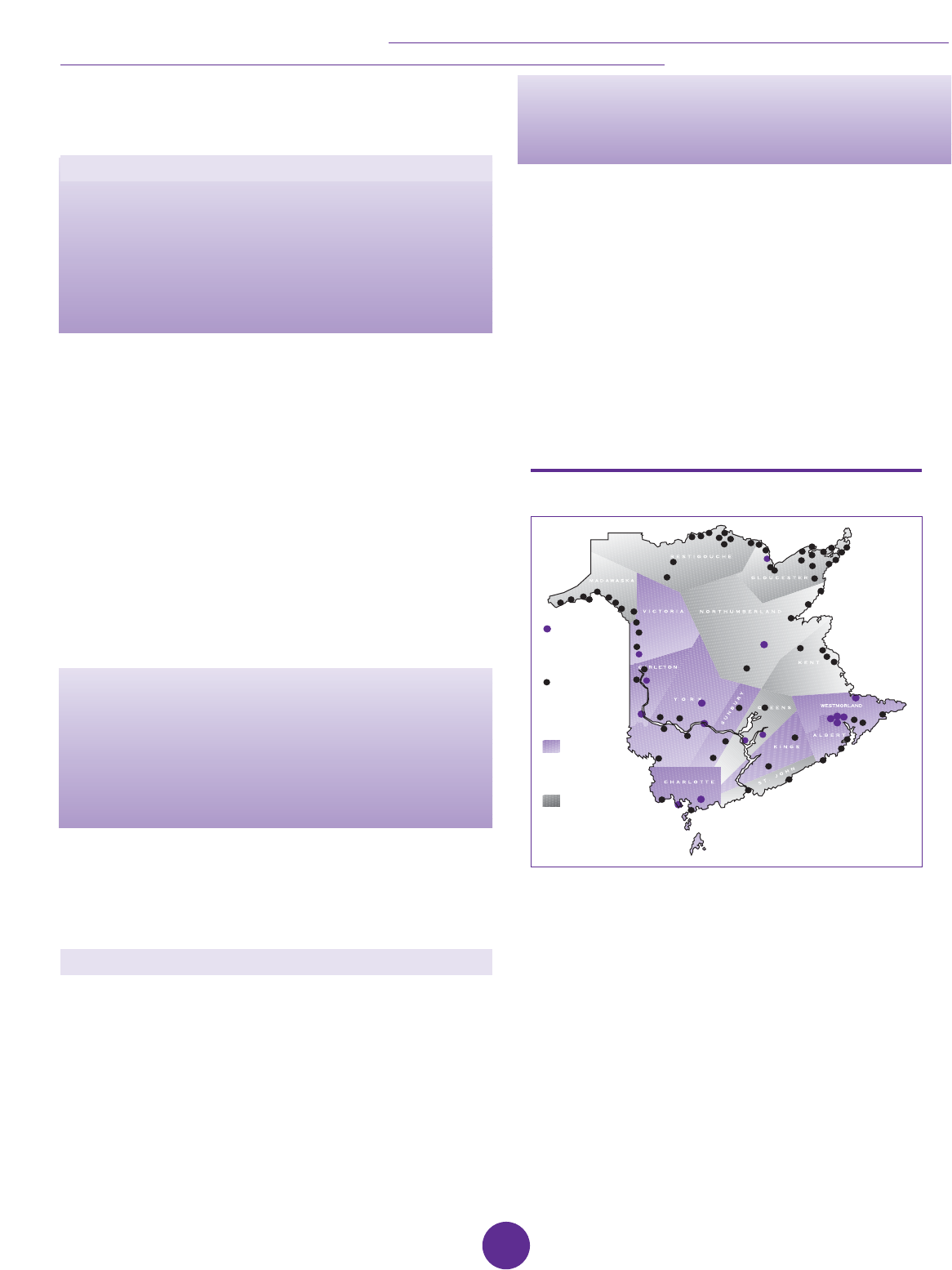
COMMISSION ON LEGISLATIVE DEMOCRACY
Drawing Electoral Boundaries in
New Brunswick
Mandate
To examine and make recommendations on the
principles and procedures to guide future changes
to New Brunswick’s electoral boundaries, including
the number of constituencies to be represented in
the Legislative Assembly, that will be referred to a
Representation and Electoral Boundaries
Commission.
Electoral districts are the basic building blocks of our
representative democracy in New Brunswick. It is within
each electoral district, or riding, that the essential
democratic contest occurs between candidates, parties, and
among voters. It is within each electoral district that the
basic democratic franchise - the vote - is exercised. And it is
from each electoral district that candidates for the Legislative
Assembly are elected or defeated, as the most direct
expression of voters’ choices we have.
Clearly, electoral district boundaries matter. The number,
size, shape, and constituent parts of electoral districts are
significant factors in determining who represents our
interests, and governs our province. Dr. Munroe Eagles of
the University of Buffalo, the Commission’s academic expert
on electoral boundaries, put it this way in his original
research paper:
“Their characteristics, along with those of their
residents, define the representational relationship
between electors and politicians. The nature of
electoral districts comprising an electoral system -
and the criteria used in their determination -
profoundly shape the kind of political interests that
are given privileged expression in the political
process.”
Having a fair and effective electoral boundary drawing
process in New Brunswick is therefore a crucial element to
providing effective representation to citizens and free and
fair electoral outcomes.
The New Brunswick Situation
Today, New Brunswick is the only province in Canada not
to have an independent, regular electoral boundary
drawing process set out in legislation to change the number
of MLAs or set new electoral boundaries for each
constituency. Past boundary changes and the principles
guiding them have been decided on an ad hoc basis. All
other provinces and the federal government have passed
laws setting out how and when electoral boundaries are
redrawn. A comparison of boundary drawing legislation
across Canada considered by the Commission may be
found in Background Appendix “IV”.
“ Electoral boundaries drawing should be revised
regularly to reflect the shifting population,”
Community Leaders Roundtable, Moncton, May
2004.
New Brunswick’s electoral boundaries are set out in the
Elections Act. Previously, the government established a
Representation and Electoral Boundaries Commission to
review current boundaries, consult the public, and
recommend changes. A Select Committee of the legislature
then reviewed the Commission’s recommendations.
Amendments to the Elections Act were subsequently
introduced to formally set out the boundary descriptions and
make the changes official.
The last time electoral boundaries were changed in our
province was just prior to the 1995 election. Three elections
have therefore been held under the current boundaries.
Since then some obvious population shifts have occurred
across the province as can be seen in the maps below.
These population shifts have led to some significant
variances in the size of ridings in the province. Whereas in
1995, two ridings had a variance of +/- 25 percent or
greater from the provincial average, by 2003, six ridings
did. Currently, 22 ridings have population variances of +/-
15 percent or greater. The map on the next page indicates
the current situation.
Population Growth and Out Migration
Population
decrease
by county
1991-2001
Population
increase,
by county
1991-2001
Municipal
Growth
2 per cent +
1996-2001
Municipal
Out migration
2 per cent +
1996-2001
50
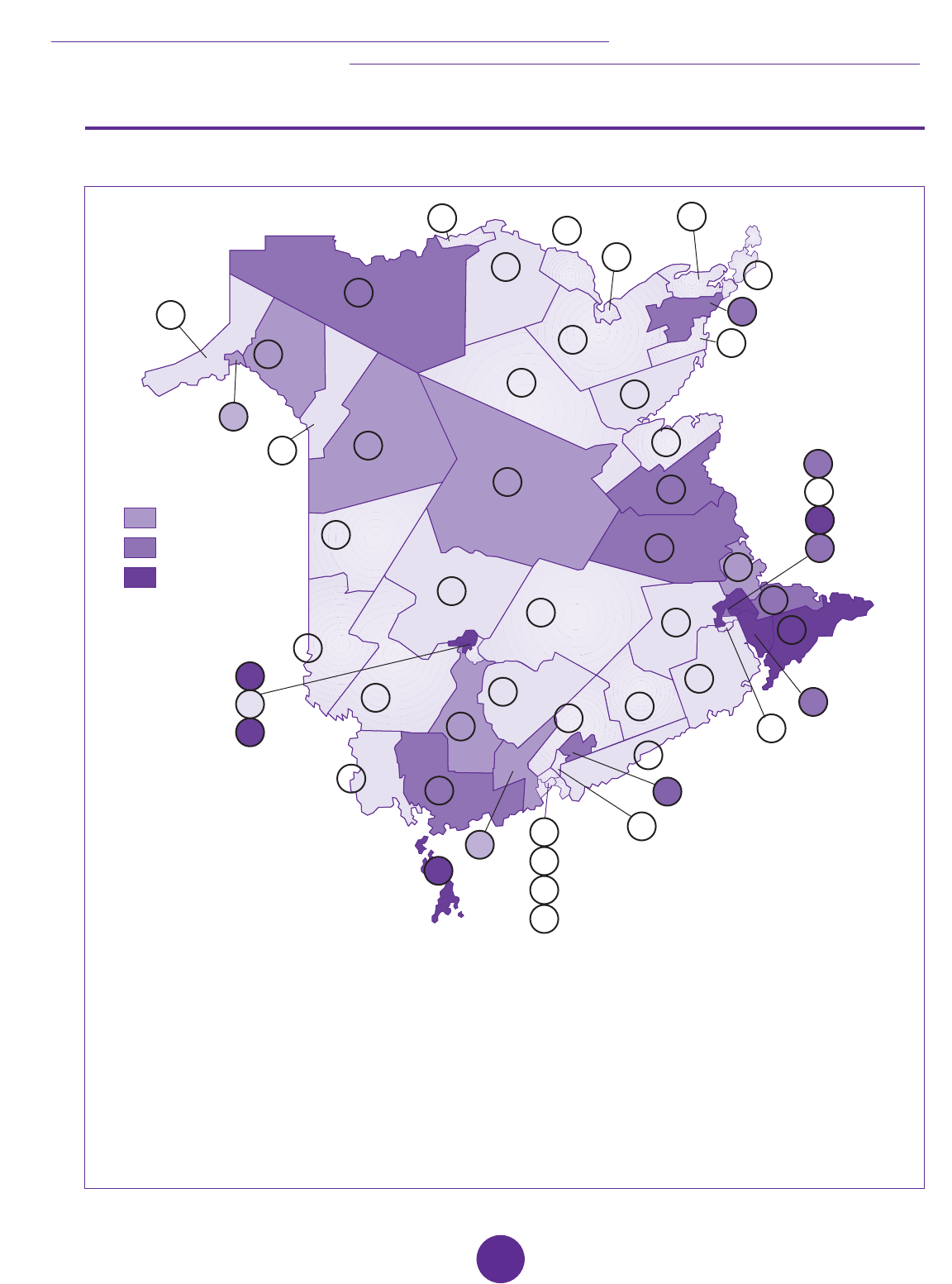
FINAL REPORT AND RECOMMENDATIONS
51
Variations
9349
10539
10234
9517
9889
7979
9990
16718
13777
11847
12545
14260
12597
10965
10003
9768
10489
10524
4057
14096
10917
13744
8796
9070
+/- 15 %
+/- 20%
+/- 25 %
3
1
6
2
4
5
7
8
10
9
11
12
13
14
15
16
17
18
19
20
25
26
27
28
32
42
41
48
47
46
29
31
40
38
37
51
50
49
55
54
53
52
30
36
35
34
33
23
24
22
21
43
44
45
8158
9219
9864
9050
10219
10190
8505
8003
8146
12378
12839
7602
9080
11897
8871
9882
11188
9240
8453
7929
9167
11791
9340
11923
10601
10971
10906
10258
8315
9127
8298
39
Riding Variances from Provincial Average, 2003 Election
Source: Office of the Chief Electoral Officer
1 Restigouche West
2 Campbellton
3 Dalhousie-Restigouche-East
4 Nigadoo Chaleur
5 Bathurst
6 Nepisiguit
7 Caraquet
8 Lamèque-Shippagan-Miscou
9 Centre-péninsule
10 Tracadie-Sheila
11 Miramichi Bay
12 Miramichi-Bay du Vin
13 Miramichi Centre
14 Southwest Miramichi
15 Rogersville-Kouchibouguac
16 Kent
17 Kent South
18 Shediac-Cap-Pelé
19 Tantramar
20 Dieppe-Memramcook
21 Moncton East
22 Moncton South
23 Moncton North
24 Moncton Crescent
25 Petitcodiac
26 Riverview
27 Albert
28 Kings East
29 Hampton-Belleisle
30 Kennebecasis
31 Saint John Fundy
32 Saint John Kings
33 Saint John Champlain
34 Saint John Harbour
35 Saint John Portland
36 Saint John Lancaster
37 Grand Bay-Westfield
38 Charlotte
39 Fundy Isles
40 Western Charlotte
41 Oromocto-Gagetown
42 Grand Lake
43 Fredercton North
44 Fredericton Fort Nashwaak
45 Fredericton South
46 New Maryland
47 York
48 Mactaquac
49 Woodstock
50 Carleton
51 Victoria-Tobique
52 Grand Falls
53 Madawaska-la-Vallée
54 Edmundston
55 Madawaska-les-Lacs
Average 10238

COMMISSION ON LEGISLATIVE DEMOCRACY
52
In the 1995 election, the average deviation in constituency
electoral size above or below the provincial average was
10.9 percent; by the time of the 2003 election, the average
deviation had grown to more than 15 percent.
Today, the average constituency size in New Brunswick is
10,238 voters. Constituency sizes range from a high of
16,718 voters in Dieppe-Memramcook to a low of 4,057
voters in Fundy Isles. The largest riding in the province is
therefore four times as big as the smallest. In such cases, the
value of one vote in smaller ridings is effectively worth more
in electing an MLA than one vote in larger ridings. Since all
votes should count as equally as possible in electing MLAs,
the variance in population sizes between ridings is an
important indication of the need to redraw boundaries on a
regular basis to account for changing population realities.
What New Brunswickers Said
Having an independent boundary drawing process was
cited strongly by respondents to the Commission’s
questionnaire. This was preferred over a committee of
MLAs.
Respondents also indicated that it is important that electoral
boundaries be based on shared services, shared language
and culture, matching community boundaries, and contain
an equal number of voters. Matching provincial riding
boundaries with federal boundaries or having a shared
economic base was cited as much less important.
“The problem that I have with restructuring
boundaries is that often language, culture, common
areas of interest and issues, as well the preservation
of important infrastructures, is not included in the
thought process,” Public Hearing, Bathurst, June
2004.
“A boundary commission should be established
every 10 years, and impose redistribution
according to local needs and demographics,”
Public Hearing, Fredericton, June 2004.
“Ridings and regions must take into account
communities of interest and linguistic communities,”
submission by the Société des Acadiens et
Acadiennes du Nouveau-Brunswick, October 2004
Boundary Drawing Principles
Boundary drawing processes across Canada have been
reinforced and clarified based on important legal rulings
and interpretations of the Canadian Charter of Rights and
Freedoms by the Supreme Court of Canada. Some of these
rulings have affected New Brunswick directly. Two key
principles have been established in case law that need to
be considered in drawing electoral boundaries in New
Brunswick. These include:
• Representation by population/Equality of
voting power - The population of each electoral
district in New Brunswick should be as close as
possible to an average population per district. This is
crucial to ensure that the weight of a vote in one
electoral district is equal to that of a vote in another
electoral district. As stated by the Chief Justice of the
Supreme Court of BC as she then was, Beverley
McLachlin, in Dixon v. British Columbia (Attorney
General): “The concept of representation by population
is one of the most fundamental democratic guarantees.
And the notion of equality of voting power is
fundamental to representation by population.”
• Effective representation - While equality of voting
power is the primary principle, deviations from
population equality may be justified if they contribute
to effective representation of the population leading to
better government of New Brunswick as a whole.
Within these two principles, deviation from population
equality may be allowed to ensure effective representation.
Deviation factors may include, but are not limited to:
• Communities of interest - it is important that
communities sharing a linguistic, cultural or historic
identity be kept together in an electoral district.
• Geographic factors - natural boundaries and the
accessibility of certain areas of the province to other
areas should be considered and respected.
Unimportant
Not that important
Neutral
Somewhat important
Very important
Electoral districts
have equal # of voters
Shared language,
culture, etc.
Shared services
Comm & dist
boundaries match
Shared economic
base
Provincial & federal
boundaries match
0
5
10
15
20
25
30
35
40
45
50
Source: Commission on Legislative Democracy
How important are the following electoral
boundary statements to you?
in per cent, based on an average of 328 respondents

• Percentage deviation allowed - this number should be
large enough to allow for flexibility but not so large
that significant variances between riding sizes develop,
thereby diluting the value of individual votes around the
province.
Similarly, several key principles governing the actual
process of drawing boundaries have emerged that must be
taken into account. Any boundary drawing process should
be:
• Independent of political parties.
• Fair to political parties and voters.
• Non-partisan in how it operates.
• Open to New Brunswickers to participate.
It is for these reasons that the Commission believes that a
made-in-New Brunswick boundary drawing act and process
are required.
Considerations for a Representation and
Electoral Boundaries Act
In determining the procedures and principles for drawing
electoral boundaries in New Brunswick, the Commission
considered a comprehensive range of issues and factors.
These included the processes established by other provinces
and the federal government; key legal principles which must
be taken into account; the most recent provincial and
federal New Brunswick boundary drawing experiences; as
well as the unique realities and circumstances that make up
New Brunswick. The Commission believes that while we
must take into account the broader Canadian context and
legal requirements, we must apply these to our own
priorities, values, and needs.
The Commission is guided by the need to frame any such
principles and procedures in a proposed Representation
and Electoral Boundaries Act. A statute is a fundamental
component of ensuring a regular and independent
boundary drawing process. This means focusing on two
main components that should form the basis of any such
Act:
1. The guiding principles and considerations that make up
the formation and terms of reference of a
Representation and Electoral Boundaries Commission;
and
2. The process by which a commission should consider
boundary changes and consult the public.
To assist us in this process, the Commission sponsored a
Roundtable on Electoral Boundaries at UNB Law School on
April 28, 2004, with leading academic and other experts
to discuss boundary drawing issues in New Brunswick and
across Canada. The main issues that emerged are as
follows:
• Timing of redistributions - how often and on what
basis should boundaries be redrawn?
“New Brunswick needs its boundaries revised every
ten years, “ Community Leaders Roundtable,
Shippagan, May 2004.
Redistributing electoral districts and drawing electoral
boundaries at regular intervals is important to take account
of population shifts leading to variances in riding size and
the changing composition of our population. Two
possibilities exist: redistribution could be held after every
two elections or after every decennial (10-year) census. The
Commission considers that it would be better to redraw
boundaries on the basis of accurate population figures
emerging from a decennial census. This timing would ensure
that new boundaries would be in place in time for every
third election, which is a reasonable period to allow for
population changes.
• Composition of a Commission - how should a
Representation and Electoral Boundaries Commission
be appointed, and who should be eligible to be
appointed to such a commission?
Electoral boundaries should be drawn to reflect population,
community, and representational interests, not to reflect
political party interests. A boundary commission’s
composition is therefore a key assurance of its
independence. In New Brunswick, it is also necessary to
reflect the realities of the two official linguistic communities.
Composition should also take into account the specific
legal, political, academic, and community expertise needed
by the commission to do its work. Involving the legislature in
choosing members will foster multi-party support for the
commission and its work.
We believe that a future Representation and Electoral
Boundaries Commission should be composed of five
persons: two co-chairs, one from each official linguistic
community, and three other members. The co-chairs should
be independent with no affiliation with any political party.
No other member may be serving as an MLA, Member of
Parliament or Senator. All members should be approved by
a two-thirds vote of the legislature. Five persons are
necessary to give the Commission the appropriate balance
and perspective, as well as to lessen the prospects of a
minority report, which has occurred under the three-person
federal boundaries commission model.
• Terms of Reference of a Commission - what
specific principles and considerations should guide the
work of a commission?
The terms of reference of a commission will determine what
factors it must consider when drawing electoral boundaries.
Statutes across Canada are usually framed around the core
legal principles of representation by population, equality of
voting power, and effective representation. These guiding
principles also provide the framework for allowing any
deviations from population equality among ridings. Since
FINAL REPORT AND RECOMMENDATIONS
53

COMMISSION ON LEGISLATIVE DEMOCRACY
these principles will be set out in law, they provide an
important avenue of appeal for affected citizens, should
disputes arise. The terms of reference will also allow a
commission to consider “New Brunswick-specific” issues
above and beyond the core legal principles that we share
as Canadians.
The Commission believes that comprehensive and specific
terms of reference should be set out in a new Representation
and Electoral Boundaries Act. These terms of reference
should reflect the core legal principles for boundary
drawing of representation by population/ equality of voting
power and effective representation. In applying these
principles, a commission should be required to take into
account specific other factors unique to New Brunswick such
as community of interest, representation of both official
linguistic communities, rural representation challenges,
population growth, and existing municipal and
administrative divisions. Deviation in riding size should
normally be allowed up to + /- 15 percent, and up to +/-
25 percent only under exceptional circumstances.
• Public Hearings - how and when should a
commission seek public input on new boundaries?
Gathering public input is an essential part of any boundary
drawing process. It allows individuals and communities to
speak to the representational issues and requirements they
feel most important to them. As drawing boundaries can
sometimes be contentious, it is important to give the public
sufficient opportunity to provide their views and have them
considered.
The Commission believes that two sets of public hearings
should be conducted by a representation and electoral
boundaries commission: one set before a preliminary report
and proposed map is prepared, and a second set based on
the proposed map so the public can view exactly what
changes are being proposed. This two-step process will
maximize public input and allow citizens and communities
ample opportunity to put their views forward.
• Final Authority - who should have the final say on
the new boundaries - the legislature or the commission
itself?
Granting final authority on any boundary changes to the
commission itself would ensure the full independence of a
boundary commission. It would, however, remove MLAs
from a process that fundamentally affects them and the
people they are elected to represent. Our elected
representatives bring an important and realistic perspective
to representing citizens and this should be factored into any
final determination of electoral boundaries. The most recent
New Brunswick boundary drawing process involved MLAs
at the final stage and produced what is widely considered
to be a fair electoral map. Having independent co-chairs,
as we recommend, will mitigate against any political
influences, as well.
The Commission believes that since the legislature is
ultimately sovereign, it is important to grant our MLAs the
final authority in determining any boundary changes. Such
authority should be limited, however, to making only minor
adjustments to a proposed map within a defined time
frame. The legislature should not be allowed to redo,
rewrite or veto the work of the independent Representation
and Electoral Boundaries Commission.
A specific legislative committee process conducted in public
would be required to allow for any objections by MLAs to
the recommendations of a boundaries commission to be
considered. This committee would have equal representation
between government and opposition parties. Finally, there
would be a requirement for a two-thirds vote in the
Legislative Assembly for any amendments to the final report
of the boundaries commission to reinforce the need for multi-
party support.
Drawing Boundaries for a Mixed Member
Proportional Voting System
Under the Commission’s proposed regional MMP model, a
representation and boundaries commission would be
required to first draw the boundaries of the 36 single
member ridings and then group these into four
approximately equal size regions with five list PR seats
each. As the issues of boundary drawing set out above are
valid for any electoral system, the Commission believes the
principles and procedures contained in its proposed
Representation and Electoral Boundaries Act could serve as
the basis to draw boundaries for the NB MMP voting system
as well.
Number of MLAs
“Our population does not merit having 55 MLAs, I
propose 53 for the present.” Your Turn!
questionnaire, Spring/Summer 2004.
The number of MLAs in New Brunswick has been reduced
gradually over the past 35 years. Currently, New Brunswick
has the third smallest size ridings in Canada based on
population, after PEI and Newfoundland and Labrador.
The Commission heard quite divergent views on whether the
current number of MLAs is too many or too few. Some
thought the size of our population warranted a reduction in
MLAs, while others worried about the need for our elected
officials to be close to the people they represent.
The Commission believes that the size of the legislature
should not be reduced if New Brunswick decides to adopt a
new regional mixed member proportional voting system. In
fact, the Commission’s proposed model would work best if
the legislature increased by one seat to 56: 36 single
member seats and 20 list PR seats. This would allow for
approximately equal size regions and ensure no diminution
of representation now enjoyed by communities and regions
around the province. It would also allow the proposed 36
54

single member ridings to be small enough for voters to
receive effective representation from their MLAs.
Should New Brunswick retain the current single member
plurality system, then the Commission believes that the size
of the Legislature should be approximately 55. Significantly
lower than this number would impact on the effective
operation of the House and its committees.
“(55) might be too high, but if we take the number
down, people might feel removed from their MLA.”,
“Your Turn” questionnaire, Spring/Summer 2004.
Recommendations
The Commission on Legislative Democracy recommends the
following principles and procedures to guide future changes
to New Brunswick’s electoral boundaries:
Recommendation 1
That a Representation and Electoral Boundaries Act be
adopted to establish a regular and independent process to
guide redistributions and changes to electoral boundaries in
the province.
Recommendation 2
That the following elements be included in a Representation
and Electoral Boundaries Act:
2.1 Timing of Redistributions - would follow every
decennial census.
2.2 Appointment of a Representation and
Electoral Boundaries Commission - A five
member commission composed of two co-chairs, one
from each official linguistic community, who are
independent of political parties, along with three other
members who are not currently MLAs, MPs or Senators,
would be appointed on a two-thirds vote of the
Legislative Assembly.
2.3 Terms of Reference of Commission - A
Commission would:
1) Recommend readjustments to the boundaries of
electoral districts in the province based on the
principles of representation by population, equality
of votes, and effective representation of electors.
2) Be permitted to deviate from the quotient for each
electoral district by no more than 15 percent, plus
or minus, with a deviation of up to
25 percent, plus or minus, in exceptional
circumstances.
3) Take the following into consideration when drawing
boundaries: communities of interest; representation
of New Brunswick’s two official linguistic
communities; geographic considerations, including
the accessibility, size and shape of a region of the
province; existing municipal and other
administrative boundaries; rate of population
growth of any part of the province; and the
challenges of representing rural areas.
2.4 Public Hearings – A Commission would be required
to hold two sets of hearings to allow for substantial
public input by New Brunswickers: one before a
preliminary report and proposed map of boundary
changes is prepared, and one on the proposed map of
boundary changes.
2.5 Final Authority – To reside formally with the
Legislative Assembly. A Committee of the legislature
could consider any amendments proposed by MLAs to
the final report of a Commission. Any amendments to
the Commission’s final report would require a two-
thirds vote of the Legislative Assembly.
Recommendation 3
That the same principles and procedures of a
Representation and Electoral Boundaries Act be applied to
draw boundaries for a new regional, mixed member
proportional representation electoral system for New
Brunswick.
Recommendation 4
That the policy framework for a Representation and
Electoral Boundaries Act for New Brunswick contained in
Recommendation Appendix “A” be considered as a
proposed framework for a new Act.
Recommendation 5
That the number of MLAs in the legislature be increased to
56 under the proposed regional mixed member
proportional representation system. That the number of
MLAs under the current single member plurality electoral
system be approximately 55.
FINAL REPORT AND RECOMMENDATIONS
55

COMMISSION ON LEGISLATIVE DEMOCRACY
A Fixed Election Date for
New Brunswick
Mandate
To examine and make recommendations on
instituting fixed election dates for provincial general
elections while proposing a fixed election date and
procedures best suited for our province.
“A four-year guaranteed term is a step in the right
direction”, participant, Bathurst Public Hearing,
October, 2004.
Election day is the culmination of our democratic process. It
marks simultaneously the end of one electoral cycle and the
beginning of another. On this day, citizens choose their
representatives, their government and opposition, and the
policies and directions that find most favour with them. And,
on this day of decision, citizens effectively choose whether
to participate in the democratic process by voting, or not.
When elections are held - the day, the month, the year - can
have a significant impact on voter participation and turnout.
Some times of the year are busier and more inconvenient
than others for voters. Summer or winter or holiday periods
will find voters on vacation or otherwise away from their
place of residence where they would normally vote. The
timing of an election can also affect the participation of
election workers needed to staff polls, act as scrutineers, or
enumerate voters.
Election timing has another important impact: on credibility
and trust. The choice of an election date is often seen by
voters as a source of political manipulation by political
leaders and parties. This has the effect of increasing
cynicism about the political process and contributing to a
lack of confidence in many facets of our democracy.
For all these reasons, the Commission believes that adopting
fixed election dates in New Brunswick is necessary. We
believe in doing so that New Brunswickers will be taking a
concrete step towards restoring political trust in our
province.
The Basis of Election Dates in New Brunswick
& Canada
The timing of elections is traditionally the prerogative of the
Premier. Under our Westminster or British parliamentary
system the only legal constraint on when elections must be
held is the length of term of the legislature in question. In
New Brunswick and elsewhere in Canada, the term of a
legislature cannot extend beyond five years. The New
Brunswick Legislative Assembly Act states:
2(1) The present and every future Legislative Assembly of
this Province shall, subject to the provisions contained in
subsection (2), continue for five years from the day of the
issue of the writ for choosing the same, unless sooner
dissolved by the Lieutenant-Governor; and no Legislative
Assembly of this Province shall be affected by the demise of
the Crown.
In other words, the term of a legislature cannot extend more
than five years, plus the length of the election writ period.
But as to the exact timing of when that election must be
held, our election law is silent. This means, for all intents
and purposes, that an election can be called at any time
during this five-year period.
The Prerogative of the Lieutenant-Governor
There is an additional legal and constitutional factor to be
considered in the setting of a fixed election date: the
prerogative of the Lieutenant-Governor, as the Queen’s
representative, to formally dissolve a legislature and issue
the writs of election. This power of dissolution forms part of
the constitutional convention of election law in Canada,
again as an inheritance of our British parliamentary system.
In practice, the Lieutenant-Governor dissolves a legislature
on the basis of a formal request by the Premier, in the form
of “advice.” As Dr. Don Desserud of UNBSJ, the
Commission’s academic expert on fixed election dates,
stated in his original research paper:
“Responsible government dictates that the governor
general or lieutenant-governor will only dissolve the
legislature if so requested to do so.”
Under our system of responsible government, governments
govern only when they have the confidence of the
legislature. A majority vote of non-confidence in the
government by MLAs, such as on a budget, would require
the government to resign. At that time, the Lieutenant-
Governor would in almost every circumstance dissolve the
legislature and issue the writs of election. That this would be
done on the advice of the Premier does not detract from the
principle that only the Lieutenant-Governor can legally
initiate an election.
In practice in New Brunswick, the Lieutenant-Governor has
never refused to act upon the advice of the Premier to
dissolve the legislature and hold an election. The power to
call an election has, therefore, accrued directly and fully to
the Premier.
Historically, elections in New Brunswick have been held on
average every 48.3 months, or four years, since 1785.
Only once in the past 65 years has the government of the
day gone the full five-year mandate - in 1987. Elections
have been held in New Brunswick in almost every month of
the year, but most often in either the spring or fall. The most
popular months for holding elections have been June (14
times) and October (11 times).
56

In fact, New Brunswick already has fixed election dates for
municipal elections as well as for District Education Council
(DEC) and Regional Health Authority (RHA) positions. These
take place every four years on the second Monday in May.
As noted, the average time span between elections is almost
exactly four years or, put another way, the average
electoral term for a government is four years. This has
become the accepted norm. A fixed election date that set a
fixed electoral term of four years would thus be consistent
with current practice.
The choice for citizens, therefore, is between an open-ended
provincial general election date called at any time by the
Premier within a five-year term, or a fixed election date that
sets regularized election dates based on a four-year cycle,
which has become the accepted norm for the electoral life
of a government.
An open-ended election date really means that the Premier
of the day can call an election at any time he or she deems
fit. That is exactly what happens. An election will be called
at a certain time for a certain date because that is usually
viewed as the most politically advantageous time to hold an
election for the governing party. This has become a
contributing factor to heightened voter cynicism about the
democratic process.
What New Brunswickers Said
“L’AFMNB thinks that this particularity of our
Westminster parliamentary system is not relevant in
today’s world and does not reflect the needs and
values of a more equitable and democratic system
as requested by New Brunswick’s citizens,”
Submission, Association francophone des
municipalités du Nouveau-Brunswick, October
2004.
Increasingly, the majority of New Brunswickers no longer
accept this way of doing business. Setting a specific
constraint on the current open-ended political and legal
prerogative of the Premier to call an election at his or her
discretion is viewed as a reasonable limitation on an
arbitrary form of political self-interest that puts parties ahead
of voters. Repeatedly, New Brunswickers told the
Commission that they favoured a fixed election date and
term for their legislature and government. They see it as
more democratic, transparent, and fair to all political
parties.
Responses to the Commission’s questionnaire and website
also showed strong support for legislating four-year fixed
election dates in the province.
Advantages to a Fixed Election Date
“Fixed election dates would allow people who do
not have the financial ability or time availability to
start to make arrangements to be able to run. It
would make it easier for women in particular to
run,” Participant, Saint John Community Leaders
Roundtable, May 2004.
There are many advantages to setting a four-year fixed
election date for provincial general elections in New
Brunswick:
• Citizens would be better able to plan to participate or
involve themselves in the elections process - as voters,
as candidates, and as volunteers for political parties.
• Women candidates, in particular, would be better able
to plan and organize their time to run as candidates
knowing the exact date of the election.
• Particular groups of voters, such as seniors and
students, who are most affected by when an election is
held, would not be effectively disenfranchised by an
inconvenient election date.
• By knowing the actual election date, all New
Brunswickers could judge the actions of governments
and political parties knowing that an election was
forthcoming.
• Elections planning, such as preparing an up-to-date
voters list through an earlier enumeration, hiring and
training staff, and producing elections materials by the
Chief Electoral Officer, would be made simpler and
more efficient.
• Political parties would be in a better position to attract
qualified candidates willing to serve as MLAs, knowing
that they could better plan their career and personal
lives around the certainty of when an election was
coming.
Yes No
0
10
20
30
40
50
60
70
80
Source: Commission on Legislative Democracy
77.5%
Are fixed election dates every four years a good
idea for New Brunswick?
22.5%
in per cent, based on 324 respondents
FINAL REPORT AND RECOMMENDATIONS
57

COMMISSION ON LEGISLATIVE DEMOCRACY
• Legislative sessions and the work of MLAs could be
better organized around the certainty of a fixed
election date.
• By-election dates could now take place on a reduced
time frame from the vacancy occurring, knowing
exactly when the general election date is going to be,
ensuring citizens do not go an unreasonable time
without legislative representation.
• The length of the actual election campaign could now
be standardized and reduced as the necessary
preparatory work by the Chief Electoral Officer could
now take place in advance.
Getting to a Fixed Election Date
There are several specific questions and issues that must be
addressed when deciding a fixed election date for New
Brunswick.
“A fixed date every four years, in the Spring or the
Fall, seems to be the better choice. However, it seems
to us that provincial elections should not be held at the
same time as others in order to avoid that the latter
become less important,” Submission, Association des
enseignants et enseignantes francophones du
Nouveau-Brunswick, September 2004.
First, timing. When should elections be held in the
province?
Spring and fall are the only viable options. Views and
comments provided to the Commission preferred both times.
As noted, New Brunswick has experienced elections during
both periods. Two key factors should be taken into account:
first, municipal, DEC, and RHA elections are already held in
the spring in May and avoiding a conflict is desirable;
second, student participation, which is already lower than
the provincial average, could be affected by having an
election at the close of the university year when students are
preoccupied with exams or are in the process of moving,
making it difficult for them to be enumerated in either their
home riding or at their university location.
For these reasons the Commission believes a fall election
date would be better. New Brunswickers are comfortable
voting in the fall, the weather is usually accommodating,
there would be no conflict with local governance elections
in the spring, and the possibilities of turnout would likely be
greater.
“Fixed election dates would be preferable in the
Fall,” Community Leaders Roundtable, Shippagan,
May 2004.
Second, legislation. Is new legislation required to set a
fixed election date for New Brunswick?
Getting to a fixed election date is relatively straightforward.
A whole new act would not be required. It would simply
require amendments to existing legislation, setting out a
specific date for holding elections in the future. The
Legislative Assembly Act and the Elections Act are the
governing pieces of legislation for the length of a Legislative
Assembly’s life and conduct of elections in New Brunswick.
They would need to be amended to set out the date for the
next general election, the process for dissolving the
legislature, and provisions around holding subsequent
elections.
Third, the powers of the Lieutenant-Governor. Can
the constitutional authority of the Lieutenant-Governor to
dissolve the legislature and issue the writs of election for
any date be fettered?
There is no need to amend the Constitution or formally
affect the powers and authority of the Lieutenant-Governor
to establish a fixed election date. Legislation could simply
require the Premier to formally advise the Lieutenant-
Governor to dissolve the legislature for a certain date every
four years, thereby preserving the formal prerogatives of the
Lieutenant-Governor. This would create a clear political
imperative on the part of the Premier to adhere to the fixed
election date schedule. The Commission believes this can be
accomplished by appropriate wording in a fixed election
date amendment to the Legislative Assembly Act.
Fourth, non-confidence elections. What would
happen to the fixed election date if an election were held
before the next fixed date, such as in the spring, due to a
vote of non-confidence in the legislature?
Providing for such an eventuality in the fixed election date
legislation would preserve the formal authority of the
Legislative Assembly to determine if a government has the
confidence of its members. The fixed election date “clock”
would simply be re-set so that the next election would take
place four years later at the fixed date.
Fifth, ongoing election campaigns. Would a fixed
election date result in parties campaigning earlier and for a
longer period?
There is a demonstrable rise in political rhetoric and
activities in the run-up to a possible election, all of which is
covered by the media at present. Instead of “guessing
game” stories as to when the Premier will call an election,
this would be replaced by demands for all leaders and
parties to provide their platforms and responses to issues
sufficiently in advance of the known election date for voters
to consider. Parties are already limited by the Political
Process Financing Act to nominal non-election period
advertising spending of $35,000 in any one year. The
Commission believes this provision should remain.
58

Other Provinces
New Brunswick is not alone in considering a fixed
provincial general election date. British Columbia has
passed legislation setting its fixed election date for May 17,
2005. The Ontario legislature has a bill before it that would
set the next provincial election for October 4, 2007.
Newfoundland and Labrador is about to consider a fixed
election date bill. The Commission has studied carefully the
legislative provisions of these and other jurisdictions in
making its own recommendations.
It’s Time for Fixed Election Dates
“The FÉÉCUM is in favour of fixed election dates.
When elections are called in the Summer, we are
not able to act and motivate young people to vote.
In the Fall, our membership is on campus and we
could produce awareness campaigns, in
partnership with Elections New Brunswick, in order
to motivate youth to vote. “ Submission, Fédération
des étudiants et étudiantes de centre universitaire
de Moncton, October 2004.
The Commission believes fixed election dates are an idea
which most New Brunswickers are ready for and support.
New Brunswickers deserve to know in advance when an
election is being held so they can weigh their vote
accordingly. A fixed election date would help restore
confidence and trust in the political process. By removing
the absolute authority over the timing of elections from the
Premier and restoring it to the legislature and people
through legislation, citizens would come first.
The Commission believes that this departure from tradition is
far outweighed by the benefits and advantages set out
above. In fact, our recommendations go some distance to
preserving important elements of this tradition, including the
formal prerogative of the Lieutenant-Governor and the
possibility of non-confidence motions in the House leading
to an earlier election date.
The Commission also believes that voter participation will
likely be enhanced by a fixed date. Elections planning
would be smoother and more efficient.
Recommendations
The Commission on Legislative Democracy recommends the
following principles and procedures for the institution of a
fixed election date:
Recommendation 1
That a provincial election be held on a fixed date every four
years commencing Monday, October 15, 2007, and on the
third Monday of October every four years thereafter.
Recommendation 2
That the following policy framework be considered for an
amendment to the Legislative Assembly Act to establish a
fixed election date for New Brunswick:
(1) Nothing in this section affects the powers of the
Lieutenant-Governor, including the power to dissolve
the Legislative Assembly, at the Lieutenant-Governor’s
discretion.
(2) In order that a general election may be held on a fixed
date, as set out herein, every four years:
(a) The Premier shall advise the Lieutenant-Governor
that the Legislative Assembly be dissolved so that a
general election may be held on Monday, October
15, 2007, and thereafter, the Premier shall advise
the Lieutenant-Governor that the Legislative
Assembly be dissolved so that a general election
may be held on the third Monday of October in the
fourth calendar year following polling day in the
most recent general election.
(b) In the event that a general election is held after the
day on which this section receives Royal Assent and
before October 15, 2007, because of a dissolution
of the Legislative Assembly, the Premier shall advise
the Lieutenant-Governor that the Legislative
Assembly be dissolved so that a general election
may be held on the third Monday of October in the
fourth calendar year following polling day in the
most recent general election.
Recommendation 3
That the Elections Act be amended to establish a clear 28-
day election period.
Recommendation 4
That the Elections Act be amended to reduce the time period
for by-elections from one year to six months of a vacancy
occurring in the Legislative Assembly, unless the vacancy
occurs during the last calendar year of the legal life of the
Legislative Assembly (i.e. between January 1st and the third
Monday in October of the year of the next fixed date
election).
FINAL REPORT AND RECOMMENDATIONS
59

COMMISSION ON LEGISLATIVE DEMOCRACY
Boosting Voter Turnout &
Participation and Modernizing our
Electoral Infrastructure
Mandate
“To examine and make recommendations on
increasing voter turnout in provincial general
elections, particularly amongst young New
Brunswickers, and improving accessibility to the
electoral process in New Brunswick by modernizing
our electoral laws while reinforcing the democratic
rights and responsibilities of New Brunswickers to
vote.”
Voting is our most basic democratic expression. It is at the
heart of our democracy. Voting is the instrument by which
we choose who will represent us and who will govern us.
Strong voter turnout gives legitimacy to democratic
outcomes. It acts as an accountability measure on
governments and MLAs.
A healthy and vibrant democratic society begins with
participation by citizens. Voter turnout is therefore a key
barometer of democratic satisfaction. Voting must be
supported by a strong electoral infrastructure - laws and
procedures - not just to ensure free and fair elections, but to
encourage voter participation in the first place. In our
modern society, voters face many daily pressures and
conflicts that can distract from the need or responsibility to
vote when it comes to voting day. Some voters, such as
seniors and youth, face particular administrative obstacles
that make the voting system less accessible to them.
Voter Turnout & Participation in New
Brunswick Elections
Participation in provincial general elections in New
Brunswick is declining. Fewer people are voting overall,
and young people are voting at a lower rate than other
New Brunswickers. Disturbingly, as can be seen in the part
of Chapter 5 entitled Stronger Voices for Youth, there is little
evidence to suggest that as younger New Brunswickers age,
they will automatically start voting at a significantly higher
rate.
Turnout in the 2003 election was the lowest ever recorded
at just 69 percent. Twenty years ago, it was around 80
percent. The chart below indicates voter turnout in every
provincial election since 1967.
Voter participation is dropping across Canada, not just in
New Brunswick. With the exception of PEI, turnout in each
of the most recent federal and provincial elections has
dropped.
Low voter participation is not confined to provincial
elections. The most recent federal and municipal elections,
as well as the 2001 referendum, show an even lower level
of voter participation by New Brunswickers.
Nfld. P.E.I. N.S. N.B. Que. Ont. Man. Sask. Alta. B.C.
Canada
0
10
20
30
40
50
60
70
80
90
Source: Provincial and federal election offices websites
in per cent
84.86
Provincial participation rate across Canada
(most recent elections)
65.79
68.67
70.42
56.9
54.17
70.95
46
70.95
60.9
72.53
60
65
70
75
80
85
Source: Office of the Chief Electoral Officer
Percentage of voter turnout
Voter Turnout in New Brunswick Elections
1967 1970 1974 1978 1982 1987 1991 1995 1999 2003
60
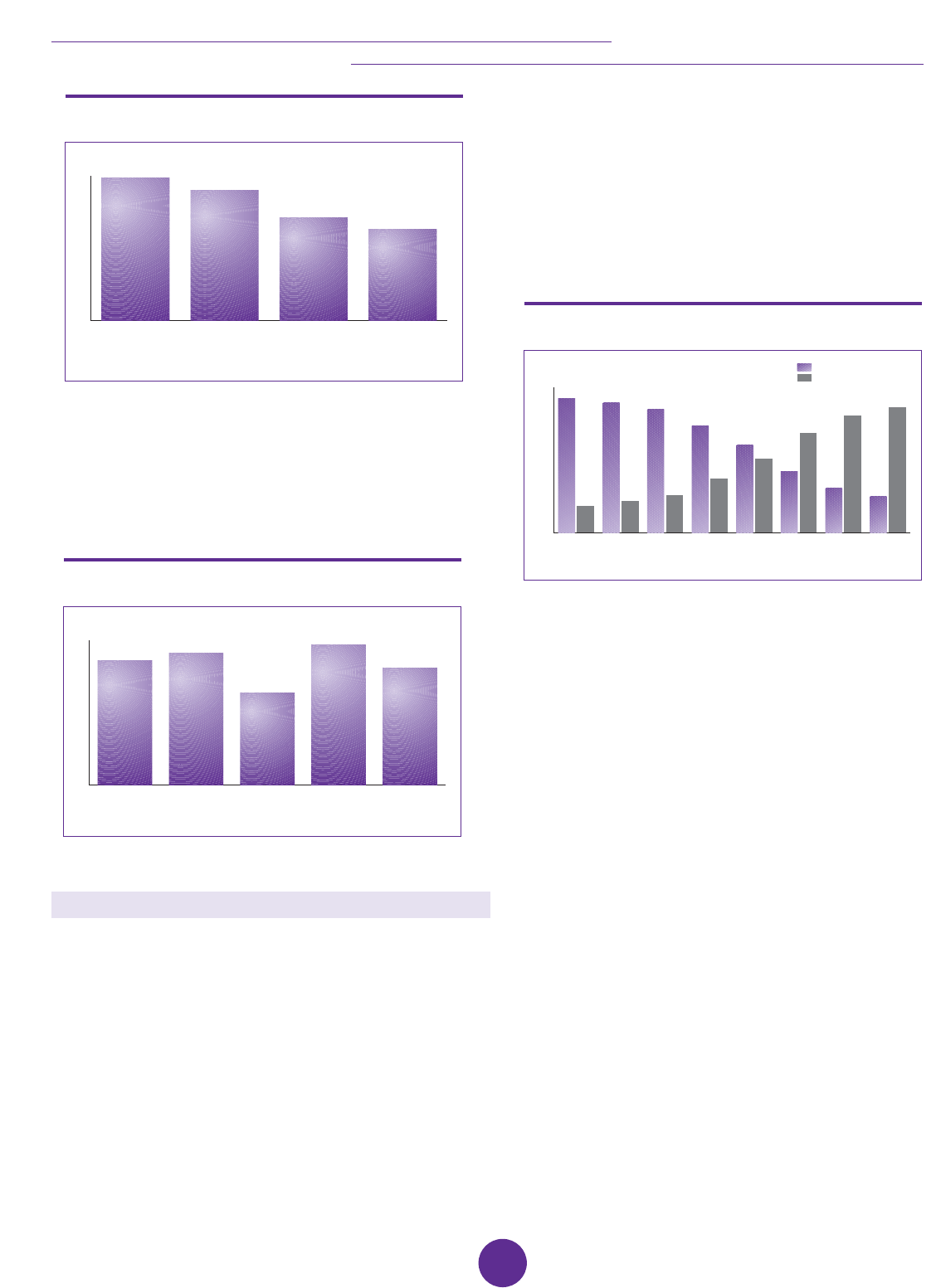
It is revealing that New Brunswickers vote at different rates
depending upon where they live. Based on the 2003
provincial election, voter participation is higher in rural
New Brunswick and in ridings with a predominantly
francophone population. This may suggest that, in fact, the
issue of voter turnout varies depending upon where people
live.
Who Votes? Who Doesn’t?
The most important indicators of voter participation are age,
education, and income. Other participation indicators are
knowledge of issues, leaders, and parties; civic literacy;
participation in volunteer and community organizations; and
a sense of civic duty. A profile of the most likely voter
therefore would be someone who is older, with a post-
secondary education, higher income, and involved in
community or volunteer associations.
The table contained in Background Appendix V, Voting
Participation – Ranked by Social Background, ranks
participation in the 2000 federal general election by a
range of social background factors including age,
education, generation, and gender. It cross-references each
factor with general interest in politics, knowledge, comfort
with online technology or the digital divide, and
membership in voluntary associations. It reinforces the
profile noted above.
Age is the most pronounced indicator of voting. Young
people vote at a lower rate than the Canadian average,
while seniors vote at a much higher rate than the Canadian
average. The chart below from the 2000 federal general
election study clearly illustrates this pattern.
Preliminary results from the 2004 federal general election
indicate a slight increase in youth voting from 2000.
No statistics are collected in New Brunswick on age or
demographic participation in voting during provincial
elections. However, original academic research conducted
for the Commission on youth participation indicates that in
the 2003 provincial election, turnout amongst 18-29 years
olds was around 50 percent, compared to the provincial
average of 69 percent.
In the past, many more Canadians voted due to a stronger
sense of civic duty. This was at a time when more
Canadians were members of political parties or, at least,
considered themselves as steady supporters of a party at
election time. Fewer Canadians are members of political
parties today and identification or attachment with one
party or another has significantly declined.
New Brunswickers are no more likely to belong to a
political party than other Canadians. Overall political
engagement by New Brunswickers, when measured on a
range of activities, is also no higher than other Canadians,
as a recent Statistics Canada survey shows.
Did Not Vote
Voted
68+ 58-67 48-57 38-47 30-37 25-29 21-24 18-20
0
10
20
30
40
50
60
70
80
90
Source: Jon H. Pammett, Lawrence LeDuc, Explaining the Turnout Decline in Canadian
Federal Elections: A New Survey of Non-Voters (Elections Canada, March 2003)
in per cent
Voter Turnout by Age Group -
2000 Federal Election
Average Rural average Urban average Francophone
average
Anglophone
average
0
10
20
30
40
50
60
70
80
Source: Office of the Chief Electoral Officer
in per cent
68.67%
Comparison of Voter Participation Rates
by Category, 2003 Election
72.74%
62.12%
77.34%
64.65%
2003 Provincial
Election
2004 Federal
Election
2004 Municipal
Election
2001 Referendum
0
10
20
30
40
50
60
70
Source: Office of the Chief Electoral Officer and Elections Canada
* for municipalities that had an election
in per cent
69%
Comparison of voter participation rates across
various elections in New Brunswick
49.5%*
62.8%
44%
FINAL REPORT AND RECOMMENDATIONS
61

COMMISSION ON LEGISLATIVE DEMOCRACY
Why Are Citizens Choosing Not To Participate?
There are many reasons why people decide not to vote.
They may sense that their vote does not matter, that it really
will not make a difference. They may hold a view that their
vote is wasted, that it does not really count towards electing
a government or MLA. Finally, they may be concerned that
our political leaders and institutions cannot be trusted. A
recent Elections Canada study found that 67 percent of non-
voters from the 2000 federal election cited negative public
attitudes towards political institutions and leaders as reasons
for people not voting.
Some Canadians choose not to vote because they believe
their vote or the election does not matter or they did not like
the choices. This was the view of 37 percent of the
respondents to the Elections Canada study, while 34
percent gave the reason of being unable to vote due to
work, illness or travel.
That same study also gave the breakdown by age group. It
showed that personal and administrative reasons were the
factors most often given for not voting by the younger and
the older age groups. In fact, 55 percent of the 65+ age
group, and 43 percent of the 18-24 aged group, cited this
as the main reason they did not vote in the 2000 federal
general election.
What New Brunswickers Said
The decline in voter turnout was a matter of real concern to
those individuals who met or responded to the Commission.
A range of solutions were commented on through the
Commission’s questionnaire. Changing our voting system so
there was a better relationship between votes cast and seats
won was favoured by over 77 percent of respondents. As
mentioned in the part of Chapter 3 titled A Mixed Member
Proportional Electoral System for New Brunswick, a form of
proportional representation electoral system such as the one
we are recommending could result in higher voter turnout.
When offered a menu of steps to make voting easier,
respondents favoured fixed election dates, encouraging
more youth to vote, and online or e-voting.
Voting is not just a right, but also a responsibility. It has
been suggested that compulsory voting would increase voter
turnout by reinforcing this broader societal obligation and
sense of civic duty. Australia has had compulsory voting for
decades and enjoys a turnout rate of around 95 percent.
The Commission considered this idea but does not
recommend it. Just as there is a right to vote, it can be
argued that there is a right not to vote. The vast majority of
respondents to our questionnaire were of the same view.
No
Yes
Online or e-voting Fixed election dates
More voting days/times
Encouraging more
youth to vote
0
10
20
30
40
50
60
70
80
90
100
Source: Commission on Legislative Democracy
Which of the following steps do you think should be
taken to make voting easier and more
meaningful in New Brunswick?
68.9%
31.1%
81.5%
18.5%
49.1%
50.9%
90.2%
9.8%
in per cent, based on an average of 265 respondents
Yes No
0
10
20
30
40
50
60
70
80
in per cent, based on 313 respondents
Source: Commission on Legislative Democracy
77.6%
Would voter turnout increase if our electoral system
were changed so there is a better relationship
between votes cast and seats won?
22.4%
Age: 18-24
25-34 35-44 45-54 55-64 65+
0
10
20
30
40
50
60
in per cent
Source : Jon H. Pammett, Lawrence LeDuc, Explaining the Turnout Decline in Canadian
Federal Elections: A New Survey of Non-Voters (Elections Canada, March 2003)
Percentage of people, by age, who said they did not vote because
of personal / administrative reasons in the 2000 election
43%
32%
28%
40%
55%
35%
Signed
a petition
Searched
for political
info
Attended a
public
meeting
Boycotted/
chose a
product
Contacted
newspaper
or politician
Participate in
demonstration
or march
Volunteered
for political
party
0
5
10
15
20
25
30
New BrunswickCanada
Source: Statistics Canada, General Social Survey, 2003
Political Engagement:
Canadians and New Brunswickers
in per cent
62

Addressing the Problem
No single solution exists to boost voter turnout in New
Brunswick or across Canada. It will take time to reverse the
current trend, a trend that has taken years to develop and
appears quite deeply embedded. That’s why the
Commission believes that a comprehensive and long-term
approach with a variety of solutions is necessary to arrest
this decline in voter turnout. A change to our electoral
system that more exactly translates votes cast into seats
awarded could be one component of a solution. Raising
awareness and knowledge about our democratic system
and the importance of voting can help motivate people to
vote. Taking concrete steps to modernize our electoral
process and make access to voting easier and more “voter-
friendly” can also make a difference. Fundamentally, voting
must matter to people. We must, as a society, reinforce the
sense of civic duty that comes with voting.
The Commission believes that, taken together, all of our
recommendations will help boost voter turnout and
participation by New Brunswickers in their democracy. We
have seen that changing to a regional mixed member
proportional voting system could help increase voter
participation, as voters see their votes counting more
directly towards seats in the legislature. Enhancing the role
of the legislature and MLAs so voters can see that it works
better for them would be a positive step. A fixed election
date that reduces voter cynicism about election timing can
also help. Specific measures aimed at youth will bring a
positive benefit over time with greater youth participation.
Specifically, the Commission believes that we must focus on
two key areas to boost voter turnout and participation. First,
we must modernize our electoral infrastructure - agencies
and laws - so it can effectively support the electoral process.
Second, we must facilitate access to voting, by making it
easier for people to vote and removing administrative
barriers that can get in the way.
Modernizing Our Electoral Infrastructure
A modern democracy requires a modern electoral
infrastructure. This is essential to ensure a free and fair
exercise of the franchise. As voting is a voluntary act of
democratic participation, it is essential that we promote the
value of voting and facilitate participation by making it
easier for citizens to register and cast a ballot. The
Commission heard from the Office of the Chief Electoral
Officer on suggestions we could take to modernize our
current electoral laws and procedures to make them more
accessible to voters.
There are two main components of any electoral and
political process: elections management and administration,
and political party financing and conduct. Both must be
examined when considering modernizing our electoral
infrastructure.
The legal basis for voting and elections in New Brunswick is
the Elections Act. It sets out the rules and procedures for
administering provincial general elections, as well as
municipal and local governance elections. The Office of the
Chief Electoral Officer is the independent agency
responsible for managing the electoral process. The CEO is
an officer of the legislature and is appointed on the
recommendation of the members of the Legislative
Assembly.
Political party financing is regulated through the Political
Process Financing Act. Individuals, corporations, and unions
are limited in the amount of money they can donate to a
political party; parties are obligated to disclose and provide
audited statements on the amounts they receive; and parties
are limited in the amount of money they can spend during
an election. A Supervisor of Political Party Financing is
appointed to enforce the Act and receive information from
political parties for review and approval. The Supervisor is
also an officer of the legislature and is appointed on the
recommendation of the members of the Legislative
Assembly.
These two offices have worked well to date based on the
legal frameworks they have been given. But new challenges
and demands are emerging that are having an impact on
voter participation and the conduct of political parties within
the electoral and political process.
New Brunswick’s Office of the CEO operates basically as a
provincial returning office. Its mandate is “to exercise
general direction and supervision over the administrative
conduct of elections, to enforce on the part of the election
officers fairness, impartiality and compliance with the
Elections Act and to issue to election officers such
instructions as are necessary to ensure effective execution of
the Elections Act.”
Unlike other electoral agencies or commissions, the Office
of the CEO has no mandate to promote awareness or
participation in the electoral process or even conduct
research on voting patterns or issues. The office relies
heavily on political party support and participation in the
recruitment of election workers - a carry-over from the
period when political parties essentially ran elections. It has
piloted some new technologies and practices in an attempt
to make voting easier and more accessible, but has not
done so on a province-wide basis.
Yes No
0
10
20
30
40
50
60
70
80
Source: Commission on Legislative Democracy
28.0%
Is compulsory voting a good idea?
72.0%
in per cent, based on 328 respondents
FINAL REPORT AND RECOMMENDATIONS
63

COMMISSION ON LEGISLATIVE DEMOCRACY
The Supervisor’s mandate is clear: it is to administer the
Political Process Financing Act and monitor compliance with
its provisions. To that end, financial contribution limits and
disclosure rules were put in place to enhance accountability
of political parties and overall trust in the political process.
Transparency of reporting and easy access to information is
an essential ingredient of this accountability.
At present, the Supervisor has no website on which
documentation or summaries of disclosed information can
be posted and viewed. The information contained in the
Supervisor’s annual reports is limited and does not cover the
most recent years for which information has been filed by
parties. Citizens may access the information filed by parties,
in its original form, but only by attending in person at the
Supervisor’s office. The Office of the Supervisor simply does
not have adequate resources to enhance transparency and
accessibility of information on political financing.
New Brunswick is the only province in Canada that keeps
separate these two electoral regulatory functions. All other
provinces and the federal government combine the
responsibilities of elections management with political party
financing oversight in one office.
Elections NB
The Commission believes a concerted effort to boost voter
participation must start at the top with the creation of a new
independent electoral commission called Elections New
Brunswick. This agency would combine the current duties
and responsibilities of the Office of the Chief Electoral
Officer and the Supervisor of Political Financing in all
aspects. It would be responsible for administering provincial
and municipal elections and referendums in the province. It
would also be responsible for supervising the increased
financial and political conduct obligations on political
parties we are recommending for leadership selection and
nomination contests, as contained in Recommendation
Appendix “H”, and reporting on political financing. It
would have the responsibility to raise awareness and
knowledge of the electoral process, especially with young
people through education and information programs, and
promote the value and importance of voting to all New
Brunswickers. Finally, it would report publicly and regularly
to the Legislative Assembly to ensure transparency and the
involvement of MLAs in its work.
The Commission’s proposed detailed mandate for Elections
New Brunswick may be found in Recommendation
Appendix “B”.
Facilitating Access to Voting
Access to voting is regulated through the Elections Act. This
is a highly detailed and complex statute. As written, it does
not provide the Chief Electoral Officer with flexibility to
independently manage the electoral process in a more
efficient and effective way. Streamlining and updating the
Elections Act to meet the demands of our modern society is
a necessary part of making it easier for people to vote and
encouraging them to do so.
Over 5,000 New Brunswickers are hired to work in every
provincial election. They are essential to running a smooth
and fair election. Yet, the CEO does not currently have the
authority to hire and train workers and assign them to the
ridings and positions needed. A truly independent electoral
commission able to meet the modern needs of administering
an election today requires that authority.
The processes set out in the Elections Act are in some cases
archaic; for example, the current advance poll process. In
today’s busy society, people should be allowed to vote
when they can, not when they are told to. Opening up the
advance poll process so voters can vote just as they would
on election day, even if they did not plan to be away from
the riding on election day, would send an additional
message that voting is valued and supported. Similarly,
voter literacy is a reality we must acknowledge. Placing
party logos on the ballot will provide an easy visual cue for
voters to assist when marking their ballot.
Technology today is a great enabler. Yet, elections are
conducted very much as they were when we first started
voting with paper ballots and hand-counting. Tradition and
safeguarding against voter fraud or party manipulation are
some good reasons for this. Voting technology has evolved,
however, increasing the speed and accuracy in which
counting can occur. It has also enabled greater flexibility in
how and where people can vote. This is a matter of some
interest to more transient populations like students. Online
registration through the Internet is also now a possibility.
Electronic voter tabulation technology was used successfully
in the recent Saint John municipal election. It can serve as a
pilot for applying this technology on a province-wide basis
with the resultant flexibility for voters and appropriate
safeguards for security and accuracy.
The Commission believes each of these measures are
important and should be explored and applied to facilitate
access to voting by New Brunswickers.
Higher Turnout and Modern Infrastructure
The Commission believes a modern electoral infrastructure is
essential to contributing to a boost in voter turnout. The two
work together. The steps recommended will help meet this
overall goal and are necessary now. A general increase in
participation will take time to accomplish. Lower turnout is
the result of numerous factors - some institutional, others
related to the election issues and choices at any given time.
No one single measure recommended by the Commission
will “fix” the problem. Taken together, however, our
solutions will make a difference.
64

Recommendations
The Commission on Legislative Democracy recommends the
following initiatives to modernize our electoral laws and
infrastructure and boost voter turnout:
Recommendation 1
That a new independent electoral commission, called
Elections New Brunswick, be established. Elections New
Brunswick would combine the current duties and
responsibilities of the Office of the Chief Electoral Officer
and the Supervisor of Political Financing and have an
expanded mandate to: conduct elections and referendums
in New Brunswick; supervise political party financing and
make it more transparent and accountable; promote
awareness and knowledge of, and democratic participation
in, New Brunswick’s electoral process; and provide regular
and comprehensive reporting of results, activities, policy
issues and promotional activities to the Legislative Assembly.
Recommendation 2
That accessibility to and participation in the election process
for voters be improved, especially for youth, through the
following measures:
2.1 An online voter registration system.
2.2 Targeted approaches to communicate with high school,
university and college students on the registration and
voting process.
2.3 New electronic tabulation technology that would allow
voters who are away from their ordinary place of
residence, especially university and community college
students, to vote from their current location for a
candidate in their home electoral district.
2.4 Placing party logos on the ballot next to the names of
candidates and the parties they represent.
2.5 Identifying and hiring young New Brunswickers to work
during elections, so that they may become familiar with
and interested in the elections process.
2.6 Allowing voters to cast their ballot at any poll within
their electoral district.
Recommendation 3
That, where possible, polling stations be placed in New
Brunswick schools as locations that are familiar, cost-
efficient, and easily accessible to voters, and in order to
create a youth-friendly environment for voting.
Recommendation 4
That the electoral process be updated and streamlined to
make it easier to cast a vote; make the rules around
elections more clear and understandable; and provide a
more flexible and efficient process for administering
elections by:
4.1 Giving the Chief Electoral Officer the authority to
appoint and train returning officers, election clerks,
deputy returning officers, poll clerks, enumerators and
other election workers, and the flexibility to assign
these workers to polling stations and electoral districts
as needed.
4.2 Opening up the advance poll process so that the
procedures to vote in the advance poll are the same as
those for voting on election day.
4.3 Giving the Chief Electoral Officer more flexibility to set
the details of elections procedures.
4.4 Integrating the provisions of the Elections Act regarding
registration of political parties, district associations and
candidates with the provisions of the Political Process
Financing Act to provide a more seamless approach to
supervision of political financing and improving access
to information on financing of candidates and political
parties.
FINAL REPORT AND RECOMMENDATIONS
65

COMMISSION ON LEGISLATIVE DEMOCRACY
66

FINAL REPORT AND RECOMMENDATIONS
Enhancing the Role
of MLAs and the
Legislature
Mandate
To examine and make recommendations on
enhancing the role of the Legislative Assembly and
MLAs in decision-making while ensuring greater
accountability of MLAs to their constituents and to
New Brunswickers.
The Legislative Assembly is at the centre of the democratic
process and our system of responsible government. We
elect Members of the Legislative Assembly (MLAs) to
represent our interests, give us a voice in the legislature,
help solve our problems with government, and take
decisions on our behalf. The legislature is the essential link
between citizens and their government. Improving this
aspect of our democracy so that our Legislative Assembly
becomes more relevant, responsive, and accountable to
citizens is a key focus of making the system work for New
Brunswickers.
What are the Issues?
Much has changed in our province and country since New
Brunswickers adopted the present form of representative
government and sent their first MLAs to the capital. A new
set of issues is creating a new set of demands for change.
Government and governing have changed.
Governing is much more complex and the issues are more
far-reaching. Legislation and regulations are more
comprehensive and detailed, touching our lives more than
ever before. The sums of public monies spent by
government are enormous. This tremendous growth in public
expenditures has, in turn, made legislative oversight and
scrutiny not just more complicated but essential.
Society and citizens have changed. It’s not just the
business of governing that has become more complex;
society has too. Diverse voices in our society demand to be
heard about decisions. Civil society organizations have
emerged insisting their views be taken into account.
Different urban and rural needs, and regional and linguistic
issues, all require attention. The media’s impact on
government and politics has grown influencing not just how
politicians are perceived, but often how and when decisions
are taken. Information and communications technology
access - from the cellular phone to the Internet - has
exploded, giving citizens and government more power to
communicate with each other. Collectively, this has
significantly increased the pressures and demands on
government to be more responsive to voices and views from
outside the legislature and the traditional legislative process.
Party discipline has taken root in our political
system. MLAs don’t just represent ridings, they represent
their political parties. Supported by an increasingly
sophisticated campaign apparatus and a media focus on
the leader, modern political parties have constrained the
role and influence of the private member and in turn, the
traditional purpose of legislative debate and decision-
making. Question Period has more questions than answers.
Set speeches and arguments precede entirely predictable
outcomes. This cycle goes on year after year, reinforcing the
adversarial political system where the government proposes
and the opposition opposes.
The executive branch overwhelms the legislative
branch. This development has contributed to the most
significant change of all: the enormous expansion in power
and influence of the executive branch - the Premier,
ministers, the civil service, and the Premier’s office - at the
expense of the legislative branch. A majority government
can develop policy, write legislation, and pass bills through
the House without a meaningful role for the legislature. The
legislature now matters less. Real debate and discussion
occurs rarely in the legislature as a result of party discipline.
With key decisions increasingly taken by the Premier and
Cabinet away from the legislature, except in a minority or
close majority government situation, its role as a forum for
debate and decision-making has withered.
“There is a lack of accountability from MLAs, it’s
hard for them to represent their constituents when
they have to follow the party line. Once elected,
they disappear from the radar screen,” Community
Leaders Roundtable, St. Andrews, June 2004.
Finally, citizens are more disenchanted. Our own
expectations as citizens about what we want from our
governments and MLAs, and when we want it, have also
changed. These changing expectations have, not
surprisingly, coincided with declining confidence and trust in
our political leaders and institutions. It is this that has led to
the charge that a “democratic deficit” exists at the
legislative level with too little accountability from our MLAs,
too much authority resting with the government, and not
enough responsibility given to the legislature.
67
Chapter 4 - Making the System Work
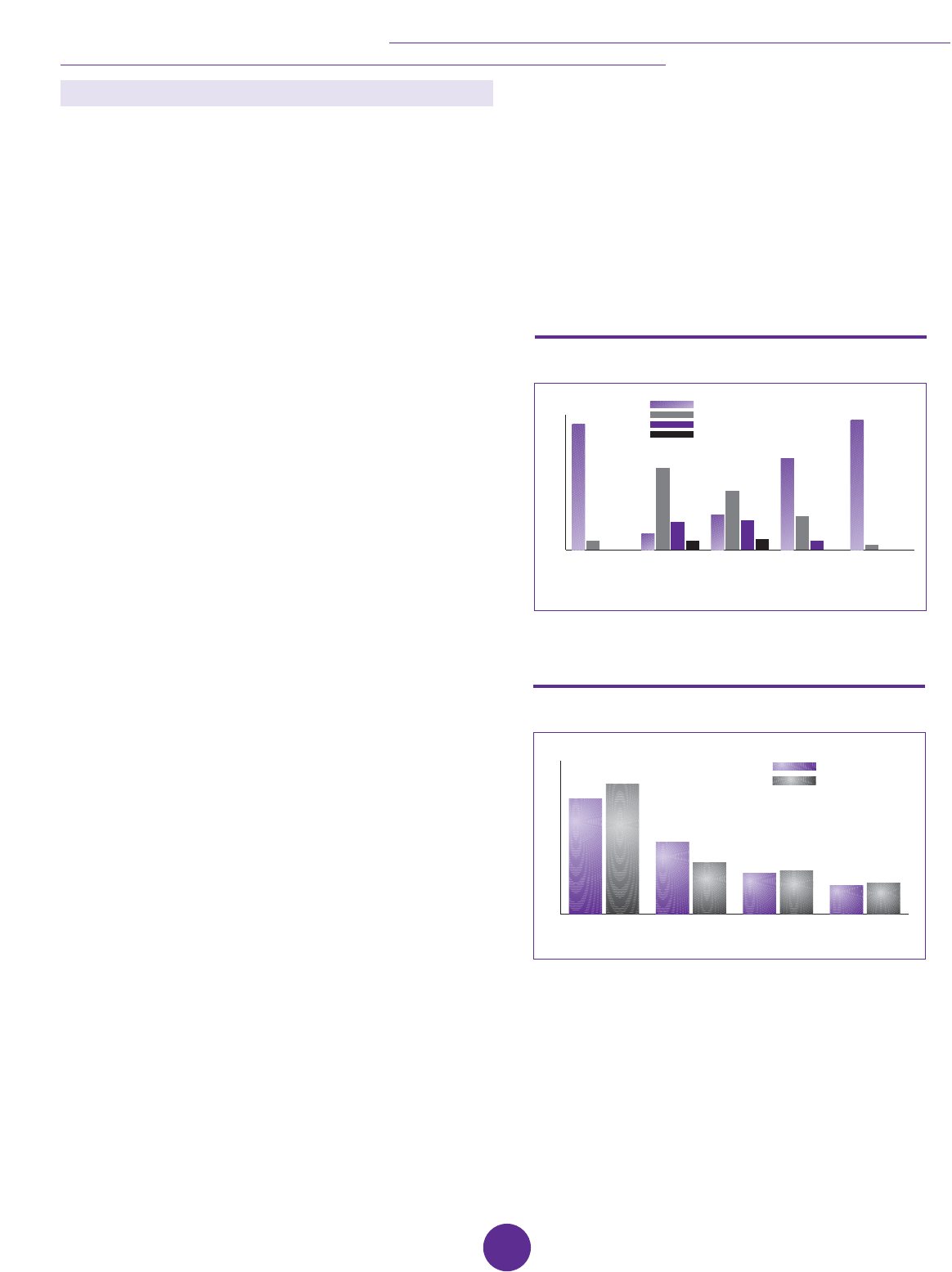
COMMISSION ON LEGISLATIVE DEMOCRACY
What is the Role of an MLA?
MLAs are first and foremost, representatives. They represent
the people who live in a geographic area - a riding. They
also represent the political party to which they belong as a
member. Finally, they represent themselves with individual
judgment and principles. On this basis, there are three
ways of looking at the representative role of an MLA.
1. Trustee - This traditional role requires MLAs to rely on
their own independent judgment and opinion to take
decisions. They will represent the broader provincial
interest, even if this conflicts with the local wishes of
their constituents. Therefore, they act as a “trustee” for
their constituents.
2. Delegate - This populist role suggests MLAs act as the
direct voice of their constituents and represent them
directly, even if this conflicts with the broader provincial
interest or their own personal views. Therefore, they act
as their constituents’ “delegate”.
3. Politico - This contemporary political role assumes
MLAs are party representatives acting as an advocate
for their political party. Therefore, they act as a
“politico” operative tied to party discipline.
As no formal job description exists for MLAs in New
Brunswick, a conflict between these roles is inevitable. To
act as either a trustee or a delegate, an MLA must become
more independent of party discipline. A delegate role
requires an MLA to suspend his or her own judgment in
some matters - a difficult task when citizens are also calling
for leadership from their elected officials. Together, this
leaves some citizens cynical about how MLAs carry out their
roles, their performance and behaviour as legislators, and
their real obligations to the people who elected them.
The role of an MLA is tied closely to the role of the
legislature. The legislature has the responsibility to debate
issues, pass laws, and scrutinize government to hold it
accountable. And, as we have seen, it represents citizens
through individual MLAs. From this perspective, MLAs have
three main jobs:
First, to represent their constituents and their ridings by
raising issues within the legislature, cabinet, or caucus and
acting as an ombudsman to help people solve problems.
Second, to hold government accountable by asking
questions and scrutinizing legislation and expenditures.
Third, to pass laws by debating and voting on them in
public.
The representative role is strongly felt by New Brunswick
MLAs. An independent survey of members, conducted for
the Commission by Dr. David Docherty of Wilfrid Laurier
University, found that the vast majority of respondents
considered their most important role is to represent their
constituents and riding. For example, of those MLAs
responding:
• 90 per cent said they entered politics first to improve
conditions in their riding.
• 45 per cent of their time was spent dealing with
constituency matters, compared to 28 per cent on
legislative work, 16 per cent on policy development,
and 11 per cent on party work.
• 84 per cent of MLAs said they would devote more
resources, if they had them, to hiring a full-time person
to deal with constituency matters.
This is illustrated in the charts below:
Ideal time
Actual time spent
Constituency work Legislative work Policy and issue
development
Party work
0
10
20
30
40
50
60
Source: Survey of New Brunswick’s MLAs, Dr. David Docherty , October 2004
How MLAs spend their time on duties
in per cent
45%
51%
28%
20%
16%
17%
11%
12%
Not at all important
Not very important
Somewhat important
Important
Improve the social
and economic
conditions in my riding
Serve in
cabinet
Serve in
shadow cabinet
Engage in
policy making
Help individuals in
my constituency
0
10
20
30
40
50
60
70
80
90
100
Why Enter Politics and Career Goals?
in per cent
Source: Survey of New Brunswick’s MLAs, Dr. David Docherty , October 2004
68

“It is difficult in rural areas to differentiate between
the role of the mayor and the role of the MLA,”
Public Hearing, Bathurst, June 2004.
A particular representation challenge in New Brunswick is
posed for MLAs whose riding includes a significant portion
of unincorporated areas. Thirty-seven per cent of New
Brunswickers live outside of municipalities with no formal
local government.
These MLAs find they must spend more time dealing with
constituency matters that would normally be handled by a
municipal entity. This is indicated in the next chart.
The small size of the province and the relatively small
ridings reinforces this focus on constituency service by our
MLAs. Based on his research, Dr. Docherty concluded that,
“In New Brunswick, members spend slightly more time on
constituency work than the typical Canadian MLA.” A more
complete presentation of the survey may be found in
Background Appendix VIII.
Hearing From New Brunswickers
“If MLAs had an opportunity to vote the way we
want, it would be an improvement.” Community
Leaders Roundtable, Sussex, May 2004.
New Brunswickers responding to the Commission’s
questionnaire expressed a strong view that MLAs should
represent their ridings first. When asked whether it was
more important for an MLA to represent their riding or New
Brunswick as a whole, respondents chose the riding.
Their riding
New Brunswick
as a whole
Their party Special interests
0
10
20
30
40
50
60
70
in per cent, based on 260 respondents
Source: Commission on Legislative Democracy
69.2%
What is the most important role for an MLA?
Is it to represent:
30.8%
0.0% 0.0%
Percentage of riding that is an
unincorporated area
Time spent on constituency work
that should be handled
by municipal level
0
10
20
30
40
50
60
70
Source: Survey of New Brunswick’s MLAs, Dr. David Docherty , October 2004
in per cent
Unincorporated areas in riding
39%
61%
Live in
municipalities
Live outside of
municipalities with
no local government
Source: Department of the Environment and Local Government
Where people live in NB
37%
37%
62%
62%
Constituency work Legislative work
0
10
20
30
40
50
60
70
80
90
Source: Survey of New Brunswick’s MLAs, Dr. David Docherty , October 2004
If members of the NB Legislature were provided with a budget
to hire an additional full-time staff person, what percentage of
that person’s time would you dedicate to constituency versus
legislative work?
in per cent
84%
16%
FINAL REPORT AND RECOMMENDATIONS
69

COMMISSION ON LEGISLATIVE DEMOCRACY
This view tempered somewhat when respondents were
asked how an MLA should vote if there is a conflict between
the interests of their riding and the broader interest of the
province.
“MLAs should be focused on moving the province
forward, not just parochial/local concerns. They
shouldn’t just argue with each other.” Community
Leaders Roundtable, Saint John, May 2004.
Respondents were also quite clear in what they thought was
the most important part of the legislature’s business. Holding
government accountable and debating issues in public -
forms of accountability - were selected more than others,
including the daily question period and legislative
committee work.
Comments provided to the Commission from citizens
indicated a desire that MLAs should be freed of party
discipline and be able to vote as they see fit. We want
“representation, not regurgitation”, as one individual put it.
People want to see their MLA more - they “should appear
more than once every four years on my doorstep”, said
another.
A Profile of New Brunswick’s Legislature
The budget in 2004-2005 for Legislative Assembly
operations (Members pay and allowances, Legislative
Assembly Office, and caucus research offices) is $10.3
million. The budget in 2004-05 for officers of the Legislative
Assembly (Chief Electoral Officer, Ombudsman, Auditor-
General, Commissioner of Official Languages, and
Superintendent of Political Financing) is $4.015 million. This
represents approximately 0.3 per cent of total provincial
spending in this fiscal year. The chart below sets out the
share of funding each receives.
** Does not include the $3.960 million amount allocated for running the municipal election.
*** Does not include transfers to political parties.
Source: Main Estimates of the Province of NB for 2004-2005
in per cent
Legislative Assembly Operating Budget
Members
Allowances
and Committees
Leaders of
Registered
Parties
Office of the
Legislative
Assembly
Office of
the Auditor
General
Office of
the Chief
Electoral
Officer**
Office of the
Ombudsman
Office
of the
Supervisor
of Political
Financing***
Office of the
Commissioner
of Official
Languages
0
5
10
15
20
25
30
35
40
45
42%
12% 12%
18%
7%
5%
1%
3%
* Includes the budget of the Office of the Conflict of Interest Commissioner
Legislative Assembly
Operating Budget
* Officers of
the Legislative
Assembly
* Officers of
the Legislative
Assembly
Source: Main Estimates of the Province of NB for 2004-2005
($14.146 million)
Budget of the New Brunswick
Legislative Assembly, 2004-2005
72%
28%
28%
Unimportant
Not that important
Neutral
Somewhat important
Very important
Daily question
period
Passing
new laws
Approving
public expenses
Committee work
on policy issues
Debating issues
in public
Holding
government
accountable
0
10
20
30
40
50
60
70
80
in per cent, based on an average of 259 respondents
Source: Commission on Legislative Democracy
What is the most important part of the
legislature’s business?
Local riding Province as a whole
0
10
20
30
40
50
60
in per cent, based on 253 respondents
Source: Commission on Legislative Democracy
59.3%
How should an MLA vote if there is a conflict between the local
interests of their riding and the broader interest of the province as
a whole (for example balancing the budget)?
40.7%
70

Since 1999, the Legislative Assembly sits an average of 66
days per year, within the range of most legislatures. As can
be seen in the chart below, this is a significant increase
from the 1980s and 1990s.
The average number of bills adopted over the past eight
years has been 65, from a high of 96 in the 1996-97
session, to a low of 49 in the 1999-2000 session.
While the legislature is efficient in passing government bills,
it is far less responsive to passing private member’s bills, as
the chart below shows. It is only in the past two years that
an increase in the number of private member’s bills tabled
has occurred. It is worth noting that this is happening when
the party standings in the House have been close.
New Brunswick MLAs are not extravagantly paid. Out of 16
jurisdictional comparisons, remuneration figures indicate
that in 2003-04, their basic salary ($40,565) was 12th-
lowest, and their total salary was ninth-lowest. This is set out
in Background Appendix VI.
Constituency resources are another issue. New Brunswick
MLAs receive $25,000 per year to staff and operate a
constituency office. This is the lowest in the country for
jurisdictions that provide such funding despite, as we have
seen, MLAs spending a higher proportion of their time on
constituency matters than the typical MLA in Canada. A
comparative table is set out in Background Appendix “VIII”.
New Brunswick is the only jurisdiction in Canada that does
not publish a timely record of its daily proceedings and
deliberations. In fact, all other provinces provide online, up-
to-date access to Hansard. In New Brunswick, the last
published volumes date back to the 1995-1996 session.
The volumes of the next four sessions are almost ready for
publishing, while the 1999-2000 and the 2000-2001
sessions still need to be translated. The last three sessions
have not yet been completely transcribed.
While our legislature can be said to operate efficiently and
effectively on behalf of taxpayers with the resources it
receives, the question can be asked, “At what cost to
citizens?” There is a financial cost to democracy; a cost that
perhaps can only be measured when it is lacking.
“Roles of MLAs and their responsibilities should be
increased, as well as the number of free votes they
have.” Public Hearing, Fredericton, June 2004.
Roundtable on Empowering the
People’s House
On March 25, 2004, the Commission held a one-day
expert roundtable discussion on how we could enhance the
role of MLAs and the legislature. This event was co-
sponsored with the Centre for Research and Information on
Private Member's Bills
Opposition Bills
Government Bills
96-97 97-98 98-99 99-00 00-01 01-02 02-03 03-04
0
20
40
60
80
100
120
Source: Legislative Assembly
Number of bills introduced in the
New Brunswick Legislature
Average
65
0
10
20
30
40
50
60
70
80
90
100
96-97 97-98 98-99 99-00 00-01 01-02 02-03 03-04
96
65
67
49
66
65
53
57
Number of Bills adopted by session
Source: Legislative Assembly
June 1999 to
April 2003
0
10
20
30
40
50
60
70
80
1987 to 19981977 to 1986
Source: Legislative Assembly
Sitting days of the New Brunswick Legislature
per session
FINAL REPORT AND RECOMMENDATIONS
71

COMMISSION ON LEGISLATIVE DEMOCRACY
Canada. MLAs from Alberta, Ontario, and Québec gave us
their perspective on legislative reform initiatives occurring in
their provinces. A panel with a government and an
opposition MLA from New Brunswick discussed their own
experiences and some of the realities of being an MLA in
this province. Academic experts from the Parliamentary
Centre in Ottawa and elsewhere set out the issues and
challenges in this area. The discussion was rounded out by
the participation of the Ombudsman and a representative of
the media.
There were many common concerns expressed by
participants about the partisan nature of politics today and
the adversarial system in the legislature. Virtually all stated
these were barriers preventing private members from having
more influence, and causing people to look more negatively
upon their political leaders and institutions. One elected
official expressed a desire to return to the original ideals
that made it the “People’s House”. Many participants
believed there was a need to circumscribe partisanship, and
allow more time for thoughtful consideration of bills and
issues. The New Brunswick MLAs participating called for
more resources for MLAs to serve their constituents better.
There were suggestions for more public input into the
legislative process and to make debates more relevant and
meaningful.
The need to change the culture in the legislature was seen
as critical to successfully enhancing the role of MLAs. All
participants at the Commission’s roundtable felt this was
necessary to help correct the current state of citizen
disengagement and cynicism about politics and politicians
in the country.
Making the Legislature More Relevant
and Effective
The Commission believes that enhancing the role of MLAs
really begins with enhancing the role of the legislature in
democratic governance. Simply put, the legislature must
matter more. It must become more relevant to decision-
making in our province and more effective in how it
functions. A rebalancing of authority away from the
executive branch back to the legislature is required. In the
process, our MLAs must become even more accountable to
the people they serve.
There are several major barriers to achieving these goals.
• Party Discipline. Votes along party lines are entirely
predictable today. There are no free votes in today’s
legislature. Party discipline reinforces the adversarial
nature of our political system. It creates a sense that
legislators do not listen to people; that MLAs cannot act
independently on behalf of their constituents. Free votes
and a more relaxed definition of what constitutes a
vote of “non-confidence” could help address this issue.
• Adversarial Politics. Governments propose and
oppositions oppose. This traditional formula leaves little
room for bipartisan compromise and can prevent good
ideas from being adopted in a collaborative way. It
causes MLAs to engage in personal attacks and
political grandstanding that devalues the currency of
political life. A stronger focus on legislative committee
work and private members bills, offering more
possibilities for cross-party co-operation, could help
make the House less adversarial in these areas at least.
“I used to bring my class to the Legislative Assembly
but I no longer do. I am embarrassed with the way
MLAs act and speak during Question period. I
would discipline my students if they behaved in
such ways.” Teacher, Colloque provincial de
l’Association des enseignants et enseignantes
francophones du Nouveau-Brunswick, Bouctouche,
September 2004.
• Legislative Assembly Resources. From legislative
committees to policy research and legislative drafting,
the New Brunswick legislature does not have the
resources to allow MLAs to fulfill their broad role as
legislators and fulfill their professional obligations to the
quality New Brunswickers deserve. This is contributing
to the current lack of influence of the legislature.
Providing adequate resources to the legislature to do its
job of legislative review and government scrutiny is
necessary to redress this.
• MLA Resources. Individual MLAs have few
professional resources to provide effective constituency
services to citizens. Recent improvements have not kept
pace with either the ongoing demands from
constituents or the desire of MLAs to serve their ridings
more effectively. Providing sufficient resources to
individual MLAs to represent and communicate with
their constituents more effectively is important.
Adequately fulfilling their representative function is the
top priority of citizens, as it is of MLAs.
• House Rules. Traditions and practices have been
established over time that reinforce the adversarial
system and make it difficult for MLAs to act outside this
culture. Providing more flexibility in the rules of the
House would allow MLAs to more effectively carry out
their scrutiny and accountability functions as well as
take on more policy development and legislative
review roles. At the same time, a more efficient and
accountable House could emerge from fixed legislative
calendars and set Budget and Throne Speech dates.
72

• The “full-time” MLA. MLAs have historically been
“citizen politicians”, spending time in the capital city
when the legislature is in session, but otherwise
remaining in their ridings. Today, the demands of
constituency representation, legislative and policy
work, and the media, make even the private member’s
role a full-time one. Members work longer hours than
the average person in the province. It has become in
fact, if not in name, a formal full-time profession in our
province and should be considered as such.
Accordingly, it requires a different approach than at
present, with appropriate remuneration and support to
allow MLAs to perform the roles that are now expected
of them.
Strategies for Enhancing the Role of MLAs
and the Legislature
The Commission believes that the following six strategies
should be implemented to achieve our goals of enhancing
the role of MLAs and the legislature:
First, give the legislature more independence and
authority. The Commission believes that the House must
matter more. This means reinforcing its independent ability
from government to manage its own business, to debate
bills and issues, scrutinize government and hold it
accountable, and interact with citizens. The Commission
believes, as a first step, that the legislature should be
allowed to set its own budget, together with the budgets of
the officers of the Legislative Assembly. The legislature and
legislative officers are independent of government and
should be treated as such. The Commission is also
recommending the creation of a new Legislative Library
Research Office to provide dedicated access to professional
research expertise for members. More resources for
research and committee work are necessary to give
members the ability to study issues, engage citizens, and
offer their own solutions to public policy challenges. Our
recommendation for restructuring legislative committees
along policy lines will underline the authority and expertise
of these committees and their members. The Commission
believes that the legislature needs to operate more efficiently
as well. Fixed legislative calendars with set Budget and
Throne Speech dates will contribute to a stronger sense of
legislative independence and authority, requiring the
government to plan its business around the legislature rather
than the other way around.
Second, give private MLAs more independence
and authority. The Commission believes MLAs must
matter more. MLAs need to be reinforced in their roles as
both legislators and constituency representatives. This means
giving them the resources to draft private members bills and
provide more effective representation to their constituents.
Private members should, as legislators, be able to introduce
bills on public policy and constituency matters of importance
to them and have them debated. Access to drafting
expertise is required for this to occur. Citizens and MLAs
want closer interaction with each other. This is a strong part
of New Brunswick’s political culture. That is why the
Commission is recommending, in both instances, that MLAs
be supported in drafting private members bills through more
resources at the new Legislative Library Research Office,
and that the annual constituency budget for MLAs be
increased from one of the lowest amounts in the country to
a more appropriate and meaningful amount that reflects the
needs and expectations of their job.
Third, reduce party discipline and the adversarial
political culture of the legislature. The Commission
believes a less partisan dynamic is essential to restore true
independence and authority to the House and raise
people’s trust and confidence in their political institutions
and officials. The Commission is recommending several
specific measures aimed at reducing overt party discipline
and contributing to a less adversarial political atmosphere.
This particularly includes allowing more free votes on issues
and instituting a three-line whip system. Not every bill
should automatically divide along party lines. Established
procedures and traditions exist in our form of parliamentary
system to give more freedom to private MLAs to exercise
their “trustee” and “delegate” roles while still allowing a
government to carry out its legislative agenda and program.
Similarly, partisan ties can be less acute in legislative
committees where members work more closely together over
a longer period of time on issues. This can lead to more
consensus building and unanimous reports to government
for action. The Commission believes that encouraging policy
development and legislative review through committees will
help reduce rampant party discipline, give MLAs more
flexibility to work together in a more collaborative manner,
and demonstrate to the public how effectively the system
can work for citizens.
Fourth, make MLAs more accountable to the
legislature. The Commission believes that ongoing
accountability of MLAs to the legislature is an essential
component of legislative democracy. It would enhance
public trust. Simply providing more resources without
requiring accountability for the expenditure of those
resources would not meet this obligation. The Commission is
therefore recommending that MLAs provide a complete
accounting on an annual basis of increased constituency
and communications expenditures to the Legislative
Assembly Office, the independent administrative office of
the legislature. Annual reports of these expenditures would
be made public by the Speaker.
Fifth, make the legislature and MLAs more
accountable to New Brunswickers. The Commission
equally believes that ongoing accountability of MLAs and
the legislature to New Brunswickers is essential to a
renewed democracy. New Brunswickers need to know more
about what their MLAs do, and how they conduct their
business. The public performance of our elected officials has
a strong bearing on how citizens perceive their democratic
institutions. Since accountability starts with conduct, the
Commission believes that MLAs need to adopt a clear Code
of Conduct for MLAs through a public debate, and make
this Code a formal part of their Standing Rules. The work of
FINAL REPORT AND RECOMMENDATIONS
73

COMMISSION ON LEGISLATIVE DEMOCRACY
the Legislative Administration Committee already completed
in this regard should serve as this Code. Equally important
to accountability is how MLAs set their salaries and
remuneration. The Commission believes that citizens should
have their say, rather than leave it entirely to MLAs
themselves. Our recommendations for a three-person
citizens commission to independently recommend the
remuneration for MLAs will achieve this objective. They
should do so on the basis of an MLA as a full-time
profession, consolidating the current confusing structure of
per diems, indemnities, and expenses into a single,
transparent salary befitting the importance of the job, the
need to attract quality individuals and qualified candidates,
and the expectations of citizens. Similarly, the Commission
is also recommending that the Right to Information Act now
apply to MLAs by adding the Legislative Assembly to the list
of departments designated as coming under the provisions
of the Act. Together, these steps will make for a more
accountable legislature, which will help restore the essential
commodity of political trust so necessary in a democracy.
Sixth, promote more citizen engagement with the
legislature. The Commission believes that MLAs need to
be more engaged with citizens if the legislature’s role is to
be truly enhanced in their eyes. New Brunswickers want to
interact more with their elected officials on issues that matter
to them. The Commission is recommending that several
steps be taken to promote more citizen engagement with the
legislature, including a stronger public consultation role for
committees, greater use of petitions, including e-petitions,
and more online consultation and interaction by MLAs with
their constituents. As well, the Commission believes that
MLAs should be encouraged to engage citizens directly on
issues to hear their views. To do so, we are recommending
a small, dedicated budget for each MLA to access as
required to hold town hall meetings, engage in mini
citizens’ assemblies, or other means that work best to
communicate with their constituents.
The Commission believes that these strategies, together with
the specific recommendations set out below, will go a long
way toward enhancing the role of MLAs and the legislature
in the democratic life of our province. Changing the culture
of an institution is quite difficult. Changing a political culture
is probably most difficult of all. Nevertheless, the
Commission heard clearly from New Brunswickers,
including MLAs themselves, that they are not satisfied with
the present situation. It has helped contribute to a rise in
discontent with the current political system and with our
political leaders. Individually and collectively, they are
being held responsible for a situation that has developed
over time and are now paying the professional and
personal price for it. It is a price that involves significant
sacrifices of personal and family time, for an uncertain
future and an often angry and frustrated set of voters with
which to deal.
All the evidence suggests our MLAs are positively motivated
and sincere about their desire to serve their constituents and
to make our province stronger. We believe that they need
more resources to do their job and serve us, as citizens. We
believe they are in many ways underpaid for what they do
and what we, as citizens, expect of them.
At the same time, it is sometimes true that MLAs’ strongly
partisan behaviour, perhaps as a result of the system in
which they find themselves, creates a sense of mistrust with
voters and contributes to this more pervasive lack of
confidence in our democratic process. This is helping to
erode the legitimacy of our democratic institutions and
processes.
The Commission believes the time has come to bring about
change.
Who Can Make Changes?
MLAs themselves are first and foremost responsible for bring
about the changes we are recommending. There is an
ancient privilege that the House is sovereign; in its own
matters, it is its own master. This is a fundamental guarantee
of the legislature’s independence from outside influences
and, by extension, anything that gets in the way of
members representing their constituents. Standing on
traditional prerogatives, however, is no answer to the desire
for change being expressed by New Brunswickers. The
history and internal mechanics and business of legislative
operations should not act as a barrier to change.
Our changes will make a positive difference. They will make
private members matter more. The legislature will become
once again the central focus of our democracy. The roles
and responsibilities of MLAs will become clearer and more
supported. We believe it will lead to a stronger
understanding by New Brunswickers of what MLAs do,
which should lead to an increase in confidence in our
political system.
But our report comes with a warning too. Adopting these
recommendations on a piecemeal basis, particularly those
that lead to higher expenditures for MLAs without, for
example, giving them real responsibility and making them
more accountable for their actions, will only heighten
cynicism. The Legislative Assembly matters too much to our
democracy. It is worth the effort to make it matter even
more.
74

Recommendations
The Commission on Legislative Democracy recommends that
the following steps be taken to enhance the role of the
Legislative Assembly and MLAs, and increase accountability
of government and the legislature to New Brunswickers:
Enhancing the Role of the Legislative
Assembly
Recommendation 1
That party discipline and partisanship be reduced by
encouraging more free votes, fewer confidence measures,
and the introduction of a three-line whip voting system in the
Legislative Assembly.
Recommendation 2
That the role of legislative committees in policy-making be
enhanced by providing the committees with designated staff
and resources allowing them to conduct independent
research and undertake public consultations, including
mandatory public hearings on important bills.
Recommendation 3
That the Legislative Assembly committees be restructured to
create standing policy committees that would facilitate
consideration of bills and encourage stronger MLA policy
expertise. The Standing Committees could be:
1. Standing Committee on Natural Resources
2. Standing Committee on Social Policy
3. Standing Committee on Finance and Economic
Policy
4. Standing Committee on Public Safety
5. Standing Committee on Government Operations
6. Standing Committee on Public Accounts and Crown
Corporations
7. Standing Committee on Legislative Administration,
Procedures, Statutory Officers and Legal Issues
Recommendation 4
That an independent Legislative Library Research Office be
created and funded to serve all MLAs, and to support the
role of strengthened legislative committees, ensuring that
individual MLAs can research policy issues on behalf of
constituents and acquire more legislative expertise in
specific policy areas.
Recommendation 5
That MLAs have the time to review bills before they are
adopted in final form by allowing for more time between
first and third reading of bills.
Recommendation 6
That a new, designated one-hour dialogue and scrutiny time
period every two weeks called, “Interpellation” be
provided. Interpellation would be used firstly, to debate
reports of committees of the Legislative Assembly and
secondly, to allow for more detailed questioning of ministers
on specific policy areas.
Recommendation 7
That Hansard and Legislative Assembly reports be
accessible online, in a more up-to-date time frame in both
official languages. A transcript of Question Period would be
published within 24 hours and a transcript of Hansard
within 48 hours.
Recommendation 8
That the Legislative Assembly be permitted to independently
table its own budget through the Speaker on the same day
and as a component part of the Main Estimates tabled by
the Minister of Finance, as is stated in the Legislative
Assembly Act.
Recommendation 9
That the Statutory Officers of the Legislative Assembly be
permitted to independently submit the budgets for their
offices to the Legislative Administration Committee for
review and approval as part of the overall Legislative
Assembly budget.
Enhancing the Role of MLAs
Recommendation 10
That the formal Code of Conduct for MLAs proposed by the
Legislative Administration Committee and set out in detail in
the policy framework on the Roles and Duties of an MLA
and a Code of Conduct for Members of the Legislative
Assembly in New Brunswick contained in Recommendation
Appendix “C”, be adopted following a debate in the
Legislative Assembly, added as an appendix to the Standing
Rules of the Legislative Assembly, and published on the
Legislative Assembly website.
Recommendation 11
That the annual constituency budget for each MLA be
increased to $50,000, as set out in the policy framework
for MLA Constituency Resources contained in
Recommendation Appendix “D”, to allow the MLAs to offer
more accessible and effective services to their constituents.
This budget would be administered by the Legislative
Assembly Office to ensure full transparency and
accountability. A complete accounting of spending would
be published in an annual report by the Legislative
Assembly Office.
FINAL REPORT AND RECOMMENDATIONS
75

COMMISSION ON LEGISLATIVE DEMOCRACY
Recommendation 12
That MLAs be supported in drafting more Private Member’s
Bills reflecting their independent policy ideas and
constituency concerns, by providing access to legal drafting
resources and staff through the new Legislative Library
Research Office referred to in Recommendation 4.
Government and Opposition members would adopt a
process to vote on an agreed upon number of such bills
during each legislative session.
Recommendation 13
That an independent remuneration review committee of
three New Brunswick citizens appointed by a two-thirds vote
of the Legislative Assembly be established to determine a
new consolidated salary level for all MLAs, to better reflect
the full-time reality of the occupation, and the need for
regular, appropriate increases, as set out in detail in the
policy framework for a Review Committee of MLA
Remuneration contained in Recommendation Appendix “E”.
Per diems and other expenses for undertaking committee
and other work would be eliminated in favour of this more
transparent and realistic salary level.
Ensuring Greater Accountability of
Government and the Legislature to
New Brunswickers
Recommendation 14
That a fixed Legislative Calendar Session as set out in detail
in the policy framework contained in Recommendation
Appendix “F”, be introduced, setting out in advance when
the legislature would meet each year. This would allow for
more effective and efficient use of House time, ensure that
designated days are set aside for legislative committees to
do their work, and also allow individual Members to more
effectively plan their time to meet both their constituency
and legislative obligations.
Recommendation 15
That a Transparency and Accountability Act, as set out in
the policy framework contained in Recommendation
Appendix “G”, be adopted that would set deadlines for the
publication of Public Accounts and quarterly provincial
financial reports, and would enumerate what information
must be contained in each report. This Act would also set
out Throne Speech and Budget dates.
Recommendation 16
That up to $5,000 annually be allocated to each MLA,
designated specifically for undertaking direct public
consultation with their constituents through town hall
meetings and citizens’ forums on policy issues. This budget
would be administered by the Legislative Assembly Office,
with a regular reporting of activities undertaken by members
publicized each year.
Recommendation 17
That the Legislative Assembly promote the use of information
and communications technology to improve citizen access,
including a more extensive and interactive website, with
sites for individual MLAs, as well as creating a new online
"e-petition" feature that will allow citizens to start and
manage their own petitions through the Legislative Assembly
website.
Recommendation 18
That petitions be given a higher priority in legislative
business by adding petitions to the terms of reference of one
or more appropriate standing committees, which would
regularly examine petitions received, and would be
empowered to invite petitioners to committee meetings to
discuss their concerns. Committees taking up petitions would
include them in their reports to the Legislative Assembly, and
require timely and meaningful responses from government
on the petitioners' concerns.
Recommendation 19
That the Right to Information Act process be improved first,
so that where the scope of a request by an applicant under
the Act is not clear or the request would be best served by
a personal inspection of the information by the applicant,
the appropriate minister would be permitted to invite the
applicant to inspect the information in the offices of the
department, if it was practical to do so, within 30 days of
the receipt of the application as set out in the Act; and,
second, that Regulation 85-68 under the Right to
Information Act be amended to include the Legislative
Assembly in the list of Departments that are subject to the
Act as long as providing the information requested does not
infringe on the privileges of the Legislative Assembly or the
Members of the Legislative Assembly.
76

Improving Party Democracy
Mandate
To examine and make recommendations on
strengthening and modernizing our electoral system
and democratic institutions and practices in New
Brunswick to make them more fair, open,
accountable and accessible to New Brunswickers
and to seek the views of New Brunswickers on
more open, responsive, and accountable
democratic institutions and practices.
Overview
Political parties are central players in New Brunswick’s
democratic life. Many New Brunswickers experience politics
almost exclusively through our parties. Parties choose
leaders from among whom we select our Premier, they
nominate candidates from among whom we select our
MLAs, and they organize our legislature along party lines.
The manner in which parties conduct these key activities has
a significant impact on our democratic culture. The
Commission believes that efforts to create a more citizen-
centered democracy in New Brunswick must include steps to
make parties more open, democratic and accountable.
Therefore, we are making recommendations concerning the
conduct of parties in candidate nomination, leadership
selection and policy study and development.
Public or Private Organizations?
Some will argue that political parties are private
organizations and thus should be left to regulate themselves.
We do not agree with this sentiment for two reasons. The
first is that our political parties engage in decision-making
that has a profound effect on public affairs in the province
and the second is that they receive substantial amounts of
New Brunswickers’ tax dollars. In 2004, the three principal
parties received approximately $646,000 in direct public
subsidies - the annual allowances that the political parties
receive under the Political Process Financing Act (PPFA) - as
well as significant additional public funding through the tax
credit for contributions to parties estimated to cost the
provincial treasury more than $500,000 in 2003.
The annual allowance to which each party is entitled is
calculated using a formula set out in the PPFA, indexed for
inflation, to obtain a dollar amount per valid vote (currently
$1.73) received by each party in the previous provincial
general election. Parties also receive public funding through
an election expense reimbursement and a reimbursement for
the cost of auditing their financial returns to the Supervisor.
In terms of private financing, the PPFA allows parties to
accept contributions, for which income tax receipts are
issued, from individuals, corporations and trade unions. All
these contributions must be reported to the Supervisor of
Political Financing along with the value of contributions of
property and services, or “in-kind contributions”.
As the chart below shows, public funding made up on
average between 35 and 40 per cent of the total financing
of each of the three main political parties in New Brunswick
over the five-year period 1997- 2001. In terms of private
financing, the Progressive Conservative and Liberal parties
both received approximately one-quarter of their overall
financing from individuals and one-third from corporations
for this same period. The NDP received most of its private
contributions from individuals.
The value of the political contributions tax credit to both
individuals and corporations - which is funded by taxpayers
- from 1998 to 2003, totalled $2,436,891. The chart
below shows the value of this tax credit over this period.
We believe public support of our political parties is
appropriate given the important role they play in our
society. In fact, in other parts of this report, we recommend
an increase in the amount of public funds available to
parties. However, these dollars should not simply be handed
over without greater assurance that our parties are meeting
the democratic expectations of our citizens.
1998 1999 2000 2001 2002 2003*
0
100,000
200,000
300,000
400,000
500,000
600,000
700,000
Value to individuals
Value to Corporations
Total
Source: “The Commissioner’s Annual Report to the Government of New Brunswick”,
Canada Revenue Agency and Tax Sharing Statements
in dollars
New Brunswick Political Contributions Tax Credit
1998-2003
Progressive
Conservative
Liberal New Democratic
Source: Annual Reports of Supervisor of Political Financing
NOTE: Numbers rounded to the nearest dollar
Average Annual Political Financing Amounts in NB:
1997 – 2001
P & SUnionsCorporationsIndividual
Public
Public $367,195.00
Private $682,189.00
Total $1,049,384.00
Public $398,439.00
Private $624,157.00
Total $1,022,596.00
Public $74,411.00
Private $115,537.00
Total $189,948.00
FINAL REPORT AND RECOMMENDATIONS
77

COMMISSION ON LEGISLATIVE DEMOCRACY
Through the selection of candidates and leaders and the
drafting of policy platforms, the activities of New
Brunswick’s political parties have significant impact on the
quality of our democratic practices and institutions. Citizens
have the right to believe that these activities are conducted
in a fair, open and transparent manner.
Party Nomination and Leadership Contests
Among the central activities of our political parties is the
selection of general election candidates and party leaders.
Both of these activities have a significant impact on our
politics. It is only by first winning a party nomination contest
that a candidate has any realistic chance of being elected
to the legislature. In the 12 provincial elections held since
1960, every successful candidate was first nominated by a
political party. This means that when voters go to the polls
to select their MLA, the political parties have already
narrowed the choice down to three candidates from among
whom voters get to choose. In ‘safe’ seats, where one party
is almost certain to win the general election, the nomination
contest is arguably more important than the general
election.
In terms of leadership selection, the parties again narrow
the field down to a small group of individuals from among
whom we choose our premier. On occasion, the parties
directly choose a premier. For example, when Premier
McKenna resigned in 1997, his successor, Camille
Thériault, was chosen by Liberal party members and served
as premier for one year before the next general election.
This is not to suggest that this is inappropriate; rather, it
makes clear the importance of these events in our
democratic life.
Similarly, when we concern ourselves with access to elected
office for under- represented groups, such as women, we
must begin our investigation with an examination of
candidate nomination and leadership selection contests. The
parties act as gate keepers, determining who has access to
public office. As illustrated in the chart below, women are
under-represented among the groups of candidates
nominated by our political parties, leading almost inevitably
to an under-representation of women in our legislature.
Financing
“To ensure a true democracy, we must introduce
measures that would prevent wealthy groups to be
able to influence, through money, citizens’ vote,”
Submission by l’Association acadienne et
francophone des aînés et aînées du Nouveau-
Brunswick, May 2004.
New Brunswick’s Political Process Financing Act provides a
comprehensive and effective regulatory scheme for the
financing of our provincial general elections. There are
limits on contributions to and election expenditures of
candidates and parties, and full public disclosure is
required. These requirements of the PPFA work toward
providing a level playing field between candidates and
parties, restricting the influence of non-voters, and ensuring
transparency in the financial dealings of the parties and
their candidates. However, the PPFA falls short in not
covering the financial activities of party leadership and
candidate nomination contests. As suggested above, these
events are as consequential as general elections, and the
rationale supporting regulation of general election financing
applies readily to these contests as well. Therefore, the
Commission recommends that the relevant provisions of
New Brunswick’s PPFA be amended, as described below, to
set limits on contributions to and expenditures of leadership
and nomination candidates.
Spending limits
In general election campaigns, there are limits on the
amount candidates and parties are able to spend. In the
case of individual candidates, while the limit is calculated
based on the number of voters and thus varies by
constituency, the average spending limit was $26,756 in
the 2003 election. The principal rationale for this is to
ensure that one candidate or party with easy access to
financial resources is not able to spend enormous amounts
gaining an unfair advantage over their opponents. We
believe that the same logic that supports limiting candidate
spending in a general election applies equally to
nomination contests. The Commission heard that women are
Women
elected
Women
candidates
1991 1995 1999 2003
0
5
10
15
20
25
30
Source: Commission on Legislative Democracy
Comparison of Women Candidates vs Women
Elected – Provincial Elections
in per cent
78

FINAL REPORT AND RECOMMENDATIONS
79
dissuaded from entering nomination contests because of the
uncertain financial costs and the possibility of being
dramatically outspent by an opponent. We also note that
the federal government moved in 2003 to limit the amount
candidates for party nominations at the federal level can
spend to 20 per cent of the amount they are allowed to
spend in a general election campaign. We are in
agreement with the approach taken at the federal level and
recommend a similar formula for New Brunswick. This
would result in limiting spending by a candidate for a
party’s nomination to approximately $5,300.
The evidence suggests that this spending ceiling would not
be a limiting factor in most nomination contests. Our survey
of MLAs suggests that the mean amount spent by a
successful candidate in a nomination contest prior to the
2003 provincial election was about $2,000. Nonetheless,
the Commission heard some evidence that this amount
increases dramatically in a few cases, particularly those
where a party has an open seat in a riding where it stands
a good chance of being successful. It is in these cases
where a spending limit is required to protect against a well-
heeled candidate raising and spending an inappropriate
amount of funds, and by doing so, gaining an unfair
advantage.
The rationale supporting a limit on candidate nomination
spending applies with even greater force to leadership
selection contests. These are among the most consequential
activities in our democratic politics. As illustrated above,
they occasionally result directly in the selection of a premier
and in every case, choose men and women who will be
influential players in our democratic life. The Commission
believes that it is important that all legitimate candidates be
able to compete in these contests without fear of being
vastly outspent by an opponent. Simply put, the ability to
raise vast amounts of money should not determine the
outcome of these contests. At the same time, because these
are such important events, and because we encourage
leadership candidates to engage large numbers of citizens,
it is important that they be permitted to spend enough funds
to campaign vigorously throughout the province. Given that
leadership candidates must campaign in all 55 ridings, an
appropriate spending limit is arrived at by multiplying the
amount a nomination candidate is allowed to spend by fifty-
five. This amount is approximately $300,000 ( $5,000 x
55), which we believe is an appropriate level at which to
cap spending in a party leadership contest.
The Commission respects the fact that individual parties may
have different values that they wish to reflect in the
spending rules governing their nomination and leadership
contests. There is nothing in these recommendations to
prevent a party from establishing a lower spending ceiling.
The proposed limits are the outer amounts above which
candidates in these contests would be prohibited by law
from exceeding.
Contribution limits
The PPFA limits the amount any individual, corporation or
trade union may contribute to a political party or general
election candidates to $6,000 per annum. The rationale for
this provision is to attempt to ensure that no candidate or
party is overly dependent on one source of campaign
funding. The concern is that if one person or corporation is
able to contribute excessive amounts, the recipient
candidate or party may be overly dependent on continued
financial contributions from this source and thus may be
overly responsive to their influence. By limiting contributions
to relatively modest amounts, we are able to protect against
the possibility of quid-pro-quo arrangements.
At present, a donor may contribute an unlimited amount to
nomination and leadership candidates. The absence of
contribution limits for candidate nomination and leadership
contests essentially negates any potential benefits achieved
by the general election limits. A donor seeking influence,
who is limited in the amount she or he can contribute to a
candidate during a general election, can easily circumvent
this limit by making the contribution during the nomination
period. Given that we are proposing a spending limit of
approximately $5,000 for nomination campaigns, the
Commission recommends that no single donor be able to
contribute more than $1,000 to nomination candidates. This
ensures that no candidate, in a highly contested race, is
overly dependent on a single contributor and that no single
contributor has undue influence over the nomination contest.
Given the considerably larger fund raising demands on
leadership candidates and their significantly larger
campaign budgets, the Commission recommends a $3,000
limit be placed on the amount any one individual,
corporation or trade union may contribute to the candidates
for a party’s leadership. In both cases, we also recommend
that these contributions not count against the limits already
in place for contributions to political parties and general
election candidates, so as not to impact the abilities of
parties to raise funds for their own campaigns.
Disclosure
Financial disclosure requirements serve two main purposes.
First, they provide transparency into a candidate or party’s
financial relationships, and second, they facilitate
enforcement of spending and contribution limits. The PPFA
currently requires financial disclosure from general election
candidates and parties, but not from nomination and
leadership contestants. The Commission sees no justifiable
reason why these contests should be excluded from
disclosure requirements. Voters have as much, and perhaps
more, interest in knowing who is funding a leadership
campaign as they do in knowing who is funding the
campaigns of their local general election candidates.
Disclosure requirements are also necessary to ensure
compliance with the proposed spending limits.
The Commission recommends that nomination candidates
be required to file a full financial disclosure report with
Elections New Brunswick, consistent with the provisions of
the PPFA, within 90 days of the date of the nomination
contest in which they were a candidate. In the case of
leadership contests, we recommend both pre and post
contest reporting. Given that these contests often last for
several months, which is longer than general election
campaigns, we recommend that candidates file a first

COMMISSION ON LEGISLATIVE DEMOCRACY
80
financial report with Elections New Brunswick four weeks
prior to the date of the leadership vote, and a second report
90 days after the leadership selection contest. The first
report should include all relevant financial transactions to
that date, and the second report should include the period
between the filing of the two reports. These reports should
be made public by Elections New Brunswick as soon as
practical after their receipt.
The Commission recognizes that these proposals will place
an additional administrative burden on those seeking public
office, and is concerned that this burden not be placed
unnecessarily on those nomination candidates who do not
raise or spend considerable amounts of money in support of
their candidacy. And, given that our MLA survey
respondents, all of whom were successful nomination and
general election candidates, suggest that their mean
spending in nomination contests was $2,000, we propose
that the disclosure and reporting requirements be limited to
candidates who raise or spend in excess of $1,000 on their
nomination campaign. Candidates should have the option
of filing a signed affidavit stating that they both raised and
spent less than $1,000 on their nomination campaign in
lieu of filing a full financial disclosure report.
The table below summarizes the Commission’s proposed
change to financial rules governing party leadership and
nomination contests:
Rules Governing Nomination and
Leadership Contests
At present, party nomination and leadership contests are
subject to no public regulation. The parties conduct these
contests as they deem appropriate. The Commission heard
from New Brunswickers that there should be a standard set
of rules to ensure that these contests are conducted in a fair,
open and transparent manner. We suspect that the public
attention brought to these issues during the 2004 federal
election, both in and out of New Brunswick, has heightened
the saliency of these concerns with voters. Given the
importance of these contests, the Commission recommends
that there be a standard set of basic rules governing both of
these types of contests.
Our recommendation for a New Brunswick mixed member
proportional representation electoral system with closed
party lists makes it especially important that each party’s
general election candidates be chosen in a fair, open and
transparent process. Our first recommendation is that all of
a party’s general election candidates be chosen through a
vote of the party membership in the relevant constituency or
multi-member district. This is the norm today. Most often a
party holds a nominating convention to which all of its
members are invited to attend and vote for their preferred
candidate. Our current laws also allow for a party leader to
unilaterally appoint a candidate without first holding a vote
of the membership. In order to ensure that candidates are
chosen by party members in an open and transparent
manner, the Commission recommends that all of a party’s
general election candidates be endorsed by a vote of
eligible party members. This provision should apply both to
Summary Table of Recommended Changes to PPFA
Nomination Contestants Leadership Contestants
Contribution $1,000 from an individual, corporation or trade union, $3,000 from an individual,
Limits in the aggregate, to the nomination contestants of corporation or trade union, to
each registered political party. one or more of a party’s
leadership contestants.
Spending Approximately $5,300 per nomination contestant $300,000 per leadership contestant
Limits (based on 2003 election spending limits). in a contest.
Formula: 20% of the average of the limits that were
allowed for a candidate’s election expenses in the
province’s electoral districts during the immediately
preceding general election.
Disclosure Nomination contestants to file with Elections Leadership contestants to file
Requirements New Brunswick a full financial disclosure report with Elections New Brunswick:
90 days after the date of the nomination a) a first financial report, detailing
contest in which they were a candidate. financial transactions to date,
four weeks prior to the date
of the leadership vote, and
b) a second, full disclosure report
90 days after the leadership vote.

the current single member constituency nominations and to
nominations in party lists in the proposed New Brunswick
MMP system.
Voting in New Brunswick general elections is restricted to
those at least 18 years of age who are resident of the
province and hold Canadian citizenship. As we commented
on above, party leadership and nomination contests are
every bit as consequential as general elections, and voters
should have the same confidence that only appropriate,
qualified electors are participating in them. The Commission
sees no valid reason why the eligibility for voting in these
contests should differ from general elections. We note that
parties have in the past used participation in these contests
as a way of recruiting younger New Brunswickers into party
activity, and we find this a laudable objective. However, we
do not find this rationale compelling enough to justify a
different set of voter eligibility rules than those used for
general elections.
While being an eligible voter should be a requisite for
voting in these contests, it must be coupled with party
membership. The parties are right to insist that only their
supporters choose their leaders and candidates. However,
membership requirements inevitably lead to recruitment
drives, which can lead to complaints regarding the fairness
of the contests. Given the consequential nature of these
decisions, we believe that long cut-off dates serve no
purpose other than to impose an unnecessary obstacle on
would-be voters. Similarly, the absence of a cut-off date
leads to an influx of instant members and little ability to
confirm their voting eligibility. Therefore, the Commission
recommends that any eligible New Brunswick voter who
belongs to a political party seven days prior to a
nomination or leadership contest be eligible to vote in that
contest. Consistent with this, and in order to encourage full
participation in these contests, we further recommend that
parties be required to advertise the date, time and location
of a leadership or nomination contest at least seven days
prior to the closing date for eligible membership. This will
allow sufficient notice for interested New Brunswickers to
become members of the party and participate in the contest.
New Brunswick’s political parties have been at the forefront
in imposing little financial barrier to participation in
candidate nomination or leadership contests. Parties in other
jurisdictions have imposed relatively large fees, essentially
poll taxes, on those wishing to participate in these contests.
We think it important to ensure that this not occur in New
Brunswick, and accordingly recommend that parties not
charge a membership fee greater than $5 annually, and
that there be no other fee charged in relation with voting in
a nomination or leadership contest.
There is currently no standard timetable for candidate
nomination contests. To some extent this results from the
uncertainty surrounding election dates. We have heard from
women’s groups that this lack of predictable timing, together
with the possibility of a long lead time between a
nomination contest and a general election, raises another
obstacle for the participation of women in our politics. Very
early nomination contests might also catch voters unaware
and potentially lower participation rates. Consistent with our
recommendation in this report for fixed election dates, the
Commission recommends that the timing of candidate
nomination contests be standardized through an amendment
to the Elections Act requiring that they be held no more than
120 days prior to the date of a general election.
Recognizing that these contests essentially will continue to
be conducted by the political parties themselves, albeit
consistent with the general regulatory system recommended
here, the Commission recommends that each party’s leader
be charged with filing a declaration with the province’s
Chief Electoral Officer certifying that each nomination
candidate was chosen in a fair and democratic process that
was consistent with the requirements set out above. Such a
certification should be a prerequisite to a candidate having
party affiliation noted on a general election ballot. In the
case of leadership selection, the declaration should be
made by the Party President.
Party Policy Foundations
We believe that our political parties need to be reinforced
as institutions for policy study and development. Because
parties play such a significant role in the selection of our
elected officials and the operation of our legislature, it is
important that they be capable of ongoing policy study and
development. Generating new and dynamic policy options
is imperative to the long term progress of our province, and
we believe that parties should be encouraged to play a
central role in this activity.
The Commission is particularly concerned to learn that
voters generally, and young citizens in particular, do not see
parties as effective instruments of policy advocacy and often
prefer interest groups instead. This is troubling, as New
Brunswick’s political parties have traditionally played an
important role in building consensus across the various
communities that make up our province, and it is important
that they remain vital institutions, capable of accomplishing
this important task. Interest groups often do not have this
accommodative function as one of their central concerns.
We also believe that strengthening the policy development
capacities of parties will make them more attractive to
young voters who are interested in policy questions and
who the evidence suggests often view parties as too
hierarchical. To accomplish these objectives the Commission
recommends that parties be supported in establishing arm’s-
length, non-profit policy foundations. Policy foundations with
grassroots participation from across the province and
regions will help to ensure that all voices are heard and
considered in the development of public policy.
The establishment of policy foundations will provide a more
meaningful opportunity for interested citizens to engage in
policy study and development within our political parties.
This will provide stronger ties between voters and their
political parties and help to revitalize parties. We think it
important that much of this activity occur within parties, as it
is parties that are charged with governing and in this
capacity with finding accommodations across different
FINAL REPORT AND RECOMMENDATIONS
81

interests. Party policy foundations can also play an
educating function in increasing information levels
regarding both public policy and the operation of our
democratic institutions. In order to attract the best and
brightest to participate in political parties, it is important
that they have the opportunity to play a meaningful role in
policy development.
Policy foundations would provide parties with an arm’s-
length vehicle for policy study and development between
election campaigns. This will prove most useful to parties in
developing thoughtful, detailed election platforms,
developing policy alternatives while in government and in
transition-to-government preparation while in opposition. As
arm’s- length organizations, they may be able to attract
participants not wanting to engage directly in partisan
electoral activity, and will be somewhat removed from the
daily cut-and-thrust of political life, encouraging more long
term thinking.
Key Benefits of Party Policy Foundations
• They provide a meaningful opportunity for interested
party members to engage in policy study and
development.
• They provide parties with wider connections to
traditionally non-partisan groups in universities, think
tanks, private and non-profit sectors.
• They provide the space to re-examine policy directions
in a manner that does not imply that a change is
necessarily forthcoming and does not require
immediate response by competing parties.
• Their advice to the party is not based solely on short
term electoral considerations.
• They provide political/policy education to their
members and to the general public, generally
increasing information levels regarding public policy.
Funding Policy Foundations
In order to meet the objectives set out above, party policy
foundations will require financial support. Given the
important role they can fill in helping to advance public
policy in our province, we believe it appropriate that they
be funded through a mix of public financial support and
private contributions.
We recommend the following public support to party policy
foundations:
• Political parties currently represented in the legislature
be entitled to a one-time start-up allowance equal to 25
per cent of their 2005 eligible annual allowance under
the PPFA, or $25,000, whichever amount is greater,
for purposes of starting a policy foundation.
• In each subsequent year, established policy foundations
of all registered parties represented in the legislature
will receive an annual allowance equal to 25 cents per
valid vote received by the party in the previous
provincial election.
• The New Brunswick Political Contributions Tax Credit
be extended to include contributions made to party
policy foundations as an incentive for individuals and
others to make contributions.
These provisions will provide the start-up funds necessary for
the parties to get a policy foundation off the ground and a
modest amount of guaranteed annual funding to support
their activities. The extension of the tax credit will assist
parties in raising private funds to support their foundation’s
ongoing activities.
Consistent with the spirit of the contribution limits found in
the PPFA, the Commission recommends that contributions to
party policy foundations be limited to no more than $3,000
and that this be separate from limits on contributions to
candidates and parties. We recommend that in order to
protect the integrity of these limits, there be no permissible
commingling or transferring of funds between political
parties and their policy foundations. In order to ensure
compliance with these requirements, and to provide full
disclosure of their financial dealings, the Commission also
recommends that party policy foundations be required to file
annual financial disclosure reports with Elections New
Brunswick consistent with the requirements of the PPFA.
Improving Party Democracy
Party democracy is a matter that concerns all New
Brunswickers. It is not just a private matter to political
parties. How parties choose candidates and conduct their
business is an essential ingredient to a strong citizen-centred
democracy for our province. It contributes to citizens’
perception of the political process and our elected officials.
Ensuring parties function in an open, accountable way, and
are healthy and vibrant, reinforces the importance we
attach, as citizens, to their role in a renewed democracy in
New Brunswick. The Commission’s recommendations will
improve party democracy in our province and make the
system work better for citizens.
Recommendations
The Commission on Legislative Democracy recommends that
the following steps be taken to improve political party
democracy in New Brunswick:
Recommendation 1
That the Political Process Financing Act (PPFA) be amended
to set contribution and spending limits for political party
leadership and nomination contestants and require public
disclosure of information on the financing of leadership and
nomination contests. That these limits and disclosure
requirements be as follows:
1.1 Leadership campaign expenses would be limited to
$300,000 per candidate.
COMMISSION ON LEGISLATIVE DEMOCRACY
82

1.2 Nomination campaign expenses would be limited to an
amount representing 20 per cent of the average of the
spending limits that were allowed for a candidate's
election expenses in the province’s electoral districts
during the immediately preceding general election.
1.3 Contributions would be limited to $3,000 in total to
one or more contestants in a leadership contest and
$1,000 in total to one or more nomination contestants;
these limits would be in addition to the current limit for
contributions to parties under the PPFA.
1.4 Leadership candidates would be required to file a
summary financial return four weeks prior to the date
of the leadership contest and a final leadership
campaign return within 90 days of the date of the
leadership contest. Nomination contestants who
accepted contributions or incurred expenses over
$1,000 would have to file a nomination campaign
return within 90 days of the selection date for the
nomination contest.
1.5 Elections New Brunswick would publish information
disclosed by leadership and nomination contestants on
the financing of their campaigns.
Recommendation 2
That the following new provisions be introduced into the
Elections Act to set clear, open, and transparent rules and
procedures to be followed by political parties during
nomination and leadership contests:
2.1 All of a party’s general election candidates must be
endorsed by a vote of eligible party members, in a
vote that is open to all eligible party members.
2.2 To be eligible for party membership, a person must
meet the same eligibility requirements to vote in a
provincial election.
2.3 To be eligible to vote in a leadership or nomination
contest, a person must belong to the political party at
least seven days prior to the nomination contest and be
a member of the party at the time of the vote.
2.4 If fixed election dates are adopted, riding associations
must hold a vote of their members for the purpose of
choosing their general election candidate no more than
120 days prior to the date of the general election.
2.5 Parties must advertise the date, time and location of a
leadership or nomination contest at least seven days
prior to the closing date for eligible membership.
2.6 Parties shall not charge a membership fee greater than
$5 annually.
2.7 A declaration, signed by the party leader following a
nomination contest and signed by the Party President
following a leadership contest, must be filed with the
Chief Electoral Officer, certifying that all required
procedures were followed and that the nomination or
leadership contest was held in a fair and democratic
manner.
Recommendation 3
That the policy framework for administering these new
political party financing rules contained in Recommendation
Appendix “H” be adopted.
Recommendation 4
That all political parties be encouraged to establish Policy
Foundations as a way to provide a meaningful opportunity
for interested party members to engage in policy study and
development and to help ensure parties present strong
platforms to voters at election time. That Policy Foundations
be established on an arm’s-length, non-profit basis and be
funded through:
1) A one-time, start-up allowance in an amount that is
25 per cent of the annual allowance to which the
party is eligible under the PPFA, in the Policy
Foundation’s start-up year, or $25,000, whichever
amount is greater,
2) An ongoing additional annual allowance of $0.25
per valid vote received during the preceding
provincial general election, and
3) Contributions from individuals, corporations and
trade unions, not exceeding $3,000 in a calendar
year, to one or more party Policy Foundations, and
to which the New Brunswick Political Contributions
Tax Credit would be extended. This contribution
limit would be in addition to the current limit for
contributions to parties under the PPFA.
Recommendation 5
That to be eligible for public funding, a party Policy
Foundation would be required to: have a Constitution
separate from the political party’s Constitution; have a
separate board of directors from the provincial party
executive; present annual reports to Elections New
Brunswick on the Foundation’s activities and programs,
including full disclosure of all revenues, expenditures, and
contributions; prohibit any transfers of funds from the
Foundation to the political party for election purposes or
operations; and prohibit the director or any full-time
personnel from participating directly in the preparation of
election-related material or in the conduct of election
campaigns.
FINAL REPORT AND RECOMMENDATIONS
83

COMMISSION ON LEGISLATIVE DEMOCRACY
84
Opening up the Appointments
Process for Agencies, Boards and
Commissions
Mandate
“To examine and make recommendations on
enhancing transparency and accountability in
appointments to government agencies, boards, and
commissions.”
Agencies, boards, and commissions (ABCs) are an integral
part of providing provincial government services to people
and developing public policy. They also decide on
important matters affecting all New Brunswickers, such as
increases to our electricity bill and the cost of our car
insurance. They make decisions on employment appeals as
well as major financial investments of our tax dollars. It is
important, therefore, that appointments to and
representation on these ABCs reflect the needs and interests
of all New Brunswickers, and not just those of the political
party in power.
Why Look at ABC Appointments?
There are three main reasons why we need to look at how
appointments are made to government agencies, boards,
and commissions. First, there is an overall need to improve
public trust and confidence in the integrity of the political
process and ABCs themselves, in the face of a widespread
perception that patronage is the deciding factor in
appointments. Second, there is a need to ensure the
competence of arm’s length governance boards that have
significant regulatory, adjudicative and service
responsibilities. Third, there is a need to ensure quality
governance for these ABCs to avoid putting the public purse
at risk.
Together, these objectives - trust and confidence,
competence, quality governance - suggest a new approach
to ABC appointments in New Brunswick is required: one
that is more transparent and accountable than at present;
one that opens up the appointments process to all New
Brunswickers.
The Commission’s mandate is to recommend a more
transparent and accountable process for making
appointments to the approximately 130 government
agencies, boards, and commissions. By transparent, we
mean a process that is more open and independent than at
present and allows New Brunswickers to apply for a
position. By accountable, we mean a process that leads to
consideration of qualified candidates, has oversight and
monitoring, and provides information to the public.
“Depoliticize the Agencies, Boards and
Commissions. Make places for citizens according to
their competencies and not their political
preferences.” Your Turn questionnaire,
Spring/Summer 2004
ABCs in New Brunswick
There are approximately 130 agencies, boards, and
commissions existing through legislation to which
government makes appointments. Together, these ABCs
include over 1,000 positions. Not every appointment is a
“public” appointment, open to anyone. Some positions are
reserved for public servants or representatives of
professional bodies, based on the purpose of the ABC.
The size, type, and mandate of each ABC can vary
significantly. Some have significant regulatory and
adjudicative authority or control the expenditures of tens of
millions of dollars each year. Examples of these include the
NB Power Board, the Public Utilities Board, and the Labour
and Employment Board. Other ABCs have an important
public policy influence and representative function. These
include the various advisory councils on issues related to
women, disabled persons, youth and seniors. Still others,
such as certain environmental and farm commodity boards,
provide a useful vehicle for government to communicate
with and receive advice from individuals and groups having
specific technical and professional expertise.
ABCs in the province may be grouped into four basic
categories:
1. Crown agencies (such as NB Power)
2. Adjudicative tribunals (such as the New Brunswick
Human Rights Commission)
3. Operational (such as the NB Forest Products
Commission)
4. Advisory (such as the New Brunswick Advisory Council
on the Status of Women)
A complete listing of ABCs by category may be found in
Recommendation Appendix “I”.
Differences may be found within each category. Not all
Crown agencies, for example, have the same type of
mandate or significance. This is notable since the
appointment qualifications for a position obviously vary
depending upon the nature of the ABC itself. The process
for making these appointments should also then vary
depending upon the significance of the ABC.
There are several factors that determine an ABC’s
significance. The most obvious are:
Financial - does the ABC control or influence a significant
amount of tax dollars?
Policy - does the ABC have a significant, direct impact on
public policy?

Adjudicative - does the ABC have a significant
adjudicative or legal impact on individuals, businesses, or
organizations?
Regulatory - does the ABC have a significant regulatory
function for consumers, businesses, communities, or regions?
On this basis, the Commission considers the most significant
ABCs are:
Crown Agencies
1. New Brunswick Investment Management Corporation
2. New Brunswick Liquor Corporation
3. New Brunswick Power Corporation
4. Service New Brunswick
5. Workplace Health, Safety and Compensation
Commission
Adjudicative Tribunals
(Those making decisions with a province-wide, precedent-
setting impact)
1. Assessment and Planning Appeal Board
2. Criminal Code Board of Review
3. Human Rights Commission
4. Labour and Employment Board
5. New Brunswick Insurance Board
6. New Brunswick Securities Commission
7. Public Utilities Board of Commissioners
8. Workplace Health, Safety and Compensation
Commission - Appeals Tribunal
The Commission does not consider this a closed list.
Government may feel that the proposed list should be
expanded in the future to include other agencies, boards
and commissions.
The Current ABC Appointment Process
Appointments to ABCs currently are made by the Lieutenant-
Governor in Council (Cabinet) on the basis of advice
received from the Premier or a minister. Cabinet makes an
Order-in-Council for each appointment, which is then
published in the Royal Gazette. In most cases, no formal
search or vetting process is undertaken. Names are
recommended to Cabinet, approved, and then published.
This has been the practice for many, many years.
Changes to this practice have been occurring. Several of
the recent appointments to the NB Power Board, for
example, were made following a formal executive search
process using an outside consultant.
The figure below sets out how the current ABC appointment
process in New Brunswick works.
FINAL REPORT AND RECOMMENDATIONS
85
Current Process for ABC Appointments:
1 “Job”
Description
Department
responsible for
ABC determines
criteria; no formal
job description.
2 Advertising
of Vacancies
No formal
advertising.
3 Applications
Candidates (solicited
or unsolicited) apply
with CV to
department or
Minister; formal
application not
required for all
appointments.
4 Vetting
Candidates screened
and processed by
departments, ministers’
offices and Premier’s
Office. No central
authority vetting.
5 Approval
Preferred candidate
approved by Minister
or Cabinet.
6 Publicity of
Appointments
OIC appointments
have to be made
public in Royal
Gazette only.
7 Training for
for New
Members
Informal
orientation/no
formal guidelines.

COMMISSION ON LEGISLATIVE DEMOCRACY
Reform Efforts Across Canada and in
New Brunswick
Reform of the way ABC appointments are made is occurring
across Canada. The federal government now allows for
prior Parliamentary review of appointments of Crown
Corporation CEOs, chairs, and directors. Nova Scotia
advertises all vacancies in newspapers and on its
government website. Appointments to the Nova Scotia
Utility and Review Board are now made through formal
advisory committees of human resource professionals, the
Public Service Commission, and other independent
representatives who recommend a short-list of candidates to
Cabinet. Alberta allows ministers to appoint a citizen-based
Review Panel to review candidates and prepare a short-list
for the minister or Cabinet.
The most extensive reforms have been put in place in British
Columbia. A central appointments agency, called the Board
Resourcing and Development Office (BRDO), establishes
guidelines for all provincial appointments to government
agencies. It monitors the process to ensure appointments are
based on merit and conducted through an open,
transparent, and consistent process. The BRDO recommends
qualified candidates for appointment following a formal
vetting process. Vacancies are advertised and appointments
are posted online.
Here in New Brunswick, an all-party Select Committee was
formed to review appointments to key ABCs between 1999
and 2000. Its mandate was to “highly recommend,
recommend, or not recommend” names provided to them
from the government. Members had no authority to propose
alternate names or to call nominees to appear before the
Committee and review qualifications. This committee ceased
meeting and reviewing any names after 2000.
The 2003 Report of the Auditor General reviewed Crown
Agency governance practices. The Auditor General made
the following recommendations, amongst others, regarding
appointments to Crown agency boards:
• “Crown agency boards of directors should be
providing responsible departments with selection
criteria against which to evaluate candidates for board
appointments.”
• “Selection of a Crown agency board member should
be primarily based on the demonstrated ability of a
candidate to contribute to improved outcomes for the
organization, and not their membership in a particular
stakeholder or demographic group.”
• “Processes should be established to ensure the expiry
dates of board appointments are staggered to ensure
continuity on Crown agency boards.”
• “The level of compensation currently provided to board
members should be reviewed to ensure it is sufficient to
attract the best candidates to directorial positions and
to adequately reward board members for their efforts.”
These types of recommendations fit entirely within the
approach being recommended by the Commission for a
new ABC appointments process.
What New Brunswickers Said
“We need to change the appointment process to
Agencies, Boards and Commissions; it’s too
political.” Community Leaders Roundtable,
Miramichi, May 2004.
How people are appointed to ABCs is a matter of concern
to New Brunswickers. Virtually every respondent to the
Commission’s questionnaire on this subject (97 per cent)
said the current process was not open or transparent.
Almost 80 per cent said MLAs should have less say in the
appointment process. Respondents were attracted to a
range of solutions proposed by the Commission including
advertising publicly all positions, having fixed terms for
appointments, requiring legislative review, and making
appointments based on merit.
Submissions to the Commission reinforced these views.
Several organizations supported our options to recommend
an appointments process that was open to the public, and
resulted in the appointment of qualified individuals as well
as more women, Aboriginal people, and others.
“One of the ways to improve transparency and
accountability regarding nominations to Agencies,
Boards and Commissions is to implement clear
directives to that effect that are non-partisan and
known from the general public.” Submission by
Association des enseignants et enseignantes
francophones du Nouveau-Brunswick, August 2004.
It is clear to the Commission that the current process for
ABC appointments does not find general public favour or
support. It is fair to say that many New Brunswickers
believe the appointments process should be above politics
and parties; that there is a stated desire for qualified
individuals to fill these positions; and that all New
Brunswickers should be allowed to apply for such positions.
“Regular New Brunswickers should have the
opportunity to apply for a position on an Agency,
Board or Commission,” Public Hearing, St.
Andrews, June 2004.
86

Issues and Principles for a New
ABC Appointments Process
“There needs to be a central location or office responsible
for appointments to ABCs...It needs to be opened to
everyone,” Public Hearing, Bathurst, October 2004.
Recommending a new appointments process requires
consideration of a series of issues and possible trade-offs.
These include:
• Independent - how independent from government
can the process be without compromising ministerial
accountability?
• Merit - should only the most qualified candidates be
appointed even if this means excluding some
candidates who could bring about greater
representation and diversity of groups, regions, and
gender?
• Legislative review - can this be realistically
accomplished in an adversarial political system based
on partisan politics?
The table below illustrates these kinds of trade-offs:
The Commission believes that these issues must be
realistically considered in drawing up a new appointments
process that can work well and meet expectations. At the
same time, we are of the view that the current appointments
process must clearly be improved to respond to the
concerns expressed by New Brunswickers. To accomplish
this goal, the Commission believes the following six key
principles and approaches should be adopted:
First, make the process more accountable by establishing
a central agency of government to co-ordinate and monitor
the application process.
Second, make the process more appropriate to the nature
and importance of the ABC itself, as with significant ABCs.
Third, make the process more independent by
establishing formal application guidelines and procedures to
identify potential candidates and review their qualifications.
Fourth, make the process more open by advertising
vacancies in newspapers and on the government website,
seeking out potential candidates, and setting fixed terms for
appointments and re-appointments.
Fifth, make the process more transparent by posting
appointments and remuneration on the government website.
Sixth, make the process more representative of New
Brunswick by encouraging consideration of a diverse set of
individuals and backgrounds.
Certain steps must be put in place to make these principles
and procedures reality. A unit or branch of government must
be assigned co-ordinating responsibility. Specific, formal
application processes with guidelines and procedures will
have to be instituted. Regular monitoring and oversight of
the process must be conducted. Information on vacancies
and remuneration must be gathered and made public. To
assist in drawing up these steps, the Commission is
recommending consideration of the detailed ABC
Appointments Process it has developed, which is set out in
Recommendation Appendix “I”.
The Commission does not believe that an overly rigid and
bureaucratic set of processes should be put in place to
make appointments for every ABC. Rather, the process
should be appropriate to the type of ABC involved and the
particular skill sets and competencies required for each
position. This requires an appointments process that is more
intensive and detailed for the most significant ABCs and less
so for others. Common guidelines and procedures, co-
ordinated by the ABC Appointments Unit, however, would
apply to all ABCs.
The flowchart on the next page summarizes the process the
Commission is recommending for the most significant ABCs:
FINAL REPORT AND RECOMMENDATIONS
87
Best/most qualified Representation and diversity
Independence Ministerial accountability
Involvement of Legislature Partisan politics
Trade-offs in Appointments

COMMISSION ON LEGISLATIVE DEMOCRACY
Involving the Legislature
Legislative oversight of some ABC appointments is a
desirable objective in principle. It would improve
accountability of the process by making it more public. It
would encourage the submission of names of candidates
who are more likely to receive approval, if that was the
authority granted to any Legislative Assembly process. It
would also enhance the role of the Legislative Assembly -
another key part of the Commission’s mandate.
There are several difficult issues to consider for such a step.
Under our system of responsible government, accountability
for ABCs and their membership resides, often by statute,
with the executive branch or minister, not the legislature. The
minister is accountable for the actions of these boards and
their members to the legislature. Preserving that
accountability principle, or at least not compromising it, is
therefore quite important.
Partisan politics can intrude very quickly into any
appointments process. The government’s duty to propose
and the opposition’s duty to oppose can lead both to adopt
adversarial positions. Candidates may not wish to subject
themselves to a public review where their qualifications and
reputation may be questioned. The image of the legislature
could wind up being diminished even more in people’s
eyes, rather than enhanced.
Nevertheless, the Commission believes an appropriate
middle ground can and should be found. Any role for the
legislature should be meaningful and not simply a rubber
stamp. But such a role must emerge from and be accepted
by the political parties themselves. There may well be merit
in proceeding on an incremental basis at first to establish
trust and procedures that work for all involved. Our
recommendation that, subject to the approval of all political
parties, the Legislative Assembly be involved in the
preparation and rank-ordering of a short-list of candidates
for significant ABCs meets this test.
88
Recommended New Process for Appointments to the Most Significant ABCs:
1 Position
Description
ABC Appointments
Unit, ABC and
department
responsible for ABC
determine skills
criteria required for
the vacancy and
prepare a formal
position description.
2 Advertising of
Vacancies
Vacancies and
position descriptions
are advertised on
government websites
and in newspapers.
3 Applications
Candidates submit a
formal application with CV
to ABC Appointments Unit;
potential candidates are
also identified through a
databank maintained by
ABC Appointments Unit;
referrals of names from
Ministers, MLAs and
others; and use of
executive search
consultants where
appropriate.
4 Vetting
A Selection Committee
with representatives
from ABC
Appointments Unit,
responsible department,
and the ABC review
applications and carry
out a preliminary
screening; Selection
Committee interviews
candidates who meet
criteria in position
description and checks
references. A due
diligence check is done
on candidates.
Selection Committee
prepares a short-list
and possible rank-
ordering of candidates,
which is forwarded to
LG in C or Minister
responsible for ABC.
5 Approval
LG in C or Minister
responsible for ABC
makes appointment
from the short-list of
qualified candidates.
6 Publicity of
Appointments
OIC appointments
are published in
Royal Gazette and
names, terms of
appointment and
remuneration of
appointed persons
are published on
website of ABC
Appointments Unit or
responsible
department/ABC.
7 Training of
New Members
ABC Appointments Unit
works with ABC and
responsible department
to develop and
administer training and
orientation programs for
new board members
and provide ongoing
training on corporate
governance.

A New ABC Appointments Process
The Commission believes it is time to institute a new
appointments process for ABCs in New Brunswick. Our
recommended principles and procedures will give more
New Brunswickers a chance to apply for positions and help
ensure qualified individuals are appointed. It will lead to a
renewed trust and confidence in the institutions of
government. It will help make the system work better for
citizens.
Recommendations
The Commission on Legislative Democracy recommends that
the following steps be taken to enhance transparency and
accountability in appointments to government agencies,
boards, and commissions (ABCs):
Recommendation 1
That an ABC Appointments Unit be established within the
Office of Human Resources and assigned overall co-
ordinating responsibility for appointments to government
agencies, boards, and commissions.
Recommendation 2
That the following practices and procedures for making
appointments to ABCs be adopted and implemented by the
ABC Appointments Unit:
2.1 Setting out specific guidelines and processes for
appointments to ABCs, appropriate to the nature of the
ABC;
2.2 Monitoring and reporting on the appointment process
to ensure that the guidelines are followed and
appointments are made on an open, transparent and
consistent basis;
2.3 Advertising vacancies on ABCs in a timely fashion;
2.4 Identifying, seeking and reviewing qualified candidates
for appointment by the Lieutenant-Governor in Council;
2.5 Developing and maintaining a central databank of
ABC appointments, vacancies and applications;
2.6 Providing human resource expertise and assistance in
the process of reviewing applications for appointment;
2.7 Publicizing appointments; and
2.8 Co-ordinating the development and administration of
training and orientation programs for ABC members on
their roles and responsibilities.
Recommendation 3
That a formal process for appointments to the most
significant ABCs be established to ensure merit-based
appointments, and to give qualified and competent persons
the opportunity to serve on these ABCs. Such a process
would include the following steps:
3.1 Preparing a Board Profile defining the skills,
experience, qualifications, and diversity of
representation of members required for the effective
operation of the ABC;
3.2 Developing Position Descriptions which set out the skills
criteria for a vacancy on the ABC;
3.3 Advertising of vacancies and Position Descriptions;
3.4 Identification of potential candidates;
3.5 Formal vetting of applications and a due diligence
check of candidates;
3.6 Preparation of a short-list of qualified candidates with
possible rank-ordering for decision by the Lieutenant-
Governor in Council;
3.7 Advising unsuccessful candidates of outcome of
process;
3.8 Publication of appointments on government websites.
Recommendation 4
That, subject to the agreement of the political parties to such
involvement, the Legislative Assembly be involved in the
preparation and rank-ordering of a short-list of qualified
candidates for the most significant ABCs.
Recommendation 5
That the appointment process facilitate the consideration of
qualified people from regionally and culturally diverse
backgrounds that are representative of the two official
linguistic communities, women, aboriginal people, and
minorities.
Recommendation 6
That fixed three-year terms for ABC appointments be
established across government, while staggering some
appointments for an initial two-year term; and consecutive
reappointments be limited to no more than two
uninterrupted terms.
Recommendation 7
That the detailed process for appointments to the most
significant ABCs, the detailed process for appointments to
other ABCs, and the suggested classification of ABCs
contained in Recommendation Appendix “I” be considered as
frameworks for developing a new appointments process for
ABCs.
FINAL REPORT AND RECOMMENDATIONS
89

COMMISSION ON LEGISLATIVE DEMOCRACY
90
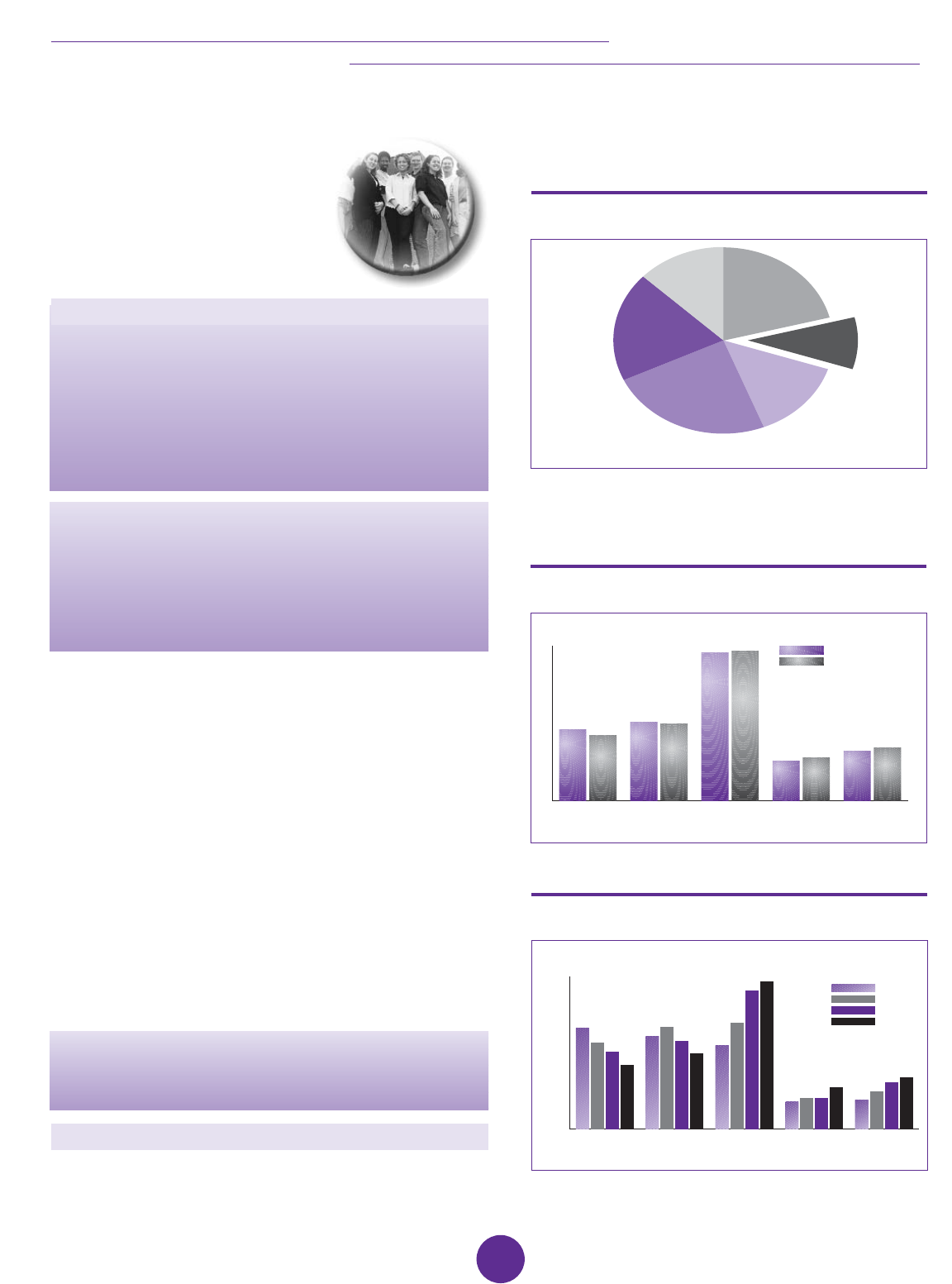
FINAL REPORT AND RECOMMENDATIONS
Stronger Voices
for Youth
Mandate
To examine and make recommendations on
increasing voter turnout in provincial general
elections, particularly amongst young New
Brunswickers, and improving accessibility to the
electoral process in New Brunswick by modernizing
our electoral laws while reinforcing the democratic
rights and responsibilities of New Brunswickers to
vote.
“The high level of cynicism of youth toward our
institutions is expressed though their low
participation rate to the democratic process. Our
democracy is sick, we must act quickly.” Reactions,
from the Fédération des étudiants et étudiantes du
centre universitaire de Moncton, to Options,
November 2004.
The Commission was given the specific mandate of making
recommendations on boosting voter turnout and
participation of young New Brunswickers in the electoral
process. Young Canadians and young New Brunswickers
are today more disengaged and disconnected from the
traditional political process than ever before. A significant
and serious decline in electoral participation by young
people has occurred.
The challenge this represents to our democracy is profound:
since voting is a habit based on an acquired sense of civic
duty, we are in danger of “growing a generation” of non-
voters. Having not voted the first time they were eligible,
many will not vote at subsequent elections. Renewing our
democratic institutions and practices demands that we
examine urgently what is behind this phenomenon and
determine what steps we can take as a province to reverse
this very disturbing trend and address perhaps the most
important democratic challenge facing our province.
“Politics is a turn-off. Politicians would say anything
to get elected. It’s all about a popularity contest.”
Participant, Regional Youth Forum, March 2004.
Youth Voting and Participation
Youth, aged 18-24, make up nine percent of the New
Brunswick population today, a proportion that has been
declining over the years.
Compared to Canada as a whole, New Brunswick’s
population is older, a trend that has been growing for many
years, as the following two charts indicate.
2003
1993
1983
1973
0-14 15-29 30-54 55-64 65+
0
50000
100000
150000
200000
250000
300000
NB is Getting Older
Total population by age group for New Brunswick, by thousands, 2003
Source: Statistic Canada
New Brunswick
Canada
0-14 15-29 30-54 55-64 65+
0
5
10
15
20
25
30
35
40
Source: Statistics Canada
2003 Snapshot of Age Populations:
Canada vs. New Brunswick:
per cent of population
18.28
16.9
20.32
19.84
38.32
38.68
10.24
11.04
12.84
13.55
Source: Projection for NB’s population by age for 2004. Statistics Canada, Annual
Demographic Statistics, 2001
Age Profile of New Brunswick’s population, 2004
0-17
21%
18-24
9%
25-34
14%
35-49
24%
50-64
19%
65+
13%
91
Chapter 5 - Making Your Voice Heard

COMMISSION ON LEGISLATIVE DEMOCRACY
There will be about 39,500 new voters at the 2007
provincial general election. The table below shows an
estimation of the number of youth who will be new voters
for the next three provincial elections.
Number Of Youth Who Will Be Turning 18*
Years Number
2004 - 2007 39, 455
2008 - 2011 38, 984
2012 - 2015 34, 957
* Based on the 2004 demographic projections for
New Brunswick numbers, from Statistics Canada, Annual
Demographic Statistics 2001.
Like other young Canadians, young New Brunswickers
participate in elections at a much lower rate than the
provincial average. This age gap can be seen clearly in the
chart below based on original research conducted for the
Commission by Dr. Paul Howe of the University of New
Brunswick. It shows that while 69 per cent of New
Brunswickers voted in the 2003 provincial election, this
number is estimated to have dropped to approximately 50
per cent of those aged 18-29.
This is consistent with national trends, although perhaps not
as pronounced. An Elections Canada study entitled:
“Explaining the Turnout Decline in Canadian Federal
Elections: A New Survey of Non-Voters” found that voter
turnout in the 2000 federal election amongst young
Canadians between the ages of 18 and 24 was estimated
at around 25 per cent. National turnout for the same
election was 61.3 per cent. Preliminary data from Elections
Canada shows a slight decrease in overall voter turnout for
the 2003 federal election, but a slight increase in turnout
amongst first time voters, which rose by three or four
percentage points. Even with this slight increase, youth voter
turnout remains much lower then the national average.
Young voters have always voted at lower rates than older
voters. This life-cycle effect suggests that voting habits will
eventually assert themselves as voters age. However, the
evidence is that the current generation of young voters are
voting at a significantly lower rate than previous
generations of young voters did. The growing difference in
this age gap suggests that a generational effect is
occurring; an effect that will persist as they age and not
automatically correct itself.
What’s driving this? Many theories have been offered from
a decline in young people’s involvement in community
networks and associations, or social capital, to an increase
in post-materialist values by youth who take prosperity for
granted and place greater value on personal autonomy and
quality of life issues instead. It is also suggested that the
general decline in deference among Canadians towards
their institutions and authority is stronger among youth,
causing them to opt out of voting. A decline in deference
and community sentiment coupled with a rise in
individualism - if younger voters are in fact growing up
under these influences, it reinforces the generational effect
noted above.
The strongest factors, however, can be summed up in three
words: duty, attachment, and interest. Young New
Brunswickers are far less likely than others to agree that
voting is a civic duty. Similarly, they exhibit a weaker
attachment to their community that makes voting an ongoing
investment in that community. Finally, they have less interest
and knowledge in politics and pay less attention to it than
older New Brunswickers - in other words, less civic literacy.
“Voter apathy is due to the lack of political
conversation at home and/or school. The youth
respect the process too much to damage it by
participating and making a bad decision, the key is
education.” Your Turn! Questionnaire,
Spring/Summer 2004.
Dr. Howe’s research indicates that each of these factors has
a direct impact on voting participation by young New
Brunswickers, as the charts below illustrate. When it comes
to duty, only 49.3 per cent of young New Brunswickers
aged 18-29 strongly agree that voting is their duty as a
citizen, compared to 75.1 per cent of all New
Brunswickers. The research also indicates that 65.8 per cent
of New Brunswickers cite a strong attachment to their
community, compared to only 45.4 per cent of young New
Brunswickers aged 18-29.
Ages: 18 - 29 Provincial Average
0
10
20
30
40
50
60
70
Source: Howe, Paul, Voter Participation in New Brunswick and the Political
Disengagement of the Young (research based on the 2003 NBSCS)
in per cent
Adjusted Youth Voter Turnout in
the 2003 Provincial General Election
50%
69%
92

The same research also finds that young New Brunswickers
are significantly less able than other New Brunswickers to
name some provincial premiers; they express a lower level
of interest in politics; and are less likely to read newspapers
three or more hours per week, as the chart below indicates.
When it comes to voting, Dr. Howe’s research finds that the
likelihood of voting is greater amongst those age groups
who score higher on each of the above indicators. This is
not surprising. Information and interest are clearly linked to
both a willingness and ability to participate in the voting
process.
This indicates that a range of solutions must be sought to
reverse this trend of non-participation in the democratic
process by young New Brunswickers. Increased political
knowledge and interest, greater overall civic literacy,
together with a stronger sense of civic duty, must all be
reinforced to boost voter turnout and participation of New
Brunswick youth.
A Profile of Youth and Politics Today
Based on a CRIC presentation in August 2003 prepared
from academic articles and published research, it is
possible to construct a more complete profile of youth
participation and attitudes towards politics.
Youth are far more likely to express confidence in
environmental groups, youth and women’s groups, and
business leaders before expressing confidence in their
political leaders. This confidence declines with those
Canadians who are older, reinforcing the age divide in
attitudes, not just voting. Youth are also somewhat less likely
to agree that voting matters and that their vote counts.
When it comes to participation in organized politics another
divide appears. In their article entitled: Contours of Political
Party Membership in Canada, Dr. William Cross and Dr.
Lisa Young show that only about five percent of federal
political party membership is made up of youth under the
age of 30, compared to 46 percent of members who are
65 years of age and older. The chart below illustrates this.
A further difference in opinion and attitude appears
between younger and older Canadians when it comes to
what might be called “political idealism”. Here, the shoe is
on the other foot. Youth aged 18-24 have a more positive
view of political parties and are less likely to say they are
disconnected from the concerns of average voters compared
to every other age group. In this instance, the most
“cynical” are those aged 55-64. Youth are also more likely
to say that government can be a force for good - 32
percent from the CRIC survey said government can have a
positive impact, compared to 21 percent in the 55-64 age
group. Tellingly, only 25 percent of youth said government
has a negative impact on people’s lives compared to 44
percent of the older age group.
The more nuanced picture is as follows: youth are much less
engaged in the act of voting or participating in the political
process. They think their vote does not matter that much.
They have far less confidence in political leaders than other
leaders and groups. But they retain, or have yet to lose,
their early ideals about the positive impact of government.
This suggests, in the most general way, that there remains
an opportunity to bring those disaffected youth back into the
electoral process.
55-64 years
65 years plus
40-54 years30-39 yearsUnder 30
Party
Members
General
Population
Source: William Cross and Lisa Young, Contours of Membership in Canadian
Political Parties.
Political Participation: Political Parties
Distribution of Party Members, by Age Group
Provincial average
Ages 18-29
Able to name at least 2
of 3 provincial premiers
High level of political
interest
Read newspapers 3 or
more hours per week
0
5
10
15
20
25
30
35
40
45
50
Civic Literacy
in per cent
17%
26.9%
14.9%
45.2%
Source: Howe, Paul, Voter Participation in New Brunswick and the Political
Disengagement of the Young (research based on the 2003 NBSCS)
45.6%
27.9%
Provincial average
Ages 18-29
Strongly agree that it is a duty to vote
Strong attachment to community
0
10
20
30
40
50
60
70
80
Factors that impact youth voter
participation
in per cent
49.3%
65.8%
45.4%
75.1%
Source: Howe, Paul, Voter Participation in New Brunswick and the Political
Disengagement of the Young (research based on the 2003 NBSCS)
FINAL REPORT AND RECOMMENDATIONS
93

COMMISSION ON LEGISLATIVE DEMOCRACY
Hearing from Young New Brunswickers
Given the importance of this issue in our mandate, the
Commission established a comprehensive consultation
process to hear directly from young New Brunswickers. We
partnered with the New Brunswick Advisory Council on
Youth to hold 13 regional meetings and a provincial youth
forum; with Next NB at the University of New Brunswick to
hold a one day student forum; with the Centre for Research
and Information on Canada to receive focus group research
they conducted with young New Brunswick leaders; and
with the Canadian Unity Council’s Young Leaders series
though presentations and group discussions. We also
received formal submissions from the New Brunswick
Advisory Council on Youth, the Fédération des étudiants et
étudiantes du centre universitaire de Moncton, and two
grade 12 classes, one from Oromocto High School and the
other from Fredericton High School.
Young New Brunswickers told us the following:
• Youth do not see the connection between voting and
government decisions that affect them.
• There is a disconnect between politicians and young
people. They do not relate, engage, or interact
effectively with youth.
• Young people don’t care about voting the way older
people do.
• Youth don’t feel qualified to vote. They believe they
lack the political knowledge of how the system works
including some of the fundamentals of democracy.
• Youth do not receive formal civics education.
• It is not the time to go voting when you are starting a
family, buying a house, or going to school.
• Politicians don’t talk about youth issues.
• Youth are more interested in issues rather than
organized political parties.
• The process of politics is too negative, especially the
media coverage.
• The political and voting process is too traditional and
not interesting to youth.
“Young people don’t feel included or comfortable in
the current system,” Your Voice, Your Generation.
Young New Brunswickers and Democracy Forum,
Fredericton, September 2004.
These types of comments indicate a deep sense of
frustration, discomfort and even disillusionment with the
current political process. It is clear that many young New
Brunswickers are alienated from the way politics is
conducted and the relevance to them of voting in the first
place.
Solutions & Strategies
The Commission believes that increasing voter turnout
amongst young New Brunswickers is an urgent issue
requiring comprehensive, long-term, and targeted strategies.
Realistically, no single solution exists and just as it took time
to develop, reversing the current trend will take time to
correct. But we must begin now if we are to achieve lasting
results, by first setting a provincial goal to focus and
mobilize us. That goal must be to raise youth voter
participation to the provincial average within three
elections.
To start us down the path of achieving this goal, the
Commission believes we need to implement the following
four strategies:
First, we must create “active citizens” through the
education system. Students graduating from high school
must have a greater formal knowledge and awareness of
democracy and the political process taught through a
mandatory civics program. They must have the analytical
skills to participate more fully in that process through voting
or other means. In this way, we can reinforce the concept of
civic duty so necessary to voting. The Commission’s
recommendations for a new, mandatory Civics Education
Program, a revised mission statement for the Department of
Education, and working closely with teachers and schools
are aimed at creating “active citizens”.
“Schools must be more opened to society. In the
same line of thought, schools must produce young
citizens capable of interacting within our society,”
Reactions, from the Fédération des étudiants et
étudiantes du centre universitaire de Moncton, to
Options, A Progress Report to New Brunswickers,
November 2004.
Second, we must bring the democratic process into the
schools and classroom giving students practical and fun
exposure to what it is and how it works. It is in the schools
that youth first socialize and participate in many group
activities. We need to bring the world of politics,
government, and democracy to students so they can
experience and learn about it and from it. Initiatives like
mock elections, political fairs, democracy camps, and
legislative seminars will all help make the process more
real, interesting and alive to youth. The Commission’s
recommendations for a “Promoting Democracy in Schools”
program, “Youth Vote NB” (a province-wide mock election
initiative), and a “Democracy Support Fund”, focus on the
important role the school environment can play in giving
students positive exposure to the political and democratic
process.
Third, we must raise awareness of the importance of voting
and the electoral process for young New Brunswickers. To
reinforce the concept of civic duty, the proposed Elections
NB electoral commission can play a crucial role in this
area. Turning 18 should be a rite of citizenship, with a
94

formal reminder and information from the Chief Electoral
Officer that you can now vote. Numerous websites aimed at
youth exist that can be linked to provide helpful, interesting,
and easily accessible information on voting and democracy
in a form that young people are familiar and comfortable
with. The Commission’s recommendations for youth
websites, involving parents, the student legislative seminar
and democracy camps, and a “You Can Vote!” program
will increase awareness amongst young people of
democracy.
Fourth, we must make it easier for youth to vote in ways
they relate to. Fixed election dates in October will facilitate
voting for university and community college students by
giving them more time to register or get enumerated for
voting in a more settled environment. Political parties will be
better able to organize and mobilize them to vote. Online
registration of voters should bring more young people into
the electoral process. New electronic tabulation technology
that allows a voter to choose to have their vote counted in
either their home riding or at the university or community
college where they are studying should facilitate access to
the voting process for students in particular. The
Commission’s recommendations for online registration of
youth, and a “Vote Where You’re At” initiative are aimed at
reducing those barriers to voting that youth cite as an issue
for them.
Stronger Voices for Youth
The future health of democracy depends upon the interest
and participation of the next generation of voters. That
interest and participation is now lacking. It is so well
documented that the only issue is really what should be
done about it. We have many clues as to the core,
underlying social and educational factors affecting youth
participation in the political and electoral process. These
will take time to correct. But a comprehensive range of
initiatives - as recommended by the Commission - aimed
directly at youth beginning in the classroom will, over time,
reap dividends for New Brunswick’s democracy.
Recommendations
The Commission on Legislative Democracy recommends that
the following steps be taken to increase knowledge and
understanding of the democratic process by New Brunswick
students and to boost youth voter participation with the goal
of increasing the turnout of 18-29 year-olds to at least the
provincial average by the 2015 provincial general election:
Recommendation 1
That the Mission Statement of the Department of Education
be amended to formally recognize as a learning outcome
for all graduating students the importance of exercising the
responsibilities of citizenship. The new Mission Statement
would read:
“To have each student develop the attributes needed
to be a lifelong learner, to achieve personal
fulfillment, to exercise the responsibilities of
citizenship, and to contribute to a productive, just
and democratic society.”
Recommendation 2
That a new, mandatory provincial Civics Program from
Kindergarten through Grade12 be fully implemented as part
of the current Social Sciences program in schools beginning
in the 2007-2008 school year. This new civics program, as
outlined in the policy framework on a new Civics Education
Program for Kindergarten to Grade 12 contained in
Recommendation Appendix “J”, would help students
graduate with the knowledge, understanding, and critical
analysis skills necessary to become “active citizens”, able to
understand and participate in democratic activities in their
community, province, and country.
This new Civics Program would build on and be integrated
into the current social sciences program curricula being
taught now at various grades under both the anglophone
and francophone school systems. The program would be
based on the following standards: mandatory for all
students; comprehensive in scope and subject matter;
integrated with current offerings; practical in application;
non-partisan in material; and supported by teachers,
schools, parents, the Department of Education, and the
Legislative Assembly.
Recommendation 3
That the Department of Education work directly with New
Brunswick teachers, as well as experts in other provinces, to
develop flexible, made-in-NB civics teaching resource
kits/learning modules for teachers, students, and schools to
facilitate teaching and learning of the new mandatory
Civics Program. A designated professional development day
or period would be set aside to enable teachers to become
comfortable with the course materials and learn how to best
teach and engage their students in this new mandatory
course.
Recommendation 4
That a “Teachers in the Legislature” partnership program
between social sciences and civics program teachers and
the Legislative Assembly be established under the auspices
of the Speaker to bring together teachers from across the
province to share ideas and learn more about the legislative
and political process in our province.
Recommendation 5
That the following youth education and support activities be
developed to promote youth awareness and participation in
our democratic system, and support the new focus on civics
educational activities in schools and communities:
FINAL REPORT AND RECOMMENDATIONS
95

COMMISSION ON LEGISLATIVE DEMOCRACY
5.1 “Youth Vote NB”
Creating “Youth Vote NB”, a province-wide mock
election program to be held in every middle and high
school in the province in conjunction with the next New
Brunswick election and subsequent provincial and
municipal elections. This youth-run organization,
supported by Elections New Brunswick and Student
Councils, would help organize the program, work with
schools, suggest support activities, and produce and
distribute information on issues, candidates, and
parties.
5.2 Democracy Awareness Program & “You
Can Vote!” Mail Out
Creating a “youth-friendly” democracy awareness
program through Elections New Brunswick aimed at
informing young New Brunswickers about the
importance of the democratic process and voting.
Sending a regular mail out from the Chief Electoral
Officer to young New Brunswickers as they turn 18
explaining what the act of voting means together with
an explanation on our electoral and democratic
system.
5.3 “Promoting Democracy in Schools” Program
Developing a “Promoting Democracy in Schools”
program involving speaking tours by MLAs, political
fairs, election simulations, and debates in schools to
promote a more practical understanding of and
exposure to how our democratic system works. This
would be a uniform policy at the District Education
Council level. These activities are to be non-partisan at
all times.
5.4 Youth Websites
Creating youth-focused websites by Elections New
Brunswick, the Legislative Assembly, and political
parties to engage young people to participate in
voting, politics, and democracy. The Elections New
Brunswick website, in collaboration with Elections
Canada, would provide resource materials aimed at
youth and at helping students and organizations learn
about our democratic institutions and practices. It
would also have youth website links.
5.5 Involvement of Parents
Creating a social marketing program to raise the
awareness of parents regarding the importance of
discussing democratic issues at home and voting with
their children. This could be complemented by a “Bring
Your Child to Vote” initiative at election time and even
a “Bring Your Parent to Vote” initiative.
5.6 Democracy Support Fund
Creating a fund administered by Elections New
Brunswick to support events and activities organized by
youth groups aimed at promoting the participation of
young people in our democratic system. The money
could be allocated to a Student Council, for example,
to organize a mock election or hold a political fair.
5.7 Student Legislative Seminar and
Democracy Camps
Broadening the current Legislative Assembly Student
Legislative Seminar to involve more schools and
students. Establishing Democracy Camps to give young
New Brunswickers who are in high school the
opportunity to spend several days to learn more about
our electoral, democratic and legislative processes.
These camps would be administered by the Legislative
Assembly Office and would gather young people from
across the province.
Recommendation 6
That the following steps be taken to facilitate access by
youth to the voting process and make it easier for them to
vote:
6.1 Online Registration
Encouraging youth voters to register online so as to
ease some of the administrative barriers often faced by
youth and students when facing the voting process,
particularly for the first time. The Chief Electoral Officer
would develop targeted approaches to communicate
with high school, university and college students on the
registration and voting process. These approaches
could include contacting students by e-mail in advance
of elections and developing the interactive component
to the website of the Chief Electoral Officer to answer
queries and provide and receive registration
information.
6.2 “Vote Where You’re At”
Placing polling stations with electronic tabulation
machines on university campuses and in community
colleges so student voters residing outside of their home
constituency can choose to vote and have their ballot
count in their home riding or in the constituency in
which they are studying.
Recommendation 7
That the voting age remain at 18 years.
96

Stronger Voices for Women
Mandate
Fairer, more equitable and effective representation
in the Legislative Assembly.
The Commission was given a mandate to make
recommendations that would result in “fairer, more equitable
and effective representation in the Legislative Assembly”.
Women are one of the most under-represented voices in the
legislature and our democratic process. A 2004 survey by
the Centre for Research and Information on Canada found
that nine out of ten Canadians support “increasing the
number of women in elected office in order to achieve a
well-functioning political system.” Fairer, more equitable
representation in the legislature clearly means electing more
women to the legislature. The record to date in New
Brunswick, however, has been dismal. Unfortunately, there
is little evidence this will change for the better soon without
specific measures taken to redress this problem.
The Commission believes that the time has come to take
significant new steps to ensure the voices of women are
heard in New Brunswick politics.
Representation of Women in New Brunswick
Women received the right to vote in New Brunswick
provincial elections in 1919. It took almost 50 years to elect
the first woman MLA in 1967. It was a slow start that has
remained slow. Despite comprising 51 percent of the
population, at no time in our history have women won more
than 19 percent of the Legislative Assembly seats. More
disturbingly, the last provincial election saw a decline in the
number of women that were elected to the legislature. It
now stands at 12.7 percent, the lowest since 1987.
At 12.7 percent, New Brunswick is currently tied with
Manitoba as having the second-lowest level of women’s
representation in a provincial legislature in the country. It is
well below the level for the Parliament of Canada, at 21
percent. Québec has the best level of representation
amongst provinces at 32 percent, principally because the
political culture in that province encourages the nomination
of women by political parties.
“New Brunswick women were only 19 percent of
the candidates in the last provincial election and
just 13 percent of the elected MLAs, down from
recent years. This imbalance means that the
different experiences and concerns of women are
not adequately represented and undermines the
very legitimacy of government,” Submission by the
Advisory Council on the Status of Women, June
2004.
It is not just in the Legislative Assembly that women are
under-represented. Women make up only ten percent
(1/10) of the Members of Parliament from New Brunswick,
12 percent of mayors, 25 percent of municipal councillors,
and 28 percent of elected Regional Health Authority’s
members. It is only at the District Education Council level
that we see a more acceptable level of representation with
44 percent of women being elected on District Education
Council positions.
The Views of Women
To ensure the Commission heard the perspective of New
Brunswick women in legislative reform, the Commission
struck a formal partnership with the New Brunswick
Advisory Council on the Status of Women to share research
and co-sponsor a provincial forum. The Advisory Council
held a series of regional meetings around the province and
the Council and the Commission jointly sponsored a forum
on “Women and Democracy” in Moncton with over 65
participants. The Advisory Council also submitted two briefs
to the Commission on ways to increase women’s
representation.
Here are some of the main points that were made by a
majority of participants during our different meetings with
women:
• The electoral system needs to be changed to a form of
proportional representation.
Nfld. P.E.I. N.S. N.B. Que. Ont. Man. Sask. Alta. B.C. Nun.
N.W.T.
Yuk.
Can.
0
5
10
15
20
25
30
35
Source: Research Centre on Women and Politics, University of Ottawa and
data from various Legislative Assembly websites
in per cent
Percentage of Women Elected to Provincial
Legislatures Across Canada – Last Elections
1967 1970 1974 1978 1982 1987 1991 1995 1999 2003
0
2
4
6
8
10
12
14
16
18
20
Source: NB Legislative Assembly
in per cent
Percentage of Women MLAs
in the New Brunswick Legislature 1967-2003
1.7%
1.7%
3.4%
6.9%
6.9%
12.1%
17.2%
16.4%
18.2%
12.7%
FINAL REPORT AND RECOMMENDATIONS
97

COMMISSION ON LEGISLATIVE DEMOCRACY
• The political system and culture is very adversarial
which discourages women from running.
• Politics is an “old boys club” that is uninviting to
women.
• There is little effort by political parties to recruit
women.
• Quotas are not the solution to electing more women.
• Financial incentives for parties to nominate women
could be effective.
• There needs to be more education for young people,
especially young women, if we want to change
attitudes.
• Women need to organize to become more effective.
• There must be clear objectives for women’s
representation in the legislature.
• Fixed election dates and fixed legislative sessions
would make it easier for women to plan to seek elected
office.
Institutional Barriers to Women’s
Representation
The Commission’s own research shows that numerous
barriers exist to women running for a party’s nomination
and getting elected to the legislature. These include the
present single member plurality electoral system; party
nomination processes and financial requirements that can
discriminate against female candidates; the adversarial
political culture and environment; and the timetable of
elections. There is no grand conspiracy that keeps women
out. But singly and together, each of these factors acts as a
significant barrier that effectively makes it much less likely
and fundamentally more difficult for women to run and get
elected to the New Brunswick legislature. Each of these
issues is examined below with specific recommendations to
bring these barriers down.
The Electoral System
There is a direct relationship between our single member
plurality electoral system and electing more women.
Comparisons across countries and electoral systems
demonstrate clearly that countries with proportional
representation electoral systems elect a greater number of
women then countries that use the single member plurality
system, as can be seen in the table below.
Percentage of women elected under
different electoral systems in
representative western democracies*
Sweden 45.3 list PR
Denmark 38.0 list PR
Finland 37.5 list PR
Netherlands 36.7 list PR
Norway 36.4 list PR
Argentina 34.0 list PR
New Zealand 28.3 MMP
Australia 25.3 Alternative Vote
Canada 21.1 SMP
United Kingdom 17.9 SMP
United States 14.3 SMP
Ireland 13.1 STV
New Brunswick 12.7 SMP
* (As of 31 July 2004, www.ipu.org/wmn-e/classif.htm)
“This “first-past-the-post” or single-member plurality
system also tends to discourage the election of
women and other under-represented groups, since
parties usually run candidates with the broadest
appeal. The Advisory Council supports the
introduction of a mixed member proportional system
for electing provincial politicians ,” Submission by
the Advisory Council on the Status of Women, in
reaction to Options, a Progress Report to New
Brunswickers, October 2004.
Original academic research conducted for the Commission
by Dr. Joanna Everitt of the University of New Brunswick
(Saint John) and Dr. Sonia Pitre of the University of Ottawa,
identified district magnitude - the number of elected
positions per electoral district - as a principal reason for the
low number of women elected under SMP systems. Under
SMP, the parties can only nominate one member per riding
and will therefore look for who they consider the candidate
most likely to win. More often than not, this turns out to be a
man.
By contrast, under a PR system a party can nominate more
than one candidate on its party list. Accordingly, parties will
almost always nominate a significant portion of women on
their party lists in response to the political pressure from
voters to be as representative of society as possible. Since
votes are allocated under a PR system principally on the
basis of the popular vote a party receives, this means that
more women get elected. A higher position on the list is a
stronger guarantee of getting elected, and it is here that
parties have often adopted internal rules for list nominations
to ensure women have equitable positioning on the list.
98

New Zealand, Scotland, and Wales have all recently
adopted mixed member proportional representation voting
systems. All have elected more women than under our
single member plurality system. New Zealand actually
changed from SMP to MMP in the 1990s. In response, the
percentage of women elected rose from 21.2 percent in
1993 to 29.1 percent at the first MMP election in 1996.
Scotland and Wales were new legislatures dominated by
major parties that adopted proactive measures to ensure
more women were nominated in either the list or single
member seats. Again, the results show a far greater
proportion of women elected in these two legislatures using
a regional mixed member proportional voting system
(similar to what the Commission is recommending) than
New Brunswick’s current single member plurality system.
Percentage of Women Representatives in
Legislatures in Wales and Scotland, 2003 Elections
National Assembly for Wales 50%
Scottish Parliament 39.5%
Under the Commission’s proposed New Brunswick regional
mixed member proportional system, our simulations have
shown that it is very likely that even a woman placing
second or third on the regional list will get elected. The
Commission believes that changing from the single member
plurality system to our proposed regional mixed member
proportional system is essential to electing more women to
the New Brunswick legislature. We further believe that no
significant improvement in the level of women’s
representation is likely to occur in the near future under the
current electoral system.
Party Nominations
Through the nomination process, parties are the real
gatekeepers to the legislature. Women cannot get elected if
they are not first nominated. Since there is no evidence that
women are discriminated against in Canada by voters once
they have become candidates, we must look to the party
nomination process as the first and most significant barrier
outside the electoral system itself.
The experience of women being nominated by parties in
New Brunswick tells the tale. As very few are nominated,
very few are elected. The table below shows the
performance of each political party over the past four
elections in nominating women candidates.
Party culture and attitude has a lot to do with whether or not
women are successfully nominated. The NDP has adopted a
policy of striving for equality in nominations. But as they
have typically been unable to elect more than one member,
it has had little effect on increasing the number of women
MLAs elected.
Strategies
The Commission believes that four strategies must be
adopted to nominate more women: first, encouraging
parties to do so through financial incentives; second,
encouraging women to run by levelling the financial
playing-field and making it easier for women to serve in
politics; third, adopting timetables for elections and the
legislature; and fourth, educating women on how to get
involved in the political process.
The Commission does not believe that party incentives
should include any form of legislated or mandatory quotas
or penalties. That is anathema to our political tradition.
Politics is still a voluntary profession and women should be
encouraged to offer for elected office. It is not clear that
quotas would even work, since nominations are typically the
responsibility of the local riding association. Instead, it is the
parties themselves that should be encouraged to seek out
and nominate more women. This is in recognition of the
central role parties play in our political life, and that a
concerted effort must take place at the party level under the
present single member plurality electoral system if we are to
ever change the current situation. As parties receive a
significant portion of their funding from the province through
tax credits and an annual allocation from the legislature,
there is an obvious obligation on their part to strive to meet
certain democratic goals - including the nomination of more
women. Parties cannot elect women, only voters can. But
parties control the nomination process and it is here that the
Commission believes we must focus most.
Financial Incentives for Parties
The Commission believes that parties should receive
additional funding through the annual allocation they are
entitled to under the Political Process Financing Act if they
nominate more women. Under this allocation formula,
New Democratic
Liberal
Progressive Conservative
1991 1995 1999 2003
0
5
10
15
20
25
Source: Office of the Chief Electoral Officer
Number of Female Candidates by Party,
by Provincial Election 1991-2003
99
25
5
8
20
10
9
24
9
9
15
FINAL REPORT AND RECOMMENDATIONS
99

COMMISSION ON LEGISLATIVE DEMOCRACY
parties are entitled to an annual monetary amount for each
vote they won during the previous provincial election. In
2004 this amounted to approximately $646,000 in total to
the three main parties. This amount is based on a formula
that is adjusted annually with the Consumer Price Index and
is currently $1.73 per valid vote. This provides them with
ongoing financial support from provincial taxpayers for their
operations. It is an investment by the province in the
democratic health and well-being of political parties as the
principal vehicles for democratic expression in New
Brunswick.
This funding formula has been in place for approximately
25 years. Accordingly, it is an established, effective, and
publicly regulated mechanism to support political parties.
The Commission believes that the most effective financial
incentive for parties to nominate more women is one with
which they are most familiar and has proven effectiveness.
The Commission recommends that the amount per valid vote
be increased by $1.00 for parties nominating a certain
percentage of women candidates in future elections. We
believe this would be a significant and effective financial
incentive for political parties to nominate more women.
Two eligibility thresholds for parties to receive this funding
would have to apply: basically, when it kicks in and when it
kicks out. The Commission’s research indicates that a critical
mass in the legislature of women would be around one-third
of all members. This would have a pronounced effect upon
the public discourse in the province and the conduct of the
legislature. The Commission therefore believes that parties
must be “stretched” and should receive the additional
financial incentive only if women constitute at least 35
percent of their candidates in a general election. With an
overall goal of equality of representation in the legislature in
the future, this incentive should be reviewed once the
legislature’s composition reaches 45 percent women. The
Commission believes that with these incentives in place,
New Brunswick can reach an initial goal of electing women
to 35 percent of the seats in the Legislative Assembly within
three elections, or by 2015.
Spending Limits for Nominations
Levelling the nomination playing field will also have a
positive effect on nominating more women. The Commission
heard that many women do not have access to established
fundraising networks. This acts as a deterrent to seeking a
nomination. By setting a spending limit of approximately
$5,000 for nomination contests, as we are recommending
in our chapter on improving party democracy, this will help
level the playing field for women to finance a competitive
nomination campaign.
Timetables for Elections and the Legislature
“That the provincial government set fixed dates for
elections so that candidates and politicians can
make plans to reorganize their paid work and
family commitments to meet their political
obligations.” Submission by the New Brunswick
Advisory Council on the Status of Women, June
2004.
The Commission heard that planning is a particular
challenge for women interested in running for elected office.
The uncertainty of when an election will be held or when
the legislature may meet and conduct business, again acts
as a deterrent to women seeking a nomination. The reality
is that women have more pronounced family or child care
obligations. Political life is difficult and demanding. MLAs
are expected to be “on call” every day, with events and
meetings taking place most weekends and evenings. This
lifestyle is not for everyone and is unlikely to change no
matter who is elected. The Commission’s recommendation
for a fixed election date every third Monday in October,
and for a fixed legislative calendar with set opening and
closing dates of the House, will help alleviate this problem
for women.
Education
It is not enough to simply create the opportunity to
participate - that opportunity must be encouraged. Many
qualified women do not run for elected office because the
political process is unfamiliar to them. They often do not
have the contacts needed to discuss a possible candidacy.
Political parties themselves may not know women who are
possibly interested in running. And they may not be fully
aware of the barriers and challenges within their own
parties to women running for office.
There are several third-party groups in the province at the
provincial, regional, or local level who could act as
facilitators for women interested in entering politics. They
could also help provide information to parties. The
Commission believes that supporting such groups to operate
in a non-partisan way, with the objective of providing
information, education, and mentoring to interested women,
would help create a talent pool of qualified potential
candidates.
Stronger Voices for Women
Our legislature is meant to represent who we are as a
society. A modern conception of democracy supports
hearing more voices in the decision-making process. To
make our voice heard as New Brunswickers, we must
ensure those voices are elected to the public forum that
counts most: the Legislative Assembly of New Brunswick.
The Commission’s recommendations for direct financial
incentives to parties to nominate more women, establishing
spending limits for party nominations, setting fixed election
dates and legislative calendars, and instituting an education
100

program for women and parties will together have a real
and positive effect on encouraging and supporting more
women to seek elected office. The role of parties as
gatekeepers to the legislature cannot be overstated.
Focusing efforts on the party nomination process, as the
Commission is recommending, is a necessary step to bring
about results.
Similarly, the Commission believes these same voices
should, wherever possible, be represented in positions on
government agencies, boards and commissions.
Encouraging the new ABC Appointments Unit to use, as we
are recommending, established databanks with the names
of women as potential applicants for such positions would
facilitate this objective.
Finally, there is the question of accountability. The most
obvious outcome of these measures will be the most visible:
more women sitting in the Legislative Assembly. Parties
should take the proactive step of telling New Brunswickers
what steps they are doing in this whole area. A bi-annual
reporting to the legislature through Elections New Brunswick
of measures they are taking to increase women’s
representation will underscore the importance of this feature
of our democracy and help make your voice heard.
Recommendations
The Commission on Legislative Democracy recommends the
following steps be taken with the goal of increasing the
representation of women in New Brunswick’s Legislative
Assembly to 35 percent by the year 2015:
Recommendation 1
That amendments be made to the Political Process Financing
Act as a way to achieve gender equality in the Legislative
Assembly that would include an increase of the annual
allowance to political parties by $1 per valid vote to any
party in which women comprise at least 35 percent of the
candidates in the preceding provincial election. This
incentive would be reviewed once the New Brunswick
legislature reaches a minimum of 45 percent women.
Recommendation 2
That an educational/policy program be created with the
objective of financially supporting associations in
organizing activities, providing information, or developing
programs that would promote the participation of women in
municipal or provincial politics.
Recommendation 3
That the Elections Act be amended to require political
parties to file with Elections New Brunswick a biannual
report on measures taken to increase women’s
representation in the legislature. Information on the number
and type of positions held by women in provincial and
constituency association executives of registered political
parties would be made public by Elections New Brunswick
as part of its annual report to the Legislative Assembly.
Recommendation 4
That the ABC Appointments Unit be required to actively
solicit applications from women for vacancies on ABCs,
including using established databanks of potential female
applicants.
Stronger Voices for
Aboriginal People
Aboriginal people in New Brunswick have not traditionally
been active in participating or voting in the democratic
process in the province. Aboriginal voter turnout in New
Brunswick provincial elections between 1978 and 1991was
below 50 percent, and turnout by Aboriginal voters in
the1991 provincial general election was measured at 27.6
percent. This compares with a turnout rate for all New
Brunswickers ranging from 75.6 to 82 percent over that
same 1978-1991 period.
Participation by Aboriginal people in the democratic life of
their own First Nation communities is much higher. Over the
1972 to 1992 period, voter turnout in New Brunswick band
elections ranged from 81 percent to 97 percent.
More recently, as part of a study on Youth and Leadership,
the Centre for Research and Information on Canada carried
out in-depth discussions with young leaders in New
Brunswick in April 2004. The Aboriginal participants in the
Fredericton groups were more likely than non-Aboriginal
participants to be interested in politics at the community-
based level; were more aware of local government and
politicians and better able to see the relationship between
government and politics and their everyday life; and were
more likely to feel ownership and responsibility in terms of
their community.
Views of Aboriginal People
In order to seek the views of Aboriginal people in New
Brunswick on the issue of their participation and
representation in provincial politics, the Commission
partnered with the University of New Brunswick’s Next NB
project to hold Talking Circles with First Nations in New
Brunswick.
A Talking Circle is a traditional way that Aboriginal people
discuss issues, concerns, and problems. In a Talking Circle
all persons are equal. The person holding an Eagle Feather
is the only one to speak in the circle on the subject of the
discussion, while the others in the circle listen and learn.
Talking Circles are based on the principles of respect,
harmony, interdependence and balance.
Talking Circles were held at Tobique First Nation and St.
Mary’s First Nation. Planned Talking Circles with members
of the Elsipogtog and Burnt Church First Nations and one
FINAL REPORT AND RECOMMENDATIONS
101

COMMISSION ON LEGISLATIVE DEMOCRACY
with off-reserve Aboriginal people were not held. David
Perley, a member of the Tobique First Nation, facilitated the
Talking Circles. Mr. Perley was a consultant on Aboriginal
education with the provincial Department of Education and
is currently a lecturer with UNB’s Mi’kmaq-Maliseet Institute.
Participants in the Talking Circles were asked to discuss their
views on the reasons for lack of participation by Aboriginal
people in provincial politics, and on having designated
seats in the Legislative Assembly for Aboriginal
representation.
During the Talking Circles, we heard that many Aboriginal
people see participation in provincial elections as going
against their rights, autonomy and goal of self-governance.
While this was not a unanimous view of all Aboriginal
people, it was strongly held and expressed by many of the
participants. It is clear that the idea of designated seats for
representation of Aboriginal people in the New Brunswick
legislature needs much more discussion among Aboriginal
people and the provincial government before any firm
conclusions can be drawn.
In the past, provincial governments have raised the idea of
designating seats in the Legislative Assembly for Mi’kmaq
and Maliseet representatives. The 1991 Representation and
Electoral Boundaries Commission was charged with
considering this idea, but was unable to secure Aboriginal
support for their process or this idea.
The Commission on Legislative Democracy heard that any
further discussion of such representation should envisage a
model wherein Aboriginal representation is full
representation, unlike the Maine model where Aboriginal
representatives in the State legislature do not have full
voting rights. We also heard that such a model would likely
have two designated seats: one for a representative of the
Mi’kmaq people and one for a representative of the
Maliseet people. In addition, any such discussion would
likely have to address the concern that representation of
Aboriginal people in the New Brunswick Legislative
Assembly would not be a revocation of Aboriginal and
treaty rights and claims.
However, the primary message the Commission heard is
that if Aboriginal people in New Brunswick choose to have
discussions on participation and representation in the
legislature, the provincial government should open the door
to such discussions. The most important first step is to
determine if there is interest among Aboriginal people in
having such discussions. From there, a process to engage in
such discussions could be developed collaboratively by
Aboriginal people and representatives of the provincial
government. The focus of any further discussion must be to
bring Aboriginal people into provincial government
decision-making and to help non-Aboriginal people
understand the culture and unique realities of Aboriginal
people.
Recommendation
The Commission on Legislative Democracy recommends that
the following step be taken to increase the voices of
Aboriginal people in the democratic life of New Brunswick:
Recommendation 1
That the Government of New Brunswick invite New
Brunswick’s Aboriginal people to meet, discuss and develop
an appropriate process to seek the views of Aboriginal
people on representation of Mi’kmaq and Maliseet people
in the Legislative Assembly of New Brunswick and on their
role in the democratic life of New Brunswick.
102

FINAL REPORT AND RECOMMENDATIONS
103
A Referendum Act for
New Brunswick
Mandate
To examine and make recommendations on
enhancing direct democracy by proposing a New
Brunswick Referendum Act that sets out the rules
and procedures for allowing province-wide, binding
referendums on significant public policy issues.
We live in a representative democracy where we elect
members to represent us in the Legislative Assembly.
However, public trust and confidence in our political
institutions and in our elected representatives is quite low.
As a result, people want a stronger voice in decision-
making by their governments. This has led governments and
others to consider the use of referendums.
Referendums provide perhaps the most direct form of public
input into decision-making that exists in a democracy. They
have been used by governments in New Brunswick and in
Canada as a means to complement representative
democracy, by allowing the government and the legislature
to seek public guidance on important and often
controversial issues, and allowing voters to participate more
directly in decisions affecting them. In the past ten years,
Canadians have voted in national and provincial
referendums on issues ranging from constitutional change to
Sunday Shopping.
Recent Referendums Across Canada
2004 – Nova Scotia on allowing Sunday Shopping
2001 – New Brunswick on retaining VLTs
1997 – Newfoundland and Labrador on retaining
denominational schools
1995 – Quebec on sovereignty-association
1992 – Canada on approving the Charlottetown
Constitutional Accord
The principle of direct democracy embedded in referendums
is, however, contrary to the principle of representative or
indirect democracy where we elect MLAs to take decisions
on our behalf. No government in Canada has resorted to
referendums as a regular or effective tool of decision-
making, or even public consultation. Numerous concerns
surround the use of referendums to take political decisions
or make public policy, particularly as they affect minorities
and their rights. They can be divisive in outcome and
unclear in results. Instead of fostering political legitimacy,
they can undermine it. Nevertheless, there may be some
issues and certain exceptional circumstances in which the
decisions of people exercised through a referendum process
can be sought and acted upon.
Use of Referendums in New Brunswick
“There is no doubt that referendums can breathe
new life into representative democracy. These days,
it seems that they have become the panacea for the
infamous “democratic deficit”. However, it is
necessary to proceed with caution and be mindful
of certain issues associated with the use of
referendums.” Draft research paper, “The
Referendum Experience in New Brunswick” by Dr.
Chedly Belkhodja for the Commission on Legislative
Democracy.
Referendums have been used infrequently in New Brunswick
on a province-wide basis. In the past 40 years there have
been two provincial referendums: one in 1967 on whether
the voting age should be lowered from 21 to 18 years, and
one in 2001 on retaining Video Lottery Terminals (VLTs) in
the province. In the first case, the results of the referendum
were advisory only, while in the second, specific legislation
drafted for the holding of the referendum made the result
binding on government.
In 2003, the New Brunswick legislature passed a Taxpayer
Protection Act. It would require a referendum to be held if
the government wants to introduce a new tax, increase the
HST, or place tolls on a provincial highway. The results of
any such referendum would be binding on the government
to act. This Act has not been proclaimed.
The Municipalities Act also has a “plebiscite” provision
allowing for individual municipalities to ask voters to decide
on a particular local governance issue. To pass, a question
must receive at least 60 percent of votes cast.
However, New Brunswick has no general legislation setting
out consistent principles and procedures to be applied if a
referendum is held. The federal government and five
provinces have this type of specific referendum legislation.
A table comparing referendum legislation in other
jurisdictions is found in Background Appendix “XII”.
Should New Brunswick wish to hold referendums in the
future, a specific Referendum Act is essential. It is important
that clear rules of the road exist for the holding of
referendums, the participation of various interests, the
development of a clear question, and the counting of votes.
This is the case for elections. It should also be the case for
referendums.

COMMISSION ON LEGISLATIVE DEMOCRACY
104
What We Heard From New Brunswickers
“Non-elected people should have the right to
participate in government decision-making process
by either plebiscite or referendum.” Community
Leaders Roundtable, Miramichi, May 2004.
We expect our elected officials to make the
decisions, not the public through referendums,”
Community Leaders Roundtable, Saint John, May
2004
New Brunswickers were by no means unanimous in their
views on referendums, as the quotes above suggest.
Respondents to our website questionnaire were also split on
the appropriateness of referendums.
Several of the associations which submitted briefs to the
Commission, especially those from francophone
organizations in the province, cautioned strongly against
the use of referendums in general because of their potential
to divide, and to allow majorities to override the rights of
minorities in the province. Others, like the Advisory Council
on the Status of Women, were more disposed to the use of
referendums, but only if they were limited to exceptional
circumstances, had appropriate financial and spending
guidelines, and were binding on government to act. The
Commission considered all of these views in arriving at its
recommendations.
Key Considerations Around a Referendum Act
for New Brunswick
Several important questions must be addressed in proposing
a Referendum Act for New Brunswick to ensure that
referendums held in our province are fair, open and
efficient.
What kinds of issues should be decided by
referendum?
A criticism of the use of referendums is that they can
weaken the will of legislatures and governments to deal with
difficult issues. Governments can and should address
complex and controversial matters by seeking the views of
citizens on these matters, deciding on a course of action
and allowing a full debate on the issue in the legislature.
Also, referendums can lead to divisions among the
population and can potentially undermine minority rights
through the votes of the majority. This is discussed in more
detail below.
The Commission is of the view that resorting to referendums
on a regular basis and using them as a tool to replace
decision-making by the legislature and government would
be an unacceptable practice. As we have seen,
referendums are not a regular feature of our democracy in
this province, which indicates that governments have
implicitly acknowledged their exceptional nature.
The Commission believes that a Referendum Act for New
Brunswick must state explicitly that referendums should be
used under exceptional circumstances only and for
exceptional issues only. In the Commission’s view, issues
that would be considered exceptional would be those that
have a significant impact on the province as a whole, such
as seeking ratification by voters of an amendment to the
Canadian Constitution or of a fundamental change to the
province’s electoral system as recommended in this report.
“Clearly, direct democracy in a province comprising two
linguistic communities has the potential to stir division
and confrontation. That makes it an instrument to be
handled with much circumspection and discernment.
Having said this, the use of referendums in New
Brunswick should not be systematically ruled out, but
referendums should be subject to strict rules regarding
compliance with the Canadian Charter of Rights and
Freedoms and the four underlying constitutional
principles mentioned earlier [federalism, democracy,
constitutionalism and the rule of law, and respect for
minority rights].” Issues for New Brunswick’s Acadian
Community, Draft research paper by Dr. Roger Ouellette
for the Commission on Legislative Democracy.
How can minority rights be protected?
We heard from academic experts and representatives of
community organizations, especially francophone and
Acadian associations, that referendums can create and
exacerbate divisions among linguistic, cultural, and religious
communities. While this does not need to be true, there is a
very real, serious, and legitimate concern that the majority
could override the rights of minority groups through
referendums. It is an issue to which the Commission has
given much consideration in its deliberations on
referendums.
New Brunswick has been at the forefront of the protection of
minority rights, especially the rights of francophones and of
the francophone linguistic community. Through the
Canadian Charter of Rights and Freedoms (“the Charter”),
New Brunswick’s Official Languages Act, and An Act
Recognizing the Equality of the Two Official Linguistic
Regularly Occasionally Never
0
5
10
15
20
25
30
35
40
45
in per cent, based on 215 respondents
Source: Commission on Legislative Democracy
Should referendums be held regularly, occasionally,
or never?
40.9%
41.4%
17.7%

Communities in New Brunswick, the English and French
languages have equality of status and equal privileges as to
their use in all provincial institutions, and the equality of the
province’s two linguistic communities is expressly
recognized. Other minority rights are protected through the
Charter and the New Brunswick Human Rights Act.
The Commission believes that limiting referendums to
exceptional issues only is an important component of
addressing the concern that established minority rights could
be overridden by a majority of voters in a referendum. The
Commission further believes that the use of a referendum
should be prohibited in any case where the purpose of the
referendum question is to undermine or diminish the minority
rights protected through the Charter and the other
legislation mentioned above, or any other act that supports,
protects, or advances minority rights in the province.
Who should initiate a referendum?
In some jurisdictions in Canada, for example British
Columbia, citizens may initiate a referendum to introduce a
new piece of legislation or amend an existing law by
obtaining a certain level of support from voters in the
province, as evidenced by their signatures on a petition.
In BC, the threshold of signatures required on a petition for
an initiative to proceed to a vote is ten percent of the
registered voters in each of the electoral districts of the
Province, who were registered to vote on the date the
petition was issued, obtained within a 90-day canvassing
period. Although six initiatives have been approved in
principle by the Chief Electoral Officer since BC’s Recall
and Initiative Act was introduced, none has succeeded,
either because the proponent did not receive the required
number of signatures or they failed to file the petition in the
time frame required.
The BC experience indicates that referendums initiated by
citizens - or citizen’s initiatives as they are commonly called
- can be quite problematic. The threshold of support for the
initiative must be high enough to prevent a proliferation of
initiatives and therefore not create the divisiveness discussed
above.
In the interests of ensuring that referendums are only used in
exceptional circumstances, and that they create the least
amount of division among communities possible, the
Commission believes that only government should be able
to initiate a referendum.
How should the question be set?
Yes or No
A referendum is a vote on an issue. It is essential that the
question put to voters in the referendum be clear and easily
understood. The Commission believes that a Referendum Act
for New Brunswick should require that the question put to
the people be one which can be answered by simply
marking, yes or no. The recently-announced PEI Electoral
Reform Commission was given a specific mandate to
develop “a clear and concise” plebiscite question on
adopting a new proportional representation electoral
system, demonstrating the importance of this aspect of
referendums.
Approval of Question
As noted above, the Commission believes that government
should not propose any referendum question, which has as
its purpose the undermining or diminishing of minority
rights. The Commission believes a further approval process
involving the Legislative Assembly is necessary to ensure the
referendum question is clear, unambiguous and free of any
bias, unintended or not.
To this end, the Commission recommends that prior to any
referendum being held, the government should submit its
proposed referendum question to the legislature for its
approval. Following a period of consultation with the Leader
of the Opposition and the leaders of other parties
represented in the House, the government would table the
question in the Legislative Assembly and a Committee of the
House would then be established to consider the wording of
the referendum question.
It would be open to the Committee to hold public hearings
on the question and hear from expert witnesses on the
issues related to the question, if necessary to assist the
Committee in its work. The Committee would report back to
the Legislative Assembly with its recommendations on the
wording of the question, for debate and a vote of all
members.
What size of majority is required for a
referendum to pass?
Because of the exceptional nature of referendums, and the
desire to ensure minority rights are not undermined, some
jurisdictions in Canada and around the world require more
than a simple majority of votes (50 percent + one) for a
referendum question to pass. For example, BC has
introduced special legislation for a referendum to be held at
the time of the next provincial election on changing the
electoral system in that province. For the referendum to pass
and become binding on the provincial government, the
referendum would have to win with a “double majority” of
60 percent of valid votes cast province-wide representing
60 percent of total ridings. This is known as a “super
majority”.
Other jurisdictions demand a “double majority” requiring
both a majority of votes in favour of the question, and a
minimum level of voter turnout, for example, 50 percent.
The rationale for adopting this type of double majority is to
ensure legitimacy of the referendum results. If a referendum
was held and voter turnout was extremely low, it may be
that the people who stayed home were in fact against the
referendum question. Therefore, even if a majority of those
who voted cast their ballots in favour of the question, the
validity of the result is called into question.
The Commission does not agree that a super majority
requiring both a majority or greater of votes cast and the
support of a majority of areas of the province, is necessary.
In light of our recommendations that referendums only be
held on exceptional issues, that they never be held on a
question that has as its purpose the undermining or
diminishing of minority rights, and that the referendum
question be approved by the members of the legislature, we
FINAL REPORT AND RECOMMENDATIONS
105

believe these provisions would provide sufficient protection
for minorities in the province.
However, the Commission is concerned with the legitimacy
of referendum results and therefore recommends a double
majority with a turnout threshold, as follows: the referendum
would pass if more than 50 percent of valid votes are in
favour of the referendum question and at least 50 percent of
eligible voters voted in the referendum.
Should the results be binding on the government?
Since referendums should only be used under exceptional
circumstances for exceptional issues only, a government that
initiates such a referendum will have thought long and hard
about the consequences prior to taking steps to hold a
referendum under the principles and procedures the
Commission is recommending. Therefore, the Commission
believes that, provided the double majority described above
is reached, the result of the referendum should be binding
on the government that initiated the referendum to take the
steps necessary to implement the result.
Timing - when should referendums be held?
Referendums are a huge administrative undertaking. Every
eligible voter must have the opportunity to vote at a
referendum, making the cost of administering a referendum
approximately equivalent to the cost of holding a provincial
general election. The Commission therefore recommends
that referendums be held at the same time as a provincial
general election or with the quadrennial municipal elections.
This would realize cost savings and reduce the burden on
the Office of the Chief Electoral Officer, as the election
machinery required to prepare the voters list, staff polling
stations, count ballots and so forth will already be in place.
How should referendums be administered?
The legitimacy of a referendum depends on it being
administered in a fair, transparent, and neutral way. Since it
is the government that makes the decision to initiate the
referendum and proposes the referendum question, the
legitimacy of the result would be called into question if it is
perceived that the referendum was controlled or directed by
the government in order to achieve a certain outcome. The
Commission therefore recommends that all referendums be
administered independently by Elections New Brunswick.
What rules should govern financing and spending
in a referendum?
New Brunswick has extensive regulation of political parties
and spending by parties and candidates during election
campaigns to make them fair and free of influence. Similar
rules should apply to the conduct of referendums and be
administered by Elections New Brunswick. However,
political parties are not the main actors in a referendum
campaign. Interest groups or ‘third parties’ who have a
stake in the outcome of the referendum are usually the ones
who take the lead in campaigning for or against the
referendum question. The interest groups on either side of
the question involved may have vastly different resources to
work with. This raises the fear that a referendum can be
‘bought’ by the side with the most money and influence.
The Commission believes that referendum campaigning, like
election campaigning, should be regulated in order to level
the playing field. The Commission believes that such
regulation needs to include spending limits, contribution
limits, and disclosure requirements along the same lines as
those in the Political Process Financing Act. These should
include:
Registration
A first step in regulating the referendum campaign is to
provide a mechanism for the Chief Electoral Officer (CEO)
to know who the players are. To do this, any individual or
group that plans to incur expenses for the purpose of
supporting or opposing the referendum question should be
required to pre-register with the CEO. This will promote
transparency in the process.
Referendum Committees
Campaigning should be conducted through official
Referendum Committees established for each side of a
referendum question and registered with the Chief Electoral
Officer. Only these committees may make expenditures in
excess of $1,000. Individuals or groups wishing to incur
expenses of $1,000 or less for advertising should be
required to register with Elections New Brunswick for
transparency purposes, but not be required to participate
through an official Referendum Committee.
Spending Limits
The Referendum Committees and their affiliates should be
limited to spending no more than $0.75 per voter during
the course of a referendum campaign. This amount would
be approximately $400,000 on a province-wide basis,
which is about one-half of what a political party may spend
in the course of a general election campaign. At the same
time, this amount will allow effective province-wide
campaigns to be conducted by the Referendum Committees.
Contribution Limits
We recommend that limits on contributions to official
Referendum Committees be set at no more than $3,000 for
an individual, corporation, trade union, or political party.
(Again, one-half of the current amount permitted on an
annual basis for each political party.) All contributions over
$100.00 to an official referendum committee would be
disclosed.
How should voters get information?
Elections New Brunswick should be mandated to provide
the public with appropriate information from both the “yes”
and “no” committees, to assist voters in making an informed
decision.
COMMISSION ON LEGISLATIVE DEMOCRACY
106

A Referendum Act for New Brunswick
The Commission believes that referendums should only be
held in New Brunswick on an exceptional basis. Any
referendum should be initiated by government only and be
binding. Minority rights should be protected. Referendums
should be independently administered with clear financial
rules and procedures governing contributions and spending.
The Commission’s recommendations set out how, when, and
on what basis referendums should be undertaken in New
Brunswick. They will ensure that referendums held in New
Brunswick are fair, open, and transparent - to make your
voice heard.
Recommendations
The Commission on Legislative Democracy recommends that
the following principles and provisions be adopted as part
of any New Brunswick Referendum Act in order to ensure
that referendums held in New Brunswick are independent,
fair, open, transparent and efficient, and encourage the
participation and involvement of New Brunswickers:
Recommendation 1
That the following principles governing the use of
referendums in New Brunswick be incorporated in a
Referendum Act:
1.1 Exceptional Issues – referendums should be held on
exceptional issues only.
1.2 Minority Rights Protection – no referendums
should be held that would have the purpose of
undermining or diminishing minority rights as set out in
the Canadian Charter of Rights and Freedoms, New
Brunswick’s Human Rights Act, New Brunswick’s
Official Languages Act, An Act Recognizing the
Equality of the Two Official Linguistic Communities in
New Brunswick, or any other act that supports,
protects, or advances minority rights in the province.
1.3 Initiated by Government – referendums should be
initiated by government only, not by citizens in the form
of citizen initiatives.
1.4 Clear Question – a referendum question should be
clearly written so that it can be answered with either a
“yes” or “no” response.
1.5 Binding on Government – results of referendums
should be binding on the government to act.
1.6 Double Majority Support – referendum results
should be binding only when more than 50 percent of
valid votes are in favour of the referendum question
and at least 50 percent of eligible voters voted in the
referendum.
1.7 Independent & Transparent – referendums should
be independently supervised by Elections New
Brunswick with strict financing, disclosure, and
advertising rules to ensure a level playing field for all
sides with disclosure to voters of who may be funding
or supporting each referendum side.
Recommendation 2
That the following key provisions regarding the independent
supervision and administration of referendums in New
Brunswick be incorporated in a Referendum Act:
2.1 Timing – referendums should be held at the same time
as provincial or municipal elections. In an exceptional
circumstance, government could hold a referendum on
a day other than an election day.
2.2 Consultation and Debate on the Question –
Government would consult on the wording of the
question with the Leader of the Opposition and the
leaders of other political parties represented in the
legislature, and the referendum question would be
tabled, debated, and adopted by the legislature.
2.3 Referendum Committees – An official referendum
committee for each side of a referendum question be
formally established and registered with the Chief
Electoral Officer. Only these committees may make
expenditures in excess of $1,000.
2.4 Spending Limits – Official referendum committees
and their affiliates together be limited to spending no
more than $0.75 per voter during the course of a
referendum campaign, and all expenditures be audited
and reported to Elections New Brunswick.
2.5 Contribution Limits – limits on contributions to
official referendum committees be set at no more than
$3,000 for an individual, corporation, trade union, or
political party.
2.6 Financing Rules – names of contributors of over
$100 to an official referendum committee be disclosed
to Elections New Brunswick.
2.7 Registration –individuals or groups wishing to incur
expenses of $1,000 or less for advertising be required
to register with Elections New Brunswick for
transparency purposes, but not be required to
participate through an official Referendum Committee.
2.8 Information to Voters – Elections New Brunswick
mail to voters a sample referendum ballot and
information containing the arguments for and against
the referendum question at least 25 calendar days in
advance of voting day.
Recommendation 3
That the policy framework for a draft Referendum Act for
New Brunswick contained in Recommendation Appendix
“K” be considered as a proposed framework for a new Act.
FINAL REPORT AND RECOMMENDATIONS
107
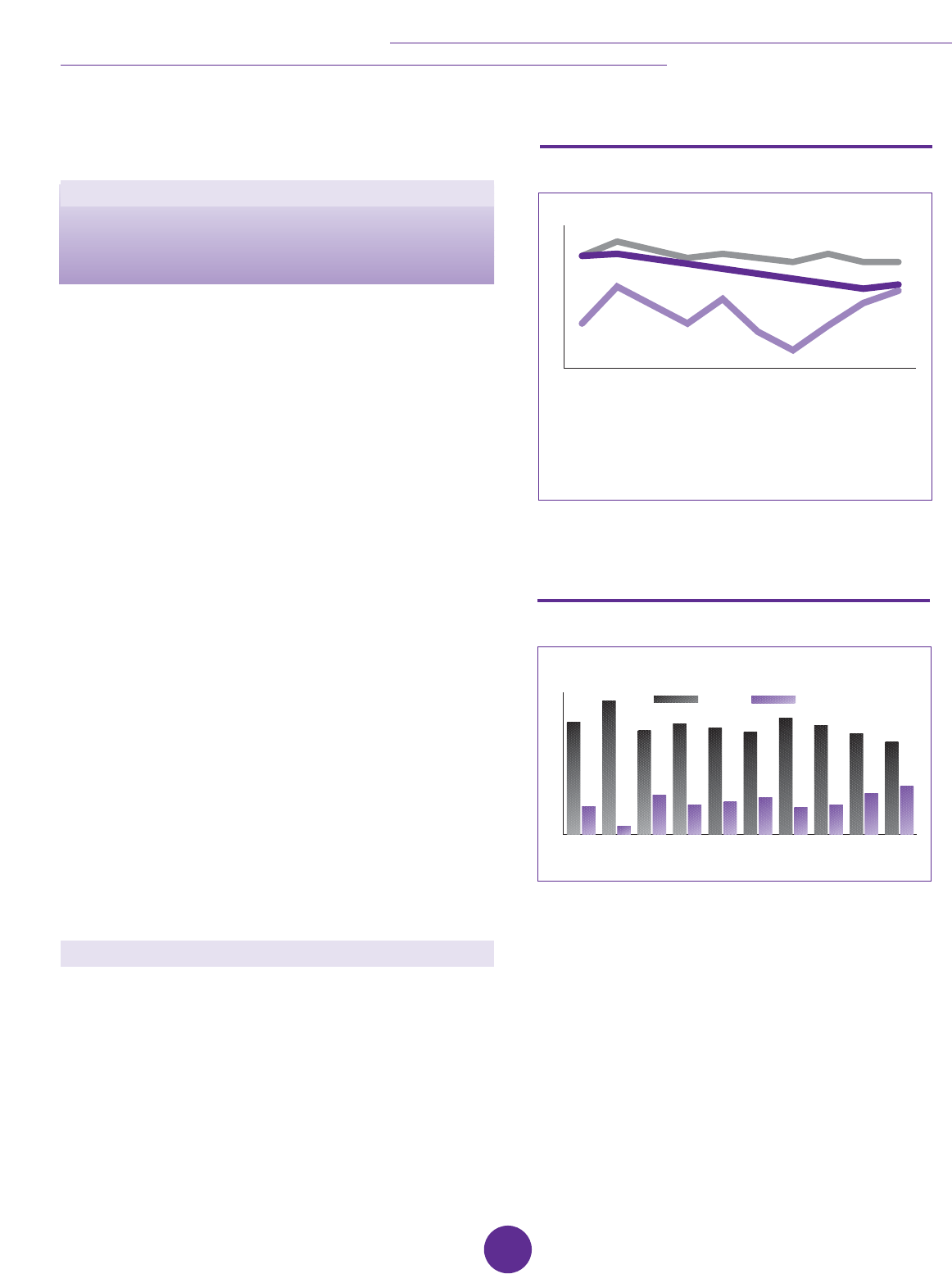
COMMISSION ON LEGISLATIVE DEMOCRACY
Participatory Democracy
and Citizen Engagement in
New Brunswick
Mandate:
To examine and make recommendations on
enhancing public involvement in government and
legislative decision-making.
New Brunswickers want their voices heard when
governments take decisions. They want a direct say in
certain aspects of decision-making. Civil society
organizations - voluntary and community-based
organizations - are also seeking more involvement in policy
development and greater political access to decision-
making. People are asking for information when decisions
affect them directly. They are increasingly insisting on
receiving feedback from government when they are
consulted.
It is not the case that citizens want to displace their elected
representatives and public servants with themselves as the
ultimate decision makers. There are no calls for a move to
systematic direct democracy in our province. Rather, it is a
desire to make our form of responsible government and
representative democracy more responsive to people.
Citizens are unwilling to write government and MLAs a
‘blank cheque’ every four years after one election and
simply wait until the next election to pass judgment. To
many people, government is seen as an ‘interest’ like any
other, with its own motivations and objectives that may not
completely reflect those of citizens. People want an ongoing
opportunity to interact with government, have their views
sought, and give their opinion. In short, citizens are
demanding democracy more and more on their own terms.
The challenge for government is clear: to connect better with
citizens; to hear their views, and seek their input into
decisions, while ensuring government’s ongoing ability to
take decisions in the best interests of the province as a
whole. The objective for government is equally clear: to
have more meaningful engagement with citizens leading to
improved trust and confidence in government.
The “Big Picture” Problem
What’s behind this state of affairs? What’s the ‘big picture’
problem with which we are dealing?
Many of the reasons have been noted earlier in this report.
Lower trust and confidence in governments and leaders and
a general decline in deference towards institutions are
major contributing factors. A disconnect between citizens
and their governing institutions is apparent. There is no
question that people look at their politicians far differently
than before. A recently released survey by the Centre for
Research and Information on Canada shows how
confidence in political leaders remains below that of other
leaders in our society, although the more recent trend line
has been positive.
Similarly, there is some evidence that the way the media
reports the activities of politicians and governments has
been a contributing factor to this decline in trust in the view
of many Canadians.
An additional factor appears to be information and the
sense of empowerment that goes with it. Citizens have far
more avenues - from the Internet to e-mail to 24-hour news
channels - to gather information and communicate than ever
before.
The problems faced by governments - health care
sustainability, education achievement, fiscal capacity,
economic growth - are large and complex. They are difficult
to explain quickly to people and do not lend themselves to
obvious consultation processes. They defy instant or easy
solutions. Yet, the demand for the latter from people often
outpaces the realities of the former, causing people to
become disenchanted. To complicate matters, these long-
term challenges are themselves challenged by various short-
Disagree
Agree
Nfld. P.E.I. N.S. N.B. Que. Ont. Man. Sask. Alta. B.C.
0
10
20
30
40
50
60
70
80
90
100
Source: Environics Focus Canada / Canadian Opinion Research Archive,
Queen’s University, 2002
The Media and Politics
Do you strongly agree, agree, disagree or strongly disagree with each of the following
statements? Political leaders often look bad because the news media focus their
attention on the mistakes they make rather than the things they do right
Business Leaders
Religous Leaders
Political
Leaders
1983 1985 1986 1987 1988 1990 1992 1995 2002 2004
10
20
30
40
50
60
70
80
2002-2004: Can you tell me if you have a great deal of confidence, some, not very much, or
no confidence at all in each of the following: political leaders; religious leaders; business
leaders.
1983-1995: Can you tell me if you have a lot of confidence, some confidence, little
confidence or no confidence at all in the following persons or organizations, political
leaders; religious leaders; business leaders. Source: Environics Focus Canada / Canadian
Opinion Research Archive, Queen’s University.
Source: Environics Focus Canada / Canadian Opinion Research Archive,
Queen’s University.
“A lot /some confidence” or “a great deal/some confidence”
Confidence in Leaders (1983 - 2004)
108

term interests and time pressures upon government to take
any sort of action, even if this appears contradictory to the
long-term need.
The most effective mechanisms and processes for meaningful
engagement by government with citizens vary from issue to
issue. Some work better than others. The Working Group on
Violence Against Women was cited by many to the
Commission as a model mechanism to collaboratively
develop solutions with stakeholders. But to many civil society
groups, this is too often the exception, rather than the usual
way of doing business.
The ‘Small Picture’ Problem
There’s a ‘small picture’ problem as well - how citizen
engagement actually happens. For citizens willing and able
to engage in consultation with government, there are still
barriers to effectively doing so. Often there is a lack of
easily accessible information on the issues being discussed.
Insufficient time may be provided to give views. The
consultation method is sometimes ‘forced’ upon groups and
citizens, requiring them to fit the model or process, rather
than having a process crafted around their needs. When
asked for their input, citizens and groups might receive no
guarantees that it will actually be listened to by government.
In turn, the feedback they want in exchange for their input
can equally be lacking. These problems can compromise
any consultation or engagement process, fostering even
more frustration on the part of people.
Citizen Engagement - What Do We Mean?
There are several definitions of citizen engagement. The
Organization for Economic Co-operation and Development
gives this definition:
“Active participation recognizes the capacity of citizens
to discuss and generate policy options independently. It
requires governments to share in agenda-setting and to
ensure that policy proposals generated jointly will be
taken into account in reaching a final decision.”
Many of the small and big picture problems cited above
find their way into this definition - “capacity” implies the
need for information as well as the ability of civil society to
actually be able to participate; “jointly” implies
collaboration between government and citizens; “taken into
account” implies some form of guarantee of listening by
government; “share in agenda-setting” implies a mutually-
developed consultation process.
There is a way of situating public participation and citizen
engagement processes in decision-making, as the figure
below demonstrates.
At the low end of participation is “information” provided by
government. This could take the form of government
statistics or a background policy paper. But information
without a process to hear from citizens is useful, but not
really helpful to bring citizens more directly into the process.
At the high end is “empowerment”, where citizens are
actually given authority to make decisions. Examples of this
include District Education Councils (DECs) and Regional
Health Authorities (RHAs). Moving upward along this scale
leads to more active citizen engagement.
What New Brunswickers Are Saying
The Commission heard from many New Brunswickers
saying they wanted more of a say in decisions affecting
them and their communities. Interestingly, respondents to the
Commission’s website questionnaire were not insisting on a
say on all issues, just ones that were most important to
them. This typically included health care, education, local
governance, and the environment. Respondents also had
suggestions on the best means to engage with them. The
table below shows that town hall meetings with their MLA
and public hearings were most preferred.
“You need to get out and meet people where they
are at.” Roundtable on Civic Engagement, Saint
John, October 2004.
Unimportant
Not that important
Neutral
Somewhat important
Very important
Consultation
Papers
Public
Hearings
Government
website
Mailings
from MLA
Legislative
committee hearings
MLA town
halls
Direct public
input in Leg.
0
5
10
15
20
25
30
35
40
45
in per cent, based on an average of 221 respondents
Source: Commission on Legislative Democracy
How effective are the following ways for
government to listen to your concerns?
Inform
Consult
Involve
Collaborate
Empower
Source: Commission on Legislative Democracy
Public Participation Spectrum
FINAL REPORT AND RECOMMENDATIONS
109

COMMISSION ON LEGISLATIVE DEMOCRACY
The Commission co-sponsored a Roundtable on Civic
Engagement in Saint John on October 7, 2004, with
PolicyLink NB, a multi-sectoral network of federal and
provincial departments, voluntary associations, business
groups, and academics. Over 25 participants gathered to
discuss the challenges and solutions to better citizen
engagement in the province. Roles and responsibilities were
assessed. The main themes reached by participants were:
• There is a need for more overall and regular
engagement by government with community groups.
• Community groups should be seen as experts in their
areas who can facilitate understanding of community
issues for government.
• It is difficult under current structures and processes to
access politicians as key decision-makers.
• There is a need to move beyond consultation to
collaboration and empowerment.
• No one model of effective consultation or engagement
exists; it needs to be adapted to groups and issues.
• Relationship-building to build trust is necessary for
successful civic engagement.
• The capacity of civil society organizations to engage in
meaningful consultation is limited by their resources
and time of staff and volunteers.
Changing Relationship - Changing Needs
The implication of more meaningful citizen engagement is a
stronger participatory democracy in which citizens share
more of a role in setting the agenda of government and
participating in the decisions of government. This means a
changed relationship between government and “the
governed” that is not easily defined.
“We recommend that the New Brunswick
government actively promote and expand
mechanisms for bridging the gap between citizens
and government, so that groups and women from
diverse realities may become true players in the
decision-making process.” submission by the NB
Advisory Council on the Status of Women, October
2004
It also raises substantial questions about the current capacity
of citizens and civil society to actually engage with
government, however much they may want to. People are
busy with their own lives. Many are already active in their
community, giving what spare time they have. Civil society
groups at the community level are in many ways closer to
people and problems. They can bring a practical
perspective on issues and solutions. Many, however, have
limited means and resources to engage in broad-based
policy development. Association volunteers are stretched
providing services, often preferring this commitment of their
time to attending meetings with government, particularly if
they are not convinced it will lead to something.
Government itself can be hampered by its own culture and
procedures. Getting information from government on policy
issues, options, and statistics is not always easy. Public
servants are often on the front lines dealing with people and
communities, particularly at the regional level. But policy
making is typically a central function of a department or
government as a whole that may not effectively bring these
views into the process. At the same time, public servants are
for the most part accountable ‘upwards’ in their
departments, and not always measured for their
performance in dealing with citizens. Individual departments
have their own policy branches that operate in silos, but
public policy issues today cut across departments. Skills
development issues, for example, could touch the
departments of Training and Employment Development,
Education, Family and Community Services, Health and
Wellness, Finance, and Business New Brunswick. Citizens
and groups do not fit into departmental silos. This suggests
that the structures and processes of government policy
development requires a ‘re-think’ as to how it is can best be
organized to seek meaningful input on a regular, consistent
basis from citizens and communities.
Consultation occurs, but how well is it practiced?
Consultation is a professional skill requiring specific tools
and expertise. Again, some departments are better
equipped than others to undertake this task. There is a need
to build up this capacity government-wide so it can
effectively meet the demands and expectations of citizens
and civil society.
The Prospect of e-Democracy
Rapid advances in information and communications
technologies (ICTs) are redefining how we communicate,
work, live, and play. Can it redefine our democracy and
how we engage with each other? Is e-democracy just
around the corner?
Information and knowledge have become the principal
drivers of economic growth and prosperity worldwide. ICTs
are realigning traditional governance relationships and the
notion of service to citizens. From paying your tax bill to
getting a moose licence, more and more online services are
now being provided. Service New Brunswick is increasingly
recognized as a Canadian and world leader in the
provision of online services, recently signing agreements
with the Government of Québec and the International
Teledemocracy Centre in Scotland.
The boundaries between government and citizens are
changing. With government as the single largest producer
of information, there is a need to consider information as a
public resource, essential for citizens to engage with
government with new standards of transparency and
accountability. Evidence of this is the formation of the
Crossing Boundaries National Council
110

(www.crossingboundaries.ca). This unique national forum
brings together federal and provincial governments, elected
officials and public servants, the private and non-profit
sectors, municipalities and Aboriginal organizations to
consider how ICTs are changing traditional democratic
governance and the citizen’s interaction with government.
Because ICTs provide citizens with virtually instant access to
information and the ability to communicate with government
and each other, there is the possibility that these same
technologies can be used on a systematic basis to create a
more informed and engaged citizenry. ICTs can be used to
disseminate information, to engage in two-way consultation
with online questionnaires for example, and even
deliberative dialogue with discussion forums. An e-petition
feature pioneered by the Scottish Parliament allows citizens
to engage directly into the legislative process. These are
enhanced forms of participatory democracy. Traditional
consultation is top-down; ICTs offer the potential for bottom-
up consultation. They can make time and distance irrelevant
and lower the cost of entry to democracy for citizens.
Everyone with access to a computer and Internet - and New
Brunswick has one of the fastest-growing access networks in
the country - can participate, provided the tools are put in
place by government. Even then, simply providing
information via the Internet and government website (as all
governments now do) is still just a form of top-down
consultation. In that sense, ICTs are to date really just
strengthening existing democratic institutions at present,
rather than redefining them. Much more has to be done to
realize the full potential of these new technologies.
Who participates in this form of e-democracy also matters.
A digital divide between those who understand and use
ICTs and those who do not has already grown up across
Canada. Education, income, and generational differences
all show through. The 2000 General Election Survey found
that almost a third of university graduates used the Internet
to search for political information, but only about five
percent of individuals with less than high school education
did so. Similarly, those with higher incomes were almost
three times as likely to use the Internet compared to those
with lower incomes, while post-Generation X individuals
(youth) were more than two and one-half times more likely
to use the Internet compared to pre-baby boomers (seniors).
Finding ways to bridge that divide is essential if e-
democracy is going to prove a real option for citizens and
government.
The Commission extensively utilized ICT tools through its
website (see Background Appendix XVII Website and
e-Consultation). Our online questionnaire provided useful
feedback as to how users rated the value of this medium to
communicate with the Commission in particular and
government in general. A full 93 percent of respondents
said that the discussion questions posted by the Commission
were either “very useful” or “somewhat useful”. Eighty
percent of respondents said there was “the right amount” of
information in the Commission’s Citizen’s Participation
Guide for them to answer the discussion questions and 70
percent said the information provided by the Commission
“was easily understood”. Interestingly, people were willing
to spend time through this tool to fill out a rather long
questionnaire and offer their input. Fifty percent said they
spent between 20 and 30 minutes on the questionnaire,
while approximately 30 percent spent one hour or more.
Not surprisingly, respondents saw great value in online
questionnaires as a means of receiving input and feedback
from citizens. Over 95 percent of respondents said it was a
“valuable addition” to traditional consultation methods.
Specific advantages cited were “convenience”, and “filling
out questionnaires” as the table below indicates.
At present, the Government of New Brunswick does not
systematically utilize the Internet as a two-way consultation
mechanism. But the trends are positive. The government
website has improved significantly with video of news
events, for example. Since the Commission began its own
examination of this issue, there has been a noticeable rise
in the number of departments and agencies offering online
questionnaires and discussion papers. Indeed, the
Commission was the first government entity to utilize the
website for systematic online consultation. Nevertheless,
there is much more that could be done by government.
Unimportant
Not that important
Neutral
Somewhat important
Very important
Convenience Opp. to hear
other opinions
Access to
background info
Filling out
questionnaires
Getting feedback
on my views
0
10
20
30
40
50
60
70
80
in per cent, based on an average of 164 respondents
Source: Commission on Legislative Democracy
How important are the following features of
online consultation?
FINAL REPORT AND RECOMMENDATIONS
111

COMMISSION ON LEGISLATIVE DEMOCRACY
Examples of online consultation offered by
departments and other government agencies
over the past year:
Quick Quiz – short question
• Commission on Legislative Democracy
• NB Advisory Council on Youth
Speak Up! – email comments
• Commission on Legislative Democracy
• Legislative Assembly Committees
• Finance
• NB Advisory Council on Youth
Online Questionnaires
• Commission on Legislative Democracy
• Auditor General
• NB Advisory Council on Seniors
• Executive Council (Violence prevention)
• Finance
Not everyone uses ICTs. That should not be a reason for
them to be avoided. Traditional mechanisms should continue
to exist for those who choose not to use ICTs or do not have
access to them. Waiting for everyone to be ‘ready’ will
leave our province behind and perhaps contribute to the
existing sense of democratic disconnectedness amongst
young New Brunswickers.
Participatory Democracy and
Citizen Engagement
The Commission believes our province needs to take more
definitive steps towards engaging citizens and communities
in decision-making and democracy. We have identified
three main areas for democratic renewal to help make
citizens’ voices heard:
• Participatory Decision-Making - encouraging
more New Brunswickers to offer for DEC and RHA
positions and making these authorities more effective
and accountable;
• Civic Engagement and Civil Society - building the
capacity of civil society organizations to engage in
consultation with government and the expertise of
government to engage with citizens in consultation;
• E-Democracy - utilizing more effectively ICTs to
engage New Brunswickers in dialogue and decisions
with their government.
Participatory Decision-Making
New Brunswickers have, in certain respects, enviable
opportunities to participate in the public affairs of their
province. New decision-making authorities, such as DECs
and RHAs, exist with locally elected positions. But
participation in these contests, as we have seen, is low with
numerous vacancies, raising questions about the extent of
their actual authority in the eyes of citizens.
The Commission believes that more New Brunswickers
should be encouraged to serve on DECs and RHAs. The
Commission heard from a number of people that these
authorities do not have enough real power, and this acts as
a deterrent to participation. Our assessment has shown that
this is not entirely correct, but the perception persists. The
Commission believes that government needs to take real
steps to address this perception by first, supporting
candidates running for these positions through Elections
New Brunswick; second, paying an appropriate per diem to
attract qualified individuals to run and serve on these
bodies; and third, conducting a more formal review of the
powers and responsibilities of these local authorities prior to
the next DEC and RHA elections. At that point, each body
will be over five years old, which seems to the Commission
to be an appropriate time to consider how to improve their
effectiveness.
Local government issues were also raised by New
Brunswickers during the Commission’s public hearings and
Community Leader Roundtables. Questions of effective
democratic governance were mentioned, as well as
appropriate authority to make decisions. The Commission
believes that a more extensive review of local and regional
governance might be necessary following the next
municipal elections.
Civic Engagement and Civil Society
The Commission believes that more effective consultation
methods are necessary to bring New Brunswickers into the
public policy development process. Government itself needs
to acquire more specific expertise in this area. Civil society
must have its own capacity strengthened so it too can
participate effectively. The Commission concluded that a
number of steps needed to be taken.
There is a need for a central support mechanism to assist all
departments and agencies across government to engage in
more meaningful consultation with citizens, communities,
and civil society. The Commission believes the creation of a
Public Dialogue Office having specific consultation expertise
within government would meet this need. This office would
act as a resource to public servants seeking expertise and
support to initiate or carry out consultations with citizens or
groups, particularly on a time-sensitive basis. It could
organize the consultation process, hire independent
consultants or facilitators to participate, and meet with third-
party groups to determine how to incorporate their needs
and expectations into a particular consultation process.
Similarly, it could act as a resource for civil society groups
needing financial support through a consultation fund in
carrying out research, conducting preliminary consultations,
or producing a discussion paper. Supporting civil society
organizations to participate in consultations is important
given their actual capacity to do so.
There is no one best method to consult New Brunswickers.
Each method should be adapted to the issues and
112

audiences. Models such as the Working Group on Violence
Against Women appear to be a positive one that works.
The Commission believes that serious consideration should
be given to adapting it across government as a means to
engage stakeholders and public servants in horizontal or
integrated policy development.
While there is no common model of consultation, common
characteristics for successful consultations exist. Specific
guidelines and principles for Open Consultation should be
developed and shared across government to foster more
‘sincere’ consultation and engagement and address
expectations with people as to the process and results. Such
guidelines should be based on the following principles:
Guidelines for Open Consultation
Openness - The process should be open and
transparent in how it is conducted with clear parameters
and guidelines.
Honesty - Participants should be honest with each
other about their expectations and perceptions so mutual
trust and confidence in the process can be developed
leading to successful results.
Adaptable - The process should be adapted to the
particular needs of participants by arranging the
consultation process at times and locations that
maximize participation.
Dialogue - Participants should arrive at each
consultation process prepared to dialogue and
exchange ideas and viewpoints rather than simply state
prepared positions.
Respect - Participants should be respectful of each
other’s opinion and in their conduct throughout the
consultation process.
Information - Adequate and timely information should
be made available to participants in order to achieve
positive outcomes based on accepted data.
Feedback - Participants should receive direct regular
feedback on the results of the consultation process, both
during and after it is completed.
While consultation and citizen engagement should occur
regularly, the Commission believes that some issues, such as
the budget, require a higher level of legislative and public
consultation than other types of issues. Indeed, some of this
has recently taken place, but we believe it needs to be
formalized as a regular occurrence. The Commission
therefore recommends that the Minister of Finance
undertake annual pre-budget consultations with a formal
discussion paper for citizens. Public hearings should also be
held around the province to receive input. The Minister
should appear before the proposed new Standing
Committee on Finance and the Economy to allow MLAs to
question the Minister and provide their comments as well.
e-Democracy
The Commission believes that there is great potential to
utilize ICTs to engage New Brunswickers more directly in
public policy development and democratic discussion.
Important steps have already been taken and the
technology currently exists. Many people in the province are
both willing and able to communicate with government via
this means.
But government’s efforts remain fragmented with its
engagement potential unrealized. Expertise is not readily
available in each department or agency. This will change
over time. The prospects are for greater use, not less. The
Commission believes this should be enhanced by creating a
central space in government for public dialogue through the
use of ICTs. Attaching an “e-democracy” function to the
proposed new Public Dialogue Office would help
accomplish this. Innovative uses should be encouraged such
as e-town halls, and student discussion forums connecting
schools. Training of public servants on how best to utilize
these technologies should commence. Best practices on
what works should be shared. The Commission’s
recommendation elsewhere in this report to promote the use
of e-petitions in the legislature also fits into this overall effort.
Government undertakes consultation all the time, on many
subjects. New Brunswickers should be made aware of this
activity. The Commission believes a central consultation
portal should be created on the government website - such
as www
.etownhall.gnb.ca - so visitors are able to find out
easily the status of any consultation process. Regular
updates should also be provided on this site.
Participatory Democracy & Citizen
Engagement
Democracy is about citizens and their relationship with
government. With our changing democratic values and
society attitudes, governments and legislatures need to think
differently about how they engage citizens in their
democracy. An essential part of renewing democracy in
New Brunswick is finding new, meaningful ways for
people’s voices to be heard. This is not an easy task. It
requires commitment on the part of government as well as
citizens. Participating in democratic decision-making does
not always mean getting your own way - for government or
every citizen. The strength of our democracy will come from
our ability to engage citizens, communities, and civil society
in a more effective way to make government and legislative
decision-making more open and responsive to the needs of
citizens. The Commission’s recommendations will increase
the opportunities for New Brunswickers to participate more
in their democracy and have their voice heard by
government.
FINAL REPORT AND RECOMMENDATIONS
113

COMMISSION ON LEGISLATIVE DEMOCRACY
Recommendations
The Commission on Legislative Democracy recommends that
the following steps be taken to increase the participation of
New Brunswickers in decision-making:
Participatory Decision-Making
Recommendation 1
That the provincial government conduct an awareness
campaign with information packages for prospective
candidates on the powers and responsibilities of District
Education Councils (DECs) and Regional Health Authorities
(RHAs), to encourage more candidates to offer to
participate in these local decision-making authorities.
Recommendation 2
That Elections New Brunswick promote greater voter
understanding of how and where to vote for DEC and RHA
positions by inserting advertisements similar to the Notice of
Grant of Poll advertisements used during provincial
elections, that include maps of the boundaries of the various
authorities and councils being filled by the elections, the
locations of polling stations, and the names, addresses, and
contact information of the candidates standing for
nomination.
Recommendation 3
That Elections New Brunswick publish at least seven days
before the date of the quadrennial local governance
elections, a short statement prepared by each DEC and
RHA candidate.
Recommendation 4
That the elected and appointed members of DECs and RHAs
receive formal training and orientation so they can more
fully understand and exercise their powers and
responsibilities.
Recommendation 5
That an appropriate per diem be paid to members of DECs
and RHAs as compensation for the work and time they
undertake as members, and to encourage greater
participation in the process.
Recommendation 6
That the government initiate a review of DECs and RHAs, in
consultation with communities and stakeholders, to
determine what is the most appropriate authority for these
bodies given community expectations, the need to ensure a
more direct correspondence between their mandated
responsibilities and actual legislated powers, and to ensure
ongoing accountability of public expenditures to taxpayers.
Recommendation 7
That following the next municipal elections, the provincial
government evaluate the need to create an independent
commission to examine local and regional governance in
New Brunswick.
Civic Engagement and Civil Society
Recommendation 8
That a central Public Dialogue Office with consultation
expertise be created within government to assist
departments and agencies in undertaking and supporting
meaningful consultation and deliberative dialogue with
citizens and civil society organizations.
Recommendation 9
That a new Civic Engagement Fund, to be administered by
the Public Dialogue Office, be created to support civil
society groups engaged in various consultation activities
with citizens and communities, including conducting
research, preparing resource materials, and cost-sharing
events.
Recommendation 10
That specific guidelines for Open Consultation be
developed, shared, published, and utilized across
government as an ongoing framework for meaningful
consultation with citizens and civil society organizations,
and as an important accountability tool.
Recommendation 11
That the working group model established by the Minister’s
Working Group on Violence Against Women be utilized as
a model for “best practices” engagement on public policy
development for other issues.
Recommendation 12
That government explore the value of utilizing “citizens
assemblies” and “citizen panels” to engage citizens in
deliberative dialogue and/or decision-making on a diverse
range of issues.
Recommendation 13
That an annual pre-budget consultation process be
undertaken by the Minister of Finance that includes a public
information document for citizens, province-wide public
hearings, and a public appearance before a Standing
Committee of the legislature.
114

E-Democracy
Recommendation 14
That a central “e-Town Hall” site be created on the main
government website, with a link to the new Public Dialogue
Office, listing all consultations being undertaken by
government at any one time; their status; how citizens can
access information on the consultation issue; and a built-in
questionnaire and feedback component for citizens to
participate in each process.
Recommendation 15
That the results of all e-consultation processes be published
on the main government website to share information,
demonstrate transparency, and encourage more
participation in and use of these engagement tools.
FINAL REPORT AND RECOMMENDATIONS
115

COMMISSION ON LEGISLATIVE DEMOCRACY
116

FINAL REPORT AND RECOMMENDATIONS
Recommendation Appendix: A
Policy Framework - A Representation and Electoral Boundaries Act
for New Brunswick
Summary of Contents
This appendix contains a suggested legal framework for a statute governing the drawing of electoral
district boundaries in New Brunswick. It is organized into the following sections:
1. Definition Section
2. Process for Establishment of a Commission
3. Terms of Reference of a Commission
4. Preliminary Report
5. Final Report
6. Final Authority/Adoption of New Boundaries
The text in the shaded boxes is suggested language for provisions of a Representation and Electoral
Boundaries Act applicable under the New Brunswick Mixed Member Proportional (MMP) electoral system
recommended by the Commission on Legislative Democracy in this report.
1. Definition section
“Census” means a census conducted by Statistics Canada under the Statistics Act (Canada).
“Commission” means a Representation and Electoral Boundaries Commission established under this Act.
“Commissioners” means the co-chairpersons and other members appointed to a Commission under this Act.
Under MMP
“Multi-member district” means a grouping of single member ridings, as determined under this Act, from
which members are returned to the Legislative Assembly under the Mixed Member Proportional electoral
system provided for in the Elections Act.
“Multi-member district lists” means the lists determined by the registered political parties for the return of
members to the Legislative Assembly from multi-member districts under the Mixed Member Proportional
electoral system provided for in the Elections Act.
“Single member riding” means an electoral district in the Province from which one member is returned to the
Legislative Assembly.
“Total population” means the total population of New Brunswick as determined pursuant to the census that a
Commission is established to consider.
2. Process for Establishment of a Commission
The Lieutenant-Governor in Council shall appoint a Representation and Electoral Boundaries Commission for the
census taken in 2001 and for each decennial census taken after 2001.
a) Role of Commission
A Commission shall examine representation of the population of New Brunswick in the Legislative Assembly based
on the census and propose readjustments to the boundaries of single member ridings in the province.
117
Chapter 6 - Recommendation Appendices

COMMISSION ON LEGISLATIVE DEMOCRACY
Under MMP
A Commission shall examine representation of the population of New Brunswick in the Legislative Assembly
based on the census, and propose readjustments to the boundaries of single member ridings and multi
member electoral districts in the province.
b) Trigger to Start Process to Establish Commission
As soon as practicable after this Act comes into force, and thereafter for each decennial census taken after 2001,
the Clerk of the Executive Council for New Brunswick shall obtain from the Chief Statistician of Canada a copy of
the part of the census showing the total population and distribution of the population of New Brunswick.
The Clerk of the Executive Council shall then transmit a notice to the Lieutenant-Governor in Council that the part of
the census showing the total population and distribution of the population of New Brunswick has been received.
Within 30 calendar days of receipt of the notice from the Clerk of the Executive Council, the Lieutenant-Governor in
Council shall appoint a Commission pursuant to this Act.
c) How Commission is Appointed
A Commission shall be appointed by the Lieutenant-Governor in Council, through an Order-in-Council:
a) Following consultation by the Premier or the Premier’s designate with the Leader of the Opposition and the
leaders of the other political parties represented in the Legislative Assembly, and
b) Upon a resolution of the Legislative Assembly carried by a vote of at least two-thirds of the members of the
Legislative Assembly voting thereon.
d) Composition of Commission
Each Commission shall consist of:
a) Two co-chairpersons, one from each of New Brunswick’s official linguistic communities, and
b) Three other members, who are residents of New Brunswick.
e) Persons Ineligible for Appointment
The following persons are ineligible to be appointed as a Commissioner:
a) A member of the Legislative Assembly
b) A member of the House of Commons
c) A member of the Senate
A co-chairperson must not:
a) Have been a candidate in any of the last two general provincial or federal elections or in a by-election held
following any of the last two general provincial or federal elections;
b) Have served in the Legislative Assembly, Parliament or Senate in any of the last two legislatures or
Parliaments prior to the current session of the Legislative Assembly or Parliament; or
c) Have been an official agent, chief agent or campaign manager of a candidate or of a political party in
any of the last two general provincial or federal elections or in a by-election held following any of the last
two general provincial or federal elections.
f) Publication of Appointments
The Lieutenant-Governor in Council shall publish a notice of the appointment of Commissioners in the Royal Gazette
as soon as practicable following the appointment.
g) Remuneration of Commissioners
Commissioners are entitled to be paid:
a) An amount to be fixed by the Lieutenant-Governor in Council, and
b) An allowance for travel and other expenses incurred in the performance of the duties of the Commissioner
at a rate approved by the Lieutenant-Governor in Council.
118

h) Assistance to Commission
A Commission may retain employees and advisors to enable it to discharge its duties, subject to the approval of the
Lieutenant-Governor in Council.
3. Terms of Reference of Commission
a) Transmission of Part of Census Showing Population of New Brunswick
Within 14 calendar days of the appointment of the Commission, the Clerk of the Executive Council shall transmit to
the Co-chairpersons the part of the census showing the total population and distribution of the population of New
Brunswick.
On receipt of the part of the census showing the total population and distribution of the population of New
Brunswick, the Commission shall prepare, in accordance with this Act, a preliminary report and a final report
containing the Commission’s proposals for the boundaries of single member ridings in the province.
Under MMP
On receipt of the part of the census showing that total population and distribution of the population of New
Brunswick, the Commission shall prepare, in accordance with this Act, a preliminary report and a final
report containing the Commission’s proposals for the boundaries of single member ridings and multi-
member districts in the province.
b) Division of Province into Electoral Districts
In determining the proposed boundaries of electoral districts, the Commission shall divide the province into
approximately 55 single member ridings.
Under MMP
In determining the proposed boundaries of electoral districts, the Commission shall divide the province into
36 single member ridings.
After determining the proposed boundaries of the single member ridings, the Commission shall determine
the proposed boundaries of four multi-member districts, of approximately the same size, in which the 36
single member ridings will reside.
Each single member riding shall be wholly included in one multi-member district.
Each multi-member district shall be allocated five Legislative Assembly seats, which shall be filled at an
election by members returned from multi-member district lists.
The Commission shall follow the guiding principles set out in this Act for the purpose of determining the
boundaries of the multi-member districts.
c) Establishment of a Quotient
The Commission shall determine a quotient for each proposed single member riding by dividing the total population
of the province as determined by the census by the total number of single member ridings.
d) Guiding Principles
In determining the boundaries of the proposed single member ridings, the Commission shall be guided by the
principle of representation by population, and shall proceed on the basis that the vote of every elector in the
province shall have a weight equal to that of every other elector.
The Commission shall further be guided by the principle of effective representation of electors as guaranteed by the
Canadian Charter of Rights and Freedoms leading to better government of the populace as a whole, in considering
deviations from parity of voting power.
FINAL REPORT AND RECOMMENDATIONS
119

COMMISSION ON LEGISLATIVE DEMOCRACY
e) Acceptable Variance
The Commission shall be permitted to deviate from the quotient for each single member riding by no more than 15
per cent, plus or minus.
f) Considerations
The Commission shall consider the following in determining the proposed boundaries of the single member ridings:
a) Communities of interest within the province;
b) Representation of New Brunswick’s two official linguistic communities;
c) Geographic considerations, including the accessibility, size and shape of a region of the province;
d) Existing municipal and other administrative boundaries;
e) The rate of population growth of any part of the province;
f) The challenges of representing rural areas of the Province; and
g) Other considerations the Commission determines appropriate.
g) Exceptional Variance
In exceptional circumstances, the Commission may depart from the quotient for each single member riding by up to
25 per cent, plus or minus, where the Commission concludes that such a departure is necessary in order to ensure
effective representation of electors and better government of the populace as a whole.
Special considerations which may justify such a deviation include:
a) A special diversity or community of interest of the residents of an area of the province.
b) Special geographic considerations including the accessibility, size and shape of any region of the province.
4. Preliminary Report
a) Time to Prepare Preliminary Report
Within 90 calendar days of its establishment, the Commission shall prepare a preliminary report.
b) Public Hearings
Prior to preparing the preliminary report, the Commission shall hold public hearings throughout the province at such
times and places as the Commission considers appropriate. The Commission shall hear representations from persons
on the existing boundaries of electoral districts of the province and the establishment of new single member ridings.
The Commission shall provide reasonable public notice of the time, date and purpose of such hearings.
c) Contents of Preliminary Report
The Commission’s preliminary report shall include the proposed boundary descriptions and names for each of the
single member ridings.
Under MMP
The Commission’s preliminary report shall include:
a) Proposed boundary descriptions and names for each of the 36 single member ridings, and
b) Proposed boundary descriptions for each of the four multi- member districts.
d) Preliminary Report to be Made Public
Upon completion of the preliminary report, it shall be made public.
120

e) Requirement for Public Hearings on Preliminary Report
As soon as practicable following the completion of the preliminary report, the Commission shall hold public
hearings throughout the province at such times and places it considers appropriate to hear representations on the
proposals set out in the Commission’s preliminary report.
The Commission shall provide reasonable public notice of such hearings, and the public notice shall contain:
a) Details of the date, time, place and purpose of the hearings,
b) A map showing the proposed boundaries of single member ridings as recommended in the Commission’s
preliminary report, and
c) Such other information as the Commission considers appropriate.
Under MMP
The Commission shall provide reasonable public notice of such hearings, and the public notice shall
contain:
a) Details of the date, time, place and purpose of the hearings,
b) A map showing the proposed boundaries of the single member ridings and of the multi-member districts
as recommended in the Commission’s preliminary report, and
c) Such other information as the Commission considers appropriate.
5. Final Report
a) Time to Prepare Final Report
The Commission shall hold the public hearings on the preliminary report, consider any representations made during
the public hearings and prepare its final report within 90 calendar days of completing the preliminary report.
b) Contents of Final Report
The Commission’s final report shall include the Commission’s final proposals for the boundary descriptions and
names of each of the single member ridings.
Under MMP
The Commission’s final report shall include the Commission’s final proposals for:
a) The boundary descriptions and names for each of the 36 single member ridings.
b) The boundary descriptions for each of the four multi-member districts.
6. Final Authority/Adoption of New Boundaries
a) Transmission of Final Report to Legislative Assembly
Immediately upon completion of its final report, the Commission shall transmit the report to the Legislative Assembly
and make it public.
If the Legislative Assembly is in session when the final report is transmitted, the Speaker shall cause the report to be
laid before the Legislative Assembly forthwith.
If the Legislative Assembly is not in session when the final report is transmitted, the Clerk of the Legislative Assembly
shall ensure each member of the Legislative Assembly receives a copy forthwith, and the Speaker shall cause a copy
of the final report to be laid before the Legislative Assembly upon the commencement of the next ensuing session of
the Legislative Assembly.
b) Notice of Objection to Final Report
Within 14 calendar days of the final report being transmitted to the Legislative Assembly, an MLA may file a notice
of objection, in writing, with the Clerk of the Legislative Assembly, specifying the provision(s) of the final report the
member objects to and proposes to amend, the reasons for the objection and the substance of the proposed
amendment.
FINAL REPORT AND RECOMMENDATIONS
121

COMMISSION ON LEGISLATIVE DEMOCRACY
c) Final Report Transmitted to the Clerk of the Executive Council if No Notices of Objection Filed
If no notices of objection to the final report are filed with the Clerk of the Legislative Assembly within the allotted 14-
day period, the Clerk of the Legislative Assembly shall transmit a copy of the final report of the Commission
forthwith to the Clerk of the Executive Council.
d) Referral of any Notices of Objection to Final Report to Committee of the Legislative Assembly
Any notices of objection filed with the Clerk of the Legislative Assembly shall be referred at the close of the allotted
14-day period to a Committee established by the Legislative Assembly, composed of equal representation from
government and opposition members, for the purpose of considering objections and proposed amendments to the
final report of a Representation and Electoral Boundaries Commission.
Such a Committee shall consider any such notices of objection referred to it and make its report to the Legislative
Assembly within 30 calendar days of the date of the referral of the notices of objection to the Committee.
If the House is not sitting when the Committee makes its report, the Committee report shall be filed with the Clerk of
the Legislative Assembly, who shall ensure that each member of the Legislative Assembly receives a copy forthwith.
A report of a Committee shall include the Committee’s recommendations with respect to the disposition of the notices
of objection, the minutes of the Committee and evidence of the Committee with respect thereto.
e) Disposition of Committee Report
At the earliest opportunity after the Committee makes its report, a motion of concurrence in the Report of the
Committee shall be brought.
If the Committee report is adopted by two-thirds of the members of the Legislative Assembly voting on a recorded
vote, the Clerk of the Legislative Assembly shall forthwith transmit to the Clerk of the Executive Council the final
report of the Commission, with the report of the Committee attached.
If the Committee report is not adopted by two-thirds of the members of the Legislative Assembly, the Clerk of the
Legislative Assembly shall transmit to the Clerk of the Executive Council the final report of the Commission forthwith
upon disposition of the motion of concurrence.
Within 14 calendar days of receipt of the final report of a Commission, with or without the report of a Committee
attached, the Clerk of the Executive Council shall prepare and present to the Lieutenant-Governor for signature an
Order-in-Council setting out the electoral districts in accordance with the recommendations in the final report of the
Commission, and in a Committee’s report, if attached.
f) Contents of Order-in-Council
The Order- in-Council shall set out the boundary descriptions and names for each of the single member ridings.
Under MMP
The Order- in-Council shall set out:
a) The boundary descriptions and names for each of the 36 single member ridings.
b) The boundary descriptions for each of the four multi-member districts.
g) Coming into Force of the Order-in-Council
Within five calendar days of the Order-in-Council being signed by the Lieutenant-Governor, the Lieutenant-Governor
in Council shall by Proclamation declare the Order-in-Council to be in force, effective on the first dissolution of the
Legislative Assembly that occurs after the day the Proclamation declaring it to be in force was issued, and on the
issue of the Proclamation, the Order- in-Council has the force of law.
The Order-in-Council and Proclamation declaring it to be in force shall be published in the Royal Gazette.
122

Recommendation Appendix: A-1
Flowchart for a Representation and Electoral Boundaries Act Process
Summary of Contents
This appendix is a flowchart showing the steps and related time frames in the process set out in the
proposed Representation and Electoral Boundaries Act for New Brunswick. The example used is a
Representation and Electoral Boundaries Commission appointed to make recommendations on the
electoral boundaries of the province based on the 2001 census.
The flowchart is organized into the following sections:
1. Getting Ready/Preparatory Stage
2. Public Hearings /Preparation of Preliminary and Final Reports
3. Final Approval by Legislative Assembly /Adoption of New Boundaries
FINAL REPORT AND RECOMMENDATIONS
123
The Clerk of the Executive Council obtains from the Chief Statistician of
Canada a copy of part of the 2001 Census relating to NB and transmits
it to the L-G in C.
180
calendar
days
(six
months)
90
calendar
days
90
calendar
days
1. Getting Ready/Preparatory Stage
Following consultation with the Leader of the Opposition and leaders of
other parties in the House and on approval by the Legislative Assembly on
a 2/3rds vote, the L-G in C appoints a Representation and Electoral
Boundaries Commission.
The Clerk of the Executive Council obtains from the Chief Statistician of
Canada a copy of part of the 2001 Census relating to NB and transmits
it to the L-G in C.
2. Public Hearings/Preparation of Preliminary and Final Reports
The Commission holds public hearings on the existing electoral boundaries
and establishment of new electoral districts in the province.
The Commission prepares and makes public its preliminary report
containing proposals for boundaries of electoral districts in the province.
The Commission holds public hearings on the preliminary report.
Commission prepares its Final Report, containing recommendations for
boundary descriptions and names of ridings and transmits copy to
Legislative Assembly immediately.
30 calendar days
14 calendar days

COMMISSION ON LEGISLATIVE DEMOCRACY
124
3. Final Approval by Legislative Assembly/Adoption of New Boundaries
If House is sitting when Final
Report is transmitted to the
Legislative Assembly:
Speaker tables Final Report in
House.
If House is not sitting when
Final Report is transmitted to the
Legislative Assembly:
Final Report is filed with Clerk of
Legislative Assembly who sends
copy to all MLAs.
MLAs may file Notices of Objection with Clerk of Legislative Assembly
14 calendar days
If no Notices of
Objection filed:
Clerk transmits copies of any
objections filed to the members of
a Committee of the Legislature
established to review MLA’s
objections and proposed
amendments to Commission’s
Report.
Committee reviews objections and
reports back to House (if sitting) or
files report with Clerk of
Legislative Assembly who ensure
all members receive copy (if not
sitting).
Motion to adopt Committee report
is made in House at earliest
opportunity.
Clerk of Legislative Assembly immediately transmits Final Report of
Commission with or without report of a Committee of Legislature attached, to
Clerk of Executive Council.
Clerk prepares Order-in-Council setting out boundary descriptions and names
of each riding.
Proclamation is issued declaring the OIC to be in force effective on first
dissolution of Legislative Assembly following the issue of the Proclamation.
5 calendar days
14 calendar days
Minimum
52
calendar
days
30 calendar days
Approx. 3 calendar days
19
calendar
days

Recommendation Appendix: B
Proposed Mandate - Elections New Brunswick
Summary of Contents
This appendix contains a proposed mandate for a new independent electoral commission, called
Elections New Brunswick. Elections New Brunswick would combine the current duties and responsibilities
of the Office of the Chief Electoral Officer and the Supervisor of Political Financing and have an
expanded mandate as described in this document and set out in the following sections:
1. Elections Administration (Elections Act)
2. Political Party Financing (Political Process Financing Act)
3. Information, Education & Promotion (a new Elections Commission Act)
4. Reporting (new Elections Commission Act)
1. Elections Administration (Elections Act)
• Conducting, administering and managing provincial general elections, municipal elections, referendums
• Enumeration and electoral rolls/lists
• Appointment and training of elections officers
• Supporting the Representation & Electoral Boundaries Commission
• Producing electoral district maps
• Enforcing relevant legislation
2. Political Party Financing (Political Process Financing Act)
• Registering political parties, electoral district associations, and third-party groups engaged in political activities
and advertising
• Monitoring and supervising election and political party contributions, expenses, and disclosures by registered
political parties and third-party groups
• Administering allowances paid to political parties
• Receiving reports and information by political parties on progress towards gender equity and other priorities
• Enforcing relevant legislation
3. Information, Education & Promotion (new Elections Commission Act)
• Producing and distributing information and promotional materials to the public on the mandate and activities of
the Commission, the conduct and results of elections and referendums
• Promoting the value and importance of voting and participating in elections and the democratic process
• Providing educational programs to young New Brunswickers in schools and elsewhere on the value and
importance of voting and participating in elections and the democratic process
• Conducting research and other activities to assist the Commission in the exercise of its responsibilities and
mandate.
FINAL REPORT AND RECOMMENDATIONS
125

COMMISSION ON LEGISLATIVE DEMOCRACY
4. Reporting (new Elections Commission Act)
• Reporting to the Legislative Assembly annually on the activities and expenditures of Elections NB, the
administration of elections and referendums, and providing recommendations for amendments and
improvements to the legislation and procedures governing the conduct and administration of elections, political
party financing, and other activities for which the Commission is responsible
• Producing timely and accurate reporting of election, by-election, and referendum results
• Publishing and making accessible to the public financial information provided by registered political parties,
electoral district associations, and third-party groups related to elections, by-elections, referendums, nomination
contests, and leadership selections
• Enforcing relevant legislation
126

Recommendation Appendix: C
Policy Framework: The Roles and Duties of an MLA and a Code of
Conduct for Members of the Legislative Assembly of New Brunswick
Summary of Contents
This appendix contains a policy framework outlining a code of conduct for MLAs in New Brunswick as
proposed by the Legislative Administration Committee. It is organized in the following sections:
1. The Key Roles and Duties of an MLA
2. Code of Conduct
1. The Key Roles and Duties of an MLA
As Members directly elected by the People of New Brunswick to represent them in the Legislative Assembly, we
acknowledge and accept the responsibility thereby entrusted to us to serve the people of the province honestly and
conscientiously to the best of our abilities. In furtherance of this commitment, the Members of the Legislative
Assembly of New Brunswick further acknowledge that in carrying out their legislative duties, Members have the
following responsibilities:
1. to first and foremost represent conscientiously the interests of the constituents of his or her electoral district;
2. to be accessible to the constituents of his or her electoral district and to assist his or her constituents regardless
of their political affiliation;
3. to perform the duties of a legislator in the Assembly, by attending and participating in the proceedings of the
Legislative Assembly;
4. to work for the advancement of the people and the Province of New Brunswick;
5. to uphold the principles of democratic governance;
6. to represent faithfully and loyally the Province of New Brunswick in all venues, be they local, provincial,
national or international.
2. Code of Conduct
1. The key principle of this Code is to maintain and promote public confidence and trust in the integrity of
Members of the Legislative Assembly of New Brunswick as well as the respect and confidence that citizens
place in the New Brunswick Legislature as an institution.
2. A further purpose of this Code is to provide guidance to the Members of the Legislative Assembly as to the
standard of conduct expected of them in the discharge of their obligations to their constituents, the Legislative
Assembly and the public at large.
3. This Code applies to Members in all aspects of their public life.
Public Duty
4. By virtue of their oath or affirmation of allegiance, Members have a duty to be loyal to the people of New
Brunswick and to perform the duties of Members honestly and justly in conformity with the laws of the Province
of New Brunswick and the rules of the Legislative Assembly.
Duty as a Representative
5. Members have a duty to be accessible to the people of the areas for which they have been elected to serve
and to represent their interests conscientiously.
6. In representing people’s interest, Members have a duty to respect individual privacy, unless there are
overwhelming reasons in the wider public interest for disclosure to be made to a relevant authority, for example
where a Member is made aware of criminal activity.
FINAL REPORT AND RECOMMENDATIONS
127

COMMISSION ON LEGISLATIVE DEMOCRACY
General Principles of Personal Conduct
7. Selflessness
Members should take decisions solely in terms of the public interest. They should not do so in order to gain financial
or other material benefits for themselves, their family, or their friends.
8. Integrity and Honesty
a) Members should not place themselves under any financial or other obligation to outside individuals or
organizations that might influence them in the performance of their official duties.
b) Members have a duty to declare any private interests relating to their public duties and to take steps to
resolve any conflicts arising in a way that protects the public interest.
9. Accountability and Openness
a) Members are accountable for their decisions and actions to the public. They have a duty to consider issues
on their merits, taking account of the views of others.
b) Members should be as open as possible about their decisions and actions that they take and give reasons
for their decisions and restrict information only when the wider public interest clearly demands.
10. Respect and Courtesy
In respect of the responsibilities outlined in this Code, the conduct of Members shall demonstrate respect and
courtesy
a) in all communications with constituents, regardless of political affiliation;
b) in all interventions in the Legislative Assembly and towards its Members and Officers;
c) by showing compassion and fairness toward all who seek their assistance;
d) for the cultural diversity of the Province of New Brunswick.
11. Leadership
Members have a duty to promote and support these principles by leadership and example.
Generally
12. Members shall base their conduct on a consideration of the public interest, avoid conflict between personal
interest and the public interest and resolve any conflict between the two, at once, and in favour of the public
interest.
13. Members shall at all times conduct themselves in a manner which will tend to maintain and strengthen the
public’s trust and confidence in the integrity of the Legislature, and never undertake any action which would
bring the Legislative Assembly or its Members generally into disrepute.
14. The provisions of this code shall be taken into account by the Legislative Assembly in any proceeding relating
to the conduct of an MLA.
15. This Code of conduct is not designed to be exhaustive and there will be occasions when Members will find it
necessary to adopt more stringent norms of conduct in order to protect the public interest and to enhance
public confidence and trust.
128

FINAL REPORT AND RECOMMENDATIONS
129
Recommendation Appendix: D
Policy Framework - MLA Constituency Resources
Summary of Contents
This appendix contains a suggested policy framework for the financing of MLA Constituency Offices.
Total Budget for Constituency Offices
A total maximum budget of $50,000 annually shall be allocated to every member of the Legislative Assembly for
the purposes of operating a constituency office. This money shall be allocated to pay for such office related
expenditures as: supplies, rent, furniture, telephone, computers, and one full-time employee in the member’s
constituency.
No other funds shall be allocated for the purpose of running a constituency office unless approved by the Legislative
Administration Committee in its review every three years. Any new allocation or increase in allocation shall be
presented on a comparative basis from one fiscal year to the next and the total budget shall be presented as such in
the Legislative Administration Committee report to the Legislative Assembly or any other reporting required by
legislation.
Every member of the Legislative Assembly shall receive the same amount of money for the purpose of running a
constituency office.
Constituency Offices for Ministers
Ministers shall not be permitted to use departmental budgets for the purpose of running a constituency office. The
constituency office shall be used by the member in his or her role of representing his or her constituents.
Employees
Employees of constituency offices shall be paid through the Legislative Assembly Office but hired by the members.
The Office shall ensure that all employees of constituencies receive uniform benefits and protection. The new method
of remuneration shall follow the payment of employee salaries as set out by Revenue Canada.
Employee benefits
The Legislative Administration Committee shall decide the benefits constituency employees may receive.
Office
The constituency offices shall be rented according to provincial government guidelines with the rent paid directly by
the Legislative Assembly Office. Members of the Legislative Assembly shall be responsible for finding their
constituency office space pursuant to these guidelines.
Furniture, Telephones, Computers, and other Supplies
Furniture, telephone, computers and other supplies used for the purpose of running a constituency office shall be
bought centrally by the Legislative Assembly Office.
Process of Review
The Legislative Administration Committee shall review the total budget allocated for constituency resources every
three years and shall make the appropriate changes to the constituency office budget.
The Legislative Administration Committee shall report back to the Legislative Assembly and there shall be a 60-
minute debate in the Legislature before changes to the total constituency budget shall come into effect.
Annual Report
A complete accounting of spending shall be published in the annual report of the Legislative Assembly.

COMMISSION ON LEGISLATIVE DEMOCRACY
130
Recommendation Appendix: E
Policy Framework - Review Committee of MLA Remuneration
Summary of Contents
This appendix contains a framework suggesting the implementation of an independent Review Committee
for the remuneration of MLAs. It is organized into the following sections:
1. Possible draft amendments to the Legislative Assembly Act
2. Possible changes to the mandate of the Legislative Administration Committee
1. Possible draft amendments to the Legislative Assembly Act
a) Appointment of a Review Committee of MLA Remuneration
The Lieutenant-Governor in Council shall, following consultation by the Premier or the Premier’s designate with the
Leader of the Opposition and the leaders of the other political parties represented in the Legislative Assembly,
appoint a committee to:
1) Review the annual indemnities and allowances of Members of the Legislative Assembly and recommend a
single global remuneration that will encompass all indemnities and allowances for the Members of the
Legislative Assembly;
2) Review and make recommendations on the amount of additional Members’ indemnities, salaries and
allowances of the following presiding officers as defined under this Act:
a) Speaker;
b) Deputy speakers;
c) Leader of the Official Opposition;
d) Leaders of other recognized parties;
e) Government whip;
f) Opposition whip;
g) Whip of any other recognized parties
h) House leader;
i) Opposition house leader; and
j) Any other presiding officer who might receive an indemnity, allowance or salary determined by the
Legislative Assembly Act.
b) Composition of Committee
The Review Committee of MLA remuneration shall be composed of three residents of New Brunswick.
c) Committee members
The committee members shall not be:
a) a Member of the Legislative Assembly;
b) a Member of Parliament of Canada; or
c) a Member of the Senate.
d) Remuneration of Committee members
Committee members are entitled to be paid:
(a) a salary to be fixed by the Lieutenant-Governor in Council, and
(b) an allowance for travel and other expenses incurred in the performance of the duties of the Commissioner
at a rate approved by the Lieutenant-Governor in Council.

e) Assistance to the Committee
The Committee may retain employees and advisors to enable it to discharge its duties, subject to the approval of the
Lieutenant-Governor in Council.
f) Mandate of Committee
The Review Committee of MLA Remuneration shall be implemented to review the annual indemnity and allowances
of the Members of the Legislative Assembly, while ensuring that the new remuneration reflects the true full-time nature
of the role of Members of the Legislative Assembly. The committee shall also recommend a single global
remuneration that will encompass all indemnities, committee allowances and salaries and shall recommend an
annual adjustment formula.
g) Committee to report
After the nomination of the Review Committee of MLA Remuneration, the committee shall have six months to review
the indemnities, allowances and salaries and make recommendations.
h) Report to be introduced in the Legislative Assembly
Immediately upon completion of its final report, the Committee shall transmit one copy of the final report to the Clerk
of the Legislative Assembly and one copy to the Speaker of the Legislative Assembly.
If the Legislative Assembly is in session when the copies of the report are transmitted, the Speaker shall cause the
copy of the report to be laid before the Legislative Assembly forthwith.
If the Legislative Assembly is not in session when the copies of the reports are transmitted, the Clerk of the Legislative
Assembly shall provide a copy to each member of the Legislative Assembly, and the Speaker shall cause a copy of
the final report to be laid before the Legislative Assembly within 7 calendar days following the commencement of
the next ensuing session of the Legislative Assembly.
i) Legislative Administration Committee to consider the report
The report of the Review Committee of MLA remuneration shall be referred to the Legislative Administration
Committee, which shall review the report and make recommendations to the Legislative Assembly.
The Legislative Administration Committee shall report back to the Legislative Assembly within 90 calendar days if the
Legislative Assembly is sitting.
If the Legislative Assembly is not in session when the report is transmitted, the Clerk of the Legislative Assembly shall
provide a copy to each member of the Legislative Assembly, and the Speaker shall cause a copy of the final report
to be laid before the Legislative Assembly within seven calendar days following the commencement of the next
ensuing session of the Legislative Assembly.
j) Final authority
The Legislative Assembly shall take into consideration the recommendations of both the Review Committee of MLA
Remuneration and the Legislative Administration Committee and shall adopt a new global remuneration to take
effect after the next election.
2. Possible changes to the mandate of the Legislative Administration Committee
Make changes to the Legislative Administration Committee’s mandate to reflect these changes by adding a new
paragraph (d):
The Legislative Administration Committee is responsible for:
(a) for the administration, operation, management, maintenance and control of the Legislative Buildings, the
Legislative Library and such other lands, buildings and facilities connected with the Legislative Assembly;
(b) for such duties and responsibilities that had been undertaken by the Standing Committee on Contingencies and
Library;
(c) generally for all matters relating to the Legislative Assembly and to the Members of the Legislative Assembly;
and
(d) for setting and reviewing salaries, allocations and indemnities as set out in the Legislative
Assembly Act.
FINAL REPORT AND RECOMMENDATIONS
131

Recommendation Appendix: F
Policy Framework - Fixed Legislative Calendar Session
Summary of Contents
This appendix contains a suggested policy framework proposing changes to the Standing Rules of the
Legislative Assembly for a fixed calendar session setting out when the House and Legislative Assembly
Committees shall sit:
Proposed changes to the Standing Rules:
1. House shall not sit
The House shall not meet on New Year’s Day, the week of March break as identified in the New Brunswick
regulation 97-150 under the Education Act, Good Friday, the week of Easter, the last full week of April, the day
fixed for the celebration of the birthday of the Sovereign, July 1st, New Brunswick Day, Labour Day, Thanksgiving
Day, Remembrance Day, Christmas Day or Boxing Day.
2. House calendar
Unless otherwise stated, the House shall meet:
i) From the first Tuesday after March break as identified in the New Brunswick regulation 97-150 under the
Education Act to the second last Friday before Canada Day, inclusive. (Spring session)
ii) From the second Tuesday after Remembrance Day to the last Friday before Christmas Day unless Christmas
Day is on a Saturday at which time the House shall meet until the Thursday before Christmas Day, inclusive.
(Fall session)
3. Recall of the House
If the House is prorogued, the Lieutenant- Governor can issue a proclamation to call the House to meet at any time.
If the House is adjourned, and if the Speaker believes, after consultation with government, that the public interest
requires that the House should meet at an earlier time during the adjournment, the Speaker may give notice that he
is so satisfied and in such notice shall state a time at which the House shall meet.
4. House Calendar tabled by the Legislative Administration Committee
The Legislative Administration Committee shall, by November 30, table in the House a calendar for the following
year setting out the sitting and non-sitting weeks between the first Tuesday after March break, as identified in the
New Brunswick regulation 97-150 under the Education Act, and the day before Canada Day and between the
second Tuesday after Remembrance Day, and the last Friday before Christmas Day.
5. House to keep the right to make changes to the calendar
When the Speaker is in the Chair, a Member may propose a motion to change the sitting calendar of the House.
When the Speaker puts the question on such a motion, those Members who object shall be asked to rise in their
places. If five or more Members then rise, the motion shall be deemed to have been withdrawn, otherwise the
motion shall have been adopted.
6. Time for a review of the Legislative Administration Committee report
Sixty (60) minutes of the period reserved for the Orders of the Day on the third Friday of the fixed fall Legislative
Session shall be reserved to debate the Legislative Administration Committee report.
COMMISSION ON LEGISLATIVE DEMOCRACY
132

7. Committees of the Legislative Assembly shall not meet
Committees of the Legislative Assembly shall not meet on New Year’s Day, the week of March break, as identified
in the New Brunswick regulation 97-150 under the Education Act, Good Friday, the week of Easter, the day fixed
for the celebration of the birthday of the Sovereign, July 1st, New Brunswick Day, Labour Day, Thanksgiving Day,
Remembrance Day, Christmas Day or Boxing Day.
8. Calendar for Committees of the Legislative Assembly
Unless otherwise stated, committees of the Legislative Assembly may meet:
i) From the second Tuesday in January to the last Friday before March break as identified in the New Brunswick
regulation 97-150 under the Education Act
ii) For the last full week of April inclusive
iii) From the third Tuesday In October to the Friday of the week following Remembrance Day unless the House is
sitting, at which time the committee shall sit until the Friday before the House sits.
Committees of the Legislative Assembly may also sit on Tuesday and Thursday mornings, from 9 a.m. until 12 p.m.
on days when the House is sitting.
9. Committees Calendar tabled by the Legislative Administration Committee
The Legislative Administration Committee shall, by November 30, table in the House a calendar for the following
year setting out the sitting and non sitting weeks for committees of the Legislative Assembly between the second
Tuesday in January and the last Friday before March break, as identified in the New Brunswick regulation 97-150
under the Education Act, and the last week in April inclusive, and between the second Tuesday in September and
the Friday of the week following Remembrance Day, unless the House is sitting, at which time the committees shall
sit until the Friday before the House sits.
10. Legislative Administration Committee to keep the right to make changes
to the calendar
The Legislative Administration Committee shall have the right to make changes to the Legislative Assembly
Committee calendar if the public interest requires it.
11. Other sittings of Committees of the Legislative Assembly
A committee of the Legislative Assembly shall meet if the public interest requires it and may meet at a time that has
not been fixed by the Legislative Administration Committee.
FINAL REPORT AND RECOMMENDATIONS
133
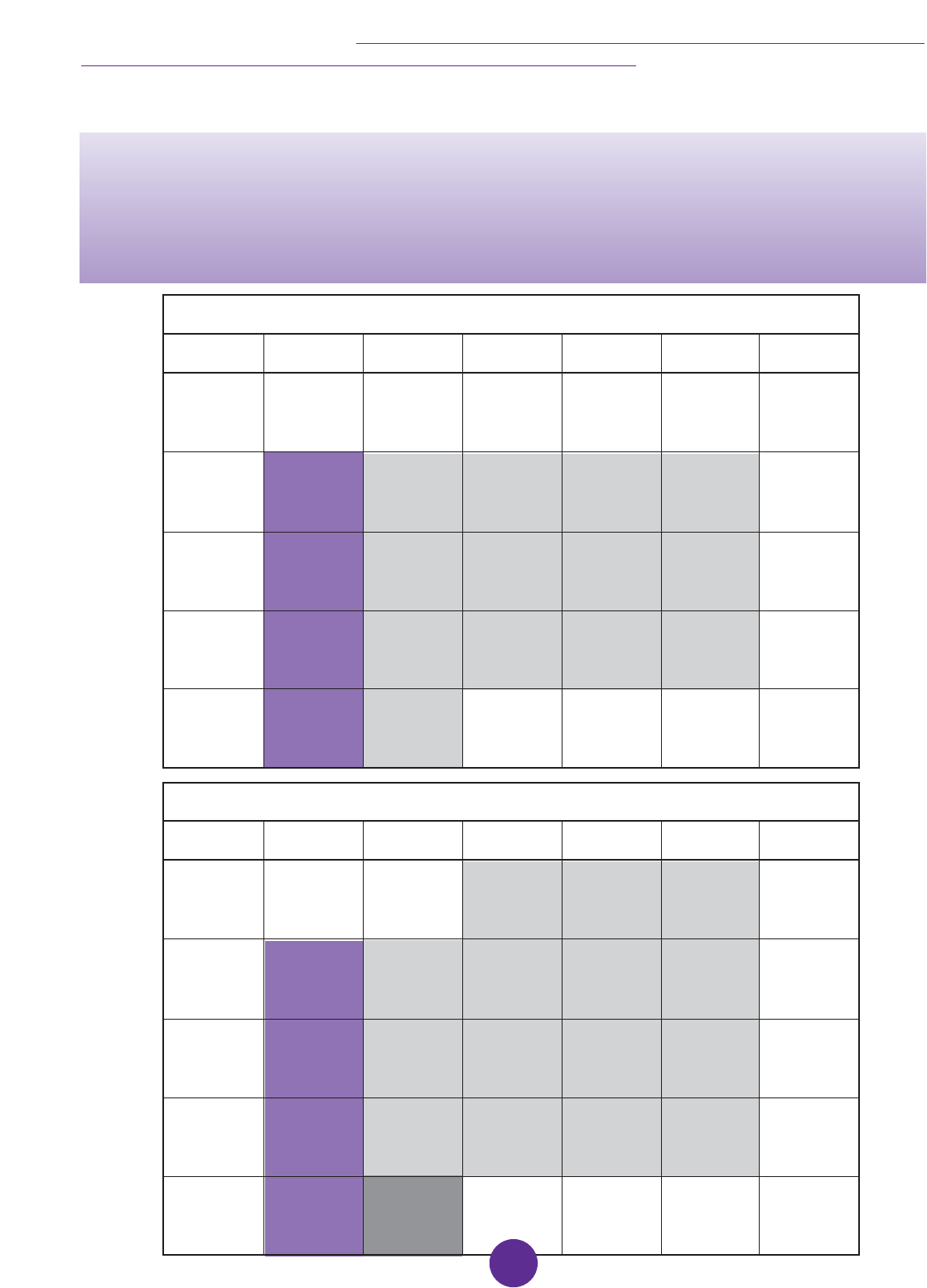
COMMISSION ON LEGISLATIVE DEMOCRACY
Recommendation Appendix: F-1
Possible Legislative Assembly Calendar for 2006
with Committee Days and Prescribed Events
Colour key for calendar:
Purple – Constituency days Lilac – Legislative Assembly days
Dark Grey – Days set for certain prescribed events Light Grey – Committee days
January 2006
Sunday Monday Tuesday Wednesday Thursday Friday Saturday
1234 5 67
8 9 10 11 12 13 14
15 16 17 18 19 20 21
22 23 24 25 26 27 28
29 30 31
New
Year’s
February 2006
Sunday Monday Tuesday Wednesday Thursday Friday Saturday
1234
5 6 78 9 1011
12 13 14 15 16 17 18
19 20 21 22 23 24 25
26 27 28
134
Quarterly
Financial
Report
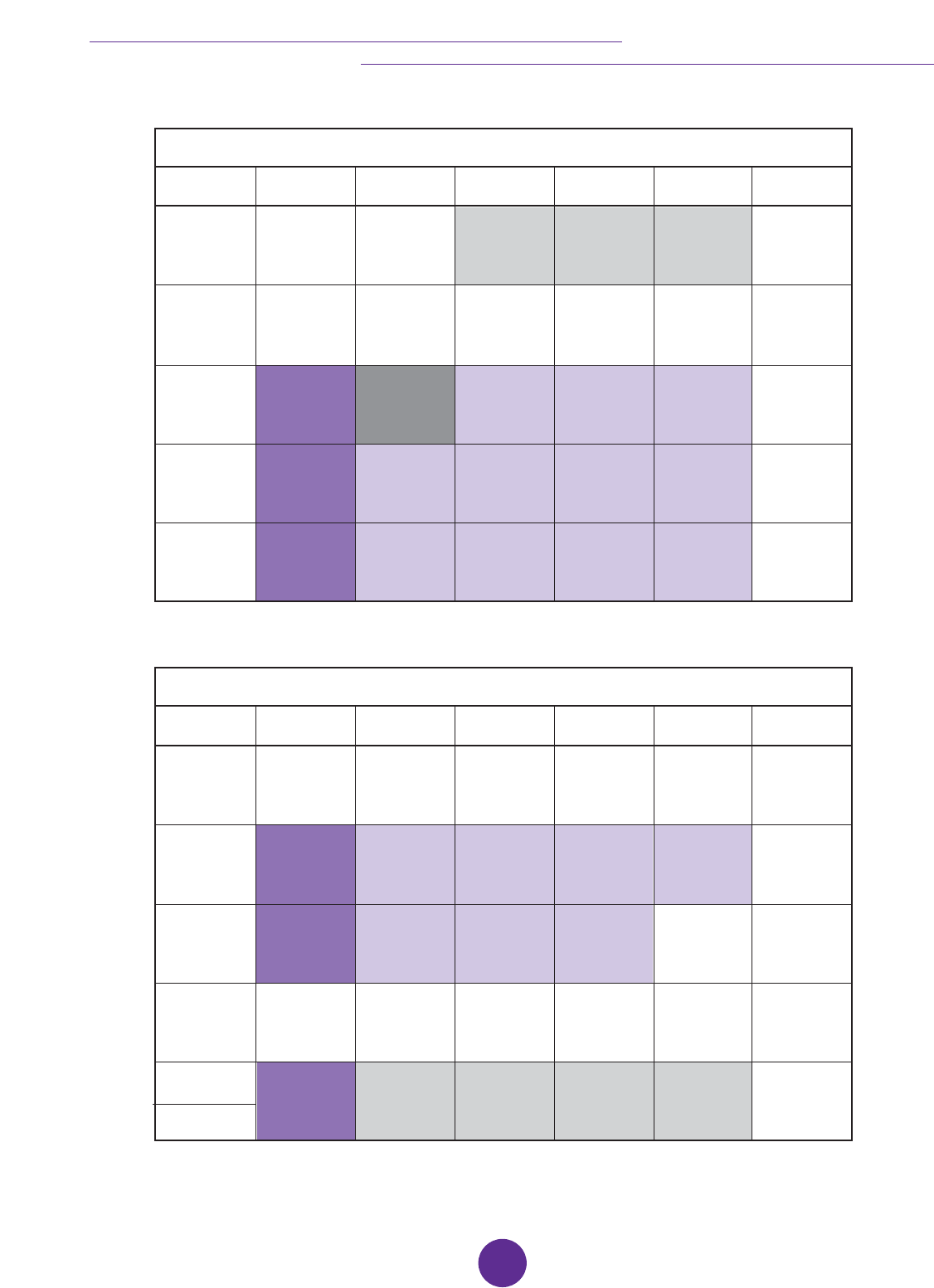
FINAL REPORT AND RECOMMENDATIONS
135
April 2006
Sunday Monday Tuesday Wednesday Thursday Friday Saturday
1
2 3 45 6 78
9 10 11 12 13 14 15
16 17 18 19 20 21 22
23 24 25 26 27 28 29
30
Good
Friday
Easter
Monday
Easter
March 2006
Sunday Monday Tuesday Wednesday Thursday Friday Saturday
1234
5678 9 1011
12 13 14 15 16 17 18
19 20 21 22 23 24 25
26 27 28 29 39 31
March
Break
BUDGET
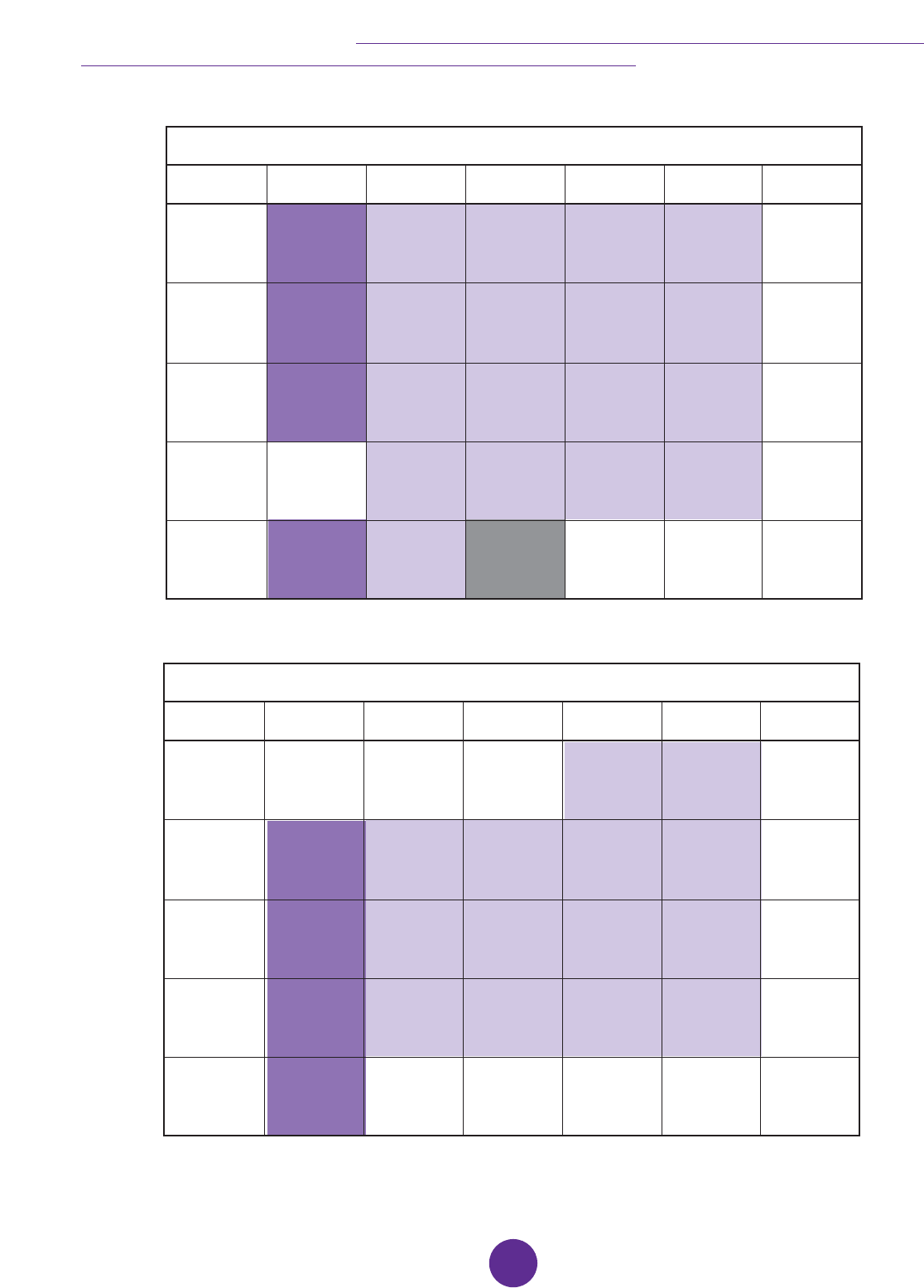
COMMISSION ON LEGISLATIVE DEMOCRACY
136
May 2006
Sunday Monday Tuesday Wednesday Thursday Friday Saturday
1 23 4 56
7 8 910 11 1213
14 15 16 17 18 19 20
21 22 23 24 25 26 27
28 29 30 31
Quarterly
Financial
Report
Victoria
Day
June 2006
Sunday Monday Tuesday Wednesday Thursday Friday Saturday
123
4 5 67 8 910
11 12 13 14 15 16 17
18 19 20 21 22 23 24
25 26 27 28 29 30
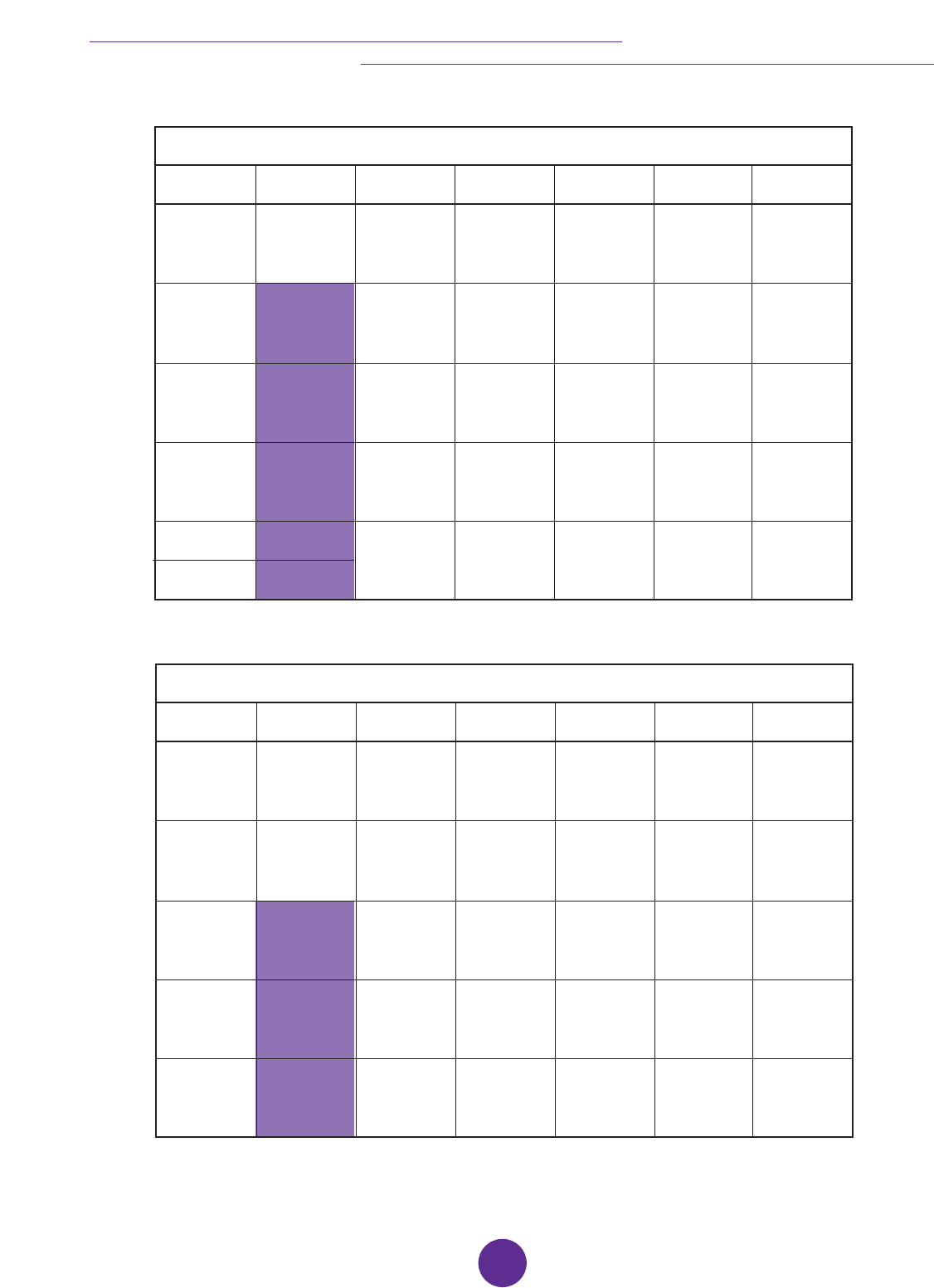
FINAL REPORT AND RECOMMENDATIONS
137
July 2006
Sunday Monday Tuesday Wednesday Thursday Friday Saturday
1
2 3 45 6 78
9 10 11 12 13 14 15
16 17 18 19 20 21 22
23 24 25 26 27 28 29
30 31
Canada
Day
August 2006
Sunday Monday Tuesday Wednesday Thursday Friday Saturday
12 3 45
6 7 8 9 10 11 12
13 14 15 16 17 18 19
20 21 22 23 24 25 26
27 28 29 30 31
NB Day
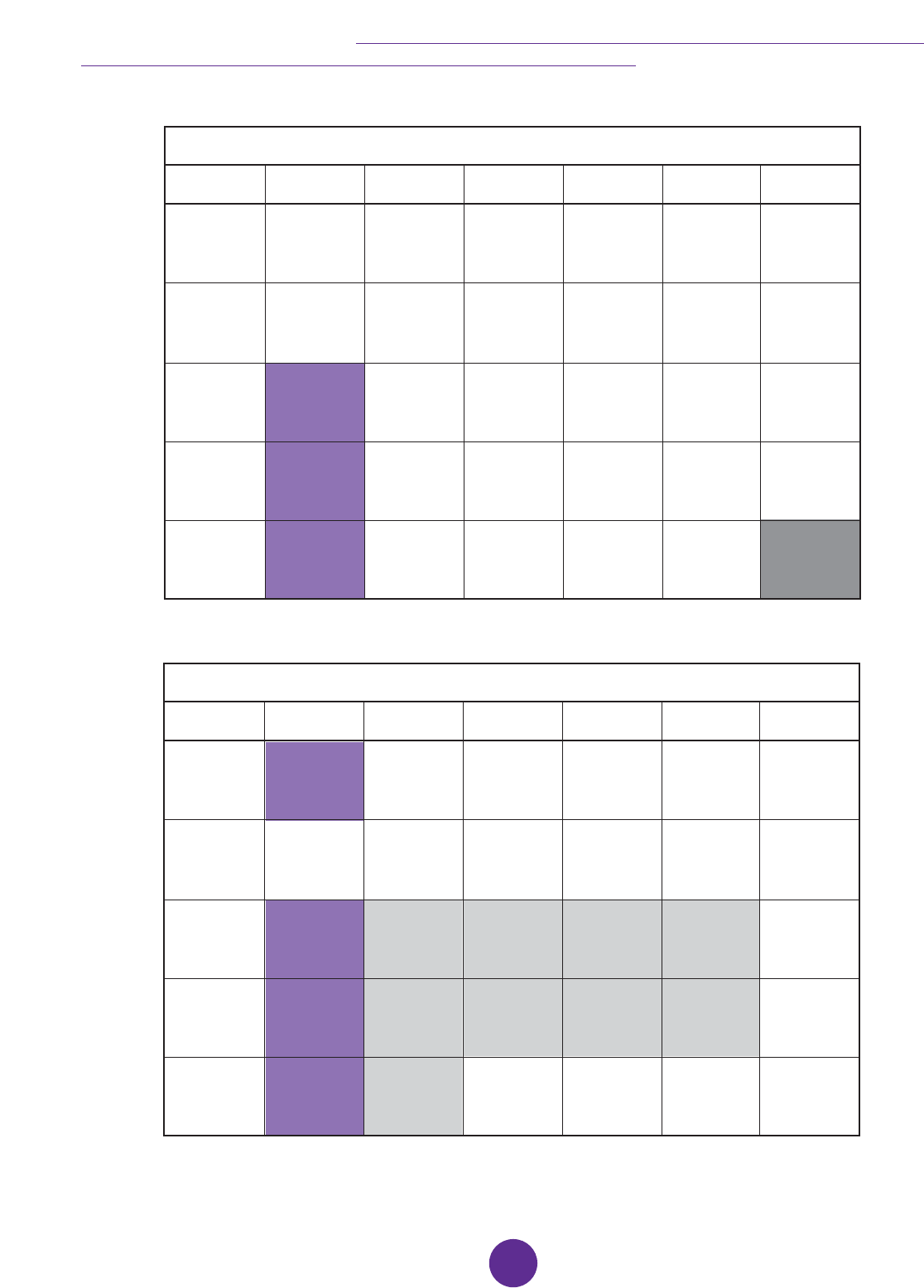
COMMISSION ON LEGISLATIVE DEMOCRACY
138
September 2006
Sunday Monday Tuesday Wednesday Thursday Friday Saturday
12
3456 7 89
10 11 12 13 14 15 16
17 18 19 20 21 22 23
24 25 26 27 28 29 30
Labour
Day
Quarterly
Financial
Report
October 2006
Sunday Monday Tuesday Wednesday Thursday Friday Saturday
1 2 34 5 67
8 9 10 11 12 13 14
15 16 17 18 19 20 21
22 23 24 25 26 27 28
29 30 31
Thanks-
giving
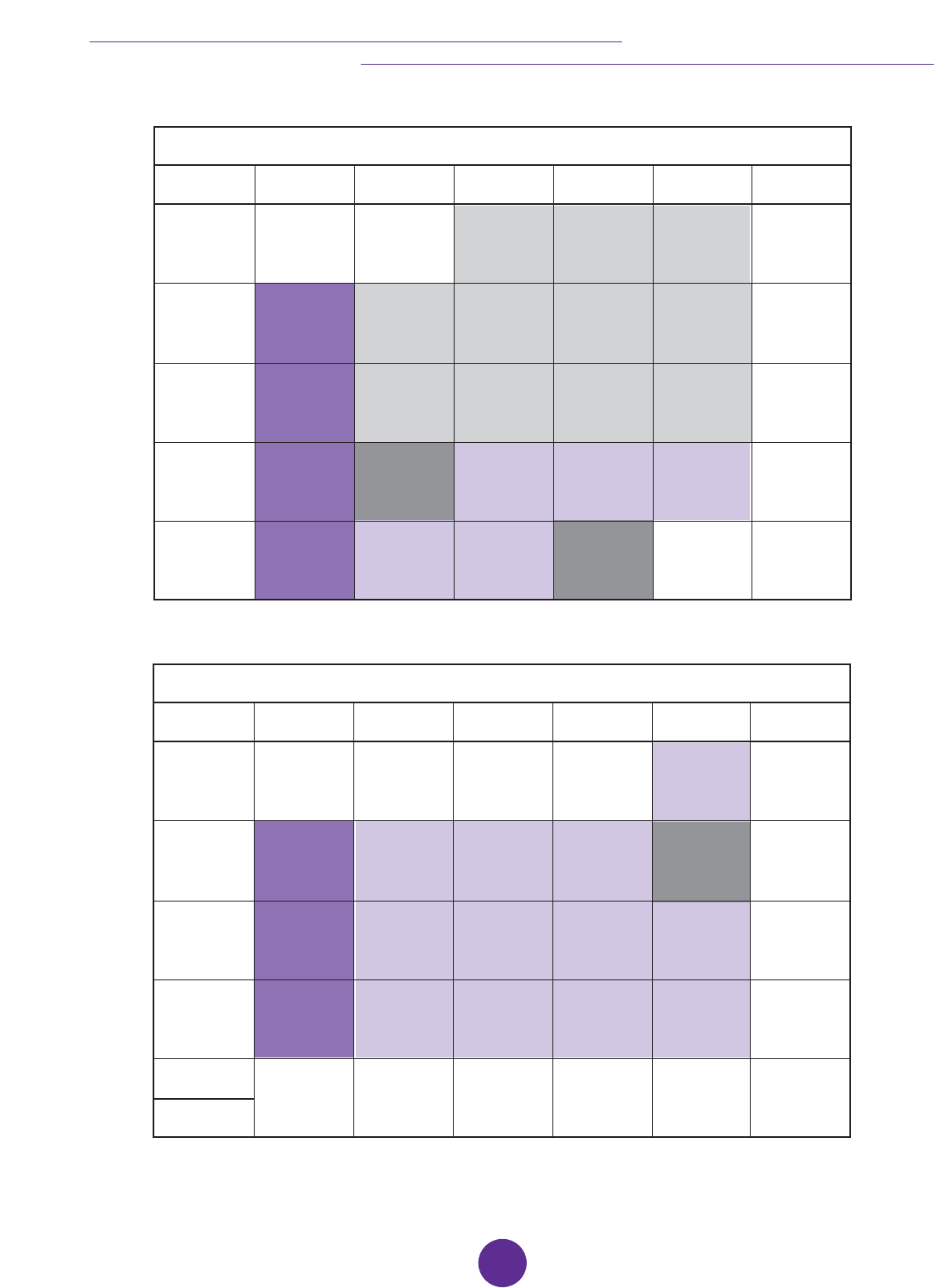
FINAL REPORT AND RECOMMENDATIONS
139
November 2006
Sunday Monday Tuesday Wednesday Thursday Friday Saturday
1234
85 6 78 9 1011
12 13 14 15 16 17 18
19 20 21 22 23 24 25
26 27 28 29 30
Remem.
Day
THRONE
SPEECH
Quarterly
Financial
Report
December 2006
Sunday Monday Tuesday Wednesday Thursday Friday Saturday
12
3 4 56 7 8 9
10 11 12 13 14 15 16
17 18 19 20 21 22 23
24 25 26 27 28 29 30
31
Debate
of LAC
Report
Boxing
Day
Christmas

COMMISSION ON LEGISLATIVE DEMOCRACY
Recommendation Appendix: G
Policy Framework - Transparency and Accountability Act
Summary of Contents
This appendix contains a framework for a proposed Transparency and Accountability Act. It contains the
following elements:
1. Date of the Speech from the Throne
2. Date for tabling the Budget and Main and Capital Estimates
3. Date for the publishing of Public Accounts
4. Dates for the publishing of the Quarterly Financial Reports
1. Date of the Speech from the Throne
A Speech from the Throne shall be held on the second Tuesday after Remembrance Day.
2. Date for tabling the Budget and Main and Capital Estimates
The Budget and Main Estimates of the Province shall be tabled on the Tuesday after March Break, as identified in
the New Brunswick regulation 97-150 under the Education Act.
The Capital Estimates shall be tabled on or before this date.
3. Public Accounts
Public Accounts for the Province of New Brunswick shall be made public by September 30th for the preceding fiscal
year.
4. Quarterly Financial Reports
Quarterly Financial Reports of the Province of New Brunswick shall be prepared and made public by the
Department of Finance by:
a) September 30th for the first three months of the fiscal year;
b) November 30th for the first six months of the fiscal year;
c) February 28th for the first 9 months of the fiscal year;
d) May 31st for the preceding fiscal year.
Quarterly Financial Reports must include:
a) The anticipated amounts of revenues and expenses for the quarter in question;
b) The revenues and expenses of the quarter in question and of the period starting April 1st through the quarter
in question;
c) A comparison of the matching quarter from the previous fiscal year;
d) The forecast of revenues and expenses and the resulting surplus or deficit for the fiscal year in which the
quarterly report applies;
e) The forecast of the debt as at the end of that fiscal year;
f) The debt at the end of the quarter; and
g) Other information.
140

Recommendation Appendix: H
Policy Framework - Improving Party Democracy
Summary of Contents
This appendix contains a suggested policy framework to improve party democracy in New Brunswick. Its
objectives and principles are to make the process and financing of nomination and leadership contests
more open and transparent to New Brunswickers; to encourage greater openness, transparency, and
accountability by political parties in their conduct; to encourage more women to seek nominations by
setting spending limits for party nominations; and to enhance the role of political parties and their
members in policy development. It is organized into the following sections:
1. Regulating Financing of Political Party Nomination and Leadership Selection
Contests - Policy Framework for Possible Amendments to the Political Process
Financing Act (PPFA)
2. Regulating Political Party Nomination and Leadership Selection Contests - Policy
Framework for Possible Amendments to the Elections Act
1. Regulating Financing of Political Party Nomination and Leadership Selection Contests -
Policy Framework for Possible Amendments to the Political Process Financing Act (PPFA)
A) Definitions
In this part:
“Leadership contest” means a competition in which a political party selects a leader.
“Leadership contestant” means an individual who accepts contributions for or incurs expenses in relation to his or
her campaign to seek the leadership of a political party.
“Nomination contest” means a competition to select a person to be presented to the political party for endorsement
as that party’s candidate in an electoral district.
“Nomination contestant” means a person who accepts a contribution or incurs a nomination contest expense.
“Personal expenses” of a leadership contestant or a nomination contestant means his or her expenses that are
reasonably incurred in relation to his or her leadership or nomination campaign and include:
(a) travel and living expenses;
(b) childcare expenses;
(c) expenses relating to the provision of care for a person with a physical or mental incapacity for whom the
contestant normally provides such care; and
(d) in the case of a contestant who has a disability, additional personal expenses that are related to the disability.
“Political party” means a registered political party or a political party that intends to seek registration.
B) Provisions for Leadership Contests
1. General
a) Political party to give notice of leadership contest
When a political party calls a leadership contest, the political party shall give notice forthwith to the Chief
Electoral Officer by filing a statement setting out the date when the leadership contest was officially called, and
the date upon which the leadership vote shall be held.
The Chief Electoral Officer shall give immediate notice to the Supervisor of Political Financing of any notice of
a leadership contest filed by a political party.
FINAL REPORT AND RECOMMENDATIONS
141

COMMISSION ON LEGISLATIVE DEMOCRACY
b) Leadership contestants must register
Every person who accepts contributions for or incurs expenses in relation to his or her campaign to seek the
leadership of a political party shall register with the Chief Electoral Officer as a leadership contestant
immediately upon accepting a contribution or incurring an expense.
An application for registration as a leadership contestant must include:
a) the name of the leadership contestant;
b) the address of the place at which the records of the leadership contestant are maintained and to which
communications may be addressed;
c) a declaration signed by the chief agent of the political party holding the leadership contest, certifying that
the party accepts the applicant as a leadership contestant; and
d) a statement of any contributions received or leadership contest expenses incurred before the application for
registration is made.
Where a leadership contestant meets the requirements for registration, the Chief Electoral Officer shall register
the contestant.
In the case of a refusal to register, the Chief Electoral Officer shall indicate which of the requirements have not
been met.
The Chief Electoral Officer shall give immediate notice to the Supervisor of the registration or withdrawal of
any leadership contestant.
c) Appointment of Financial Agent
Immediately upon being registered as a leadership contestant, the leadership contestant shall appoint a
financial agent. The leadership contestant shall provide to the Chief Electoral Officer/ Supervisor the financial
agent’s name, address and telephone number and the financial agent’s signed consent to act in that capacity.
d) Replacement of Financial Agent
In the event of the death, incapacity, resignation or revocation of the appointment of the financial agent, a
leadership contestant shall without delay appoint a replacement.
e) Role and Duties of the Financial Agent
The financial agent is responsible for administering the leadership contestant’s financial transactions for the
leadership contest and for reporting those transactions in accordance with this Act, including:
a) Keeping records of eligible contributions to the leadership contestant including the contributor’s name and
address and the amount of the contribution;
b) Keeping records of all eligible expenses incurred and paid in relation to the leadership contest;
c) Preparing and submitting reports to the Chief Electoral Officer/ Supervisor as required under this Act; and
d) Such other duties as are set out in this Act.
f) Bank Account
The financial agent of a leadership contestant shall:
a) Open an account in a financial institution in the name of the leadership contestant, which is to be used
solely for the purpose of the leadership contest;
b) Deposit all contributions to and make all payments of money for expenses in relation to the contestant’s
leadership campaign from the account;
c) Close the account after the end of the leadership contest or the withdrawal or death of the contestant and
after the disposal of any surplus leadership campaign funds in accordance with this Act.
d) Provide the Chief Electoral Officer/Supervisor with the final statement of the account, on closing the
account.
g) Appointment of an Auditor
Within 10 days of being registered as a leadership contestant, the leadership contestant shall appoint as an
auditor:
142

a) A person who is a member in good standing of an association, institute or society of professional
accountants in the province, or
b) A partnership of which every partner is a member in good standing of an association, institute or society of
professional accountants.
The leadership contestant shall provide to the Chief Electoral Officer/ Supervisor the auditor’s name, address
and telephone number and the auditor’s signed consent to act in that capacity.
h) Replacement of Auditor
In the event of the death, incapacity, resignation or revocation of the appointment of the auditor, a leadership
contestant shall without delay appoint a replacement and obtain their signed consent to act in that capacity.
i) Registry to be maintained by Chief Electoral Officer/Supervisor
The Chief Electoral Officer/Supervisor shall maintain a registry of leadership contestants that contains for each
contestant:
a) The information required in the application for registration as a leadership contestant;
b) The name and contact information for the financial agent; and
c) The name and contact information for the auditor.
Any changes in the information reported to the Chief Electoral Officer/Supervisor shall be reported by a
leadership contestant in writing to the Chief Electoral Officer/Supervisor as soon as practicable after the
change occurs.
The reporting of a replacement of a financial agent or auditor of the leadership contestant must include a copy
of the signed consent.
The Chief Electoral Officer/Supervisor shall enter any change in the information referred to in this section in the
registry of leadership contestants.
The information contained in the registry is public information.
j) Withdrawal of a leadership contestant
A leadership contestant who withdraws from the leadership contest shall file with the Chief Electoral
Officer/Supervisor a statement in writing to that effect, signed by the contestant and indicating the date of the
withdrawal. The Chief Electoral Officer/Supervisor shall indicate the withdrawal in the registry of leadership
contestants.
k) Withdrawal of acceptance by political party
A political party that withdraws its acceptance of a leadership contestant shall file with the Chief Electoral
Officer/Supervisor a statement in writing to that effect signed by the chief agent of the party and indicating the
date of the withdrawal. The Chief Electoral Officer/Supervisor shall enter the withdrawal of acceptance in the
registry of leadership contestants.
A leadership contestant who withdraws or whose acceptance is withdrawn by a political party shall file a
return in accordance with this Act for the period during which he or she was a contestant.
l) Chief Electoral Officer/Supervisor to notify party of failure by contestant to comply with Act
If the Chief Electoral Officer/ Supervisor becomes aware that a leadership contestant of a political party has
failed to comply with any requirement under this Act, the Chief Electoral Officer/ Supervisor shall provide
written notification of the failure to the leadership candidate and to the political party as soon as practicable.
2. Contributions to a Leadership Contestant
a) Who may solicit or accept contributions
No person, other than a leadership contestant or the financial agent of the leadership contestant or a person
authorized in writing by the financial agent, may solicit or accept contributions to the contestant’s leadership
campaign.
Only individuals, corporations and trade unions as defined in this Act may make a contribution to a leadership
contestant.
FINAL REPORT AND RECOMMENDATIONS
143

COMMISSION ON LEGISLATIVE DEMOCRACY
b) Issuance of receipts
Any person who is authorized to accept contributions on behalf of a leadership contestant shall issue a receipt
to the contributor, in accordance with the provisions of this Act, and the financial agent shall keep a copy of
each receipt issued.
c) Contribution limits
No individual, corporation or trade union shall make contributions totaling more than $3,000 to one or more
leadership contestants.
A leadership contestant is subject to the contribution limit, and any money that is used for a leadership
campaign out of a contestant’s own funds is considered to be a contribution for the purposes of this Act.
d) Exception
Money out of contestant’s own funds used for the contestant’s personal expenses is not considered to be a
contribution for the purposes of this Act.
e) Provision of goods or services or transfers of funds from political party or district association
No political party and no district association shall provide goods or services or transfer funds to a leadership
contestant, unless the goods or services or funds are offered equally to all contestants.
f) Deemed contributions
For the purposes of this Act, contributions made to a leadership contestant within 18 months after a leadership
contest are deemed to be contributions for that contest.
3. Expenses of a Leadership Contestant
a) Who may incur leadership campaign expenses
No person, other than a leadership contestant or his or her financial agent, shall incur leadership campaign
expenses of the contestant.
b) Who may pay leadership expenses
No person, other than the financial agent of a leadership contestant, shall pay leadership campaign expenses,
other than personal expenses, of the contestant.
No person, other than a leadership contestant or his or her financial agent, shall pay the contestant’s personal
expenses.
c) Limits on expenses
No leadership contestant or financial agent of a leadership contestant shall incur leadership campaign
expenses - other than personal expenses - in an amount that is more than $300,000.
4. Disclosure Requirements
a) Summary Return on Contributions
For the period beginning on the day the candidate becomes a leadership contestant and ending on the day
that is four weeks before the end of the leadership contest, the financial agent shall provide the Chief Electoral
Officer/ Supervisor with a summary return that includes:
a) The total contributions received to date by the leadership contestant and the number of contributors;
b) Disclosure of all financial loans for the purposes of the campaign, including interest rates, repayment
schedules and the name of the lender;
c) The name and address of each contributor who made contributions of a total amount of more than $100 to
the leadership contestant, that total amount, as well as the amount of each such contribution and the date
on which it was received by the contestant;
d) A statement of the commercial value of goods or services provided and of funds transferred to the
leadership contestant from a political party or a district association.
The summary return on contributions shall be provided no later than one week after the end of the period to
which it relates.
The information contained in the summary return on contributions is public information.
144

b) Leadership campaign return
Within 90 days of the leadership contest date, the financial agent of a leadership contestant shall provide the
Chief Electoral Officer / Supervisor:
a) A leadership campaign return on the financing and leadership campaign expenses for the leadership
contestant;
b) An auditor’s report on the return, if one is required under this Act;
c) A declaration made by the financial agent that the return is complete and accurate; and
d) A declaration made by the leadership contestant that the return is complete and accurate.
c) Contents of leadership campaign return
The leadership campaign return shall include the following information in respect of the leadership contestant,
for the period beginning on the day he or she becomes a leadership contestant and ending 90 days after the
leadership contest date:
a) A statement of leadership campaign expenses;
b) The total contributions received by the leadership contestant and the number of contributors;
c) Disclosure of all financial loans for the purposes of the campaign, including interest rates, repayment
schedules and the name of the lender;
d) The name and address of each individual who made contributions of a total amount of more than $100 to
the leadership contestant, the amount of each such contribution and the date on which it was received by
the contestant, and the name of each corporation and trade union that made a contribution to the
leadership contestant and the amount of each such contribution.
e) A statement of the commercial value of goods or services provided and of funds transferred to the
leadership contestant from a political party or a district association; and
f) A statement of contributions received but returned to the contributor or otherwise dealt with in accordance
with this Act.
d) Supporting documents
Together with the leadership campaign return, the financial agent shall provide to the Chief Electoral Officer/
Supervisor documents evidencing expenses set out in the return, including bank statements, deposit slips, and
cancelled cheques.
e) Auditor’s Report
The auditor of a leadership contestant who has accepted contributions of $30,000 or more in total or incurred
leadership campaign expenses of $30,000 or more in total shall report to the contestant’s financial agent on
the leadership campaign return and shall, in accordance with generally accepted auditing standards, make
any examination that will enable the auditor to give an opinion in the report as to whether the return presents
fairly the information contained in the financial records on which it is based.
f) Statement
The auditor’s report shall include any statement that the auditor considers necessary if:
(a) The return does not present fairly the information contained in the financial records on which it is based;
(b) The auditor has not received from the leadership contestant or his or her financial agent all the information
and explanation that the auditor required; or
(c) Based on the examination, it appears that proper accounting records have not been kept by the financial
agent.
g) Right of access
The auditor shall have access at any reasonable time to all documents of the leadership contestant and may
require the contestant and his or her financial agent to provide any information or explanation that, in the
auditor’s opinion, is necessary to enable the auditor to prepare the report.
FINAL REPORT AND RECOMMENDATIONS
145

COMMISSION ON LEGISLATIVE DEMOCRACY
h) Surplus of leadership campaign funds
The surplus amount of leadership campaign funds is the amount by which the sum of any contributions
accepted by the financial agent of the leadership contestant, and any other amounts that were received by the
contestant for his or her leadership campaign and that are not repayable, is more than the sum of the
contestant’s leadership campaign expenses.
i) Disposition of surplus by financial agent
Within 30 days of filing the leadership campaign return, the financial agent of a leadership contestant who
has a surplus of leadership campaign funds shall transfer the surplus to the political party that held the
leadership contest, or a district association of that party, and report to the Chief Electoral Officer/ Supervisor
the amount and date of the disposal and to whom the surplus was transferred.
j) Reporting of deemed contributions
Where a contribution is made to a leadership contestant after the date the leadership campaign return is filed,
and within 18 months of the leadership contest date, the leadership contestant shall file a report with the Chief
Electoral Officer/ Supervisor at the end of the 18 month period, setting out the date and amount of any
contributions received in this period and, for contributions more than $100 from individuals, the name and
address of the contributor; and the name of each corporation and trade union that made a contribution in this
period.
k) Publication
The Chief Electoral Officer/ Supervisor shall, in the manner that he or she considers appropriate, publish for a
leadership contest held by a political party:
a) Information on the contest as filed by the political party;
b) The information contained in the leadership campaign return of each leadership contestant,
c) Information on the transfer of any surplus of leadership campaign funds by a leadership contestant’s
financial agent, and
d) Information on any further contributions reported by the leadership contestant.
C) Provisions for Nomination Contests
1. General
a) Interpretation
In this part, “selection date” means the date on which a nomination contest is decided.
For the purposes of this part, a nomination contestant is deemed to have been a nomination contestant from the
time he or she accepts a contribution or incurs a nomination campaign expense.
b) Appointment of Financial Agent
No nomination contestant shall, in relation to his or her nomination campaign, accept contributions or incur
nomination campaign expenses unless he or she has appointed a financial agent.
c) Consent
A nomination contestant shall obtain from the financial agent, on appointment, his or her signed consent to so
act.
d) Replacement of Financial Agent
In the event of the death, incapacity, resignation or revocation of the appointment of the financial agent, a
nomination contestant shall without delay appoint a replacement.
e) Role and Duties of the Financial Agent
The financial agent is responsible for administering the nomination contestant’s financial transactions for the
nomination contest and for reporting those transactions in accordance with this Act, including:
a) Keeping records of contributions to the nomination contestant, including the contributor’s name and
address, and the amount of the contribution;
146

b) Keeping records of all expenses incurred and paid in relation to the nomination contest;
c) Preparing and submitting reports to the Chief Electoral Officer / Supervisor as required under this Act; and
d) Such other duties as are set out in this Act.
f) Bank Account
The financial agent of a nomination contestant shall:
a) Open an account in a financial institution in the name of the nomination contestant, which is to be used
solely for the purpose of the nomination contest;
b) Deposit all contributions to and make all payments of money for expenses in relation to the contestant’s
nomination campaign from the account;
c) Close the account after the end of the nomination contest or the withdrawal or death of the contestant, and
after the disposal of any surplus nomination campaign funds in accordance with this Act.
d) Provide the Chief Electoral Officer/ Supervisor with the final statement of the account, on closing the
account.
2. Contributions to Nomination Contestant
a) Who may solicit or accept contributions
No person, other than a nomination contestant or the financial agent of the nomination contestant, or a person
authorized in writing by the financial agent, may solicit or accept contributions to the contestant’s nomination
campaign.
Only individuals, corporations and trade unions as defined in this Act may make a contribution to a
nomination contestant.
b) Issuance of receipts
Any person who is authorized to accept contributions on behalf of a nomination contestant shall issue a receipt
to the contributor, in accordance with the provisions of this Act, and the financial agent shall keep a copy of
each receipt issued.
c) Contribution limits
An individual, corporation or trade union may make a contribution, which in the aggregate does not exceed
$1,000, to the nomination contestants of each political party in the nomination contests for an upcoming
provincial election.
A contribution not in excess of $1,000 may be made so that:
a) A portion is given to one or more nomination contestants in one nomination contest of a political party, or
b) Portions are given to one or more nomination contestants in more than one nomination contest of a political
party.
A nomination contestant is subject to the contribution limit, and any money that is used for a nomination
campaign out of a contestant’s own funds is considered to be a contribution for the purposes of this Act.
d) Exception
Money out of contestant’s own funds used for the contestant’s personal expenses is not considered to be a
contribution for the purposes of this Act.
e) Provision of goods or services or transfers of funds from political party or district association
No political party and no district association shall provide goods or services or transfer funds to a nomination
contestant, unless the goods or services or funds are offered equally to all contestants.
3. Expenses of a Nomination Contestant
a) Who may incur nomination campaign expenses
No person, other than a nomination contestant or his or her financial agent, shall incur nomination campaign
expenses of the contestant.
FINAL REPORT AND RECOMMENDATIONS
147

COMMISSION ON LEGISLATIVE DEMOCRACY
b) Who may pay nomination campaign expenses
No person, other than the financial agent of a nomination contestant, shall pay nomination campaign
expenses, other than personal expenses, of the contestant.
No person, other than a nomination contestant or his or her financial agent, shall pay the contestant’s personal
expenses.
c) Limits on expenses
No nomination contestant or financial agent of a nomination contestant shall incur nomination campaign
expenses - other than personal expenses - in an amount that is more than twenty (20) per cent of the average
of the limits that were allowed for a candidate’s election expenses in the province’s electoral districts during the
immediately preceding general election.
d) No circumvention of limit
No person shall
a) circumvent, or attempt to circumvent, the limit referred to or,
b) act in collusion with another person for that purpose.
4. Disclosure Requirements
a) Report of nomination contest
When a nomination contest is held, the political party or the district association that held the nomination
contest shall, within 30 days after the selection date, file with the Chief Electoral Officer/Supervisor a report
setting out:
a) The name of the electoral district, the district association and the political party that the nomination contest
concerned;
b) The date on which the nomination contest began and the selection date;
c) The name and address of each nomination contestant as of the selection date and of his or her financial
agent; and
d) The name of the person selected in the nomination contest.
b) Nomination campaign return
Within 90 days of the nomination selection date, the financial agent of a nomination contestant who has
accepted contributions of $1,000 or more in total, or incurred nomination campaign expenses of $1,000 or
more in total, shall file with the Chief Electoral Officer/ Supervisor the following in respect of a nomination
contestant:
a) A nomination campaign return on the financing and nomination campaign expenses for the nomination
contestant;
b) A declaration made by the financial agent that the return is complete and accurate; and
c) A declaration made by the nomination contestant that the return is complete and accurate.
c) Contents of return
The nomination campaign return shall include the following information in respect of the nomination contestant,
for the period beginning on the day the candidate becomes a nomination contestant, and ending 90 days after
the nomination selection date:
a) A statement of nomination campaign expenses;
b) A statement of the total contributions received by the nomination contestant and the number of contributors;
c) The name and address of each individual who made contributions of a total amount of more than $100 to
the nomination contestant, the amount of each such contribution and the date on which it was received by
the contestant, and the name of each corporation and trade union that made a contribution to the
nomination contestant and the amount of each such contribution.
d) A statement of the commercial value of goods or services provided and of funds transferred to the
nomination contestant by a political party or a district association;
148

e) A statement of the contributions received but returned to the contributor or otherwise dealt with in
accordance with this Act.
d) Supporting documents
Together with the nomination campaign return, the financial agent of a nomination contestant shall provide to
the Chief Electoral Officer / Supervisor, documents evidencing expenses set out in the return, including bank
statements, deposit slips, and cancelled cheques.
e) Nomination campaign return not required where contributions accepted and expenses
incurred are less than $1,000
A nomination campaign return need not be filed in respect of a nomination contestant if the financial agent of
that nomination contestant files with the Chief Electoral Officer/ Supervisor an affidavit stating that:
a) The contributions accepted on behalf of the contestant did not exceed $1,000 in total, and
b) The expenses incurred on behalf of the contestant did not exceed $1,000 in total.
The affidavit must be filed with the Chief Electoral Officer/Supervisor in the time period required to file a
nomination campaign return.
f) Surplus of nomination campaign funds
The surplus amount of nomination campaign funds is the amount by which the sum of any contributions to the
nomination contestant’s campaign is more than the sum of the contestant’s nomination campaign expenses.
g) Disposition of surplus by financial agent
The financial agent of a nomination contestant who has a surplus of nomination campaign funds shall, within
the time period for filing a nomination campaign return, transfer the surplus to
a) the official agent of the candidate endorsed by the political party in the electoral district in which the
nomination contest was held, or
b) the district association that held the nomination contest or the political party for whose endorsement the
contest was held.
The financial agent shall notify the Chief Electoral Officer/ Supervisor of the amount and date of the disposal,
and to whom the surplus was transferred.
h) Publication
The Chief Electoral Officer/Supervisor shall, in the manner that he or she considers appropriate, publish for
each nomination contest held by a political party or district association:
a) The information on the contest as filed by the political party or district association;
b) The information contained in the nomination campaign return of each nomination contestant, and
c) Information on the transfer of any surplus of nomination campaign funds by a nomination contestant’s
financial agent.
D) Summary of Likely Consequential Amendments to the PPFA
1. Application of Act
Repeal of Section 3 of the PPFA, which provides that the Act does not apply to campaigns and conventions
carried on or held in relation to the leadership of any political party or to the nomination of a candidate.
2. Duties and Powers of Supervisor
Expansion of Section 14 - duties and powers of the Supervisor - to include:
• Determining if leadership and nomination contestants are complying with the Act;
• Issuing guidelines on the records to be maintained by the leadership contestants and nomination contestants;
• Determining whether leadership contest expenses and nomination contest expenses have been made in
accordance with this Act;
• Carrying out studies on the financing of leadership and nomination contests.
FINAL REPORT AND RECOMMENDATIONS
149

COMMISSION ON LEGISLATIVE DEMOCRACY
Expansion of Section 15 - which allows a person to apply to the Supervisor for an inquiry to determine whether
any expenses have been made in accordance with this Act - to leadership or nomination contest expenses.
3. Contributions (Section 37 to 47)
Expansion of these provisions, where not inconsistent with provisions set out above, to cover contributions made to
leadership contestants and nomination contestants.
4. Offences and Penalties (Section 85 - 90)
Extension of these provisions, where applicable and with necessary modifications, to cover offences committed with
respect to the contribution limits, spending limits and disclosure requirements for leadership and nomination
contestants.
5. Other Housekeeping/Procedural
Extension of Sections 81(3), 81(4), 82 (3) and 82(4) - which include provisions on how long Supervisor
must keep statements, invoices, receipts and vouchers filed with him - to cover such material filed with Supervisor by
financial agent of leadership or nomination contestant.
Extension of Section 83 - which sets out process for rectification of error in any statement submitted to
Supervisor made through inadvertence - to cover any such error in a report filed with the Supervisor by the financial
agent of leadership or nomination contestant.
Extension of Section 91 - which allows for actions to be brought in a court of competent jurisdiction in respect
of contested claims for election expenses against a party or candidate to cover contested claims for leadership or
nomination campaign expenses.
2. Regulating Political Party Nomination and Leadership Selection Contests - Policy
Framework for Possible Amendments to the Elections Act
1. Adoption of Rules by Party
a) A political party must adopt clear and consistent rules outlining a fair and democratic process for the selection
of their general election candidates and the party leader.
b) These rules must be adopted by a vote of the party membership and be consistent with the provisions outlined
herein.
c) These rules must include a clear appeal mechanism for the bringing of any complaints that the rules were not
followed.
d) Specific remedies for rules violations shall also be included.
2. Candidates Selected by Party Meeting - no appointments
In order to appear on a general election ballot as a candidate of a political party, a candidate must be endorsed
by eligible party members in the electoral constituency where the candidate is seeking office, in a vote that is open
to all eligible party members in that constituency.
3. Membership Eligibility Rules to Vote
a) Eligible voters in candidate nomination and party leadership contests shall be all current members of the party
who meet the eligibility requirements to vote in a provincial general election (e.g., 18 years of age, resident in
New Brunswick and a Canadian citizen).
b) Members must belong to their political party at least seven days prior to a candidate nomination or leadership
vote in order to be eligible to participate and the list of eligible voters must be filed with the Party President
and made available to any candidate at least four days prior to the nomination or leadership vote.
4. Timing of Nomination Meeting
If fixed election dates are adopted, constituency associations of political parties shall hold a vote of their members
for the purpose of choosing their general election candidate no more than 120 days prior to the date of the general
election.
150

5. Membership Fees
a) Parties may not charge a membership fee in excess of $5 per annum.
b) No additional fee may be charged as a requisite to voting in a candidate nomination or party leadership
election.
6. Notice of Meetings
Political parties must advertise the date, time and location of candidate nomination contests and party leadership
votes at least seven days prior to the closing date for eligible membership.
7. Declaration for a Nomination Contest
a) For each nomination contest held, the political party or district association must file with the Chief Electoral
Officer a declaration, signed by the party leader, providing full details of the nomination contest including:
• Date and location of nomination contest;
• Number of members voting;
• Result of the vote; and
• Details of any appeals of the process.
b) The declaration must certify that:
• The candidate was endorsed by eligible party members in the electoral district where the candidate is
seeking office, in a vote that was open to all eligible party members in that electoral district.
• The date, time and location of the nomination contest were advertised at least seven days prior to the
closing date for eligible membership.
• All voters in the nomination contest met the eligibility requirements to vote in a provincial general election,
belonged to the political party at least seven days prior to the nomination contest, and were members of the
party at the time of the vote.
• The nomination contest was conducted in a fair, open and democratic manner.
c) The declaration for each nomination contest shall be filed no later than 14 days after the conclusion of the
nomination contest and prior to the deadline for completion of candidate nominations under the Elections Act.
8. Declaration for a Leadership Contest
a) For each leadership contest held, the political party that held the leadership contest must file with the Chief
Electoral Officer a declaration, signed by the Party President, providing full details of the leadership contest,
including:
• Date and location of leadership contest;
• Number of members voting;
• Result of the vote; and
• Details of any appeals of the process.
b) The declaration must certify that:
• The successful leadership candidate was endorsed by eligible party members in a vote that was open to all
eligible party members in the province.
• The date, time and location of the leadership contest were advertised at least seven days prior to the
closing date for eligible membership.
• All voters in the leadership contest met the eligibility requirements to vote in a provincial general election
and belonged to the political party at least seven days prior to the date of the leadership vote and were
members of the party at the time of the vote.
• The leadership contest was conducted in a fair, open and democratic manner.
c) The declaration for a leadership contest shall be filed no later than 14 days after the conclusion of the
leadership contest.
FINAL REPORT AND RECOMMENDATIONS
151

COMMISSION ON LEGISLATIVE DEMOCRACY
d) A political party that had already selected a leader and nominated candidates for an election would have to
demonstrate that it had met the above requirements before it could be registered by the Chief Electoral Officer
in the Registry of Political Parties under the Elections Act.
9. Enforcement
a) Penalties for non-compliance with reporting requirements under the Political Process Financing Act would be
extended to cover a failure on the part of a nomination contestant or leadership contestant to file a declaration.
b) Additionally, if a declaration is not filed with respect to a nomination contest, or if the declaration does not
demonstrate compliance with the requirements for nomination contests as set out above, there should be no
party affiliation of the candidate on the ballot until a satisfactory declaration is filed.
152

Recommendation Appendix: I
Policy Framework - Appointments to Agencies, Boards and
Commissions
Summary of Contents
This appendix contains a suggested framework for the future appointments process to government
Agencies, Boards and Commissions, setting out the principles and objectives of establishing a formal
process for appointments and giving more New Brunswickers the opportunity to apply to serve on ABCs
and to be considered for appointment. It is organized into the following sections:
1. Suggested Practices and Procedures for Making Appointments to ABCs
2. Suggested Appointment Process For the Most Significant ABCs
3. Suggested Appointment Process for other ABCs
4. Suggested Classification of ABCs
1. Suggested Practices and Procedures for Making Appointments to ABCs:
Interested members of the public should be able to easily find out what vacancies on ABCs exist, how to make an
application to be considered for appointment, what qualities and skills are required for the position, the steps in the
appointment process itself, and the outcome of their application. To this end, the following practices and procedures
are recommended:
a) Assign co-ordinating responsibility for ABC Appointments to a central agency of Government
In order to bring transparency, consistency and oversight to the appointment process, overall co-ordinating
responsibility for appointments to ABCs should be assigned to a central agency of government, namely, the Office
of Human Resources.
An ABC Appointments Unit would be created within the Office of Human Resources to administer the appointments
process.
The mandate of the ABC Appointments Unit would include:
• Establishing specific guidelines for appointments to ABCs, which are appropriate to the nature of the ABC.
• Preparing and publishing a checklist of steps to be followed in the appointment process for a candidate.
• Monitoring the appointment process to ensure that the guidelines are followed and appointments are made
on an open, transparent and consistent basis.
• Advertising vacancies on ABCs in a timely fashion, and providing information on the requirements of the
position, remuneration and time commitment involved, and how interested persons may apply.
• Developing and maintaining a central databank of ABC appointments, vacancies and applications.
• Identifying or seeking out potential candidates for appointment to an ABC.
• Accepting and acknowledging applications for positions on ABCs, following up with individuals who are
recommended for appointment by others, and maintaining a databank of individuals who have submitted
an application for a specific position or have submitted a general expression of interest in serving on an
ABC.
• Providing human resource expertise and assistance to ABCs and the minister/department responsible for the
ABC in the process of reviewing applications for appointment.
• Publicizing appointments, including the name and a brief biographical sketch of an appointee, the term of
their appointment, and the remuneration to which they are entitled.
• Co-ordinating the development and administration of training and orientation programs for board members
on board roles and responsibilities.
FINAL REPORT AND RECOMMENDATIONS
153

COMMISSION ON LEGISLATIVE DEMOCRACY
b) Provide people with information on upcoming appointments
The ABC Appointments Unit would publish on its website and update regularly:
• A list of upcoming vacancies and links to obtain more information on a specific vacancy.
• Information on how to apply for a position on an ABC.
• Details of the appointment process.
In addition to being listed on the ABC Appointments Unit website, vacancies would be advertised on the website of
the responsible department and the ABC itself, if it has one.
Individual vacancies for significant ABCs would be advertised in provincial newspapers.
For other ABCs, the ABC Appointments Unit would advertise in provincial daily newspapers, every three to six
months, a list of upcoming vacancies, with contact information on how to find out more information and apply for a
specific position.
c) Provide a mechanism by which anyone interested in serving on an ABC may make an
application
The ABC Appointments Unit would develop and publish a general application form to be filled out by persons
interested in an appointment to an ABC.
The form could be completed online or by other means, and would require the following information:
• Name of candidate;
• Candidate’s contact information;
• Candidate’s education, professional designations, employment experience, and community service
experience;
• Names and contact information of references;
• Name of ABC to which they are applying, or
• In the case of a general expression of interest to serve on an ABC, the type of ABC they wish to be
considered for appointment to;
• Any other identifying information the applicant wishes to provide.
Applicants could attach a copy of their curriculum vitae to their application form.
All applications would be entered into a databank maintained by the ABC Appointments Unit.
d) Identify a pool of qualified candidates from a variety of sources
Candidates should be identified from as many sources as possible, including:
• Responses to advertising of vacancies.
• The databank maintained by the ABC Appointments Unit, containing names of individuals who have
submitted an expression of interest in an appointment (specific or general).
• Referrals of names from the ABC chair, members and CEO, the responsible Minister and Cabinet, MLAs,
stakeholder and community organizations, and members of the public.
• Executive search consultants (usually only for appointments to boards of Crown agencies and significant
adjudicative tribunals).
e) Keep people informed of the progress of their application
All applicants for a position on an ABC should be advised:
• That their application has been received, and
• Of the outcome of their application when the vacancy is filled.
154

The ABC Appointments Unit, the department responsible for the ABC or the ABC itself would publish on their
websites:
• The name and a biographical sketch of all appointees to ABCs,
• The term of the appointments, and
• The remuneration to which the person appointed is entitled.
2. Suggested Appointment Process For the Most Significant ABCs
Appointments Process Summary - Most Significant ABCs
1. Assign co-ordinating responsibility for the appointment process to the ABC Appointments
Unit, while leaving the authority to appoint with the Lieutenant-Governor in Council or
Minister responsible for the ABC.
2. Undertake a needs assessment and prepare a Board Profile for the ABC.
3. Identify skills criteria and develop a Position Description for vacancies.
4. Identify potential candidates.
5. Undertake a formal vetting and due diligence process.
6. Preparation of a short list of qualified candidates, with possible rank-ordering for
decision by the Lieutenant-Governor in Council or Minister responsible for the ABC, as
specified in the enabling legislation of the ABC.
7. Advise unsuccessful candidates of outcome and their right to request a statement of
reasons they were not appointed.
8. Publicize appointments.
9. Provide training and orientation for new board members.
1. Assign co-ordinating responsibility for the appointment process to the ABC Appointments Unit
The ABC Appointments Unit of the Office of Human Resources would be assigned overall responsibility for the
appointment process. The authority to make the appointment would remain with the Lieutenant-Governor in Council
or Minister responsible for the ABC, as set out in the enabling legislation of the ABC.
2. Undertake a needs assessment and prepare a Board Profile for the ABC
The ABC Appointments Unit would work with the department responsible for the ABC and the chair and CEO of the
ABC to:
1) Undertake a general review of the role and mandate of the ABC.
2) Identify the ABC’s strategic objectives, key initiatives and challenges facing the board (economic, social,
political etc.).
3) Identify any statutory requirements for the composition of the ABC in the enabling legislation.
4) Prepare a “ Board Profile” for the ABC, which defines the mix of skills, experience, qualifications, and diversity
of representation of members required for the effective operation of the ABC in light of the ABC’s mandate,
objectives, initiatives, challenges and legal requirements.
3. Identify skills criteria and develop a Position Description for vacancies
Upon identification of an upcoming vacancy, the ABC Appointments Unit would work with the responsible
department and the chair/ CEO of the ABC to:
1) Establish the specific qualifications required for the position, consistent with the Board Profile, for example,
financial or legal expertise; regional, gender, or minority representation; a requirement set out in the enabling
legislation.
2) Prepare a Position Description setting out:
• The position to be filled.
• The purpose and mandate of the ABC.
FINAL REPORT AND RECOMMENDATIONS
155

COMMISSION ON LEGISLATIVE DEMOCRACY
• The terms of reference of the position on the ABC to be filled (an outline of specific responsibilities and
expectations of appointees).
• A detailed list of the qualifications, skills and attributes an individual must possess to carry out the position
effectively.
• A brief summary of pertinent information on the ABC - i.e. the responsible department and minister, annual
budget, number of employees, approximate number of meetings per year.
• Type of position - full time or part time, expected time commitment.
• Compensation.
• Location of meetings.
• Closing date for applications.
• Information on how to apply.
4. Identify potential candidates
Potential candidates would be identified from a variety of sources including:
• Advertising of the vacancy and Position Description on the website of the ABC Appointments Unit, the
responsible department, and the ABC itself, if it has a website, as well as in newspapers.
• The databank maintained by the ABC Appointments Unit, which would contain names of individuals who
have submitted an expression of interest in an appointment (specific or general) and names of individuals
nominated by others.
• Referrals of names from the ABC chair, members and CEO, the responsible Minster and Cabinet, MLAs,
stakeholders and relevant community organizations, and members of the public.
• Through the use of executive search consultants, where appropriate.
Potential candidates identified in any manner would submit to the ABC Appointments Unit an application form and
curriculum vitae providing the following information:
• Name of candidate
• Contact information
• Who they were recommended by (if applicable)
• Education and professional designations
• Employment experience
• Community service experience
• Names and contact information of references
As the ABC Appointments Unit receives applications, they would be reviewed to ensure that all required information
is completed, and if information were missing the applicant would be contacted and asked to provide the
information in order for their application to go forward to the vetting process.
In the case of candidates who are referred to the ABC Appointments Unit, the unit would follow up directly with the
individual referred to ascertain if they do wish to be considered for appointment and to provide them an application
form to be completed.
All applicants would receive a written acknowledgement of receipt of their application.
5. Undertake a formal vetting and due diligence process
In order to select qualified and suitable candidates, it would be imperative to carry out a thorough and objective
review of applicants.
Checklist
A checklist developed by the ABC Appointments Unit, setting out the required steps in the appointment process,
would be completed as each step in the screening process is finished, for each potential candidate.
156

Selection Committee
A selection committee would be struck to consider names of potential candidates.
The selection committee would include representatives from the ABC Appointments Unit, the responsible department,
and the ABC itself.
Screening and assessment
The selection committee would assess the candidates against the Position Description through:
• A preliminary screening of application packages of candidates to identify those candidates who do not
demonstrate sufficient knowledge or skills in the competency areas identified in the Position Description.
• Interviews, over the telephone or in person.
• Other forms of assessment the selection committee deemed appropriate, as long as they were applied
consistently to all applicants. These could include such things as written tests and submissions, or completion of
a detailed questionnaire to obtain more information on the competencies, skills and experience of the
candidates.
• Reference checks.
Due diligence process
Where appropriate, the ABC Appointments Unit would contact candidates and invite them to undertake a due
diligence process for further consideration for appointment to an ABC.
The due diligence process would include:
• A security check/ criminal records check.
• Having candidates fill out a declaration to identify any conflicts of interest.
6. Preparation of a short list of qualified candidates, with possible rank-ordering for decision
by the Lieutenant-Governor in Council or Minister responsible for the ABC
Upon completion of the screening process the selection committee would prepare a short list of qualified
candidates, with a possible rank-ordering. It would be passed on to the ABC Appointments Unit for verification that
all steps on the checklist had been completed.
If any steps had not been completed for a particular applicant, the ABC Appointments Unit would send the short list
back to the Selection Committee with directions to complete the outstanding steps.
Upon completion of the vetting and due diligence process, the short list and possible rank-ordering of candidates
would be forwarded to the appointing body specified in the ABC’s enabling legislation (the Lieutenant-Governor in
Council or the Minister), along with the following information:
• A copy of the Board Profile.
• A copy of the Position Description.
• Information on potential candidates and a short summary providing the number of other applicants and the
reasons they were screened out.
• A copy of the application package of each short listed candidate and a checklist indicating the proper steps
were followed.
The appointing body would offer the position to the candidate it ranked highest on the short list prepared by the
Selection Committee.
If the candidate declined the offer, the appointment would be offered to the next highest ranked candidate.
Upon acceptance of the offer, the appointment would be ratified by Order-in-Council or by Ministerial Order.
7. Advise unsuccessful candidates of outcome and their right to request a statement of reasons
they were not appointed
The ABC Appointments Unit would advise all unsuccessful applicants, in writing, that they were not selected for
appointment, and that they may contact the ABC Appointments Unit in writing for a statement of the reasons why
they were not appointed.
Such statement of reasons would be provided within 30 days of the request.
FINAL REPORT AND RECOMMENDATIONS
157

COMMISSION ON LEGISLATIVE DEMOCRACY
8. Publicize appointments
The ABC Appointment Unit or the responsible department/ABC would publish on its website:
• The name and a biographical sketch of appointees to ABCs,
• The term of the appointments, and
• The remuneration to which the appointed person is entitled.
9. Provide training and orientation for new board members
In order to ensure that board members of ABCs have the necessary understanding of corporate governance
principles - the role of the ABC, their responsibilities as board members, the accountabilities of the ABC to
government and the taxpayers - the ABC Appointments Unit would:
• Work with the ABC itself and with the responsible departments to develop and administer training and
orientation programs for board members on board roles and responsibilities.
• Provide ongoing educational opportunities for board members through workshops on corporate governance.
3. Suggested Appointment Process for other ABCs
Appointments Process Summary - Other ABCs
1. Identify upcoming vacancies.
2. Prepare a brief Position Descrption for vacancies.
3. Identify potential candidates.
4. Undertake basic screening.
5. Preparation of a list of qualified candidates for decision by the Lieutenant-Governor in
Council or Minister responsible for the ABC, as specified in the enabling legislation of the
ABC.
6. Advise unsuccessful candidates of outcome.
7. Publicize appointments
8. Provide training and orientation for new board members.
1. Identify upcoming vacancies
The department/minister responsible for the ABC (the responsible body) would advise the ABC Appointments Unit of
upcoming vacancies, so that the Unit could advertise groups of upcoming vacancies and forward to the responsible
department names of potential candidates from its databank and any referrals it received. The ABC Appointments
Unit would monitor the appointment process and provide assistance where needed to the responsible department.
2. Prepare a brief Position Description for vacancies
Upon identification of an upcoming vacancy, a brief Position Description would be prepared by the responsible
body. The Position Description would include:
• The position to be filled.
• The role of the ABC.
• Summary of general skills and experience required (ie: experience in the sector in which the ABC operates)
• Type of position - full time or part time, expected time commitment.
• Compensation.
• Location of meetings.
• Closing date for applications.
• Information on how to apply.
158

3. Identify potential candidates
Potential candidates would be identified from a variety of sources including:
• Advertising of the vacancy and Position Description on the website of the ABC Appointments Unit or the
responsible department and the ABC itself, if it has one.
•A databank maintained by the ABC Appointments Unit, which would contain names of individuals who
have submitted an expression of interest in an appointment (specific or general) and names of individuals
nominated by others.
• Referrals of names from the ABC chair and members, the responsible Minister and members of Cabinet,
MLAs, stakeholders and community organizations, and members of the public.
Potential candidates identified in any manner would submit an application form and /or curriculum vitae to the
responsible body providing the following information:
• Name of candidate.
• Contact information.
• Who they were recommended by (if applicable).
• Education and professional designations.
• Employment experience.
• Community service experience.
• Names and contact information of references.
As applications are received, they would be reviewed to ensure that all required information is completed. If
information were missing, the applicant would be contacted and asked to provide it in order for their application to
go forward.
In the case of referred candidates, the responsible body would follow up directly with the individual to ascertain if
they wish to be considered for appointment and if the information has not already been provided, to request a
completed application form or CV.
All applicants would receive a written acknowledgement of receipt of their application.
4. Undertake basic screening
The responsible body would review all applications received and ensure that the applicant meets the general
criteria set out in the position description.
5. Preparation of a list of qualified candidates for decision by the Lieutenant-Governor in
Council or Minister responsible for the ABC
Upon completion of the basic screening process, the responsible body would forward to the appointing body
specified in the ABC’s enabling legislation (the Lieutenant-Governor in Council or Minister responsible for the ABC)
a list of qualified candidates (those candidates that meet the general criteria set out in the position description)
along with:
• The application packages of those qualified candidates.
• A copy of the Position Description.
• A short summary providing the number of other applicants and the reasons they were screened out.
The Lieutenant-Governor in Council or Minister would make the appointment from among the list of qualified
candidates.
The appointment would be ratified by Order-in-Council or by Ministerial Order.
6. Advise unsuccessful candidates of outcome
The responsible body would advise all unsuccessful applicants, in writing, that they were not selected for
appointment.
FINAL REPORT AND RECOMMENDATIONS
159

COMMISSION ON LEGISLATIVE DEMOCRACY
7. Publicize appointments
The ABC Appointments Unit or the responsible department would publish on its website the name and a brief
biographical sketch of all persons appointed to ABCs, the term of the appointments, and remuneration to which they
are entitled.
8. Provide training and orientation for new Board members
In order to ensure that board members of ABCs have the necessary understanding of governance principles - the
role of the ABC, their responsibilities as board members, the accountabilities of the ABC to government and the
taxpayers - the ABC Appointments Unit would:
• Work with the ABC itself and with the responsible departments to develop and administer training and
orientation programs for board members on board roles and responsibilities.
• Provide ongoing educational opportunities for board members through workshops on corporate governance.
4. Suggested Classification of ABCs
Most Significant ABCs:
Crown Agencies
1. New Brunswick Investment Management Corporation
2. New Brunswick Liquor Corporation - Board of Directors
3. New Brunswick Power Corporation
4. Service New Brunswick – Board of Directors
5. Workplace Health, Safety and Compensation Commission – Board of Directors
Adjudicative Tribunals
(Those making decisions with a province-wide, precedent-setting impact)
1. Assessment and Planning Appeal Board
2. Criminal Code Board of Review
3. Human Rights Commission
4. Labour and Employment Board
5. New Brunswick Insurance Board
6. New Brunswick Securities Commission
7. Public Utilities - Board of Commissioners
8. Workplace Health, Safety and Compensation Commission - Appeals Tribunal
At present the following Crown agencies are made up of government employees only, by statute or matter of
practice. In the event of a change in mandate and membership for boards of these Crown agencies, it is
recommended that the appointment process for significant ABCs be applied to them:
1. Lotteries Commission of New Brunswick
2. New Brunswick Highway Corporation
3. New Brunswick Housing Corporation - Board of Directors
4. New Brunswick Industrial Development Board
5. New Brunswick Municipal Finance Corporation
6. Municipal Capital Borrowing Board
7. Regional Development Corporation - Board of Directors
160

Other ABCs
Crown Agencies
1. Algonquin Golf Limited
2. Algonquin Properties Limited - Board of Directors
3. Kings Landing Corporation
4. Maritime Municipal Training & Development Board
5. NB Coal Ltd. Board of Directors
6. New Brunswick Research & Productivity Council
Adjudicative Tribunals
(Those not making decisions with a province-wide, precedent-setting impact)
1. Appeal Board on Teacher Certification
2. Dental Advisory Board
3. Family Income Security Appeal Board
4. Farm Land Identification Program Appeal Board
5. Farm Practices Review Board
6. Insured Services Appeal Committee
7. Judicial Council
8. Livestock Operations Appeal Board
9. Management Committee (Hospital Liability Protection Plan)
10. Medical Advisory Board
11. Mental Health Review Board - Region 1 and 7 - Moncton & Catchment Area
12. Mental Health Review Board - Regions 2&3 - Saint John & Catchment Area
13. Mental Health Review Boards - Regions 4, 5, 6 - Campbellton & Catchment Area
14. Mental Health Services Tribunal - Regions 1 to 7
15. Mining Commissioner
16. New Brunswick Farm Products Commission
17. New Brunswick Police Commission
18. Panel of Persons who may serve on a Small Claims Complaint Committee
19. Private Investigators and Security Services Licensing Commission
20. Review Board Centre Hospitalier Restigouche Hospital Center Inc
21. Salvage Dealers Licensing Commission
Operational
1. NB Credit Union Deposit Insurance Corporation
2. New Brunswick Crop Insurance Commission
3. New Brunswick Forest Products Commission
4. New Brunswick Grain Commission
5. New Brunswick Transportation Authority
6. Turkey Farmers of New Brunswick
7. New Brunswick Chicken Marketing Board
8. New Brunswick Egg Marketing Board
9. Maritime Provinces Harness Racing Commission
FINAL REPORT AND RECOMMENDATIONS
161

COMMISSION ON LEGISLATIVE DEMOCRACY
10. New Brunswick Greenhouse Products Marketing Board
11. Advisory Committee of the Political Process Financing Act
12. New Brunswick Museum
13. Product Selection Committee
14. Beaverbrook Art Gallery - Board of Governors
15. Board of Examiners for Compressed Gas
16. Board of Examiners under the Scaler’s Act
17. Power Engineers, Board of Examiners
18. NB Private Occupational Training Corporation
19. St. Croix International Waterway Commission
20. Beaverbrook Auditorium - Board of Governors
21. Brunswick Credit Union Federation Stabilization Board Limited
22. Office de Stabilization des caisses populaires acadiennes
23. Seven (7) RHA
24. Fourteen (14) DEC
25. Twelve (12) District Planning Commissions
26. Commission de gestion des déchets solides de la Péninsule acadienne (COGEDES)
27. Commission de gestion enviro resources du nord - ouest (COGERNO)
28. Fredericton Region Solid Waste Commission
29. Fundy Region Solid Waste Corporation
30. Kent County Solid Waste Corporation
31. Kings County Region Solid Waste Corporation
32. La Commission des Égoûts d’Allardville
33. Musquash Sewerage Commission
34. Nepisiquit - Chaleur Sewerage Commission
35. Northumberland Solid Waste Corporation
36. Restigouche Solid Waste Corporation
37. South West Solid Waste Commission
38. The Apohaqui Sewerage Commission
39. The Fredericton Area Pollution Control Commission
40. The Greater Moncton Sewerage Commission
41. The Greater Shediac Sewerage Commission
42. The Michaud Sewerage Commission
43. The St. Margarets Water and Wastewater Commission
44. The Val D’Amour Sewerage Commission
45. Valley Solid Waste Corporation
46. Westmorland-Albert Solid Waste Corporation
162

Advisory
1. Advisory Council on the Status of Women
2. Agricultural Development Board
3. Ambulance Services Advisory Committee
4. Apprenticeship and Occupational Certification Board
5. Atlantic Provinces Special Education Authority Board of Directors (APSEA)
6. Boiler & Pressure Vessel Safety Advisory Committee
7. Cancer Services Advisory Committee
8. Comité consultatif provincial de la mesure et de l’évaluation (francophone)
9. Comité consultatif provincial des programmes d’études (francophone)
10. Electrical Safety Advisory Committee
11. Elevator Safety Advisory Committee
12. Environmental Trust Fund Advisory Board
13. Fisheries Development Board
14. Judicial Remuneration Commission
15. Le Centre Communautaire Sainte-Anne - Community Board
16. Major Project Advisory Committee
17. Maritime Forestry Complex Corporation - Board of Directors
18. Medical Education Committee
19. Medical Review Board
20. Mental Health Services Advisory Committee
21. Military Compound Board
22. Minimum Wage Board
23. Ministerial Advisory Committee on Expedited Arbitration
24. inister’s Advisory Committee on Teacher Licensing and Certification
25. Mount Allison University Foundation
26. New Brunswick Advisory Council on Seniors
27. New Brunswick Advisory Council on Youth
28. New Brunswick Arts Board
29. New Brunswick Public Libraries Board
30. New Brunswick Public Libraries Foundation-Board of Trustees
31. New Brunswick Tire Stewardship Board
32. New Brunswick Wildlife Council
33. Nursing Resources Advisory Committee
34. Physician Resource Advisory Committee
35. Plumbing Safety Advisory Committee
36. Premier’s Council on the Status of Disabled Persons
37. Prescription Drug Program Advisory and Utilization Committee
38. Professional Review Committee
FINAL REPORT AND RECOMMENDATIONS
163

COMMISSION ON LEGISLATIVE DEMOCRACY
39. Provincial Curriculum Advisory Committee (anglophone)
40. Provincial Testing and Evaluation Advisory Committee (anglophone)
41. Registered Nursing Assistants Advisory Board
42. Rehabilitation Services Advisory Committee
43. Resource Services Advisory Committee
44. St. Thomas University Foundation - Board of Trustees
45. Student Aid Review Board
46. Uniform Contributory Pension Plan - Pension Board
47. Université de Moncton Foundation - Board of Trustees
48. University of New Brunswick Foundation - Board of Trustees
164

Recommendation Appendix: J
Policy Framework - New Civics Education Program from
Kindergarten to Grade 12
Summary of Contents
This appendix contains a suggested policy framework for a new civics education program for
Kindergarten to grade 12 students to be fully implemented for the 2007-2008 school year. It is
organized into the following sections:
1. Beliefs and Values
2. Objective
3. Purpose
4. Approach
5. Supporting Teachers and Schools
6. Program Outcomes
The curriculum for social studies would be amended to include the following:
1. Beliefs and Values
• Democracy is the cornerstone of New Brunswick’s and Canada’s society.
• Participating in elections and the democratic process is an important responsibility of citizenship.
• Every citizen should have the knowledge and skills to actively participate in the democratic process.
2. Objective
To ensure that all young New Brunswickers graduate with the knowledge and skills required to participate fully in
our province’s democratic life as active citizens.
3. Purpose
The new civics education curriculum is intended to give young people the knowledge, understanding and the skills
needed to participate as active citizens in New Brunswick democracy. Students need to know why democracy is
important, how it was developed, how it works, what is our system of government, how elections function, and
which basic democratic values are essential to a truly democratic society. Students need to know why it is important
to participate in democratic life and how they, as active citizens, can make a difference.
Knowledge
The civics education program would increase students’ basic knowledge and understanding of our democratic
process, political life, and the electoral system. Students would learn the key concepts and terms surrounding
democracy. They would gain a greater understanding of how our different democratic institutions function.
Skills
Students graduating from the civics education program would have obtained the critical analysis skills necessary so
they may have a strengthened capacity to become “active citizens”, able to understand and process information
they receive on government, politics and democracy and to participate more fully in democratic activities in their
community, province, and country.
FINAL REPORT AND RECOMMENDATIONS
165

COMMISSION ON LEGISLATIVE DEMOCRACY
4. Approach
The new civics education program would have the following standards:
• Mandatory - The civics education program would be mandatory for all students at all/most grades to ensure
that every graduating student has the knowledge and critical skills to participate fully in our democracy.
• Comprehensive - The civics education program would cover a full range of subjects regarding our
democracy. It would have precise practical objectives outlined in the curriculum for each grade level, to ensure
that every student receives a similar education throughout the province.
• Integrated - The civics education program would be built on the existing social sciences program, integrated
into current course offerings, and therefore would not be an additional course.
• Practical - The civics education program would involve real-life examples and activities, giving students active
exposure to elected officials, political parties, and the legislature. It would utilize existing democratic practices
in the school such as the election of student councils to inform students how democracy functions. The new
program would be easy to understand and apply for both teachers and students.
• Supported -The civics education program would be actively supported with learning materials and resources
by teachers, schools, parents, the Department of Education, and the Legislative Assembly.
• Non-partisan - The civics education program would have made-in-New Brunswick learning and course
materials that are non-partisan.
5. Supporting Teachers and Schools
To be effective, the new civics program must support teachers and students in the classroom. This requires creating
made-in-New Brunswick course materials, including teaching modules that teachers can easily apply in the
classroom. Learning kits containing ideas for classroom activities would also be created. Information and materials
from other provinces could be adapted as necessary. Professional development days would be utilized to inform
teachers about the objectives of the program and assist them with the new curriculum and course materials. The aim
is to make civics “alive” and real to students.
A “Teachers in the Legislature” program would also be created. This new program, modeled on the Teachers’
Institute on Canadian Parliamentary Democracy, would gather teachers from across the province on a regular basis
to give them first-hand knowledge and a better understanding of how our provincial institutions actually function.
The Department of Education should look at how the Internet could be used to encourage teachers to share their
teaching experiences and suggestions with others. It should also begin discussions with the various education
programs at universities to ensure that graduating teachers will have exposure to this subject area and are qualified
to teach it.
166

6. Program Outcomes
The civics education program would have specific program outcomes to be attained at each grade. The exact
curriculum would be developed through the regular curriculum development process of the Department of Education
and be approved by the Provincial Curriculum Advisory Committee. The table below sets out a possible menu of
knowledge outcomes.
General Outcomes Specific Outcomes
Knowing basic vocabulary of democracy Knowledge of terms such as:
• Democracy
• Member of the Legislative Assembly
• Legislative Assembly
• Government
• Bills/statutes
• Parliament
• Responsible government
• Political parties
• Parliamentary system (Westminster)
• Referendums
• Premier/ministers
Understanding of electoral system • Understand the basic concepts of our first-past-the
post system or mixed member proportional system
(when implemented)
• Origins of our electoral system
• When do we vote?
• Where do we vote?
• What is a polling station?
• What does a ballot look like?
• How are results tabulated to give us a winner?
• How do we elect MLAs/MPs from ridings?
• Understanding the riding system (55 geographic
ridings in NB at the provincial level and 10 for NB
at the federal level)
• Knowing which riding is your provincial riding and
which is your federal riding
Understanding the difference between various • We have three levels of government: levels of
governments municipal,provincial and federal
• Understanding what each level does
• Understanding how they are linked together
Understanding the role of MLAs • What is an MLA?
• How many MLAs in NB?
• What does an MLA do?
• Who is my MLA?
FINAL REPORT AND RECOMMENDATIONS
167

COMMISSION ON LEGISLATIVE DEMOCRACY
Understanding political parties • The names of the various political parties
• What each party stands for
• Who are their leaders?
• General knowledge of their platforms
Knowing the functions of the Legislative Assembly • Understanding the different roles of groups in the
legislature (government, opposition)
• General knowledge of how the legislature works
- Question period
- Adoption of bills
- Committees
• Knowledge of how a bill becomes law
• Who are the key people in the legislature:
- Premier
- Leader of the Opposition
- Speaker
- Clerk
- Whips
- House leaders
Understanding how government works • Who forms the government?
• What does a government do?
• Who and what is the Premier?
• General knowledge of what is a Cabinet
• General knowledge of different departments
• How does government relate to the legislature?
Knowledge of citizen engagement • How can one participate in the democratic process?
• What other participation mechanisms of government
(DECs, RHAs)?
Understanding policy development • What is a public policy?
• How are government policies developed?
Knowledge of social movements • What are interest groups?
• What do they do?
• What is their relationship with government?
Current events • What subjects are being debated in the Legislative
Assembly?
• Review of government announcements.
• What’s in the news?
168

Recommendation Appendix: K
Policy Framework - A Referendum Act for New Brunswick
Summary of Contents
This appendix contains a suggested policy framework for a Referendum Act for New Brunswick. It is
based on the principles and objectives of ensuring that referendums are independent, fair, open,
transparent and efficient; and encouraging the participation and involvement of New Brunswickers.
The framework is organized into the following sections:
1. Definition Section
2. Initiation of Referendum
3. Administration of Referendum
4. Timing of Referendum
5. Referendum Question
6. Order for the Holding of the Referendum
7. Result of Referendum
8. Conduct of Referendum
9. Financing and Advertising Rules
10. Provision of Information to Electors
11. Reporting Obligations
12. Offences and Penalties for Non-Compliance with Act
1. Definition section
“Corporation” means any corporation incorporated under the laws of the Province and any corporation having its
head or other office or doing business or any part of its business in the Province.
“Elector” means a person qualified to vote under the Elections Act.
“Political party” means a political party registered under the Political Process Financing Act.
“Referendum” means a vote by electors on a question as ordered pursuant to this Act.
“Referendum period” means the period beginning on the day on which the order for the holding of the referendum
question is made under this Act and ending on polling day at the referendum.
“Trade union” means a trade union as defined by the Industrial Relations Act and the Canada Labour Code,
chapter L-1 of the Revised Statutes of Canada, 1970, that holds bargaining rights for employees in the Province to
whom those Acts apply.
2. Initiation of Referendum
Where the Lieutenant-Governor in Council considers that a matter is of exceptional importance to the province of
New Brunswick, and it is in the public interest to obtain by means of a referendum the view of electors on a
question related to the matter, the Lieutenant-Governor in Council may order the holding of a referendum in
accordance with the provisions of this Act.
An order for the holding of a referendum may not be issued before the referendum question has been approved by
the Legislative Assembly in accordance with this Act.
FINAL REPORT AND RECOMMENDATIONS
169

COMMISSION ON LEGISLATIVE DEMOCRACY
3. Administration of Referendum
The Chief Electoral Officer shall exercise general direction and supervision over the administrative conduct of
referendums, and shall enforce fairness, impartiality and compliance with this Act in the conduct of referendums.
4. Timing of Referendum
A referendum shall be held in conjunction with a provincial general election under the Elections Act or in
conjunction with the quadrennial elections under the Municipalities Act, unless the Lieutenant-Governor in Council
deems it advisable and necessary to hold a referendum separately on a date provided for in the Order for the
holding of the referendum.
5. Referendum Question
a) Wording of Question
A referendum question shall be worded so that each elector may express an opinion on the question by marking a
cross, an “X”, a check mark, or other mark after the word “yes” or “no” on the ballot paper.
b) Tabling of Proposed Referendum Question
No referendum question shall be submitted for consideration by the Legislative Assembly if its purpose is to detract
from, remove or deny a right or rights under the Canadian Charter of Rights and Freedoms, New Brunswick’s
Human Rights Act, New Brunswick’s Official Languages Act, or An Act Recognizing the Equality of the Two Official
Linguistic Communities in New Brunswick.
Upon certification by the Attorney General that the purpose of the proposed referendum question is not to detract
from, remove or deny a right or rights under the Canadian Charter of Rights and Freedoms, New Brunswick’s
Human Rights Act, New Brunswick’s Official Languages Act, or An Act Recognizing the Equality of the Two Official
Linguistic Communities in New Brunswick, a member of the Executive Council shall cause to be laid before the
Legislative Assembly a copy of the proposed referendum question.
The Leader of the Opposition and the leaders of the other political parties represented in the Legislative Assembly
shall be provided with, and be consulted about, the proposed text of a referendum question at least three calendar
days before a copy of the proposed referendum question is laid before the Legislative Assembly.
c) Motion to establish Committee of Legislative Assembly to consider wording of Referendum
Question
Upon tabling of the proposed referendum question, a member of the Executive Council shall introduce a motion for
the establishment of a Committee of the Legislative Assembly to consider the wording of the referendum question
and any issues related thereto.
The proposed text of the referendum question shall be set out in the notice of motion to establish the Committee.
d) Committee of Legislative Assembly
A Committee established by the Legislative Assembly to consider the wording of the referendum question and any
issues related thereto, may hold public hearings and hear from expert witnesses.
The Committee shall report back to the Legislative Assembly within 21 calendar days of the establishment of the
Committee.
e) Motion for the Adoption of the Referendum Question
A member of the Executive Council shall introduce a motion for the adoption of the referendum question, the text of
which shall be set out in the body of the motion.
Upon a resolution of the Legislative Assembly adopting the referendum question, the Lieutenant-Governor in Council
shall issue an order for the holding of a referendum on the question as approved by the Legislative Assembly.
170

6. Order for the Holding of the Referendum
The order for the holding of the referendum shall specify whether the referendum is to be held:
a) In conjunction with a general election under the Elections Act;
b) In conjunction with the quadrennial elections under the Municipalities Act; or
c) Separately on a date provided in the order.
Where a referendum is held separately on a date provided in the order, the referendum polling date must not be
more than six months after the adoption of the referendum question by the Legislative Assembly.
7. Result of Referendum
a) Threshold for passage
A referendum question shall be considered to have passed if more than 50 per cent of valid votes are in favour of
the referendum question and at least 50 percent of eligible electors voted in the referendum.
b) Binding
Where more than 50 per cent of valid votes are in favour of the referendum question, and at least 50 per cent of
eligible electors voted in the referendum, the government that initiated the referendum shall take any steps within the
competence of the government that it considers necessary or advisable to implement the result on the question
submitted to referendum, including any or all of the following:
a) Changing programs or policies, or introducing new programs or policies that are administered by or through
the executive government.
b) Introducing legislation in the Legislative Assembly during its first session after the results of such a referendum
are known.
Notwithstanding any other provision of this Act, a government that is subsequent to the government that initiated the
referendum may take any steps within the competence of the government that it considers necessary or advisable to
implement the result on the question submitted to referendum.
8. Conduct of Referendum
a) Adoption of Provisions of the Elections Act
Where the referendum is ordered to be held in conjunction with a general election under the Elections Act, the
provisions of the Elections Act and the regulations under it, other than provisions inconsistent with this Act, are
adopted for the purposes of this Act, and apply with the necessary modifications to all aspects of the conduct of,
voting on and determination and declaration of the result of a referendum and to any other matter in relation to a
referendum under this Act.
b) Adoption of provisions of the Municipal Elections Act
Where the referendum is ordered to be held in conjunction with the quadrennial elections under the Municipalities
Act or separately on a date provided in the order, the provisions of the Municipal Elections Act and the regulations
under it, other than provisions inconsistent with this Act, are adopted for the purposes of this Act, and apply with the
necessary modifications to all aspects of the conduct of, voting on and determination and declaration of the result of
a referendum and to any other matter in relation to a referendum under this Act.
9. Financing and Advertising Rules
a) Definitions for this part
“Contribution” means a sum of money donated to a Referendum Committee for the purpose of supporting or
opposing, directly or indirectly, a referendum question.
The following are not considered contributions under this Act:
a) The donation by an individual of his personal services, talents or expertise, or the use of his vehicle and the
product of that donation, where it is given freely and not as part of his work in the service of an employer;
FINAL REPORT AND RECOMMENDATIONS
171

COMMISSION ON LEGISLATIVE DEMOCRACY
b) A loan granted to a Referendum Committee at the current rate of interest in the market at the time it is granted;
c) The right to the use of time on the facilities of any broadcasting undertaking or of the right to space in a
newspaper or other periodical made available free of charge to Referendum Committees by a broadcaster or
any owner of a newspaper or other periodical provided that such services are offered equally to each
Referendum Committee.
“Referendum Committees” mean the Committees in support of or in opposition to the referendum question to
be established by the Chief Electoral Officer under this part.
“Referendum expenses” means all expenditures incurred or authorized by an individual, group or Chief Agent
of a Referendum Committee during a referendum period, for the purpose of supporting or opposing, directly or
indirectly, a referendum question, and include:
a) The cost of acquiring the right to the use of time on the facilities of any broadcasting undertaking or of
acquiring the right to the publication of an advertisement in any newspaper or other periodical;
b) The cost of acquiring the services of any person, including remuneration paid to the person;
c) The cost of acquiring meeting space, of providing refreshments and of acquiring and distributing promotional
materials.
The following are not considered referendum expenses:
a) The cost of publishing in a newspaper or other periodical, editorials, news, reports, or letters to the editor, if
(i) they are published in the same manner and under the same standards as prevail outside the referendum
period without payment, reward or promise of payment or reward, and
(ii) t he newspaper or other periodical is not established for the purpose of the referendum or with a view to
the referendum.
b) The cost of transmission by a broadcasting undertaking of a broadcast of news or comment, if such broadcast
is made in the same manner and under the same standards as prevail outside the referendum period, without
payment, reward or promise of payment or reward.
c) The reasonable expenses incurred by a person, out of his or her own money, for his or her own lodging and
food for referendum purposes, if such expenses are not reimbursed to the person.
d) The reasonable expenses incurred by a person for his or her own transportation for referendum purposes, if
such expenses are not reimbursed to the person.
e) The reasonable expenses incurred for the publication of explanatory commentaries on this Act and any
regulations under it, if such commentaries are strictly objective and contain no statements of such a nature to
support or oppose a question submitted to referendum.
b) Individuals and Groups Intending to Incur Expenses for Purpose of Participating in
Referendum Must Register
An individual or group which intends to incur referendum expenses not exceeding $1,000 during the referendum
period for the purpose of participating in the referendum campaign, and which is not part of a Referendum
Committee, must register with the Chief Electoral Officer/Supervisor of Political Financing prior to incurring such
expenditures.
Where an individual or group, which is not part of a Referendum Committee, intends to incur referendum expenses
not exceeding $1,000 during the referendum period for the purpose of using time on the facilities of any
broadcasting undertaking or for the publication of an advertisement in any newspaper or other periodical, the
individual or group must register with the Chief Electoral Officer/Supervisor of Political Financing at least five
working days before the broadcast is undertaken or the advertisement appears.
In order to be registered, an individual or group must provide the Chief Electoral Officer /Supervisor with:
a) The full name, address and telephone number of the individual; or
b) The name of the group, and the name, address and telephone number of a contact person within the group,
and a list of the names of individuals comprising the group.
On receipt of the above noted information, the Chief Electoral Officer/Supervisor shall register the individual or
group and so inform the person who signed the application.
172

c) Establishment of Referendum Committees
When an order is made for the holding of a referendum, the Chief Electoral Officer shall establish Referendum
Committees, one of which is in support of the referendum question and the other of which is in opposition to the
referendum question.
No person or entity, other than a Referendum Committee, shall accept contributions during a referendum period.
No person or entity, other than a Referendum Committee, shall incur referendum expenses exceeding $1,000
during a referendum period.
d) Registration with a Referendum Committee
In the 14 days following the order for the holding of the referendum, an individual or group may apply for
registration with the Referendum Committee in support of the referendum question or the Referendum Committee in
opposition to the referendum question by filing with the Chief Electoral Officer an application setting out:
a) The full name, address and telephone number of the individual; or
b) The name of the group, and the name, address and telephone number of a contact person within the group,
and a list of the names of individuals comprising the group.
On receipt of an application for registration with a Referendum Committee, the Chief Electoral Officer shall examine
the application and determine whether the individual or group can be registered as such and shall
a) if the individual or group can be registered as a member of the Referendum Committee, register the individual
or group as such and so inform the person who signed the application; or
b) if the individual or group cannot be registered as a member of the Referendum Committee, inform the person
who signed the application that the individual or group cannot be so registered and indicate the reason why
the individual or group cannot be so registered.
e) Chief Electoral Officer to call Preliminary Meeting of each Referendum Committee
At the end of the 14 day registration period, the Chief Electoral Officer shall, without delay, call a preliminary
meeting of the registered members each Referendum Committee at the place, date and time for each as indicated
by the Chief Electoral Officer.
f) Appointment of Chairperson of Referendum Committee
Each Referendum Committee shall appoint a Chairperson by a resolution of the members of the Committee at the
preliminary meeting.
g) Adoption of By-laws of Referendum Committee
Each Referendum Committee shall adopt the by-laws to govern the operation of the Committee, including the name
by which it shall be known and its officers, by a resolution of the members of the Committee at the preliminary
meeting.
h) Affiliated Groups
The by-laws of each Referendum Committee must allow for the affiliation to the Referendum Committee of groups
favourable to the position of the Committee on the referendum question, and shall set out the conditions governing
the affiliation and financing of these groups.
A group must make an application to the Referendum Committee with which it wishes to affiliate 14 days after the
by-laws of the Referendum Committee are adopted.
The Referendum Committee must decide whether or not to accept the application within seven days after the
application is made.
i) Local Committees
The by-laws of each Referendum Committee may also provide for the establishment of Local Committees of the
Referendum Committee, provided that the establishment of such Local Committees are authorized by the
Chairperson of the Referendum Committee.
j) Certification of Resolutions of members
The resolutions adopting the by-laws and appointing the Chairperson of the Referendum Committee shall be certified
by the signature of a majority of the members at the preliminary meeting of the Referendum Committee, and shall
take effect when received by the Chief Electoral Officer.
FINAL REPORT AND RECOMMENDATIONS
173

COMMISSION ON LEGISLATIVE DEMOCRACY
k) Amendments
Any amendments to the by-laws of a Referendum Committee or the replacement of its Chairperson shall be done
through a resolution of the officers of the Referendum Committee and shall be certified by the signature of a majority
of the officers, and shall take effect when forwarded to the Chief Electoral Officer.
l) Auditor
The Chairperson of a Referendum Committee shall appoint as an Auditor:
a) a person who is a member in good standing of an association, institute or society of professional accountants
in the Province, or
b) a partnership of which every partner is a member in good standing of an association, institute or society of
professional accountants.
m) Chief Agent
The Chairperson of a Referendum Committee shall appoint a Chief Agent who shall be responsible for the financial
transactions of the Referendum Committee and for reporting those transactions in accordance with this Act.
The Chief Agent may, with the approval of the Chairperson of the referendum committee, authorize persons in
writing to act as the Chief Agent’s deputy.
n) Local Agent
The Chief Agent may, with the approval of the Chairperson of the Referendum Committee, appoint a Local Agent for
any Local Committees of the Referendum Committee.
o) Chairperson to file Information with Chief Electoral Officer
The Chairperson of each Referendum Committee shall file with the Chief Electoral Officer:
a) A copy of the Committee’s by-laws and the resolution adopting the by-laws and the resolution appointing the
Chairperson, certified by the signature of a majority of the members at the preliminary meeting of the
Committee;
b) The name, address, and telephone number of the officers of the Committee;
c) The name, address and telephone number of the Chief Agent of the committee;
d) The name, address and telephone number of any persons authorized in writing to act as the Chief Agent’s
deputy;
e) The name, address and telephone number of any Local Agent appointed for Local Committees;
f) The name, address and telephone number of the Auditor of the committee;
g) The name of any affiliated groups and the name, address and telephone number of the leader of each
affiliated group; and
h) The address and telephone number of the office of the Referendum Committee where its books and records are
kept, and of the office to which communications may be addressed.
p) Registry to be kept by Chief Electoral Officer
The Chief Electoral Officer shall maintain a registry in which he or she shall record the above information for each
Referendum Committee.
The Chairperson shall inform the Chief Electoral Officer without delay of any changes to the information filed with
the Chief Electoral Officer.
q) Limit on Contributions
A Referendum Committee may only accept contributions from individuals, corporations, trade unions or political
parties.
Only the Chief Agent, persons authorized in writing to act as the Chief Agent’s deputy, or a Local Agent may solicit
or accept contributions to the Referendum Committee.
Individuals, corporations, trade unions or political parties may make a contribution to a Referendum Committee out
of their own property only.
174

An individual, corporation, trade union or political party may contribute no more than $3,000 to one Referendum
Committee or to each Referendum Committee.
For the purposes of this Act, corporations that are associated with one another under section 256 of the Income Tax
Act, chapter 148 of the Revised Statutes of Canada, 1952, shall be considered as a single corporation.
r) Limit on Referendum Expenses
The referendum expenses of a Referendum Committee shall be limited so as not to exceed an amount equal to the
product obtained by multiplying $0.75 by the total number of electors on the electoral list in the most recent
provincial general election, as reported by the Chief Electoral Officer.
Only the Chief Agent or persons authorized in writing to act as the Chief Agent’s deputy, or a Local Agent may
incur referendum expenses on behalf of the Referendum Committee or a Local Committee.
The referendum expenses of a Local Committee shall count toward the referendum expense limit of the Referendum
Committee.
s) Recording of Contributions and Expenses
The Chief Agent of each Referendum Committee must keep records of all contributions received and referendum
expenses incurred.
The Local Agent of a Local Committee must keep records of all contributions received and referendum expenses
incurred and report these forthwith to the Chief Agent.
t) Prohibition on Collaborating to Circumvent Limits
An individual, group, corporation, trade union, political party or Referendum Committee shall not circumvent, or
attempt to circumvent any limit set out in this Act in any manner, including by splitting into two or more parties for
the purpose of circumventing the limit or acting in collusion with another party.
u) Advertising Must Identify Name of Individual or Group or Referendum Committee Sponsoring
It
Any advertising by an individual or group on broadcasting undertakings or in newspapers, periodicals or other
printed matter for the purpose of the referendum campaign must identify the name of the individual or group, as
previously registered with the Chief Electoral Officer in accordance with the provisions of this Act.
Any advertising by a Referendum Committee on broadcasting undertakings or in newspapers, periodicals or other
printed matter for the purpose of the referendum campaign must identify the Referendum Committee that is the
sponsor of the advertisement and indicate that the advertisement is authorized by that sponsor.
v) Financial Return to be Filed
Within 120 calendar days after polling day at a referendum, the Chief Agent of each Referendum Committee shall
file with the Chief Electoral Officer/Supervisor of Political Financing a true return, signed by the Chief Agent,
containing detailed statements of:
(a) All referendum expenses incurred by the Referendum Committee, including a breakdown of those expenses
incurred by Local Committees of the Referendum Committee;
(b) The amount of the contributions received during and after the referendum period by the Referendum
Committee, from each of the following classes of contributors:
(i) individuals;
(ii) corporations;
(iii) trade unions;
(iv) political parties;
(c) the number of contributors in each class described in paragraph (b) above; and
(d) the name of each contributor, listed according to the classes described in paragraph (b), that made one or
more contributions to the committee during or after the referendum period that exceeded, or the aggregate of
which exceeded $100 and, in each case, the amount of the contribution or aggregate.
FINAL REPORT AND RECOMMENDATIONS
175

COMMISSION ON LEGISLATIVE DEMOCRACY
w) Report of Auditor
The Auditor of each Referendum Committee shall make a report to the Chief Agent of the committee on the financial
return of the committee, and shall make such examinations as will enable the Auditor to state in the report whether
in the Auditor’s opinion the return presents fairly the financial transactions contained in the accounting records on
which it is based.
The Auditor of a Referendum Committee is entitled to have access at all reasonable times to all records, documents,
books, accounts, bills, vouchers and receipts of the committee, and is entitled to require from agents and officers of
the committee such information and explanations as in the Auditor’s opinion may be necessary to enable the
Auditor to report as required.
10. Provision of Information to Electors
a) Preparation of Arguments in Support of and in Opposition to Referendum Question
Where a referendum is ordered to be held, arguments in support of and arguments in opposition to the referendum
question shall be submitted to the Chief Electoral Officer by each Referendum Committee, at least 35 calendar days
prior to the holding of the referendum.
Each argument must be no more than 250 words.
b) Information Mail-Out to Electors
No later than 25 calendar days prior to the voting day for the referendum, the Chief Electoral Officer shall cause to
be printed and to be posted to each elector a sample referendum ballot, and a pamphlet containing the arguments
in support of and in opposition to the referendum question as submitted by the Referendum Committees.
11. Reporting Obligations
a) Results of Referendum to be Announced
The Chief Electoral Officer shall announce the results of a referendum in accordance with the provisions of the
Elections Act or the Municipal Elections Act as adopted for the purposes of this Act, whichever is applicable to the
referendum.
A member of the Executive Council shall announce the results of a referendum to the Legislative Assembly as soon
as practicable after they are known.
b) Chief Electoral Officer to Prepare Report
Within 180 calendar days after polling day at a referendum, the Chief Electoral Officer shall prepare a report that
sets out:
a) The information set out in the financial returns filed by the Chief Agents of the Referendum Committees;
b) A financial report detailing the cost of administering the referendum;
c) Any matter or event that has arisen or occurred in connection with the administration of the referendum that the
Chief Electoral Officer considers should be brought to the attention of the Legislative Assembly;
d) Any amendments that are, in the opinion of the Chief Electoral Officer, desirable for the better administration of
this Act.
Every individual, group, corporation, trade union, political party or Referendum Committee may send to the Chief
Electoral Officer a statement in writing that contains any complaint with respect to the conduct of the referendum, or
any suggestion as to changes or improvements in this Act.
If the Chief Electoral Officer considers it appropriate, the Chief Electoral Officer may include in the report of the
Chief Electoral Officer any document or a part or a summary of one that relates to a complaint or suggestion
received.
176

c) Report to be Laid Before the Legislative Assembly
Upon completion of the report, the Chief Electoral Officer shall transmit a copy to the Clerk of the Legislative
Assembly.
The Speaker of the Legislative Assembly shall cause such report to be laid before the House at the earliest
opportunity.
d) Committee to Consider Report
The Report of the Chief Electoral Officer shall be referred to such committee of the Legislative Assembly, which may
be established by the Legislative Assembly to review the report, seek public input on the report and make
recommendations.
A Committee shall report back to the Legislative Assembly within 90 calendar days.
12. Offences & Penalties for Non-Compliance with Act
(Adopt provisions of Elections Act and Municipal Elections Act, as appropriate, for offences regarding the conduct
of the referendum; adopt provisions of PPFA for offences related to infractions of financing and spending rules)
FINAL REPORT AND RECOMMENDATIONS
177
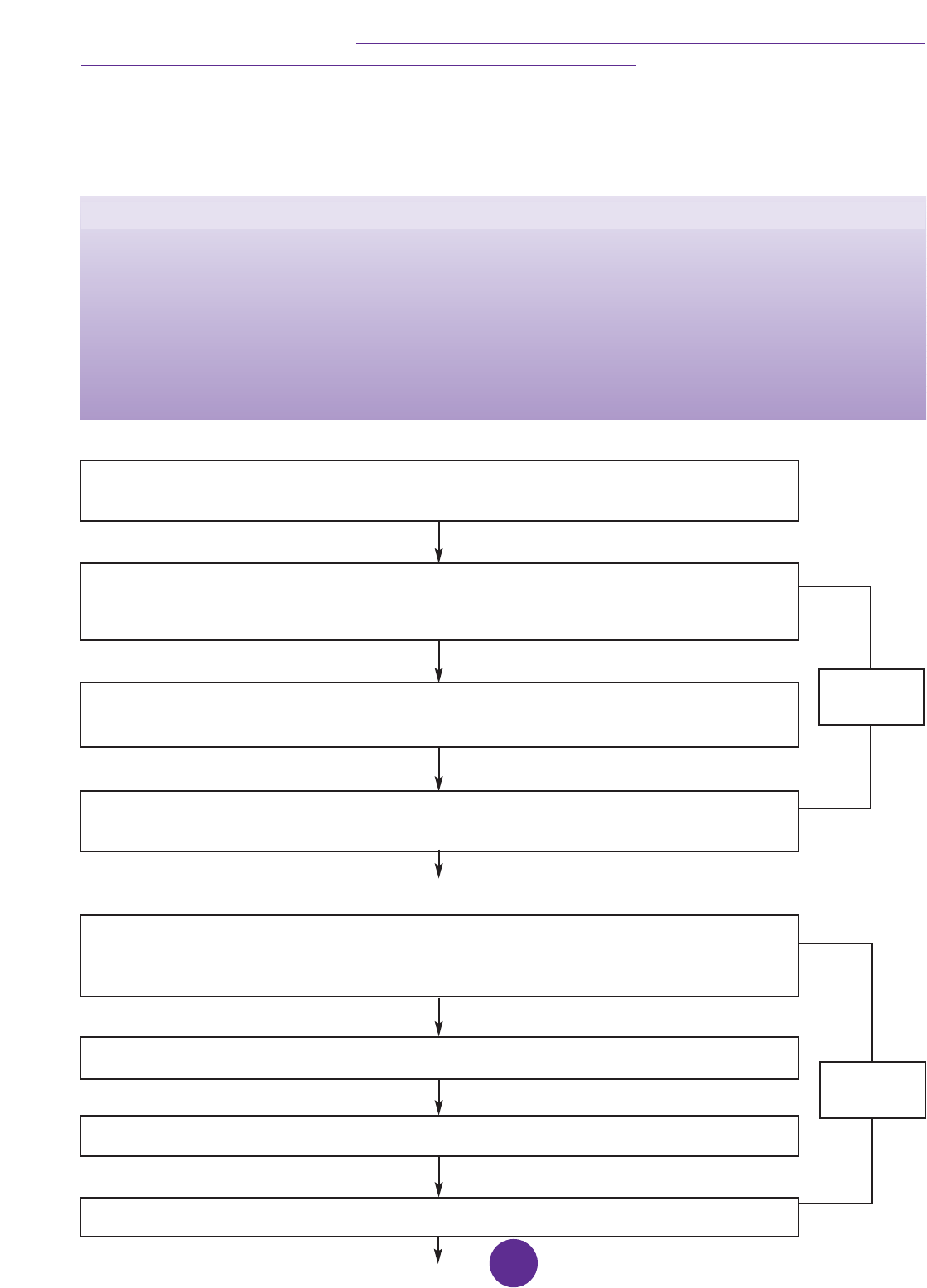
COMMISSION ON LEGISLATIVE DEMOCRACY
Recommendations Appendix: K-1
Flowchart for a Referendum Act Process
Summary of Contents
This appendix is a flowchart showing the steps and related time frames in the process set out in the
proposed Referendum Act for New Brunswick. The example used is a referendum to be held with a
provincial general election on a fixed election date of October 15, 2007, as recommended by the
Commission. The flowchart is organized into the following sections:
1. Initiation of Referendum/Approval of Question by Legislative Assembly
2. Establishment of Referendum Committees
3. Information to Voters
4. Post-Referendum Reporting Requirements
178
L-G in C makes decision to hold a referendum; Government consults with Leader of
Opposition/Leaders of other parties on wording of question
27
days
1. Initiation of Referendum/Approval of Question by Legislative Assembly
A Member of Executive Council tables the proposed question in Legislative Assembly;
Committee of legislature is established to consider wording of Referendum Question.
Committee holds public hearings; hears from experts.
Committee reports back to House; Motion to approve or amend the question is debated
by Legislative Assembly.
2. Establishment of Referendum Committees
Upon approval of question (with or without amendments) by Legislative Assembly,
LG in C issues Order for Referendum.
Upon the Order for the holding of a referendum being made, the Chief Electoral Officer
establishes Referendum Committees, one in support of the referendum question and
one in opposition to the referndum question.
Individuals and groups can apply to be part of a Referendum Committee.
CEO calls preliminary meeting of each Referendum Committee; they adopt their by-laws.
Three calendar days
21 calendar days
(approx. three calendar days)
14 calendar days
14 calendar days
Deadline for applications for affiliation with a Referendum Committee.
14 calendar days
42
days
(immediately)
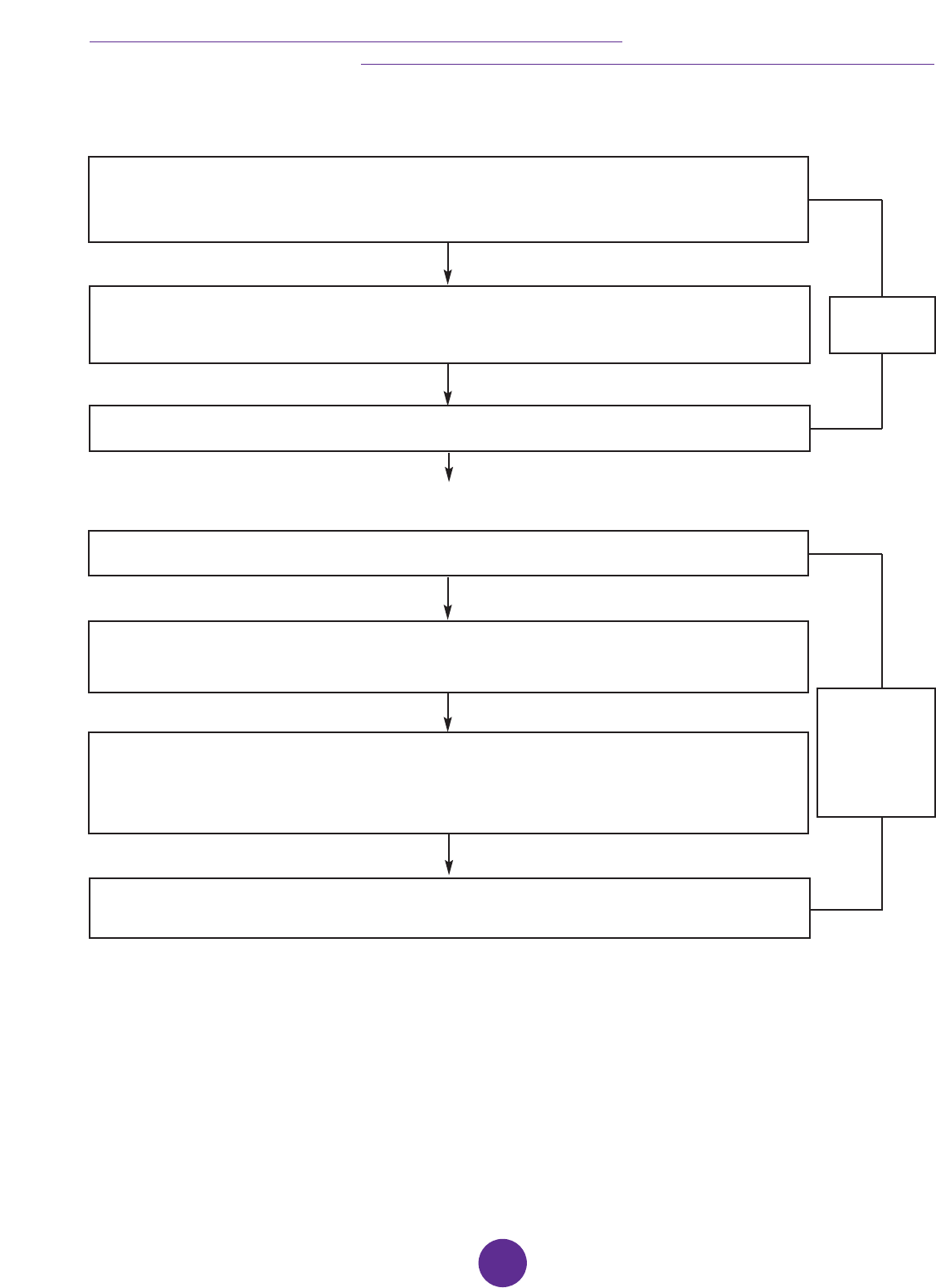
FINAL REPORT AND RECOMMENDATIONS
179
Arguments prepared by the registered Referendum Committees in support of and in
opposition to the question must be filed with Chief Electoral Officer. (September 10)
35
days
CEO mails out to electors a sample ballot, arguments in support of and in opposition
to referendum question (September 20)
Referendum is held (October 15)
4. Post-Referendum Reporting Requirements
CEO announces results of Referendum on voting day (October 15)
Each Referendum Committee must file an audited referendum return with the CEO, setting out
referendum expenses and contributions received by committees and their affiliates.
CEO prepares and files with Legislative Assembly a report on the referendum that includes
financial information filed by the Referendum Committees, information on matters arising
during the referendum, and suggested amendments to Referendum Act.
10 calendar days
25 calendar days
120 calendar days
60 calendar days
Committee of Legislative Assembly considers CEO’s report and reports back to house.
90 calendar days
270 days
(nine
months)
3. Information to Voters

COMMISSION ON LEGISLATIVE DEMOCRACY
180

FINAL REPORT AND RECOMMENDATIONS
Background Appendix: I
Mission, Mandate, and Terms of Reference
Mission
To identify options for an enhanced citizen-centred democracy in New Brunswick, building on the values, heritage,
culture, and communities of our province.
Mandate
To examine and make recommendations on strengthening and modernizing our electoral system and democratic
institutions and practices in New Brunswick, to make them more fair, open, accountable and accessible to New
Brunswickers.
The Commission on Legislative Democracy will seek the views of New Brunswickers on:
• Fairer, more equitable and effective representation in the Legislative Assembly;
• Greater public involvement in decisions affecting people and their communities;
• More open, responsive, and accountable democratic institutions and practices;
• Higher civic engagement and participation in the democratic processes in New Brunswick.
Terms of Reference
Specifically, the Commission on Legislative Democracy will focus on the following areas:
Electoral Reform
1. To examine and make recommendations on implementing a proportional representation electoral system for the
New Brunswick Legislative Assembly, and propose a specific model best suited for our province that ensures
fairer representation, greater equality of votes, an effective legislature and government, and a continued role
for directly-elected MLAs representing specific geographic boundaries.
2. To examine and make recommendations on future steps, including amendments to the Elections Act, required to
give effect to a new proportional representation electoral system.
3. To examine and make recommendations on the principles and procedures to guide future changes to New
Brunswick’s electoral boundaries, including the number of constituencies to be represented in the Legislative
Assembly, that will be referred to a Representation and Electoral Boundaries Commission.
4. To examine and make recommendations on instituting fixed election dates for provincial general elections while
proposing a fixed election date and procedures best suited for our province.
5. To examine and make recommendations on increasing voter turnout in provincial general elections, particularly
amongst young New Brunswickers, and improving accessibility to the electoral process in New Brunswick by
modernizing our electoral laws while reinforcing the democratic rights and responsibilities of New Brunswickers
to vote.
Legislative Reform
1. To examine and make recommendations on enhancing the role of the Legislative Assembly and MLAs in
decision-making while ensuring greater accountability of MLAs to their constituents and to New Brunswickers.
2. To examine and make recommendations on enhancing transparency and accountability in appointments to
government agencies, boards, and commissions.
181
Chapter 7 - Background Appendices

COMMISSION ON LEGISLATIVE DEMOCRACY
Democratic Reform
1. To examine and make recommendations on enhancing direct democracy by proposing a New Brunswick
Referendum Act that sets out the rules and procedures for allowing province-wide, binding referendums on
significant public policy issues.
2. To examine and make recommendations on enhancing public involvement in government and legislative
decision-making.
To fulfill its mandate, the Commission on Legislative Democracy will:
1. Seek the views of New Brunswickers through public hearings and submissions;
2. Hold other meetings and forums as required;
3. Conduct research and analysis as required that is appropriate to all aspects of the Commission’s mandate;
4. Report no later than December 31, 2004.
182

Multi-Member District Number 1 (North)
Number Current Number of Regional Health District Education Council
of Ridings Ridings Electors Authority Francophone Anglophone
1 1 - Restigouche West 8,158 4, 5 & 7 3 & 5 14 & 15
2 2 - Campbellton 9,349 5 5 15
3 3 - Dalhousie - Restigouche East 9,219 5 5 15
4 4 - Nigadoo - Chaleur 10,539 5 & 6 5 15
5 5 - Bathurst 10,234 6 5 15
6 6 - Nepisiguit 9,864 6 5 & 9 15
7 7 - Caraquet 9,517 6 9 15
8 8 - Lamèque - Shippagan - Miscou 9,889 6 9 15
9 9 - Centre - Péninsule 7,979 6 9 15
10 10 - Tracadie - Sheila 9,990 6 9 15
11 52 - Grand Falls Region 9,127 4 3 14
12 53 - Madawaska-la-Vallée 8,298 4 3 14
13 54 - Edmundston 8,796 4 3 14
14 55 - Madawaska-les-Lacs 9,070 4 3 14
Total number of electors for district: 130,029
Deviation from average number of electors in the multi-member districts: -7.6%
Background Appendix: II
Example of a Regional Mixed Member Proportional (MMP) Electoral
System in New Brunswick
The proposed NB MMP electoral system for New Brunswick would be composed of four regional multi-member
districts of approximately the same size. Each regional district would be represented by five list MLAs and would
contain nine single member ridings being represented by one MLA each. The total number of seats in the Legislature
would be 56.
The multi-member districts would be composed of an average of 140,770 voters while the 36 single member
ridings would have an average of 15,641 voters (based on the 2003 provincial election numbers).
Below is an example of how the province could be divided into four regional multi-member districts. Actual
boundaries for each of the four regions and each of the 36 single member ridings would be drawn by an
independent Representation and Electoral Boundaries Commission.
FINAL REPORT AND RECOMMENDATIONS
183

COMMISSION ON LEGISLATIVE DEMOCRACY
184
Multi-Member District Number 2 (Central)
Number Current Number of Regional Health District Education Council
of Ridings Ridings Electors Authority Francophone Anglophone
1 11 - Miramichi Bay 9,050 7 11 16
2 12 - Miramichi-Bay du Vin 10,219 7 9 & 11 16
3 13 - Miramichi Centre 10,190 7 11 16
4 14 - Southwest Miramichi 8,505 7 & 3 11 16
5 41 - Oromocto-Gagetown 11,791 2 & 3 1 17
6 42 - Grand Lake 9,340 3 1 & 11 2/17
7 43 - Fredericton North 14,096 3 1 18
8 44 - Fredericton-Fort Nashwaak 10,917 3 1 18
9 45 - Fredericton South 13,744 3 1 18
10 46 - New Maryland 11,923 3 1 17 & 18
11 48 - Mactaquac 10,971 3 1 14 & 18
12 49 - Woodstock 10,906 3 1 14
13 50 - Carleton 10,258 3 3 14
14 51 - Victoria-Tobique 8,315 3 3 14
Total number of electors for district: 150,225
Deviation from average number of electors in the multi-member districts: +6.7%
Multi-Member District Number 3 (South East)
Number Current Number of Regional Health District Education Council
of Ridings Ridings Electors Authority Francophone Anglophone
1 15 - Rogersville-Kouchibouguac 8,003 7 & 1 11 16
2 16 - Kent 8,146 1 11 16
3 17 - Kent South 12,378 1 11 2
4 18 - Shediac-Cap-Pelé 12,839 1 11 2
5 19 - Tantramar 7,602 1 11 2
6 20 - Dieppe-Memramcook 16,718 1 11 & 1 2
7 21 - Moncton East 13,777 1 1 2
8 22 - Moncton South 11,847 1 1 2
9 23 - Moncton North 12,545 1 1 2
10 24 - Moncton Cresent 14,260 1 1 2
11 25 - Petitcodiac 9,080 1 & 3 1 2 & 6
12 26 - Riverview 11,897 1 1 2
13 27 - Albert 8,871 1 1 2
Total number of electors for district: 147,963
Deviation from average number of electors in the multi-member districts: +5%

FINAL REPORT AND RECOMMENDATIONS
185
Multi-Member District Number 4 (South West)
Number Current Number of Regional Health District Education Council
of Ridings Ridings Electors Authority Francophone Anglophone
1 28 - Kings East 9,882 2 1 6
2 29 - Hampton-Belleisle 11,188 2 1 6
3 30 - Kennebecasis 12,597 2 1 6
4 31 - Saint John-Fundy 9,240 2 1 6 & 8
5 32 - Saint John-Kings 10,965 2 1 8
6 33 - Saint John Champlain 10,003 2 1 8
7 34 - Saint John Harbour 9,768 2 1 8
8 35 - Saint John Portland 10,489 2 1 8
9 36 - Saint John Lancaster 10,524 2 1 8
10 37 - Grand Bay-Westfield 8,453 2 1 8
11 38 - Charlotte 7,929 2 1 8 & 10
12 39 - Fundy Isles 4,057 2 1 10
13 40 - Western Charlotte 9,167 2 1 10
14 47 - York 10,601 2 & 3 1 10, 14 & 18
Total number of electors for district: 134,863
Deviation from average number of electors in the multi-member districts: -4%

COMMISSION ON LEGISLATIVE DEMOCRACY
Background Appendix: III
Comparison of the New Brunswick MMP Electoral System with SMP
Electoral System
186
Values Criteria NB MMP SMP
Fairness - the system levels the playing field among candidates and parties; it is strong weak
free of built-in biases that distort election results.
Equality - the system is meaningful to voters - all votes count equally; votes are strong weak
not “wasted”.
Representative - the system creates legislatures that are:
1) geographically representative - there are members who are chosen at the mixed strong
local level and are ultimately accountable to the area which they represent. results
2) representative of parties - they reflect the support of voters for various strong weak
political parties.
3) demographically representative - they are reflective of the way our society strong weak
looks
Open - the system ensures a transparent, accountable, and participatory strong strong
democracy for people.
Accessible - there is ease of voting. It is not difficult to register to vote or to strong strong
cast a vote and the ballot is not confusing to voters.
Effective government - the system produces stable governments that are mixed strong
effective and able to govern. results
Accountable - the system allows voters to clearly identify who is responsible for mixed strong
decisions and hold them accountable. results
Effective Opposition - the system ensures the presence of an effective strong weak
opposition that can assess the work of the government, hold it to account, and
present an alternative to the present government.
Inclusive - the system accommodates smaller parties and minority viewpoints strong weak
and encourages parties and candidates to reach out to broad segments
of the population.
Choice - voters have a range of democratic choices in parties and candidates strong weak
at election time.
(Source - Commission on Legislative Democracy)

Background Appendix: IV
Comparison of Boundaries Legislation Across Canada
FINAL REPORT AND RECOMMENDATIONS
187
Jurisdiction Legislation When reviewed? Composition of Commission
(total number of members)
N & L Electoral Boundaries Every 10 years
Act
PEI Electoral Boundaries After every third
Act general election
NS House of Every 10 years
Assembly Act
PQ Election Act After every second
general election
ON Representation Act Uses same boundaries as those established by federal redistribution process
MN Electoral Divisions Every 10 years
Act
SK Constituency Every 10 years
Boundaries Act
AB Electoral Boundaries After every second
Commission Act general election
BC Electoral Boundaries After every second
Commission Act general election
CAN Electoral Boundaries After every decennial
Readjustment Act (10 year) census
Chief Justice of N&L appoints Chair; Speaker
of House of Assembly appoints four other members (5)
LG in C (Cabinet) appoints Chair; Speaker appoints two
other members (3)
Select Committee of House appoints Chair and
members (number varies)
Chief Electoral Officer appoints Chair; Premier appoints
two commissioners, with approval of 2/3rds of National
Assembly (3)
Members must be Chief Justice of Manitoba, President
of University of Manitoba, and Chief Electoral Officer of
Manitoba (3)
LG in C appoints Chair; two other members appointed
by LG in C on advice of leaders of opposition & other
MLAs (3)
LG in C appoints Chair*; Speaker appoints four
members - two nominated by Leader of Opposition and
two by President of Executive Council (5) *Chair must
be ethics commissioner, auditor-general, president of a
post-secondary educational institution, judge or retired
judge or someone of similar stature.
LG in C appoints a judge or retired judge, the Chief
Electoral Officer and a person who is not an MLA or
government employee and who is nominated by the
Speaker (3)
Speaker appoints a Judge as chair and two other
members (3)

COMMISSION ON LEGISLATIVE DEMOCRACY
188
Juris- Terms of Requirement for Who has Role for
diction Reference Public Hearings? final authority? politicians/parties?
+/- 10%, but can use
+/- 25% where warranted
by special geographic
considerations
Yes: at least one public
hearing in Island part of
province and one in
Labrador
Legislature
Speaker appoints members he/she
considers suitable; MNAs, MPS,
Senators ineligible
N & L
PEI
+/- 25% Yes: throughout province Legislature Leaders of parties consulted on
appointments; MLAs, MPS
ineligible
NS
Variance not set out in
legislation
Yes: two sets, one prior to
and one following
preparation of preliminary
report
Legislature
Select Committee of House appoints
members; they must be broadly
representative of Province
PQ +/- 25% (can exceed in
certain circumstances,
must justify in writing)
Exception - Iles de la
Madeleine
Yes: within six months of
tabling preliminary
report. May hold further
hearings on proposed
amendments
Commission Appointments need approval of 2/3
rds
of MNAs; MNAs may make
representations to Commission,
which must consider them before
submitting final report
ON Uses same boundaries as those established by federal redistribution process
MN
+/- 10% for districts
south of 53
rd
parallel;
+/- 25% for districts
north of it
Yes: at time/places feels
necessary and suitable
Legislature No role for politicians in
appointment of members
SK +/- 5%
Two exceptions in
north
Yes: after interim report is
filed
Legislature
Leader of opposition and
recognized parties consulted on
appointments.
AB
+/- 25% (up to 4
districts may be -50%
if meet certain criteria)
Yes: two sets: one before
report is submitted to
Speaker and one after
report is made public
Legislature
Parties represented in Legislature
consulted on appointments; MLAs
not eligible
BC +/- 25% (may be
exceeded in very
special circumstances)
Yes: may hold before
report submitted to
Speaker/Clerk, must
hold after report made
public
Legislature
Premier and Leader of Opposition
consulted on one appointment;
MLA not eligible; Commission must
give all current MLAs opportunity
to make a submission to it
CAN
+/- 25% (or more in
extraordinary
circumstances)
Yes: must hold at least
one sitting before
completing report
Commission Speaker appoints two members
he/she deems suitable; MLAs,
MPS, Senators ineligible; MPs
may make objections in H of C,
Commission must consider them
before finalizing maps
(Source - Commission on Legislative Democracy)
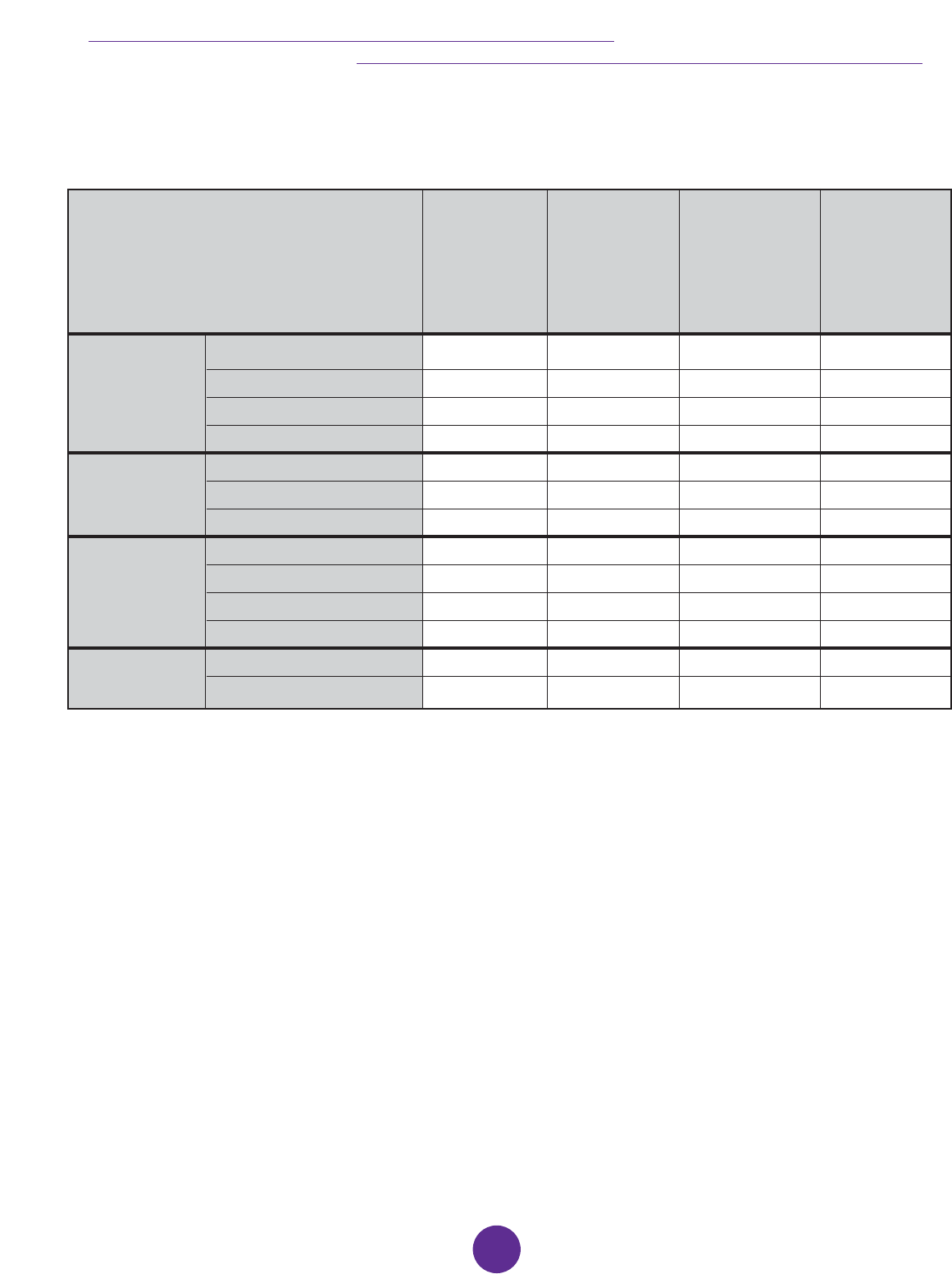
Background Appendix: V
Voter Participation - Ranked by Social Background
FINAL REPORT AND RECOMMENDATIONS
189
Social background Social The digital General Membership
background divide knowledge in voluntary
and general % ever used about politics associations
interests in Internet to
politics be informed
about politics
Education Less than high school 3 4 4 4
Completed high school 4 3 3 2
Some postsecondary 2 2 2 3
University graduate 1 1 1 1
Income Low income 3 3 3 3
Middle income 2 2 2 2
High income 1 1 1 1
Generational Post generation X 4 1 4 4
Generation X 3 2 3 3
Baby Boomer 2 3 2 1
Pre-baby boomer 1 4 1 2
Gender Women 2 2 2 1
Men 1 1 1 1
(Source - Commission on Legislative Democracy, adapted from Citizens, Gidengil, Blais, Nevitte, Nadeau, Canadian
Democratic Audit, 2004)

COMMISSION ON LEGISLATIVE DEMOCRACY
Background Appendix: VI
Comparison of MLA Salaries Across Canada
190
*1: commuting within Whitehorse
*2: commuting from outside Whitehorse and Members of Executive Council
*3: Commuting within Yellowknife
*4: Commuting from outside Yellowknife and Members of Executive Council
Source: Commission on Legislative Democracy (Data adapted from Report to the Legislative Assembly of Manitoba, by Earl
Backman, Commissioner for MLA Pay, Allowance and Retirement Benefits)
Jurisdiction Basic Salary MLA total Premier Premier Total Minister Minister
2003-2004 Salary Additional Salary Additional Total
Salary Salary Salary
Canada $139,200 $139,200 $139,200 $278,400 $66,816 $206,016
BC $73,800 $73,800 $45,000 $118,800 $39,000 $112,800
AB $43,152 $75,759 $67,380 $142,919 $52,956 $128,495
SK $63,540 $72,009 $57,393 $129,402 $40,176 $112,185
MB $65,535 $65,535 $46,397 $111,932 $29,001 $94,536
ON $85,240 $85,240 $67,595 $152,835 $36,057 $121,297
QC $78,886 $103,530 $82,830 $186,360 $59,165 $162,695
NB $40,565.95 $73,493.95 $54,331.23 $127,825.18 $36,221.57 $109,715.52
Rank 12/16 9/16 11/14 8/14 10/14 10/14
NS $33,256.30 $60,040.30 $55,736.69 $115,776.99 $39,708 $99,748.30
PE $33,967 $53,728 $58,871 $112,599 $41,585 $95,313
NL $46,086 $86,276 $66,587 $152,863 $48,276 $134,552
YU*1 $35,664 $58,703 $28,971 $87,674 $21,147 $79,850
YU*2 $35,664 $62,001 - - - -
NT*3 $80,140.86 $89,990.86 $60,952 $150,942.86 $42,892 $132,882.86
NT*4 $80,140.86 $95,540.86 - - - -
NU $60,800 $62,208 $63,200 $125,408 $53,200 $115,408

Background Appendix: VII
Comparison of MLA Resources Across Canada
FINAL REPORT AND RECOMMENDATIONS
191
Annual Staffing Office Furniture Tel Internet, Printing
Office Facilities & Equip. and Network, and
Allowance Cellular E-mail Mailing
BC
AB
$84,000
SK
MB
ON
QC
NB
NS
PEI
NL
Additional Max $4000
from list of
office
supplies
Additional
Additional
✔ ✔
$51,809 +
($0.96 x E1.5) +
[2271 + $0.0757
(C - 14,000)]
✔✔ ✔ ✔✔
$1,250
postage
✔✔
$16,607 +
number of
voters on
voters list x by
the amount of 3
first class
stamps
May be
included
Also have
separate
fund that
they can use
Not included
(members
unlimited
telephone
expenses)
✔
(network
and e-
mail)
$42,554 3 house-
holders/year
✔✔
✔
✔
✔
$236,000
✔✔
✔
✔
Not included
separate
budget
Not included
separate
budget
$32,800 -
$36,200
$114,199 -
$132,387
✔
✔
✔✔
✔
$25,000
✔
✔
✔✔
✔✔
$48,600 or $4,050 per month for expenses accounted for by proper receipts and incurred on account of
services
N/A
N/A Provided to caucus offices
✔ = included
Source: Commission on Legislative Democracy adapted from document received from N.B. Legislative Assembly.

COMMISSION ON LEGISLATIVE DEMOCRACY
Background Appendix: VIII
Survey of New Brunswick MLAs
As part of its academic research program, the Commission on Legislative Democracy asked Dr. David C. Docherty,
Chair and associate professor for the Department of Political Science at Wilfrid Laurier University, to conduct an
independent survey of New Brunswick’s MLAs to help the Commission better understand the needs and concerns of
New Brunswick’s elected officials. In particular, Dr. Docherty’s survey examined how members of the New
Brunswick Legislature balance their constituency and legislative workloads, and the types of resources that are
provided to them.
The questionnaire was sent by Dr. Docherty in the late spring of 2004, to all members of the New Brunswick
legislature. At the time, there were 54 sitting MLAs. A follow-up reminder was mailed in July. The response rate was
fifty four percent of MLAs responding. This response rate is considered high by Dr. Docherty, compared with other
surveys he has completed.
The Commission received data from Dr. Docherty, to create the following charts. Not all answers are reflected in
these charts, as some of the questions asked where open-ended or ranked. The Commission did not receive any of
the responses in raw data form, to ensure confidentiality and anonymity of the MLAs who responded.
The final results of this analysis will be published by the Commission in the form of an article by Dr. Docherty, in our
forthcoming volume of research papers.
192
Progressive
Conservative
Liberal
Current
Cabinet Minister
Former Cabinet
Minister
Not a
Minister
0
10
20
30
40
50
60
Source: Survey of New Brunswick’s MLAs, Dr. David Docherty , October 2004
in per cent
59%
Demographic Profile
41%
Party Affiliation
30.8%
Have you spent part of your political
career as a cabinet minister?
15.4%
53.8%
41%
59%
Rural Urban Mix
0
10
20
30
40
50
60
Source: Survey of New Brunswick’s MLAs, Dr. David Docherty , October 2004
in per cent
59.3%
Riding Composition
37%
3.7%
Not at all important
Not very important
Somewhat important
Important
Improve the social
and economic
conditions in my riding
Serve in
cabinet
Serve in
shadow cabinet
Engage in
policy making
Help individuals in
my constituency
0
10
20
30
40
50
60
70
80
90
100
Why Enter Politics and Career Goals?
in per cent
Source: Survey of New Brunswick’s MLAs, Dr. David Docherty , October 2004
Political Parties Legislature Both
0
10
20
30
40
50
60
70
80
Source: Survey of New Brunswick’s MLAs, Dr. David Docherty , October 2004
in per cent
0.0%
Who should provide orientation for new MLAs?
71%
29%
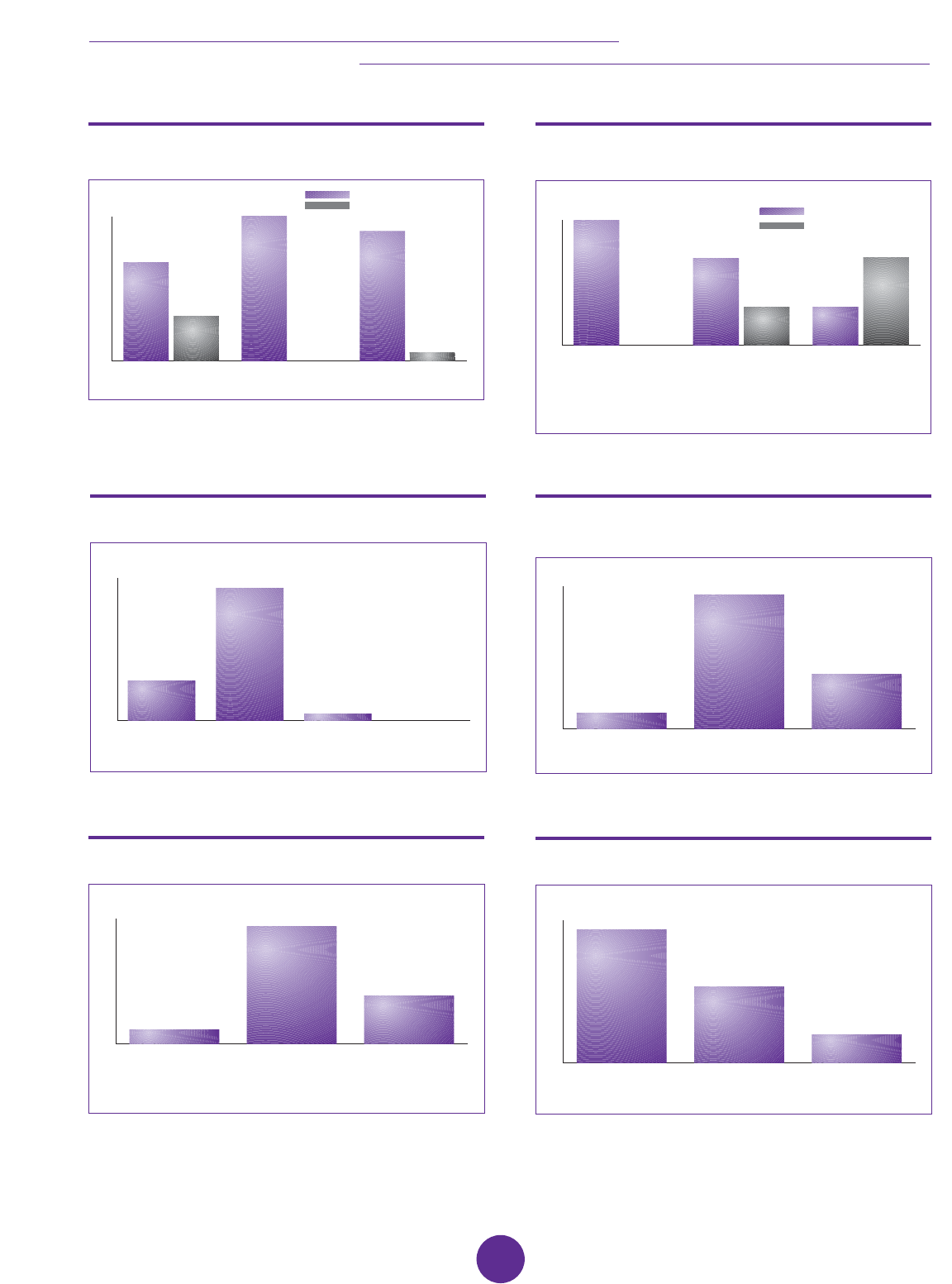
FINAL REPORT AND RECOMMENDATIONS
193
Not important
Important
Strong Legislative Committees
Agreement in caucus Direction from Cabinet
0
10
20
30
40
50
60
70
80
90
100
Source: Survey of New Brunswick’s MLAs, Dr. David Docherty , October 2004
Thinking just of public policy formation, how important
are each of the following in terms of creating policies that
serve the best interests of New Brunswick?
in per cent
68%
32%
100%
0%
92%
8%
Disagree
Agree
0
10
20
30
40
50
60
70
80
90
100
Source: Survey of New Brunswick’s MLAs, Dr. David Docherty , October 2004
MLAs, the Legislature & Electoral Success
in per cent
69%
31%
100%
0%
30%
70%
A local reputation as a
hard working constituency
representative will carry
me a lot further in the next election
than being the chair of a standing
committee of the Legislature
Cross party consensus building
would be the single biggest
reform to improve the work
of the Legislature
My electoral success is more
closely tied to the popularity
of my leader and
our party
Strongly support Somewhat
support
Do not really
support
Do not support
at all
0
10
20
30
40
50
60
70
80
Do you support more free votes in the provincial
legislature on issues that are not matters of confidence?
Source: Survey of New Brunswick’s MLAs, Dr. David Docherty , October 2004
in per cent
22.2%
74.1%
3.7%
0.0%
Large increase Somewhat of an
increase
No change
0
10
20
30
40
50
60
70
Do you believe that relaxing the idea of what constitutes
confidence would lead to an increase in free votes in
the Legislature?
Source: Survey of New Brunswick’s MLAs, Dr. David Docherty , October 2004
in per cent
7.7%
65.4%
26.9%
Gov’t would have to
call election after 2 or 3
votes lost
Gov’t could continue to
govern but would be
much weaker
Gov’t could lose on many
bills without been seen
as weak
0
10
20
30
40
50
60
70
If there were more free votes, what would be the impact
on a government that had some of these bills defeated?
Source: Survey of New Brunswick’s MLAs, Dr. David Docherty , October 2004
in per cent
8%
64%
28%
Better Worse No impact
0
10
20
30
40
50
60
Source: Survey of New Brunswick’s MLAs, Dr. David Docherty , October 2004
in per cent
56%
30%
14%
Do you believe that minority government might provide
opportunities to produce better public policy?
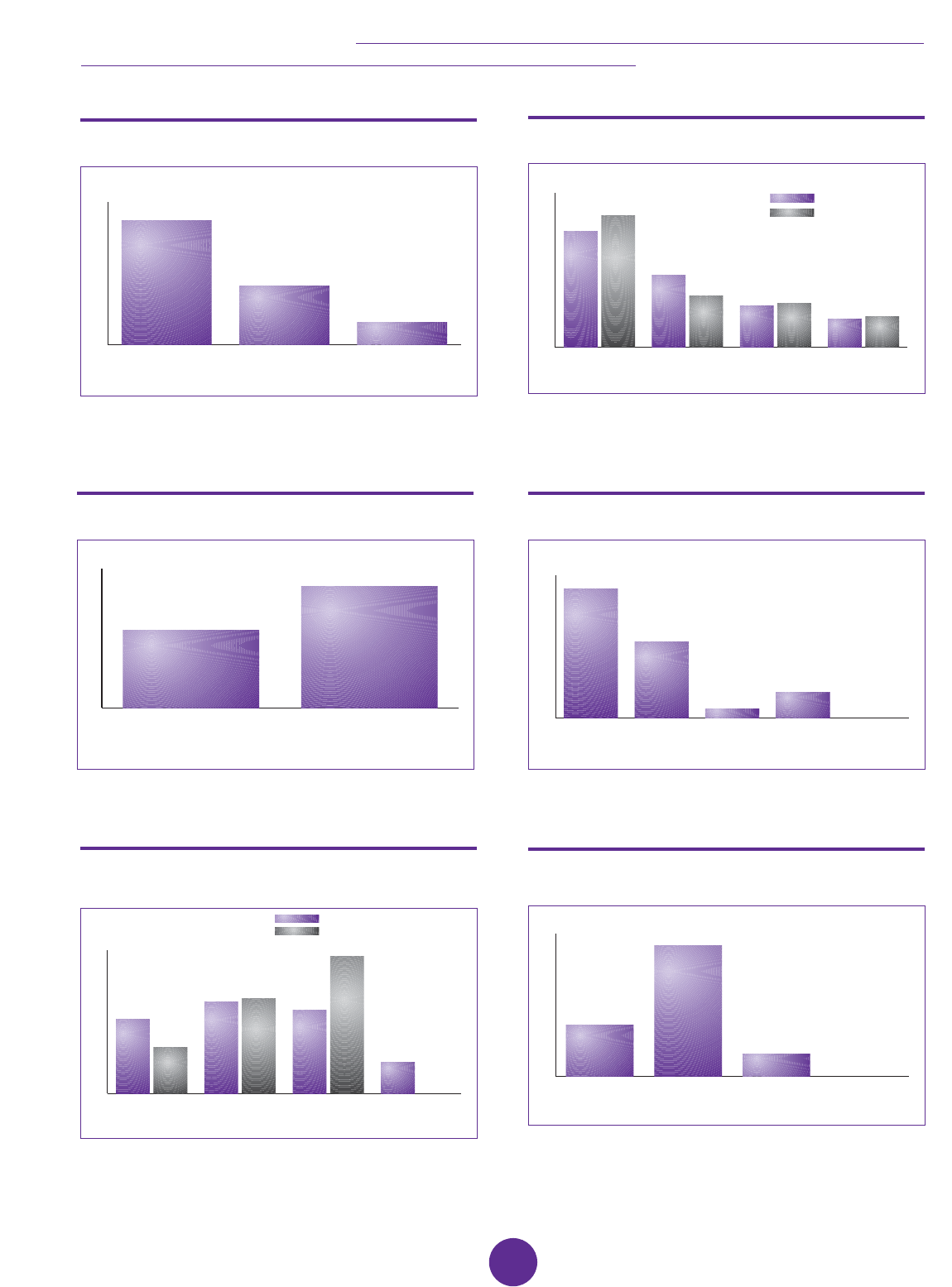
COMMISSION ON LEGISLATIVE DEMOCRACY
194
Increase the need Decrease the need No impact
0
10
20
30
40
50
60
70
Source: Survey of New Brunswick’s MLAs, Dr. David Docherty , October 2004
in per cent
60.7%
28.6%
10.7%
Would minority government increase, decrease or
have no effect on party discipline?
Ideal time
Actual time spent
Constituency work Legislative work Policy and issue
development
Party work
0
10
20
30
40
50
60
Source: Survey of New Brunswick’s MLAs, Dr. David Docherty , October 2004
How MLAs spend their time on duties
in per cent
45%
51%
28%
20%
16%
17%
11%
12%
Percentage of riding that is an
unincorporated area
Time spent on constituency work
that should be handled
by municipal level
0
10
20
30
40
50
60
70
Source: Survey of New Brunswick’s MLAs, Dr. David Docherty , October 2004
in per cent
Unincorporated areas in riding
39%
61%
Daily/Weekly Quite often Not very often Occasionally Never
0
10
20
30
40
50
60
How often are you approached by constituents on a
matter that is outside your responsibility?
Source: Survey of New Brunswick’s MLAs, Dr. David Docherty , October 2004
in per cent
53.6%
32.1%
3.6%
0%
10.7%
Try to solve problem at own office
Forward it to appropriate MP
Always Often Sometimes Never
0
5
10
15
20
25
30
35
40
45
50
When approached by a constituent about a matter
where responsibility rests with the federal government,
how often do you:
Source: Survey of New Brunswick’s MLAs, Dr. David Docherty , October 2004
in per cent
29%
19%
32%
0%
33%
29%
48%
11%
A great deal of
effort
Some effort Not very much
effort
No effort at all
0
10
20
30
40
50
60
70
How much effort do you make to inform your
constituents about the types of activities you engage
in while you are at the capital ?
Source: Survey of New Brunswick’s MLAs, Dr. David Docherty , October 2004
in per cent
25%
64%
0%
11%

FINAL REPORT AND RECOMMENDATIONS
195
Constituency work Legislative work
0
10
20
30
40
50
60
70
80
90
Source: Survey of New Brunswick’s MLAs, Dr. David Docherty , October 2004
If members of the NB Legislature were provided with a budget
to hire an additional full-time staff person, what percentage of
that person’s time would you dedicate to constituency versus
legislative work?
in per cent
84%
16%
DisagreeAgree
Source: Survey of New Brunswick’s MLAs, Dr. David Docherty , October 2004
Making the Legislature Work Better
in per cent
59%
41%
A legislature that more accurately reflects
the population in terms of gender, Aboriginals
and language can produce legislation and
policy that more closely matches the needs
of the public
0
10
20
30 40
50 60
70 80
90
When Select Committees table unanimous
reports they should, where appropriate,
take the form of legislation and be
automatically given First Reading and
scheduled for a subsequent debate
If Standing Committees could examine
legislation in detail after First Reading,
including hearing from the public,
they would have more freedom to make
meaningful changes to legislation
via amendments
Secret ballot elections for Standing and
Select Committee Chairs would make
committees more independent of both
Government and Opposition
Party Leaders
86%
14%
57%
43%
54%
46%

COMMISSION ON LEGISLATIVE DEMOCRACY
196
Background Appendix: IX
Comparison of Limits on Election Spending across Canada
* All limits adjusted for inflation
Limits on Election Spending*
$0.70 x # of names on preliminary or
revised list of electors (whichever is
greater) in electoral districts where
party has candidates.
• 2004 limit for parties running
candidates in all ridings:
$17,593,925.32
Election:
• $150,000 nationally
• not more than $3000 in a
given electoral district
Referendum:
• $5000 (for individual or
group)
• Referendum Committee
= $.30 x escalator x # of
names of preliminary list
CAN
NB
$1.75 x # of electors - floor of
$11,000, ceiling of $22,000
N & L • $3.125 x # of names on revised list of
electors in electoral districts where
party endorses a candidate; min.
$12,000 for each electoral district
$3.125 x # of names on revised list
of electors; minimum $12,000
NS
$0.40 x # of electors in electoral
districts where party endorses official
candidate
Aggregate of:
• $1.00 x first 5,000 electors
• $0.85 x next 5,000 electors
• $0.75 x number of remaining electors
PEI
QC
ON
Limits for parties
Limits for each candidate
Limits for third parties
Aggregate of
• $2.07 x first 15,000 electors on
preliminary or revised list of
electors (whichever is greater)
• $1.04 x next 10,000 electors
• $0.52 x number of remaining electors
• $1.00 x # of electors in electoral
districts where party has a
candidate
• 2003 limit: $843,258
$6.00 x # of electors entitled to vote in
electoral districts where party
endorses official candidate
$1.75 x # of electors entitled to vote
$0.60 x # of electors in electoral
divisions where party endorses an
official candidate
Must not exceed $1.00 per elector
$0.60 x indexation factor x number of
electors in electoral districts where
party endorses official candidate
$0.96 x indexation factor x number of
electors

FINAL REPORT AND RECOMMENDATIONS
197
Limits on Election Spending*
$1.40 x # of names on final voters list
in electoral divisions where party
endorses a candidate
MB
SK
Northern constituencies: the greater
of $52,108 or $5.21 x # of names on
voters list.
Southern constituencies: the greater
of $39,082 or $2.60 x # names on
voters list.
AB
BC
$1.25 x # of registered voters in
electoral districts where party
endorses a candidate
• Where 25,000 or fewer registered
voters: $50,000
• Where more than 25,000 registered
voters: $50,000 and $0.50 for every
registered voter in excess of
25,000
• Where fewer than 2 registered
voters/sq. km, add $0.30 x # of sq. km
in electoral district; maximum
increase of 25% of electoral district
limit as determined by # of
registered voters
Limits for parties
Limits for each candidate
Limits for third parties
Electoral divisions with
• > than 30,000 sq miles:
$2.20 x # names
on final voters list
• < than 30,000 sq miles :
$3.50 x # names on final voters list
• $651,355 (adjusted)
No limits
Source: Commission on Legislative Democracy, based on 2003 Elections Canada Compendium on Election
Administration in Canada

COMMISSION ON LEGISLATIVE DEMOCRACY
198
Background Appendix: X
Comparison of Disclosure of Contribution Requirements Across Canada
Disclosure Requirements for Contributions
CAN
NB
N & L
Name, address of donor and amount for contributions over $100
NS
Name, address of donor and amount for contributions over $50
PEI
QC
ON
• Name, address of donor and amount for contributions over $200 for election campaigns and
leadership contests
• Nomination contests - $1,000 or more
Name, address of donor and amount for:
• All contributions from individuals over $100
• All contributions from corporations and trade unions
Name, address of donor and amount for contributions over $250
Name, address of donor and amount for contributions over $200
Contributions over $100 for election campaigns and leadership contests
MB
Name, address of donor and amount for contributions of $250 or more for election campaigns and
leadership contests
SK
Name of donor and amount for contributions over $250
AB
Name, address of donor and amount required for contributions over $375
BC
Name of donor and amount for contributions over $250 (applies to leaderships)
Source: Commission on Legislative Democracy, based on 2003 Elections Canada Compendium on Election
Administration in Canada

FINAL REPORT AND RECOMMENDATIONS
199
Background Appendix: XI
Comparison of Limits on Contributions Across Canada
Limits on Contributions
CAN
NB
N & L
NS
PEI
Source To who/what? Apply to
Leaderships?
Max. Apply to
Nominations?
Individuals $5,000/yr
• Parties
• candidates
• nomination contestants
yes yes
$5,000/election • independent candidates
$5,000/contest
• leadership contestants
Corps./Unions
$1,000/yr
• Candidates
• Nomination contestants
• riding associations
$1,000/election
• Individuals
• Corps
• Unions
$6,000/yr • Parties
• riding associations
• independent candidates
no no
No Limits on Contributions
No Limits on Contributions
No Limits on Contributions
QC
• Electors
(no corps,
unions,
interest
groups
$3,000/yr
• Each party, independent candidate
• independent candidates
no no

COMMISSION ON LEGISLATIVE DEMOCRACY
200
Limits on Contributions
ON
MB
SK
Source To who/what? Apply to
Leaderships?
Max. Apply to
Nominations?
$7,500/yr
• Each party
no no
$1,000/yr • Each riding association
$1,000/
campaign
• Each candidate
$5,000 total/
campaign
• Candidates endorsed by one party
• Individuals $3,000/yr • Candidates
• Riding associations
• Political parties
yes
(separate
$3,000 limit)
no
No Limits on Contributions
AB
$15,000/yr
$750/yr
$3,750/yr
$30,000/
campaign
$1,500/
campaign
$7,500/
campaign
• A party
• Riding association
• Riding association of each party
• A party
• A candidate
• Candidates of each party
• Individuals
• Corps
• Unions
• Individuals
• Corps
• Unions
BC
No Limits on Contributions
Source: Commission on Legislative Democracy, based on 2003 Elections Canada Compendium on Election
Administration in Canada
no no

FINAL REPORT AND RECOMMENDATIONS
Background Appendix: XII
Comparison of Referendum Legislation Across Jurisdictions
201
CAN
PEI
Referendum Act
QC
SK
AB
BC
Governor in
Council
Constitutional
matters only
No
N/A
Plebiscites Act
No
Referendum Act
On a question
approved or
Bill adopted
by National
Assembly
No
N/A
Referendum &
Plebiscites Act
Yes, if
referendum
occurs
during an
election
Jurisdiction
Name of Act Who may
initiate
referendum?
Issue
Binding? Majority
Required for
Passage
Spending
Limits?
Yes
Lieutenant
Governor in
Council
Matter of
public
concern
No
N/A
Government
of Québec
Yes
• L-G in C
(referendum)
• L-G in C,
Legislative
Assembly or
as a result of
citizens
petition.
(plebiscite)
• Matter of
public
concern.
• Any matter if
petition is
signed by 15%
of electors.
Referendum
Yes - if receive
more than 60%
of valid ballots
& at least 50%
of voters vote.
More than 60%
of valid ballots
cast by at least
50% of eligible
voters.
Constitutional
Referendum Act
L-G in C
Relating to
Constitution
Yes with more
than 50% of
the votes
50% + 1
No
Referendum Act
L-G in C
A matter of
public interest
Yes with more
than 50% of
votes
50% + 1
No
Recall and
Initiative Act
Citizens may
initiate an
“initiative”
Introduction of
a new law or
amendments to
an existing law
Yes with more
than 50% of the
votes in 2/3rd
of all electoral
districts
50% + 1 in 2/3
rds
of all electoral
districts of BC
No

COMMISSION ON LEGISLATIVE DEMOCRACY
202
Australia
Referendum
Machinery
Provisions Act
(1984)
New
Zealand
Government
Constitutional
matter
Any other
issue
Yes
No
Any alteration to
Constitution must
be approved by a
‘double majority’ : a
national majority of
electors; and a
majority of electors
in a majority of the
States (ie. at least
four of the six).
Citizens
Initiated
Referenda Act
(1993)
Yes
Jurisdiction
Name of Act Who may
initiate
referendum?
Issue
Binding? Majority
Required for
Passage
Spending
Limits?
No
Citizens
Any issue
except the
election of a
Member of
Parliament, the
way a
referendum
was held or an
issue on which
a similar
question has
already been
asked within a
five year
period.
No
N/A
Source: Commission on Legislative Democracy
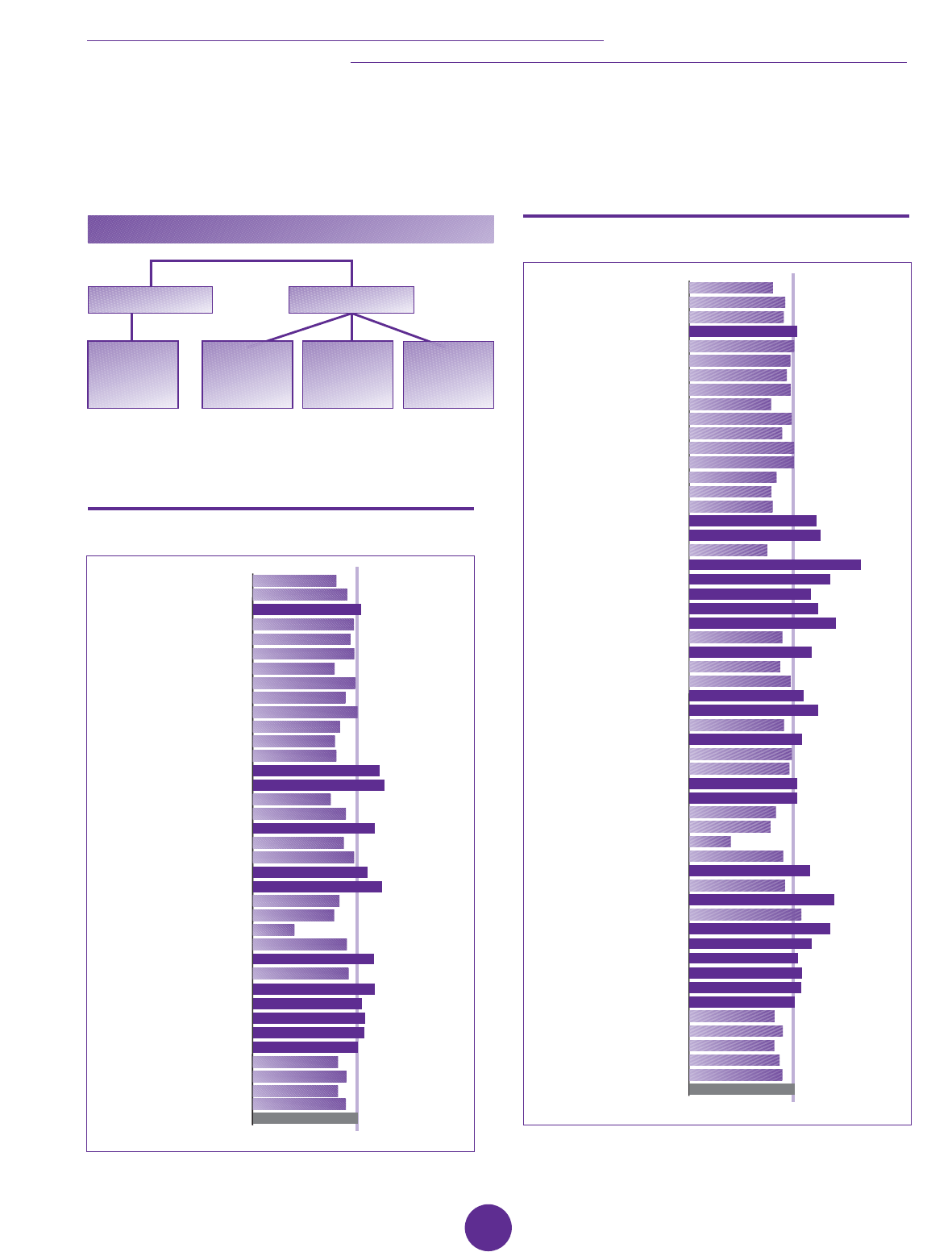
FINAL REPORT AND RECOMMENDATIONS
203
Background Appendix: XIII
Other NB Electoral and Democratic Statistics
All charts and tables in this report were created or adapted by the Commission on Legislative Democracy
from data as sourced.
Plurality
Proportional
Representation
Electoral System Families
SMP
(approx. 70
countries)
Ex’s: Canada, US,
UK, India
MMP
Ex’s: New Zealand,
Germany, Scotland,
Wales
List PR
(over 60
countries)
Ex’s: Belgium,
Sweden
STV
Ireland,
Australia
(Upper House),
Malta
Number of electors per riding, 2003 Election
8158
9349
9219
10539
10234
9864
9517
9889
7979
9990
9050
10219
10190
8505
8003
8146
12378
12839
7602
16718
13777
11847
12545
14260
9080
11897
8871
9882
11188
12597
9240
10965
10003
9768
10489
10524
8453
7929
4057
9167
11791
9340
14096
10917
13744
11923
10601
10971
10906
10258
8315
9127
8298
8796
9070
Source: Office of the Chief Electoral Officer
10238
Restigouche West
Campbellton
Dalhousie-Restigouche-East
Nigadoo Chaleur
Bathurst
Nepisiguit
Caraquet
Lamèque-Shippagan-Miscou
Centre-péninsule
Tracadie-Sheila
Miramichi Bay
Miramichi-Bay du Vin
Miramichi Centre
Southwest Miramichi
Rogersville-Kouchibouguac
Kent
Kent South
Shediac-Cap-Pelé
Tantramar
Dieppe-Memramcook
Moncton East
Moncton South
Moncton North
Moncton Crescent
Petitcodiac
Riverview
Albert
Kings East
Hampton-Belleisle
Kennebecasis
Saint John Fundy
Saint John Kings
Saint John Champlain
Saint John Harbour
Saint John Portland
Saint John Lancaster
Grand Bay-Westfield
Charlotte
Fundy Isles
Western Charlotte
Oromocto-Gagetown
Grand Lake
Fredericton North
Fredericton Fort Nashwaak
Fredericton South
New Maryland
York
Mactaquac
Woodstock
Carleton
Victoria-Tobique
Grand Falls
Madawaska-la-Vallée
Edmundston
Madawaska-les-Lacs
Average
Number of electors per rural riding,
2003 Election
8158
9219
10539
9864
9517
9889
7979
9990
9050
10219
8505
8003
8146
12378
12839
7602
9080
11897
8871
9882
11188
12597
8453
7929
4057
9167
11791
9340
11923
10601
10971
10906
10258
8315
9127
8298
9070
Source: Office of the Chief Electoral Officer
10238
Restigouche West
Dalhousie-Restigouche-East
Nigadoo Chaleur
Nepisiguit
Caraquet
Lamèque-Shippagan-Miscou
Centre-péninsule
Tracadie-Sheila
Miramichi Bay
Miramichi-Bay du Vin
Southwest Miramichi
Rogersville-Kouchibouguac
Kent
Kent South
Shediac-Cap-Pelé
Tantramar
Petitcodiac
Riverview
Albert
Kings East
Hampton-Belleisle
Kennebecasis
Grand Bay-Westfield
Charlotte
Fundy Isles
Western Charlotte
Oromocto-Gagetown
Grand Lake
New Maryland
York
Mactaquac
Woodstock
Carleton
Victoria-Tobique
Grand Falls
Madawaska-la-Vallée
Madawaska-les-Lacs
Average

COMMISSION ON LEGISLATIVE DEMOCRACY
204
Number of electors per urban riding,
2003 Election
9349
10234
10190
16718
13777
11847
12545
14260
9240
10965
10003
9768
10489
10524
14096
10917
13744
8796
Source: Office of the Chief Electoral Officer
10238
Campbellton
Bathurst
Miramichi Centre
Dieppe-Memramcook
Moncton East
Moncton South
Moncton North
Moncton Crescent
Saint John Fundy
Saint John Kings
Saint John Champlain
Saint John Harbour
Saint John Portland
Saint John Lancaster
Fredericton North
Fredericton Fort Nashwaak
Fredericton South
Edmundston
Average
in per cent
Participation rate by riding, 2003 Election
84.91%
78.79%
74.79%
67.5%
82.05%
82.73%
83.46%
83.24%
78.41%
77.77%
77.79%
84.43%
80.54%
78.99%
77.19%
66.34%
63.1%
67.76%
69.98%
68.87%
59.8%
60.95%
71.23%
63.49%
66.61%
59.37%
76.05%
68.64%
72.73%
67.83%
67.05%
67.66%
71.1%
78.94%
73.57%
73.94%
62.3%
58.19%
62.73%
62.7%
67.8%
57.25%
54.15%
59.81%
61.5%
58.04%
57.36%
55.96%
58.47%
71.01%
74.81%
68.02%
76.01%
45.94%
68.27%
63.82%
Source: Office of the Chief Electoral Officer
Restigouche West
Campbellton
Dalhousie-Restigouche-East
Nigadoo Chaleur
Bathurst
Nepisiguit
Caraquet
Lamèque-Shippagan-Miscou
Centre-péninsule
Tracadie-Sheila
Miramichi Bay
Miramichi-Bay du Vin
Miramichi Centre
Southwest Miramichi
Rogersville-Kouchibouguac
Kent
Kent South
Shediac-Cap-Pelé
Tantramar
Dieppe-Memramcook
Moncton East
Moncton South
Moncton North
Moncton Crescent
Petitcodiac
Riverview
Albert
Kings East
Hampton-Belleisle
Kennebecasis
Saint John Fundy
Saint John Kings
Saint John Champlain
Saint John Harbour
Saint John Portland
Saint John Lancaster
Grand Bay-Westfield
Charlotte
Fundy Isles
Western Charlotte
Oromocto-Gagetown
Grand Lake
Fredericton North
Fredericton Fort Nashwaak
Fredericton South
New Maryland
York
Mactaquac
Woodstock
Carleton
Victoria-Tobique
Grand Falls
Madawaska-la-Vallée
Edmundston
Madawaska-les-Lacs
Average
Source: Office of the Chief Electoral Officer
in per cent
Participation rate by rural riding
2003 Election
84.91%
78.79%
74.79%
67.5%
82.05%
82.73%
83.46%
83.24%
78.41%
77.77%
77.79%
84.43%
80.54%
78.99%
77.19%
66.34%
63.49%
63.1%
67.76%
69.98%
68.87%
59.8%
60.95%
71.23%
63.82%
66.61%
59.37%
76.05%
68.64%
72.73%
67.83%
67.05%
67.66%
71.1%
78.94%
73.57%
73.94%
72.74%
Restigouche West
Dalhousie-Restigouche-East
Nigadoo Chaleur
Nepisiguit
Caraquet
Lamèque-Shippagan-Miscou
Centre-péninsule
Tracadie-Sheila
Miramichi Bay
Miramichi-Bay du Vin
Southwest Miramichi
Rogersville-Kouchibouguac
Kent
Kent South
Shediac-Cap-Pelé
Tantramar
Petitcodiac
Riverview
Albert
Kings East
Hampton-Belleisle
Kennebecasis
Grand Bay-Westfield
Charlotte
Fundy Isles
Western Charlotte
Oromocto-Gagetown
Grand Lake
New Maryland
York
Mactaquac
Woodstock
Carleton
Victoria-Tobique
Grand Falls
Madawaska-la-Vallée
Madawaska-les-Lacs
Average

FINAL REPORT AND RECOMMENDATIONS
205
in per cent
Participation rate by urban riding
2003 Election
62.12%
68.27%
58.19%
62.73%
62.7%
67.8%
57.25%
45.94%
54.15%
59.81%
61.5%
58.04%
57.36%
55.96%
58.47%
71.01%
74.81%
68.02%
76.10%
Source: Office of the Chief Electoral Officer
Campbellton
Bathurst
Miramichi Centre
Dieppe-Memramcook
Moncton East
Moncton South
Moncton North
Moncton Crescent
Saint John Fundy
Saint John Kings
Saint John Champlain
Saint John Harbour
Saint John Portland
Saint John Lancaster
Fredericton North
Fredericton Fort Nashwaak
Fredericton South
Edmundston
Average
67.8%
57.25%
45.94%
54.15%
59.81%
61.5%
in per cent
Participation rate by rural riding with predomi-
nantly Anglophone population, 2003 Election
77.77%
77.79%
66.34%
63.49%
67.76%
69.98%
68.87%
59.8%
71.23%
63.82%
66.61%
59.37%
76.05%
68.64%
67.83%
67.05%
67.66%
71.1%
64.65%
72.73%
58.19%
62.73%
62.7%
74.81%
58.04%
57.36%
55.96%
58.47%
63.1%
60.95%
Source: Office of the Chief Electoral Officer
Miramichi-Bay du Vin
Miramichi Centre
Southwest Miramichi
Tantramar
Moncton East
Moncton South
Moncton North
Moncton Crescent
Petitcodiac
Riverview
Albert
Kings East
Hampton-Belleisle
Kennebecasis
Saint John Fundy
Saint John Kings
Saint John Champlain
Saint John Harbour
Saint John Portland
Saint John Lancaster
Grand Bay-Westfield
Charlotte
Fundy Isles
Western Charlotte
Oromocto-Gagetown
Grand Lake
Fredericton North
Fredericton Fort Nashwaak
Fredericton South
New Maryland
York
Mactaquac
Woodstock
Carleton
Victoria-Tobique
Average
in per cent
Participation rate with predominantly
Francophone population by riding, 2003 Election
77.34%
73.94%
68.27%
73.57%
78.94%
71.01%
77.19%
78.99%
80.54%
84.43%
78.41%
83.24%
83.46%
82.73%
82.05%
67.5%
68.02%
76.1%
84.91%
78.79%
74.79%
Source: Office of the Chief Electoral Officer
Restigouche West
Campbellton
Dalhousie-Restigouche-East
Nigadoo Chaleur
Bathurst
Nepisiguit
Caraquet
Lamèque-Shippagan-Miscou
Centre-péninsule
Tracadie-Sheila
Miramichi Bay
Rogersville-Kouchibouguac
Kent
Kent South
Shediac-Cap-Pelé
Dieppe-Memramcook
Grand Falls
Madawaska-la-Vallée
Edmundston
Madawaska-les-Lacs
Average
Women
Men
Progressive Conservative Liberal New Democratic Party
0
5
10
15
20
25
30
35
40
45
50
Source: Commission on Legislative Democracy
Gender of candidates by party - 2003 Election
47
8
N=55
46
9
40
15
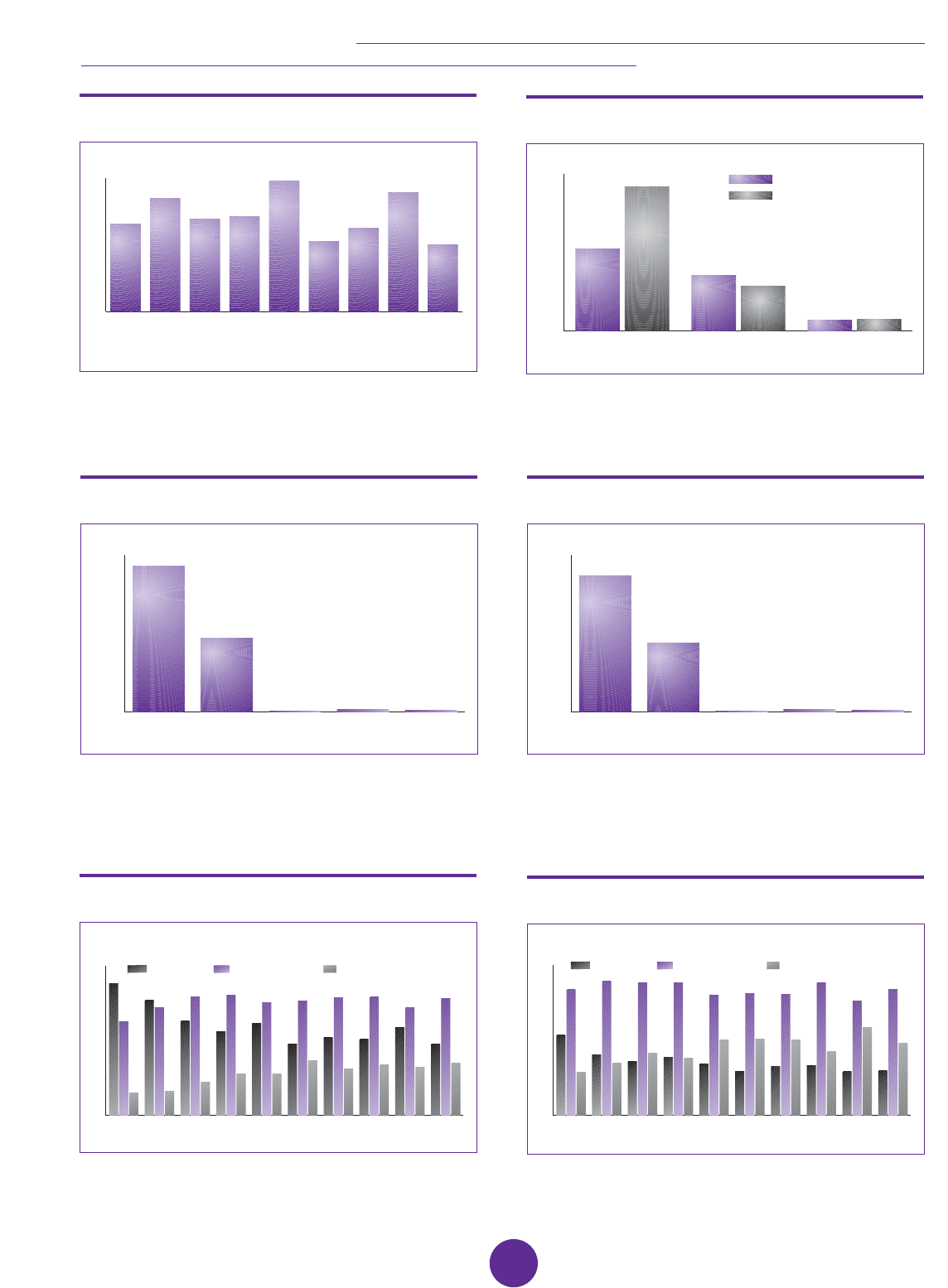
COMMISSION ON LEGISLATIVE DEMOCRACY
206
1970* 1974 1978 1982 1987* 1991 1995 1999* 2003
0
10
20
30
40
50
60
70
80
90
59%
64%
88%
45%
76%
62%
47%
56%
80%
Source: Commission on Legislative Democracy
*Election in which new party formed government
in per cent
MLAs with 50% of the vote or more in their riding
Net Increase
Natural Increase
1983 1993 2003
0
1000
2000
3000
4000
5000
6000
7000
8000
9000
10000
Source: Statistics Canada
Declining population growth and inmigration
5,264
9,212
3,531
2,877
715 738
English French Aboriginal Other Multiple
0
50,000
100,000
150,000
200,000
250,000
300,000
350,000
400,000
450,000
500,000
Source: Statistics Canada
Population by mother tongue for New Brunswick, 2003
Profile for New Brunswick by number of people
465,170
236,665
3,010
8,920
5,945
English French Aboriginal Other Multiple
0
15
30
45
60
75
Source: Statistics Canada
Population by mother tongue for New Brunswick, 2003
Profile for New Brunswick by percentages
64.63%
32.88%
0.42%
1.24%
0.83%
Somewhat or very weak
Somewhat Strong
Very Strong
Nfld. P.E.I. N.S. N.B. Que. Ont. Man. Sask. Alta. B.C.
0
10
20
30
40
50
60
Source: Statistics Canada, General Social Survey, 2003
Sense of belonging across Canada, by province
How Canadians describe their sense of
belonging to their province, by province, 2003
Nfld. P.E.I. N.S. N.B. Que. Ont. Man. Sask. Alta. B.C.
0
10
20
30
40
50
60
Source: Statistics Canada, General Social Survey, 2003
Strong Local Feeling in New Brunswick
How Canadians describe their sense of
belonging to their local community, by province, 2003
Somewhat or very weak
Somewhat Strong
Very Strong
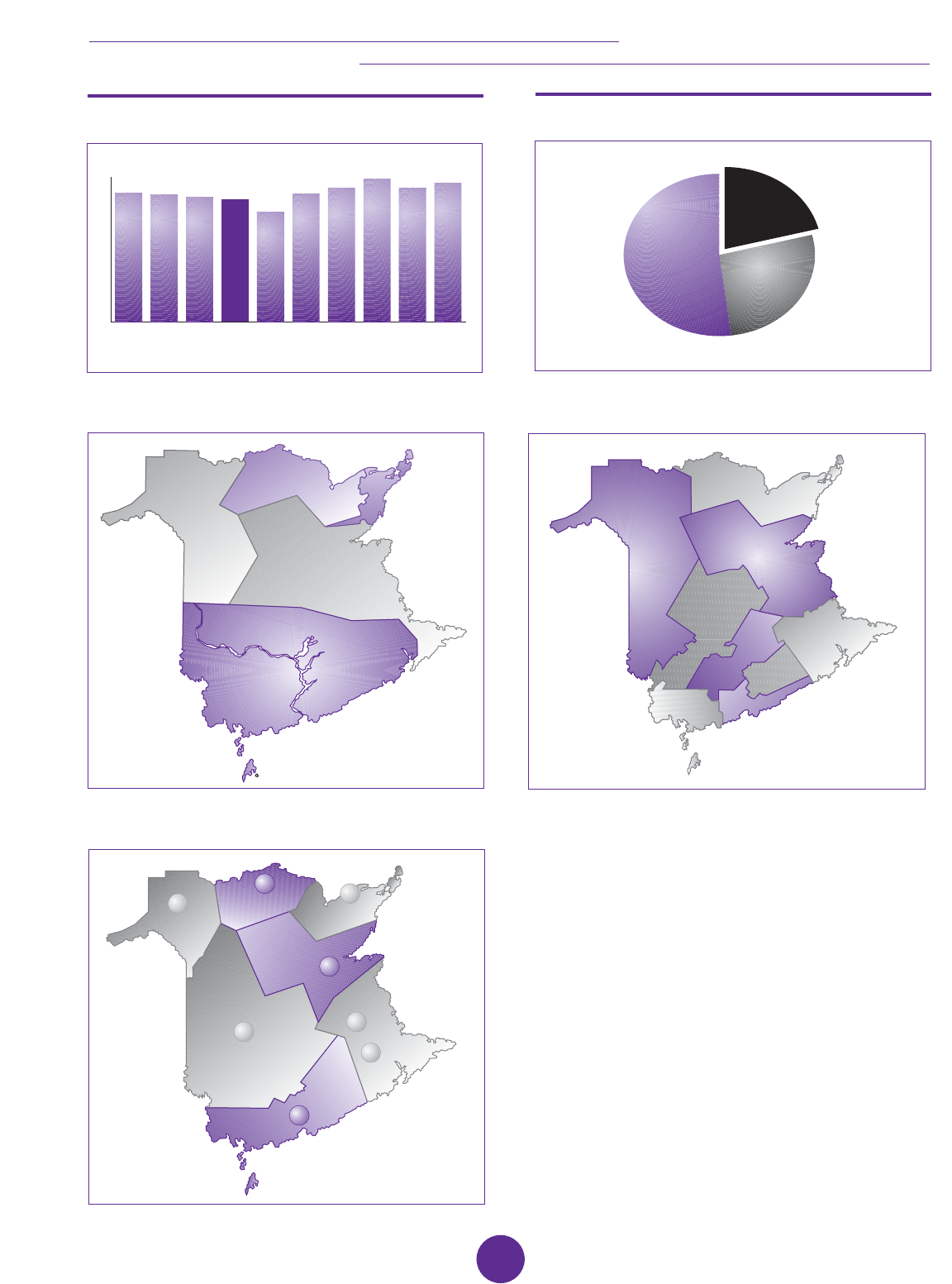
FINAL REPORT AND RECOMMENDATIONS
207
Nfld. P.E.I. N.S. N.B. Que. Ont. Man. Sask. Alta. B.C.
0
10
20
30
40
50
60
70
Source: Statistics Canada, General Social Survey, 2003
in per cent, 2003
Individuals aged 25-54 who are involved in at
least one organization, by province
62.2%
61.2%
60.1%
59.2%
53%
61.9%
64.6%
69.1%
64.5%
66.9%
Live in
urban areas
Live in rural areas
and work in urban areas
Live in rural areas
and work in rural areas
Source: Department of the Environment and Local Government
Urban Influence in New Brunswick
52%
52%
21%
21%
27%
27%
French School Districts
01 Dieppe
11 Richibouctou
09 Tracadie-Sheila
05 Cambellton
03 Grand-Sault
English School Districts
15 Dalhousie
16 Miramichi
14 Woodstock
18 Fredericton
10 St. Stephen
17
Oromocto
08 Saint John
06 Rothesay
02 Moncton
Regional Health Authorities
4
3
2
1b
6
7
5
1se
Edmundston
Restigouche
Acadie-Bathurst
Miramichi
River Valley
Atlantic
Health
Beauséjour
South-East

COMMISSION ON LEGISLATIVE DEMOCRACY
208
Background Appendix: XIV
Meetings Held
Over the course of its mandate, staff and Commissioners held over 85 meetings with groups, associations, experts,
and governments - in New Brunswick and across Canada - to provide information on the Commission, seek
participation, obtain research, and listen to views and opinion.
A summary list of meetings held or attended by the Commission is set out below:
Governments
Canada
• Hon. Mauril Bélanger, PC, MP, Minister Responsible for Democratic Reform
• Andrew Davies, Departmental Assistant to Minister Responsible for Democratic Reform
• Hon. Jacques Saada, PC, MP, Minister Responsible for Democratic Reform
• Stephen Zaluski and Stéphane Perrault, Privy Council Office
• Hugh Finsten, Library of Parliament
• Carmin Bédard, Director of Executive Resourcing, Public Service Commission of Canada
Quebec
• André Fortier, Associate Secretary, Secretariat for the Reform of Democratic Institutions, and staff
PEI
• Hon. Norman Carruthers, Commissioner, Commission on Electoral Reform
Ontario
• Matthew Mendelsohn, Deputy Minister, Secretariat for Democratic Renewal
• Julia Hanigsberg, Executive Assistant to Minister responsible for Democratic Renewal
BC Citizens Assembly
• Dr. Ken Carty, Director of Research
• Jack Blaney, Chair
• Gordon Gibson
• Marilyn Jacobson and Don MacLachlan, responsible for communications
City of Vancouver
• Hon. Thomas Berger, Commissioner on Electoral Reform
• Syd Baxter, Clerk
National Groups, Associations, and Policy Institutes
• Hugh Segal, President, Institute for Research on Public Policy
• Nathalie Des Rosiers, past President, Law Commission of Canada
• Don Lenihan, KTA Centre for Collaborative Government and Chair of Crossing Boundaries
• Rebecca Low, Gina Bishop, Denis Gaudet, Andrew Parkin, Centre for Research and Information on Canada,
Canadian Unity Council
• David Moynaugh, Michael Eastman, Canadian Council of Auditors Foundation
• Peter Dobell, Canadian Parliamentary Centre
• Judith Maxwell, Canadian Policy Research Networks
• Forum Jeunesse pan-canadien
• Student Vote Canada

FINAL REPORT AND RECOMMENDATIONS
209
Provincial Groups and Associations
• Dr. Mary-Lou Stirling, Rosella Melanson, Wendy Johnston, and members of Advisory Council on the Status of
Women
• Ryan Sullivan, Ivan Corbett, Nathalie Cormier, Eric Matchett, Miguel LeBlanc, and members of the NB
Advisory Council on Youth
• Sister Anne Robichaud and members of NB Advisory Council on Seniors
• Rick Hutchins, Policylink NB
• Brian Baum and Executive, NB Teachers Association
• Gilberte Michaud, Nicole Dupéré and Executive, Association des Enseignants et enseignantes francophones du N.-B.
• Lorne Mitton, Cities Association of New Brunswick
• Tom Mann, NB Public Employees Association
• Bruce Noble, President, and members of Executive, Law Society of New Brunswick
• Board of Directors, Dialogue NB
• Willie Lirrette, Roger Doiron and Board of Directors, Association francophone et acadienne des aînés et
aînées du N.-B.
• Association des juristes d’expression française du Nouveau-Brunswick
• Association des jeunes francophones du Nouveau-Brunswick
• Université de troisième âge du Nord-Ouest, chapitre de Grand-Sault, de Saint Quentin et d’Edmundston
• Dames D’Acadie, Moncton Chapter
• Rothesay Town Council
• Saint John Board of Trade
• Daniel Thériault, Jean-Guy Rioux, Société des acadiens et acadiennes du Nouveau-Brunswick
• Ghislaine Foulem, Forum de concertation des organismes acadiens
• President’s Council, PC Party of New Brunswick
Officers of the Legislative Assembly
• Hon. Bev Harrison, Speaker of the Legislative Assembly
• Loredena Catalli Sonier, Clerk of the Legislative Assembly
• Annise Hollies, Chief Electoral Officer
• Darryl Wilson, Auditor General
• Paul Bourque, Supervisor of Political Financing
• Michel Carrier, Commissioner for Official Languages
• Bernard Richard, Ombudsman

COMMISSION ON LEGISLATIVE DEMOCRACY
210
Elected Officials
• Premier Bernard Lord
• PC Caucus:
• Jody Carr, MLA
• Trevor Holder, MLA
• Hon. Bruce Fitch
• Hon. Keith Ashfield
• Hon. Brad Green
• Michael (Tanker) Malley
• John Betts
• Wally Stiles
• Cy LeBlanc
• Hon. Joan MacAlpine
• Milt Sherwood
• Liberal Caucus:
• Kelly Lamrock
• Eric Allaby
• Mike Murphy
• Shawn Graham, Leader of the Official Opposition
• Elizabeth Weir, Leader of the New Democratic Party
• Hon. Andy Scott, PC, MP
• Ian McClelland, MLA, Alberta
• Geoffrey Kelley, MNA, Quebec
• Caroline Di Cocco, MPP, Parliamentary Secretary to the Minister responsible for Democratic Renewal, Ontario
Universities and Academics
• Dr. John McLaughlin, President, UNB
• Dr. Dan O’Brien, President, St. Thomas University
• M. Yvon Fontaine, Recteur, Université de Moncton
• Lisa Hrabluk, Next NB/Avenir NB, UNB
• Dr. Keith Culver, UNB
• Fédération des étudiants et étudiantes du centre universitaire de Moncton
• Anne LaForest, Dean of UNB Faculty of Law
• Professors Richard Sigurdson, Gary Allen and Dr. Paul Howe, UNB Department of Political Science
International Representatives
• Karsten Voigt, former Deputy, German Bundestag
• Sabine Sparwasser, Counselor, German Embassy, Ottawa
• Andrew Staunton, UK High Commission
• Hon. Graham Kelly, High Commissioner for New Zealand
• Barbara Davis & Darryl Wight, Australia Electoral Commission

Province of New Brunswick
• Hon. Herménégilde Chiasson, Lieutenant-Governor of New Brunswick
• Tim Richardson, Chief of Staff to the Lieutenant-Governor
• Kevin Malone, Clerk of the Executive Council and Secretary to Cabinet
• Jean-Guy Finn, former Clerk of the Executive Council and Secretary to Cabinet
• Department of Justice
• Clerk’s Office, Legislative Assembly
• Department of Education
• Service New Brunswick
• Environment & Local Government
• (Retired) Justice William Creaghan, Co-Chair of NB Representation and Electoral Boundaries Commission
1991-1993.
• Department of Intergovernmental and International Relations
• Community Access Centres
Media Outlets
• Radio-Canada
•CBC
• Rogers Cable
• Acadie-Nouvelle
• Daily Gleaner
• Telegraph Journal
• Times & Transcript
FINAL REPORT AND RECOMMENDATIONS
211

COMMISSION ON LEGISLATIVE DEMOCRACY
Background Appendix: XV
Partnerships
As part of its mandate to “seek the views of New Brunswickers”, the Commission created partnerships with several
important provincial and national organizations. This allowed the Commission to tap into established expertise and
networks of these organizations to assist us with our policy development and consultation processes. Most
importantly, it helped ensure that the perspective of youth, women, students, and others were brought forward
during our consultation process. It also allowed the Commission to operate more cost-effectively by co-hosting
special forums and conferences with our partners.
Key partnerships included:
New Brunswick Advisory Council on Youth
The New Brunswick Advisory Council on Youth and the Commission announced a formal partnership on January 9,
2004 to share resources and information on the subject of youth and democracy. A provincial youth forum was co-
organized by the Commission and the Council on May 1st and 2nd in Fredericton, to hear from approximately 50
youth from across New Brunswick on possible ways to increase youth participation in our democratic society. Dr.
Patrick Malcomson and Dr. Rick Myers of St. Thomas University spoke to the participants on the issues under
discussion, and Paul Kemp of the Underground Royal Commission made a presentation. The New Brunswick
Advisory Council on Youth prepared a submission for the Commission to express the views heard from a series of
regional forums held in the month of March. A link to the Commission’s website was placed on their site.
New Brunswick Advisory Council on the Status of Women
The Commission on Legislative Democracy and the New Brunswick Advisory Council on the Status of Women
entered into a formal partnership to share research and information on the subject of women and democracy. The
Council developed a handout on key issues of women and legislative democracy and organized a series of
regional meetings to discuss this handout. The Commission and the Council co-organized a provincial forum on
September 25th, in Moncton, to hear from over 65 people on ways to increase women participation in politics. The
Council prepared two briefs for the Commission on ways to increase the participation of women and other parts of
the mandate of the Commission. A link to the Commission’s website was placed on their site.
Centre for Research and Information on Canada/Canadian Unity Council
The Centre for Research and Information on Canada (CRIC), the research arm of the Canadian Unity Council, was
a funding partner for the Roundtable on MLAs and the Legislature held in Fredericton at the legislature on March
25, 2004. Staff from CRIC participated as expert speakers at several of our events. CRIC provided useful research
information from its own surveys for consideration by the Commission and conducted original focus group research
with young New Brunswick leaders in April, 2004, for use by the Commission. They also placed a link to the
Commission’s website on their site.
Forum de concertation des organismes acadiens
The Commission on Legislative Democracy and the Forum de concertation des organismes acadiens organized a
forum on June 12th in Miramichi to hear the views of Acadian and francophone groups on the implications of the
Commission’s mandate on the francophone population of New Brunswick. Specific issues discussed included
electoral reform and proportional representation, democratic reform and referendums, and legislative reform and
the role of MLAs. Over 25 people representing 19 different groups and associations participated. The columnist
Rino Morin Rossignol and former MLA and Minister, Aldéa Landry, were guest speakers.
212

Next NB/Avenir N-B/UNB
Next NB co-sponsored the student forum on youth and democracy entitled Your Generation. Your Voice, held at
UNB on September 17, 2004. Lisa Hrabluk, co-ordinator of Next NB, moderated the event. Over 30 students
participated in this event. A link to the Commission’s website was placed on their site.
Centre for Canadian Studies, Mount Allison University
The Centre was a financial and logistics partner in hosting our first Academic Research Conference at Mount Allison
University in Sackville on February 5-6, 2004. All elements of the Commission’s mandate were discussed in
presentations and roundtable discussion with over 20 academics and experts.
FINAL REPORT AND RECOMMENDATIONS
213

COMMISSION ON LEGISLATIVE DEMOCRACY
Background Appendix: XVI
Academic Research Program
The Commission’s work was supported by an ambitious and high quality academic research program. To ensure
that we had access to the information necessary to do our work, we engaged a team of leading researchers from
across our province and country to conduct both new and synthetic research on the principal areas of our mandate.
The research project was coordinated under the leadership of Dr. William Cross of Mount Allison University. It
included contributions from many leading students of Canadian democracy, including: Dr. Chedly Belkhodja,
Université de Moncton; Dr. André Blais, Université de Montréal; Dr. Gail Campbell, University of New Brunswick at
Fredericton; Dr. R. Kenneth Carty, University of British Columbia; Dr. John Courtney, University of Saskatchewan; Dr.
Donald Desserud, University of New Brunswick at Saint John; Dr. David Docherty, Wilfrid Laurier University; Dr.
Munroe Eagles, State University of New York at Buffalo; Dr. Joanna Everitt, University of New Brunswick at Saint
John; Dr. Paul Howe, University of New Brunswick at Fredericton; Dr. Stewart Hyson, University of New Brunswick
at Saint John; Mr. Peter Loewen, Université de Montreal; Dr. Roger Ouellette, Université de Moncton; Dr. Andrew
Parkin, Centre for Research and Information on Canada; Dr. Sonia Pitre, University of Ottawa; Mr. Maxime Ricard,
Université de Montréal; Dr. Leslie Seidle, Institute for Research and Public Policy; Dr. Alan Siaroff, University of
Lethbridge; and Dr. Lisa Young, University of Calgary.
The research program involved several distinct components. In February, the Commission met for two days with a
group of more than a dozen leading academics on the Mount Allison University campus in Sackville. The purpose
of this conference was to enrich the Commission’s learning phase by providing an opportunity for these academics
to brief the Commissioners on the state of knowledge on all areas of the mandate, and to allow for wide ranging
discussion on these subjects. This conference was followed by a series of one-day roundtables on individual areas
of the mandate that brought together academics, practitioners, and interested New Brunswickers to discuss these
issues with the Commissioners. These included sessions on electoral boundary drawing, reform of the Legislature,
proportional representation, francophone and Acadian issues, and civic engagement. In September, a further one-
day conference was held on the campus of the Université de Moncton at which a series of 13 commissioned
research papers were presented to the Commission.
The commissioned research papers will be published in a forthcoming, peer-reviewed book. This publication will
make a lasting contribution to the work of electoral, democratic and legislative reform in New Brunswick and across
the country. A very brief summary of the contributions to this forthcoming volume are found below:
• William Cross, an overview of the history and issues affecting democratic reform in Canada.
• Gail Campbell, an historical overview of previous efforts at democratic and electoral reform in New Brunswick.
• Chedly Belkhodja, an examination of both the principal issues concerning the use of referendums and New
Brunswick’s prior experience with referendums.
• André Blais and Peter Loewen, an examination of the relationship between voters’ democratic satisfaction and
their electoral system.
• William Cross and Lisa Young, an analysis of party candidate nomination processes in New Brunswick and
international experiences with candidate nomination under different electoral systems.
• Don Desserud, consideration of the pros and cons of fixed election dates and how such a regime might be
implemented in New Brunswick.
• André Blais, Peter Loewen and Maxime Ricard, a comparison of government life-cycles and durations in
countries using different electoral systems.
• David Docherty, an analysis of the role of the MLA in New Brunswick and consideration of how electoral reform
might impact on this. This research is based on a comprehensive mail-back survey of New Brunswick’s MLAs.
• Munroe Eagles, an exploration of both the procedural and the substantive aspects of electoral boundary
drawing, with consideration of best practices across Canada and New Brunswick’s prior experiences.
• Joanna Everitt and Sonia Pitre, consideration of the status of women in New Brunswick politics and the
comparative impact of different electoral systems on women’s political participation.
214

• Paul Howe, an assessment of voter participation patterns in New Brunswick and Canada with an emphasis on
the issue of declining youth participation.
• Roger Ouellette, a focused consideration on the specific implications of electoral and democratic reform for
New Brunswick’s Acadian community.
• Alan Siaroff, a wide-ranging analysis of the effects of different electoral systems on party systems and pattern of
government formation in the advanced industrial democracies.
FINAL REPORT AND RECOMMENDATIONS
215

COMMISSION ON LEGISLATIVE DEMOCRACY
Background Appendix: XVII
Website and E-Consultation Program
Websites today are an essential consultation and information tool. They provide information to people and receive
input directly from interested citizens. Increasingly, people utilize websites to learn about issues, find out what’s
going on, and engage in direct contact with their government.
The Commission was determined to establish an open, transparent consultative process from the beginning. A
comprehensive and interactive website was key to this objective. As this had never been fully developed by any
provincial government organization, no template existed for what we were attempting to do. This meant breaking
new ground in creating and maintaining an interesting, informative, and accessible website for users. We had to be
innovative and timely given our resources, translation requirements, and deadlines.
We established certain guidelines for ourselves.
First, be open. All meeting agendas and over 30 different staff and research presentations for Commissioners
were put on the website as soon as possible before and after each meeting. Citizens and groups could follow our
deliberations along with us.
Second, provide information. A comprehensive range of learning materials and information for New
Brunswickers were put on the website so citizens could study and learn the issues just as we did. One click on
“Learning Corner” opened a wide range of information portals for visitors. Eleven different fact sheets were
produced. An “A-Z” glossary of electoral definitions was produced. Over 25 articles and readings links on the most
up-to-date research and literature were made available. Links to other governments and research institutes were set
up.
Third, engage New Brunswickers. A dynamic interactive website component was added to give people the
chance to give us direct, anonymous input on the issues. This included two major questionnaires - one in the spring
and the second in the fall. Our Citizen’s Participation Guide contained a comprehensive 50-question survey entitled
Your Turn. It ran from April to September. Our Options progress report contained a 19-question survey. It ran from
September to November. Our interactive website also contained easy-access “Quick Quiz” and “Speak Up”
features where visitors could answer a new question every few weeks directly online, or send us an e-mail with
specific comments on different issues. An e-democracy “town hall” - based on New Brunswick-developed technology
through xwave, CGI, and Service New Brunswick - was even tried, although with only limited success.
Fourth, provide feedback. We provided summaries of what we heard from New Brunswickers back to New
Brunswickers themselves. A synopsis of each public meeting and community leaders roundtable, as well as major
forums, conferences, and roundtables was written, translated, and posted on the website for all to see and read.
The Response
Visitors to our website responded. As our work progressed through the past year, we got more and more visitors to
our website. We were in the top half of the most popular provincial government websites with close to 200,000 hits
from January 2004 through to November, 2004. We had more hits than departments like Agriculture, Fisheries
and Aquaculture, Training and Employment Development and the New Brunswick Youth Council, but fewer than the
larger well established departments such as Education, Health & Wellness and Justice.
We had close to 15,000 downloads of our consultation documents - Your Voice. Your Vote. Your Turn! and Options.
Citizens liked the interactive opportunities on our website. Close to 750 New Brunswickers responded to our two
major questionnaires. We had over 1,600 responses to eleven different “Quick Quiz” questions. We received
numerous direct e-mail comments from New Brunswickers.
All of this became part of the input considered by the Commission.
216

Background Appendix: XVIII
Submissions
The Commission received submissions from a wide variety of organizations, groups, and individuals. As expected,
the Commission was offered a wide range of views and suggestions on democratic renewal in New Brunswick.
Each was helpful as we considered the views of New Brunswickers on steps we should take to strengthen and
modernize our democratic institutions and practices.
The following kindly offered submissions to the Commission:
• NB Advisory Council on the Status of Women
• New Brunswick Youth Council
• Eric Allaby, MLA
• Association acadienne et francophone des aînés et aînées du N.-B.
• Association des enseignants et enseignantes francophones du N.-B.
• Association des juristes d’expression française du N.-B.
• Association francophone des municipalités du Nouveau-Brunswick
• Lorraine Bourque, Jean Cadieux, Corinne Galant, Simone LeBlanc Rainville, Arsène Richard et Muriel Roy
• Albert Caune
• Comité pour l’actualisation de la démocratie au N.-B.
• Dr. Thomas J. Condon
• Convention 2004 de la Société des Acadiens et Acadiennes du N.-B.
• Dr. Keith Culver
• District Education Council 18
• Ralph Eldridge
• Keith Estay
• Sylvia Fabiani
• Fédération des étudiants et étudiantes du centre universitaire de Moncton
• Fredericton High School, Political Science 120 Class
• Wendell Fulton
• Richard Gagnon
• Donatien Gaudet
• Jean Gaudet
• R.M. Giza
• Harold Goldsworthy
• Hendrik Groll
• Dr. Barry Jones
• Ian Keddy
• Nick Loenen
• Armando Luis
• Edouard Maltais
• Philip Mavor
• Jack MacDougall
FINAL REPORT AND RECOMMENDATIONS
217

COMMISSION ON LEGISLATIVE DEMOCRACY
218
• Rev. Dr. Mark G. McKim
• Oromocto High School, Political Science 120 Class
• Chris Paul
• R. N. Peters
• Nathan D. Phillips
• Raymond Richard
• Réseau des femmes francophones du Nouveau-Brunswick
• Société des Acadiens et Acadiennes du N.-B.
• Sue Rickards
• Lucien Saumur
• C. A. Short
• Anne Soucy
• Robert W. Stewart
• Georgina Wallace

Background Appendix: XIX
Glossary
The following Glossary has been developed to assist you in following the Commission’s mission, mandate and terms
of reference. It is based on definitions found in dictionaries and other glossaries.
“A”
“B”
“C”
Closed List: A type of ballot found in a List Proportional Representation (PR) electoral system, in which voters can
only vote for a political party and its list of candidates. Voters cannot express a preference for any candidate within
a party list. (Opposite of an open list)
Coalition: An alliance of two (or more) political parties, usually with the goal of forming a government.
Compensatory Seats: The list proportional representation seats in a Mixed Member Proportional electoral
system that are awarded to political parties on the basis of their vote share to help correct disproportionality in
electoral district seat results.
“D”
Democracy: From the Greek “demos” meaning the people and “kratia”, meaning power. It refers to government
in which the supreme power is vested in the people and exercised directly by them or indirectly through a system of
representation, usually involving elections. See also Legislative Democracy, Direct Democracy and Representative
Democracy.
Direct Democracy: The concept of people governing themselves by deciding issues directly through a vote, rather
than indirectly through electing representatives. The referendum, recall and the initiative are examples of instruments
of direct democracy.
District Magnitude: The number of members to be elected in each electoral district.
“E”
E-Democracy: The way in which the Internet can be used to reinforce democratic principles by enabling people to
interact with government and allowing government to seek and receive input from the community, through measures
such as online voting and consultation.
Electoral Boundaries: The geographic limits of electoral districts.
Electoral Districts: The geographic areas from which one or more representatives is chosen during an election.
Also known as ridings and constituencies. Currently, New Brunswick has 55 single member electoral districts.
Electoral System: The set of procedures that determine how votes are translated into seats. New Brunswick and
Canada have what is known as a plurality electoral system commonly referred to as First Past the Post. Key elements
in an electoral system are the electoral formula, ballot structure and district magnitude.
“F”
First Past the Post (FPTP) electoral system: A plurality electoral system, which almost always uses single
member electoral districts. The candidates and political party receiving the largest vote share are elected. The
winning candidate/party does not have to receive a majority of votes to win. Also known as the Winner Takes All
electoral system and the Single member Plurality electoral system. New Brunswick’s electoral system is First Past the
Post, as is Canada’s.
Fixed Election Date: A recurring, set date or time frame (i.e. the second Tuesday of a particular month) for a
general election, usually within a four-year cycle.
“G”
Government: Refers to the premier and ministers who are responsible for implementing the policies of the political
party with the support of the majority of the members of the Legislative Assembly. Also refers to the ministers and
public officials who oversee and undertake the day-to-day operations of departments and agencies.
“H”
FINAL REPORT AND RECOMMENDATIONS
219

COMMISSION ON LEGISLATIVE DEMOCRACY
“I”
“J”
“K”
“L”
Legislative Assembly: The Legislative Assembly of New Brunswick is the elected component of our system of
legislative democracy. It is currently a representative body of 55 members elected from single member electoral
districts for a term of up to five years. The government must maintain the support of a majority of the members of
the Legislative Assembly to stay in office. The functions of the Legislative Assembly include passing legislation,
authorizing the raising and spending of public money, scrutinizing the activities of government, raising issues of
public concern, investigating matters of public interest and acting as a forum to publicize the concerns of individuals
and groups throughout the province.
Legislative Democracy: The institutions and practices of our democratic system, including our electoral system,
our legislature and MLAs, and the processes of legislative and governmental decision-making.
Legislature: The law-making component of government. In New Brunswick, the legislature is the Legislative
Assembly.
List Proportional Representation (PR) Electoral System: An electoral system in which each political party
presents to the electorate a list of candidates. Voters vote for a party and the parties win seats in proportion to their
overall vote share. Winning candidates are taken from the party lists. (Either open lists or closed lists).
“M”
Majority Electoral System: An electoral system family, which uses single member constituencies or electoral
districts with the objective of ensuring that the winning candidate receives a majority of votes.
Majority of votes: More than half, or at least 50 per cent plus 1, of the votes.
Majority Government: A government that has the support of a majority of members of the Legislative Assembly
or parliament, all of whom are members of the same political party.
Minority Government: A government in which the governing political party does not have a majority of the
members of the Legislative Assembly or parliament, and therefore relies on the support of members of parties
outside the governing political party to stay in office.
Mixed Member Proportional Electoral System: An electoral system in which a proportion (often half) of the
members of the Legislative Assembly or parliament are elected using the First Past the Post (FPTP) electoral system, in
which candidates are elected to represent electoral districts, and the rest are elected using a list proportional
representation (PR) electoral system. The list PR seats compensate for disproportionality produced by the FPTP results.
Multi-member district: An electoral district, which returns more than one member to the Legislative Assembly or
parliament. Until 1974, New Brunswick had multi-member electoral districts.
“N”
“O”
Open List: A type of ballot found in a List Proportional Representation (PR) electoral system in which voters can
influence which candidates are elected by expressing a preference for a candidate within a party list in addition to
voting for the political party of their choice. (Opposite of a closed list.)
“P”
Participatory Democracy: A term used to describe more direct voter participation in government and legislative
decision-making, such as referendums. It also refers to more involvement by people in the process of government
through consultative forums and mechanisms.
Party List: A list of candidates put forward by a political party to the electorate in a List Proportional
Representation (PR) electoral system. A party list can be an open list or a closed list.
Plebiscite: A direct vote of all electors on an important public question. Originally, the term was used to refer to a
consultative or non-binding process as contrasted with a referendum, which referred to a binding process. Now, the
two terms are used interchangeably.
220

Plurality of Votes: When a candidate or political party receives more votes than his or her opponents, but less
than 50 per cent or a majority of all votes cast.
Plurality Electoral System: An electoral system that permits a candidate to win a seat without a majority of
votes.
Political Party: A group of people, recognized by law, who share a common ideology or set of policy principles
and who seek to elect representatives to a legislature with the goal of forming the government
Premier: The name given to the head of the government of a province. The premier is almost always the leader of
the political party that has won the majority or most of the seats in the Legislative Assembly.
Proportional Representation (PR) electoral system: An electoral system in which political parties or
candidates win seats in the Legislative Assembly based on their vote share. The goal of a PR electoral system is to
ensure that legislatures and governments more accurately reflect the preferences of the electorate.
Proportionality: The relative state or measure of the proportion of votes cast to seats gained in a legislature.
“Q”
“R”
Rank Ordering: A method of voting in which a voter indicates his or her first, second, third, etc. preferences
among candidates listed on a ballot.
Referendum: A method of referring a question or a set of questions to the people for a direct decision through a
vote.
Representation: The idea that one thing or person can stand for another. Within our democratic system, it refers
to the concept that the elected Legislative Assembly can stand for or represent the varied interests of the community
(geographic, linguistic, cultural, etc.) as a whole.
Representation and Electoral Boundaries Commission: In 1991, the Government of New Brunswick put in
place a Representation and Electoral Boundaries Commission which conducted its work in two phases. The first
phase was to make recommendations on the number of electoral districts, average number of voters per
constituency, the appropriate allowable variation in voter population between districts, and the best way to ensure
New Brunswick’s aboriginal people representation in the legislature. The second phase was to fix the boundaries of
the proposed electoral districts and hold public hearings on its proposal. Copies of the Commission’s reports are
available through the Legislative Library of New Brunswick. (Link to the Legislative Library at
http://www.gnb.ca/legis/leglibbib/index-e.asp )
Representation and Electoral District Boundaries Commission: In 1973, the government of New
Brunswick put in place a Representation and Electoral District Boundaries Commission to recommend divisions of the
province appropriate as electoral districts for the return of members of the Legislative Assembly, and to consider and
make recommendations on matters pertaining to representation and distribution of representation in the Legislative
Assembly. Copies of the Commission’s reports are available through the Legislative Library of New Brunswick. (Link
to the Legislative Library at http://www.gnb.ca/legis/leglibbib/index-e.asp )
Representative Democracy: A form of indirect rule, necessary for large populations, in which the people
transfer decision-making authority to representatives. The term can be explained as the consent of the governed, to
be governed.
Riding: A geographic division of the province, from which citizens elect a representative to represent them in the
Legislative Assembly. Also called a constituency and an electoral district.
“S”
Seat: A position within the legislature occupied by a Member of the Legislative Assembly.
Single member Constituency/Electoral District: A constituency or electoral district from which only one
member of the Legislative Assembly or parliament is elected.
Single member Plurality Electoral System: Another term for the First Past the Post (FPTP) electoral system.
Single Transferable Vote (STV) Electoral System: An electoral system that uses multi-member districts and
preferential proportional representation. Voters vote for candidates by rank ordering the candidates on the ballot
according to their preference. To be elected, a candidate must surpass a quota of first preference votes. Voters can
alternate preferences among political parties, and they may rank order all candidates, or mark only one if they
FINAL REPORT AND RECOMMENDATIONS
221

COMMISSION ON LEGISLATIVE DEMOCRACY
wish. A candidate who does not meet the threshold is excluded. When a candidate is excluded, or if an elected
candidate has a surplus of first preference votes, voter preferences are then re-allocated among other candidates.
“T”
Threshold: The minimum level of support a candidate or political party requires to gain representation. Usually
expressed as a percentage of the total vote.
“U”
“V”
Voter Turnout: Is calculated in Canada as the percentage of electors on the voters list who marked a ballot
during an election or a referendum. Voter turnout is also calculated (for example, in the United States) as the
percentage of possible voters (who may or may not be on the voters list) who have marked a ballot during an
election or a referendum.
Voters List: List of names of possible electors used as a control document during the taking of the vote in the
polling stations.
Vote Share: The proportion of the total votes won by a political party during a general election.
“W”
Westminster System: A type of parliamentary system used in countries of British origin.
Winner Takes All Electoral System: Another term for a First Past the Post (FPTP) electoral system.
“X”
“Y”
“Z”
222

FINAL REPORT AND RECOMMENDATIONS
Making Your Vote Count
A Mixed Member Proportional Representation Voting System for New Brunswick
Banducci, Susan A., Todd Donovan and Jeffrey A. Karp. "Proportional representation and attitudes about politics: results
from New Zealand" in Electoral Studies, 18, 1999.
Blais, André. Criteria for Assessing Electoral Systems. Presentation to the Advisory Committee of Registered Political Parties,
Elections Canada, April 1999.
Blais, André and Peter Loewen. Electoral Systems and Evaluations of Democracy. Draft research paper for the Commission
on Legislative Democracy, 2004.
Blais, André, Peter Loewen, and Maxime Ricard. The Government Life-Cycle. Draft research paper for the Commission on
Legislative Democracy, 2004.
Courtney, John C. Elections. The Canadian Democratic Audit Series. Vancouver: UBC Press, 2004.
Courtney, John C. Plurality-Majority Electoral Systems: A Review. Presentation to the Advisory Committee of Registered
Political Parties, Elections Canada, April 1999.
Farrell, David M. Electoral Systems. New York: Palgrave, 2001.
Farrell, David M. and Michael Gallagher. "British voters and their criteria for evaluating electoral systems" in British Journal
of Politics and International Relations, vol. 1, no. 3, October 1999.
Final Report of the Independent Commission to Review Britain’s Experience of Proportional Representation Voting System,
Changed Voting, Changed Politics: Lessons of Britain’s Experience of PR Since 1997. London: The Constitution Unit, 2003.
International Institute for Democracy and Electoral Assistance. Atlas of Electoral Systems of the World, Handbook of
Electoral System Design. Stockholm: IDEA, 1997.
Karp, Jeffrey A. "Incentive to Mobilize? The Effects of Proportional Representation on Party Activity in New Zealand". Paper
prepared for the Annual Conference of the Pacific Northwest Political Science Association, 2003.
Karp, Jeffrey A., Jack Vowles, Susan A. Banducci and Todd Donovan. "Strategic voting, party activity, and candidate
effects: testing explanations for split voting in New Zealand’s new mixed system" in Electoral Studies, 21, 2002.
Law Commission of Canada. Voting Counts: Electoral Reform for Canada. Ottawa: LCC, 2004.
Making Every Vote Count: The Case for Electoral Reform in British Columbia, Report of the BC Citizens’ Assembly, 2004.
Massicotte, Louis. "Changing the Canadian Electoral System" in Choices - Strengthening Canadian Democracy, IRPP, vol. 7.
no. 1, February 2003.
Milner, Henry, ed. Making Every Vote Count: Reappraising Canada’s Electoral System. Peterborough, Ont.: Broadview
Press, 1999.
Milner, Henry, ed. Steps Towards Making Every Vote Count: Electoral System Reform in Canada and its Provinces.
Peterborough, Ont.: Broadview Press, 2004.
Norris, Pippa. Electoral Engineering: Voting Rules and Political Behaviour. Cambridge: Cambridge University Press, 2004.
Report of the Prince Edward Island Electoral Reform Commission. Hon. Norman H. Carruthers, Commissioner. PEI, 2003.
The Report of the Independent Commission on the Voting System, (the Jenkins Commission). UK, 1998.
Siaroff, Allan. The Effects of Differing Electoral Systems on Party Politics, Government Formation, and Government Stability.
Draft research paper for the Commission on Legislative Democracy, 2004.
223
Chapter 8 - Selected Bibliography

COMMISSION ON LEGISLATIVE DEMOCRACY
Implementing A New System of Proportional Representation in New Brunswick
Curtice, John, Alison Park, Ben Seyd and Katarina Thomson. Wise After the Event? Attitudes to Voting Reform Following the
1999 Scottish and Welsh Elections. Paper for the Political Studies Association - UK 50
th
Annual Conference, London, 2000.
Electoral Reform Society. New Zealand and Electoral Reform: An ERS Briefing. June 2000.
Harris, Paul, Chief Executive, Electoral Commission of New Zealand. New Zealand’s Change to MMP, Administration and
Cost of Elections Project, 2000.
His Excellency Rt. Hon. James B. Bolger. " New Zealand Adopts PR: A Prime Minister’s View" in Policy Options, July-August
2001.
Karp, Jeffrey A. and Shaun Bowler. "Coalition government and satisfaction with democracy: An analysis of New Zealand’s
reaction to proportional representation" in European Journal of Political Research, 40, 2001.
Parliament of New Zealand. Inquiry into the Review of MMP: Report of the MMP Review Select Committee, Forty-Sixth
Parliament, 2001.
Drawing Electoral Boundaries in New Brunswick
Courtney, John C. Commissioned Ridings: Designing Canada’s Electoral Districts. Montreal: McGill-Queen’s University Press,
2001.
Courtney, John C., Peter MacKinnon and David E. Smith, eds. Drawing Boundaries: Legislatures, Courts and Electoral
Values. Saskatoon: Fifth House Publishers, 1992.
Eagles, Munroe. Electoral Reform and Electoral Boundaries in New Brunswick. Draft research paper for the Commission on
Legislative Democracy, 2004.
Elections Canada. "Readjustment of Federal Electoral Boundaries", Electoral Insight, vol. 4, no. 2, October 2002:
http://www.elections.ca/eca/eim/insight1002_e.pdf
Hyson, Stewart. "Electoral Boundary Redistribution by Independent Commission in New Brunswick, 1990 – 1994" in
Canadian Public Administration/Administration Publique du Canada, vol. 42, no. 3, Fall/Automne.
Ouellette, Roger. Les enjeux pour la communauté acadienne du Nouveau-Brunswick. Draft research paper for the
Commission on Legislative Democracy, 2004.
Small, David, ed. Drawing the Map: Equality and Efficacy of the Vote in Canadian Electoral Boundary Reform, Volume 11
of the Research Studies, Royal Commission on Electoral Reform and Party Financing. Canada Communication Group,
Toronto: Dundurn Press Limited, 1991.
A Fixed Election Date for New Brunswick
British Columbia’s Constitution Act, [RSBC 1996] Chapter 66, section 23.
Desserud, Don. Fixed-Date Elections under the Canadian Parliamentary System. Draft research paper for the Commission on
Legislative Democracy, 2004.
Ontario Bill 86, "An Act to amend the Election Act, the Election Finances Act, the Legislative Assembly Act and the
Representation Act, 1996 to provide for provincial general elections at intervals of approximately four years, to govern the
timing of writs, close of nominations and polling day, to make modifications relating to the electoral readjustment process
and to make technical amendments", 1
st
Session, 38
th
Legislature, Ontario, 53 Elizabeth II, 2004.
Boosting Voter Turnout and Modernizing our Electoral Infrastructure
The Centre for Research and Information on Canada (CRIC). Voter Participation in Canada: Is Canadian Democracy in
Crisis? October 2001.
The Centre for Research and Information on Canada (CRIC). Citizen Participation and Canadian Democracy: An Overview.
August 2003.
LeDuc, Lawrence and Jon H. Pammett. Elections and Participation: The Meanings of the Turnout Decline. Paper prepared for
presentation at the annual meeting of the Canadian Political Science Association, Dalhousie University, June 1, 2003.
O’Neill, Brenda. "Generational Patterns in the Political Opinions and Behaviour of Canadians: Separating the Wheat from
the Chaff" in Policy Matters, IRPP, vol. 2, no. 5, October 2001.
224

Making the System Work
Enhancing the Role of MLAs and the Legislature
Bennett, Carolyn, MP, Deborah Grey, MP, and Hon. Yves Morin, Senator. The Parliament We Want: Parliamentarians’
Views on Parliamentary Reform. Library of Parliament, December 2003.
Dobell, Peter. "The Obstacles to Empowering MPs and MLAs and What it Would Take to Empower Them" and Lauk, Gary,
Jack Weisgerber & Ted White, "What It Would Take to Empower Them, & “Thoughts on Empowerment" in Gordon Gibson,
ed., Fixing Canadian Democracy. Toronto: The Fraser Institute, 2003.
Docherty, David C. "Citizens and Legislators: Different Views on Representation" in Neil Nevitte, ed., Value Change and
Governance in Canada. Toronto: University of Toronto Press, 2002.
Docherty, David C. Representation in New Brunswick: Capital and Constituency Concerns. Draft research paper for the
Commission on Legislative Democracy, 2004.
Government of Québec. Parliamentary Reform Proposals. Hon. Jacques Dupuis, Government House Leader and Minister for
the Reform of Democratic Institutions, 2004.
Legislative Assembly of the Province of New Brunswick. First Report of the Legislative Administration Committee, 5
th
Session,
54
th
Legislative Assembly, April 3, 2003.
Simpson, Jeffrey. The Friendly Dictatorship. McClelland & Stewart, 2002.
Stillborn, Jack. The Roles of the Member of Parliament in Canada: Are They Changing? Library of Parliament, 2002.
Improving Party Democracy
Carty, R. Kenneth. Canadian Political Parties in the Constituencies. Toronto: Dundurn Press, 1991.
Carty, R. Kenneth and Lynda Erickson. "Candidate Nomination in Canada’s National Parties" in Herman Bakvis, ed.,
Canadian Political Parties: Leaders, Candidates and Organization. Toronto: Dundurn Press, 1991.
Cross, William. Political Parties. Vancouver: UBC Press, 2004.
Cross, William. "Grassroots Participation in Candidate Nominations" in Joanna Everitt and Brenda O’Neill, eds., Citizen
Politics: Research and Theory in Canadian Political Behaviour. Toronto: Oxford University Press, 2002.
Cross, William and Lisa Young. "The Contours of Political Party Membership in Canada" in Party Politics, vol. 19, issue 4,
July 2004.
Dalton, Russell and Martin Wattenberg. Parties Without Partisans: Political Change in Advanced Industrial Democracies.
Oxford: Oxford University Press, 2000.
Elections Canada. "Reform of Election Financing: Canada, Great Britain and the United States" Electoral Insight, vol. 4, no.
1, May 2002.
http://www.elections.ca/eca/eim/pdf/insight_2002_05_e.pdf
Howe, Paul and David Northrup. "Strengthening Canadian Democracy: The Views of Canadians" in Policy Matters, IRPP,
vol. 1, no. 5, 2000.
Report of the Royal Commission on Electoral Reform and Party Democracy, Ottawa, 1991.
Smith, Jennifer and Herman Bakvis. "Changing Dynamics in Election Campaign Finance" in Policy Matters, IRPP, vol. 1,
no. 4, July 2000.
Data on public funding to parties in New Brunswick taken from the Annual Reports of the Supervisor of Political Financing,
information filed with the Office of the Supervisor and information published in the Royal Gazette.
Information on the value of Political Contributions Tax Credit is from "The Commissioner’s Annual Report to the Government
of New Brunswick", Canada Revenue Agency and Tax Sharing Statements.
FINAL REPORT AND RECOMMENDATIONS
225

COMMISSION ON LEGISLATIVE DEMOCRACY
Opening Up the Appointment Process for Agencies, Boards and Commissions
Aucoin, Peter and Elizabeth Goodyear-Grant. "Designing a merit-based process for appointing boards of ABCs: Lessons
from the Nova Scotia reform experience" in Canadian Public Administration, vol. 45, no. 3, Fall 2002.
Government of British Columbia, Information on British Columbia’s Board Resourcing and Development Office (BRDO).
http://www.gov.bc.ca/bvprd/bc/channel.do?action=ministry&channelID=-8627&navId=NAV_ID_-8627
Public Policy Forum. Governor- in-Council Appointments - Best Practices and Recommendations for Reform. February 2004.
Making Your Voice Heard
Stronger Voices for Youth
CRIC Papers, #3. Voter Participation in Canada: Is Canadian Democracy in Crisis? October 2001.
CRIC Papers, #15. Canadian Democracy: Bringing Youth Back Into the Political Process. December 2004.
CRIC Papers. Citizen Participation and Canadian Democracy: An Overview. August 2003.
Elections Canada. "Youth Participation in Elections." Electoral Insight, vol. 5, no. 2, July 2003.
Gidengil, Elisabeth, André Blais, Neil Nevitte and Richard Nadeau. Citizens. The Canadian Democratic Audit Series. UBC
Press, 2004.
Goodwin, David, Shannon Garrett and Justin Keddy. Statistical Record : New Brunswick and Selected Provinces and States.
Policy Studies Centre, UNB, 2003.
Howe, Paul. Voter Participation in New Brunswick and the Political Disengagement of the Young. Draft research paper for
the Commission on Legislative Democracy, 2004.
Pammet, John. "Youth in the Electoral Process" in Electoral Insight, January 2001.
Pammet, John and Lawrence LeDuc. Explaining the Turnout Decline in Canadian Federal Elections: A New Survey of Non-
Voters. Elections Canada, March 2003.
Stronger Voices for Women
Everitt, Joanna and Sonia Pitre. Electoral Systems and Representational Issues. Draft research paper for the Commission on
Legislative Democracy, 2004.
Matland, Richard. Enhancing Women’s Political Participation: Legislative Recruitment and Electoral Systems. International
Institute for Democracy and Electoral Assistance, 2002.
McLeay, Elizabeth. Climbing On: Rules, Values and Women’s Representation in the New Zealand Parliament. Paper
presented at the conference on Women and Westminster Compared, University of Ottawa, June 2004.
Pitre, Sonia. "Political Parties and Female Candidates: Is There Resistance in New Brunswick?" in Women and Electoral
Politics in Canada. Oxford University Press, 2003.
Pitre, Sonia. "Women’s Struggle for Legislative Power: The Role of Political Parties" in Atlantis, vol. 27, 2, Spring/Summer
2003.
Young, Lisa. Women’s Representation in the Canadian House of Commons. Draft paper, University of Calgary, May 2004.
Stronger Voices for Aboriginal People
Bedford, David. "Aboriginal Voter Participation in Nova Scotia and New Brunswick" in Electoral Insight, vol. 5, no. 3,
November 2003, pp 16-20.
CRIC. "Youth and Leadership: A CRIC Study of the Values and Priorities of the Next Generation of Community Leaders in
New Brunswick." Original Focus Group Research, findings detailed in CRIC Papers, #15, "Canadian Democracy: Bringing
Youth Back Into the Political Process", December 2004.
226

A Referendum Act for New Brunswick
Belkhodja, Chedly. The Referendum Experience in New Brunswick. Draft research paper for the Commission on Legislative
Democracy, 2004.
Boyer, Patrick. The People’s Mandate: Referendums and a More Democratic Canada. Toronto: Dundurn Press, 1992.
Eisenberg, Avigail. "When (if Ever) Are Referendums on Minority Rights Fair?" in David Laycock, ed., Representation and
Democratic Theory. UBC Press, 2004.
Eisenberg, Avigail. The Medium is the Message: How Referenda Lead Us to Understand Equality for Minorities. Paper.
University of Victoria, 1999.
Marquis, Pierre. Referendums in Canada: The Effect of Populist Decision-Making on Representative Democracy.
Parliamentary Research Branch, Library of Parliament, August 1993.
Mendelsohn, Matthew and Andrew Parkin. "Introducing Direct Democracy in Canada" in Choices - Strengthening
Canadian Democracy, IRPP, vol. 7, no. 5, June 2001.
Scott, Peggy. A Referendum Process Overview from Twelve Jurisdictions Around the World. Draft MPA research paper,
November 2004.
Participatory Democracy & Citizen Engagement in New Brunswick
CRIC. Citizen Participation and Canadian Democracy: An overview. August 2003.
Gidengil, Elisabeth, André Blais, Neil Nevitte and Richard Nadeau. Citizens. The Canadian Democratic Audit Series. UBC
Press, 2004.
Milner, Henry. "Civic Literacy in Comparative Context" in Policy Matters, IRPP, vol. 2, no. 2, July 2001.
Statistics. Research Centre on Women and Politics, University of Ottawa.
FINAL REPORT AND RECOMMENDATIONS
227
